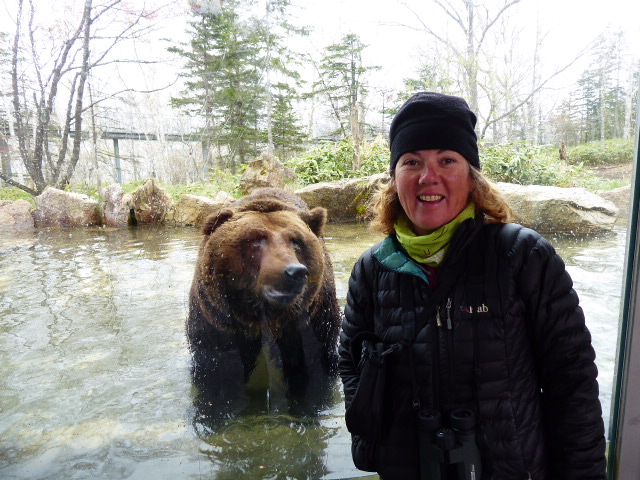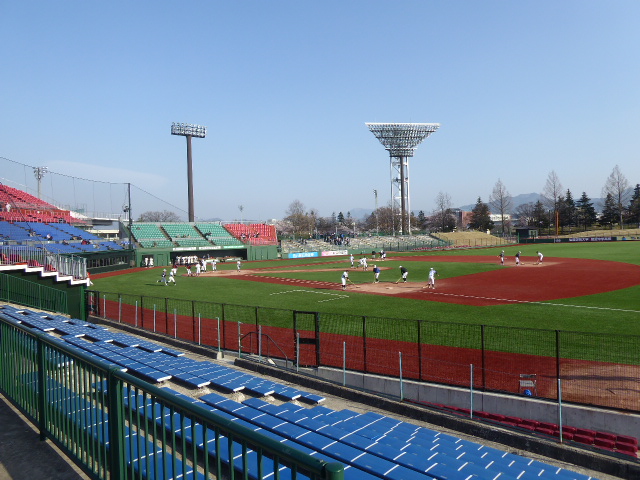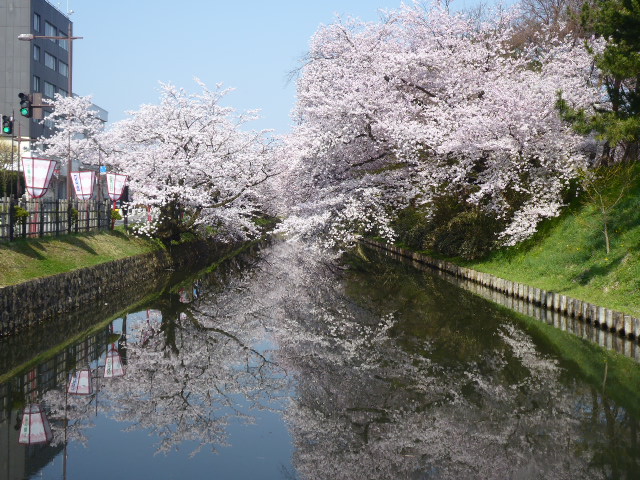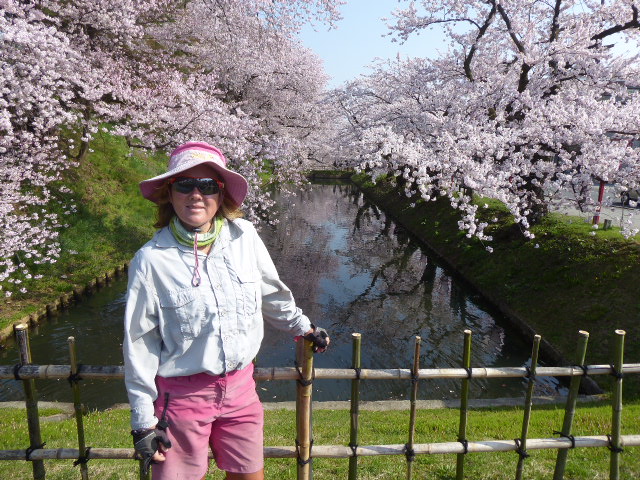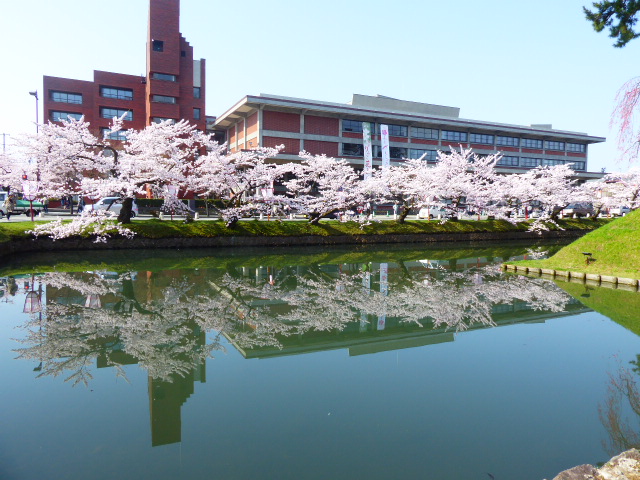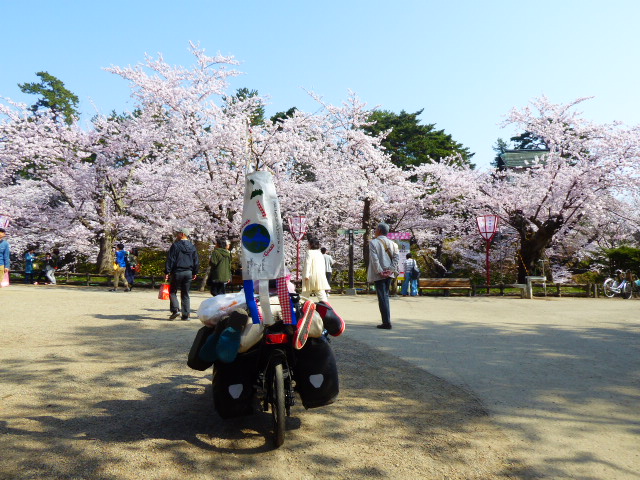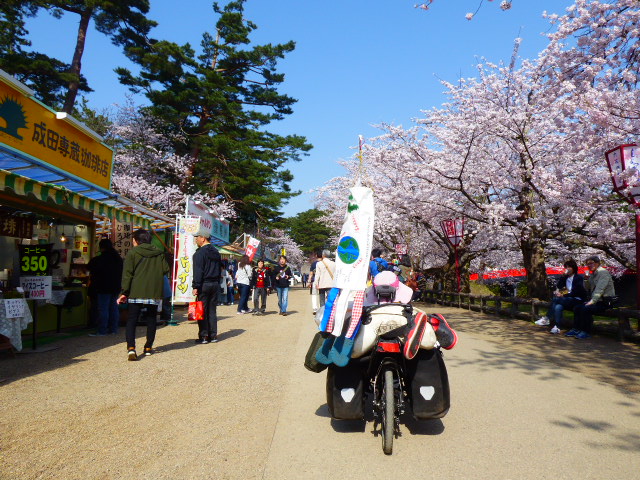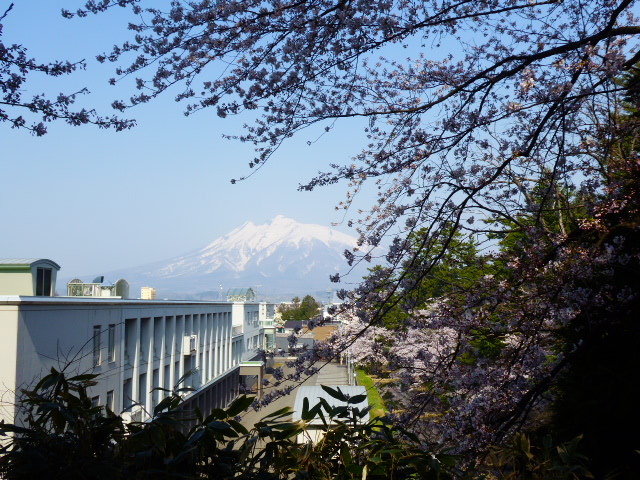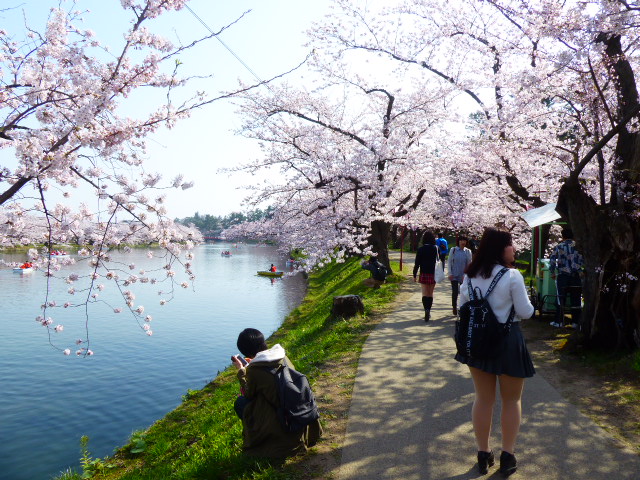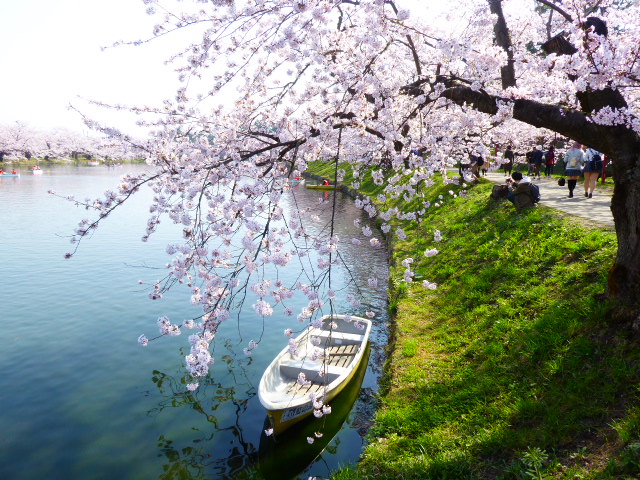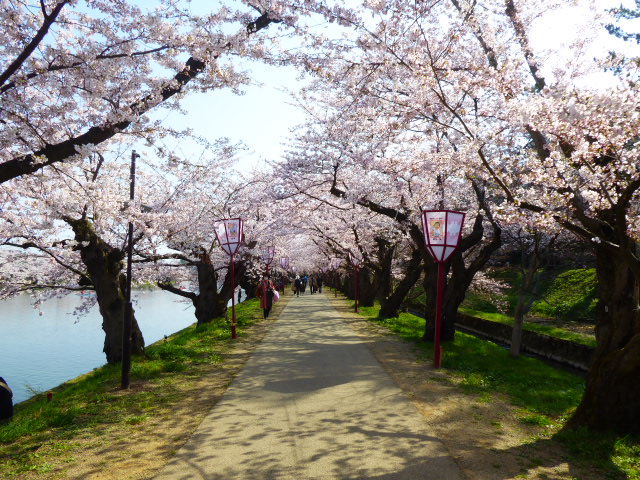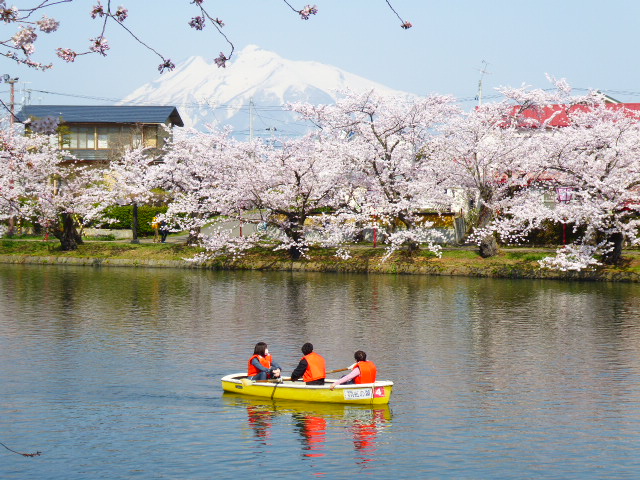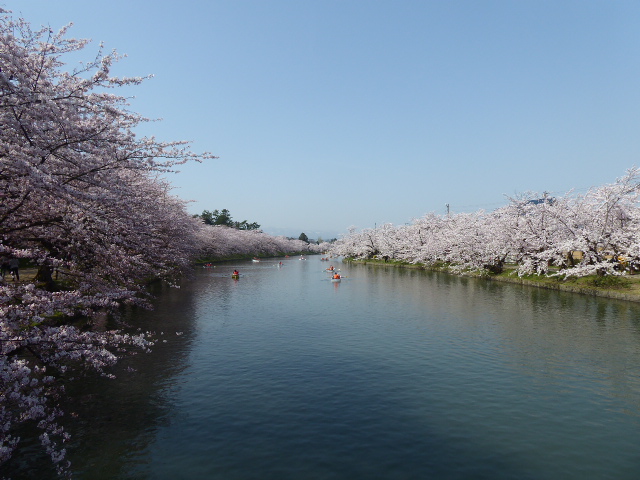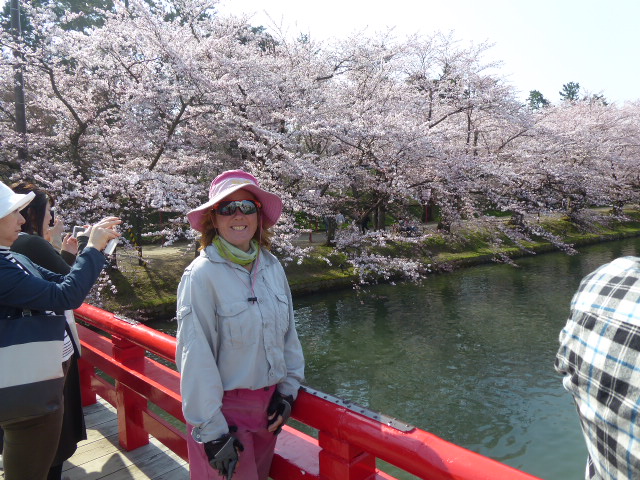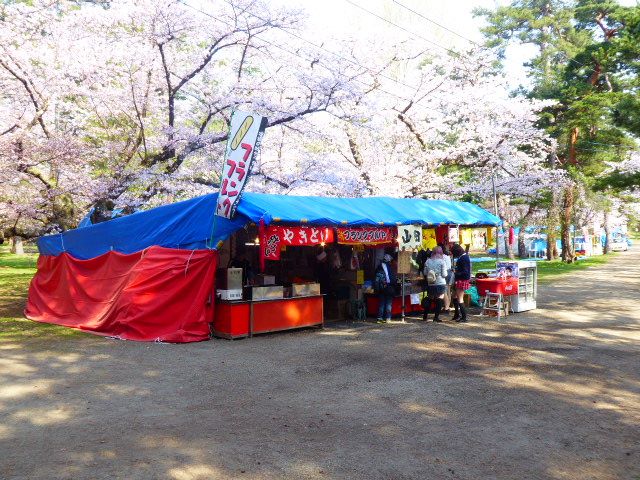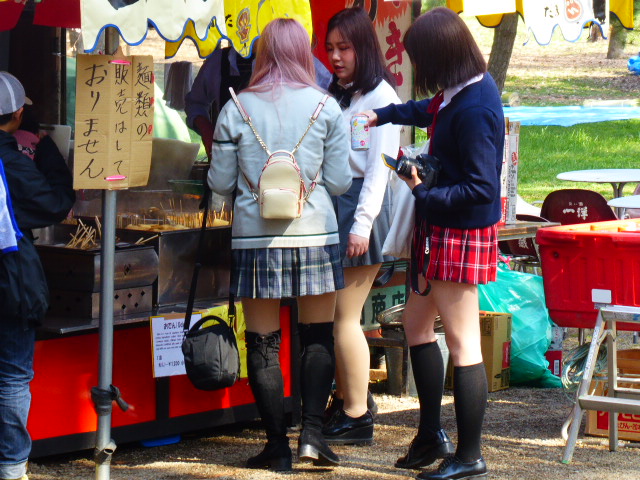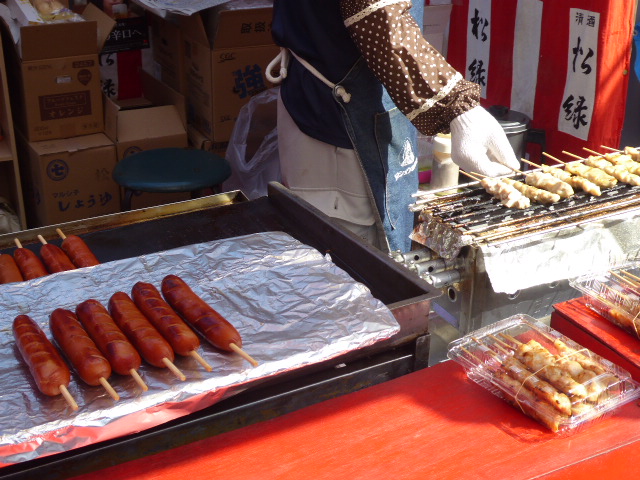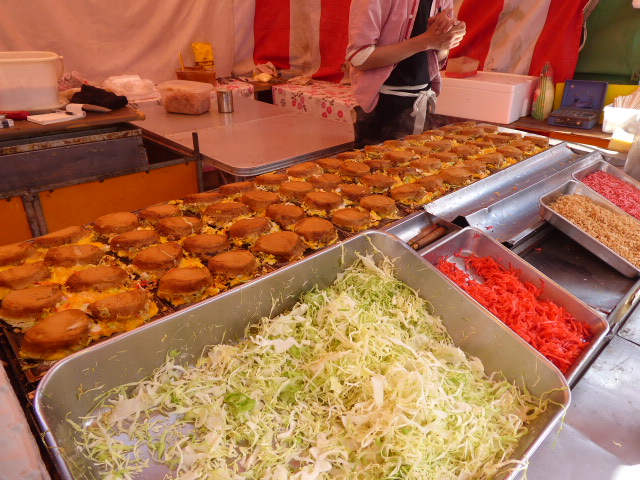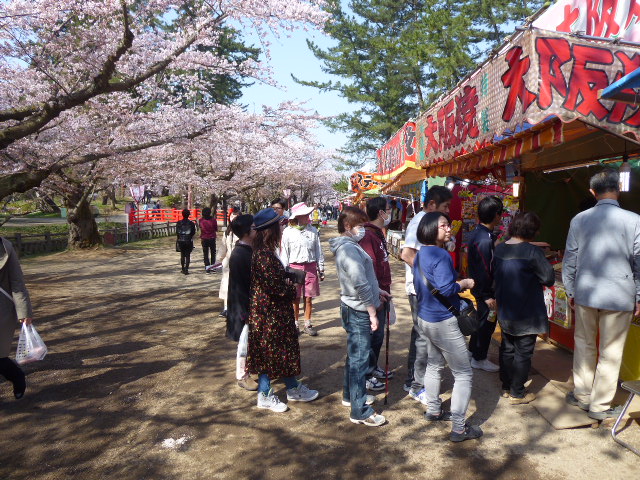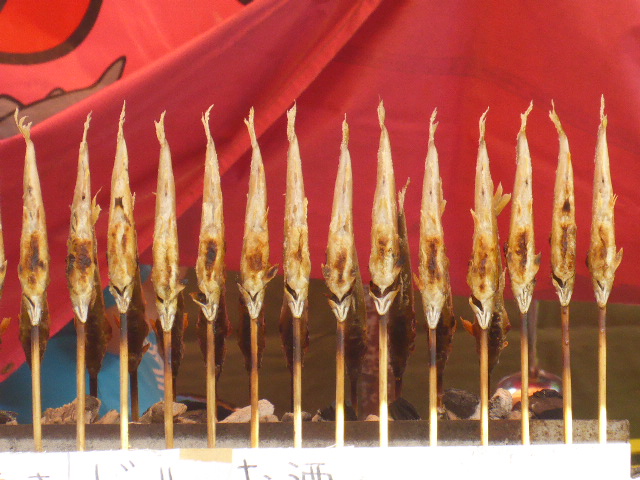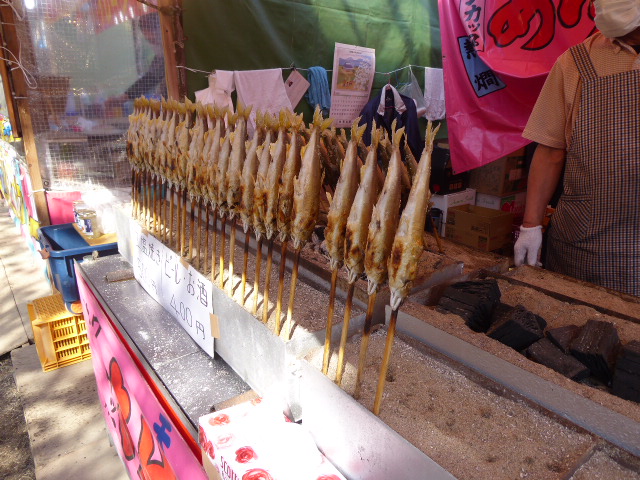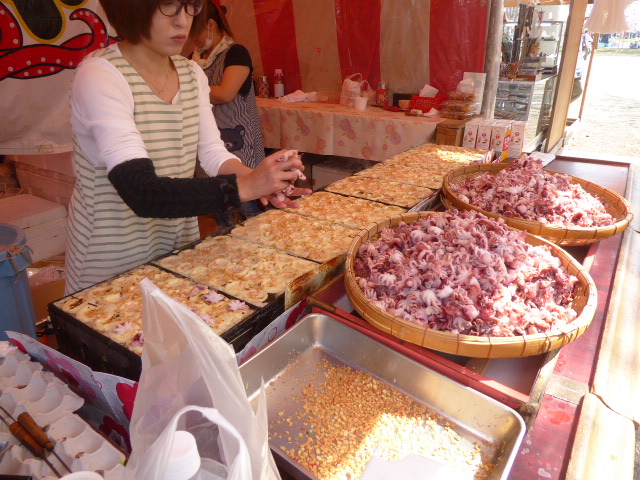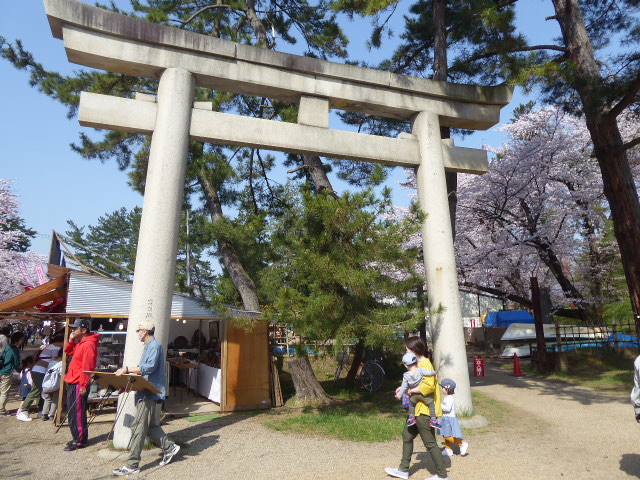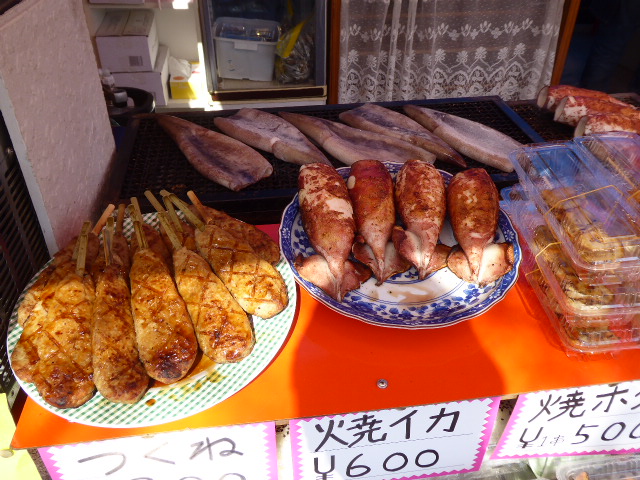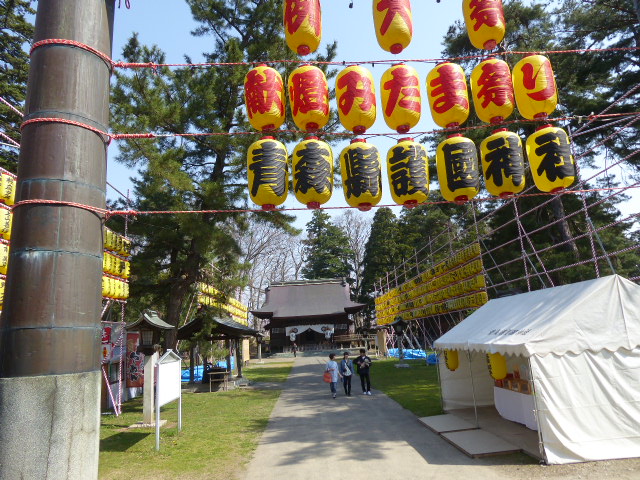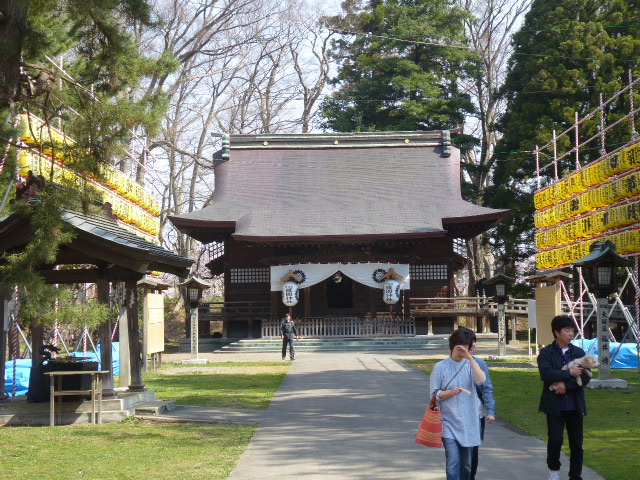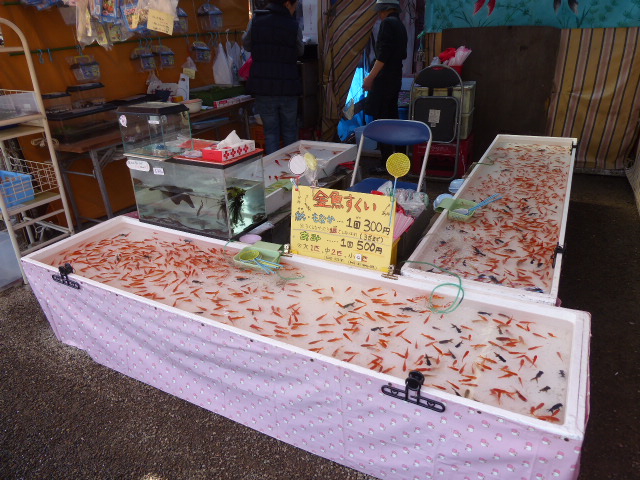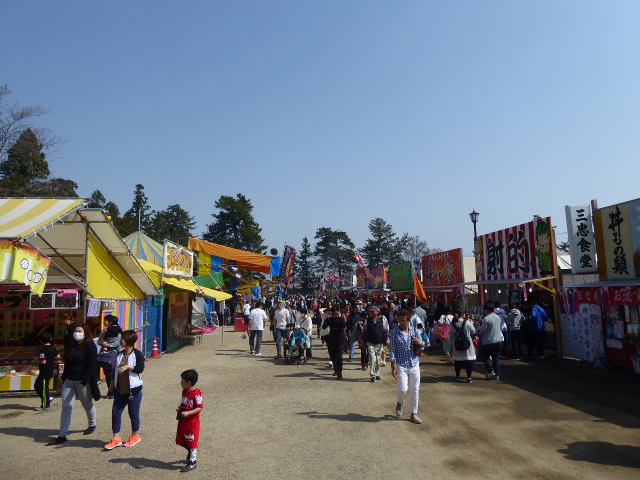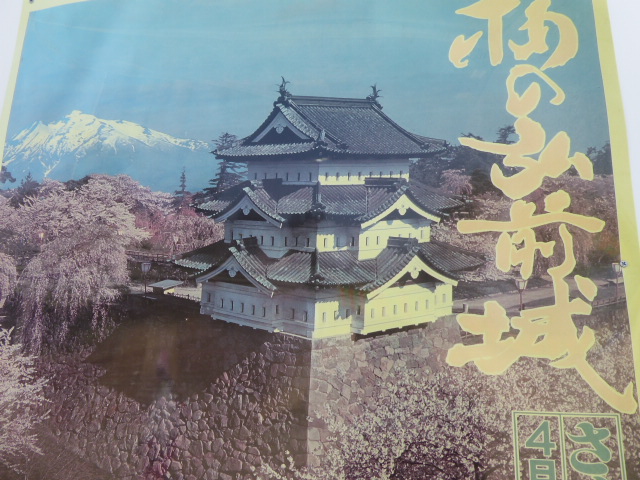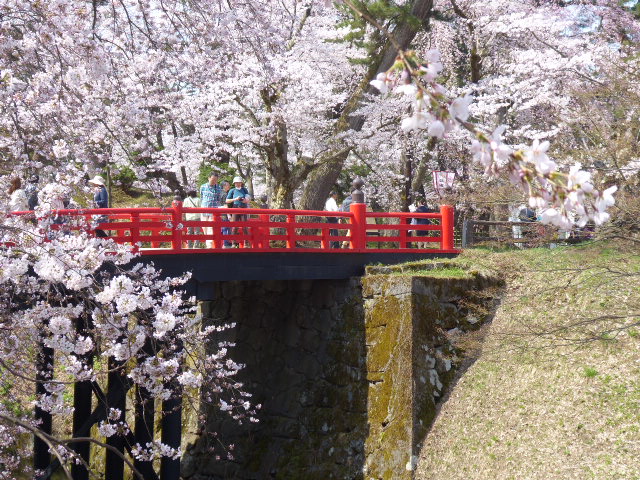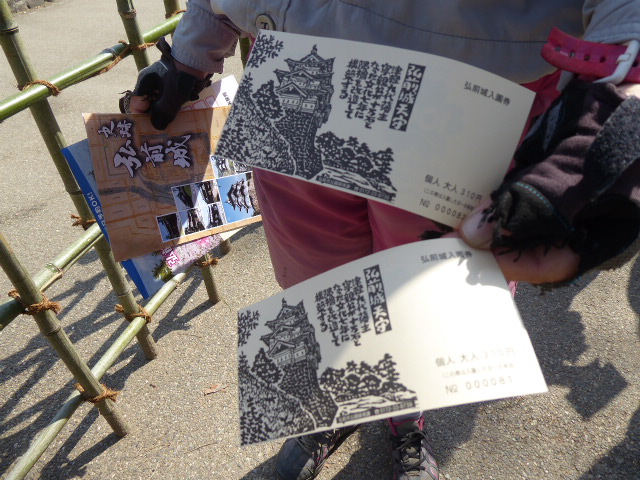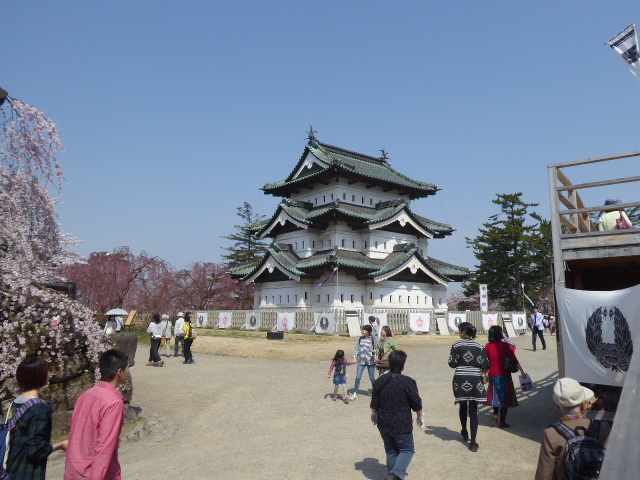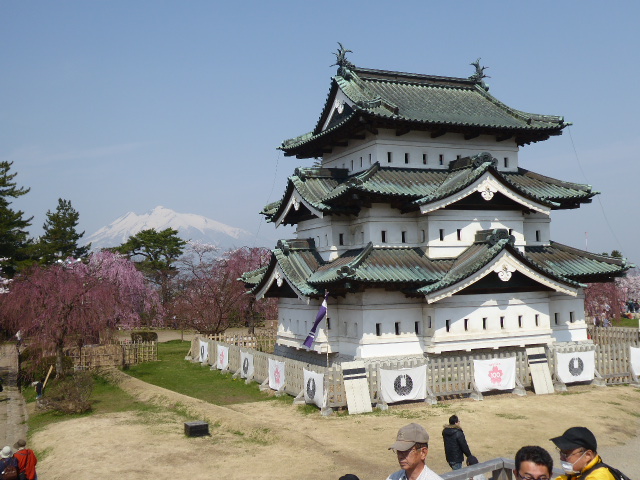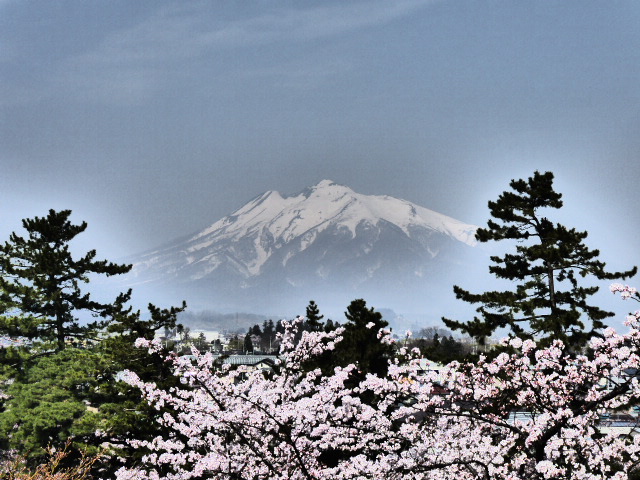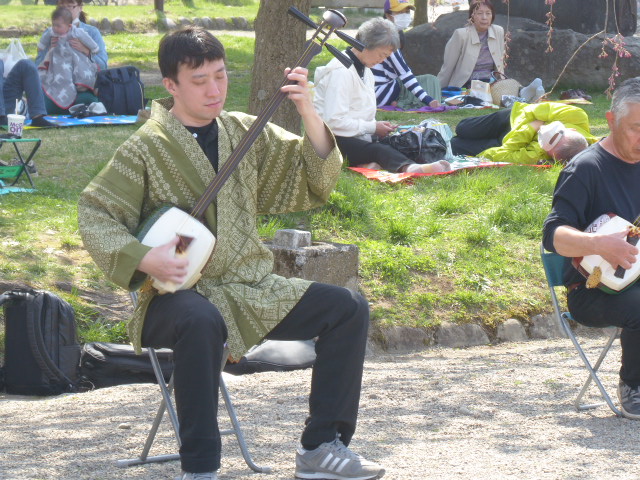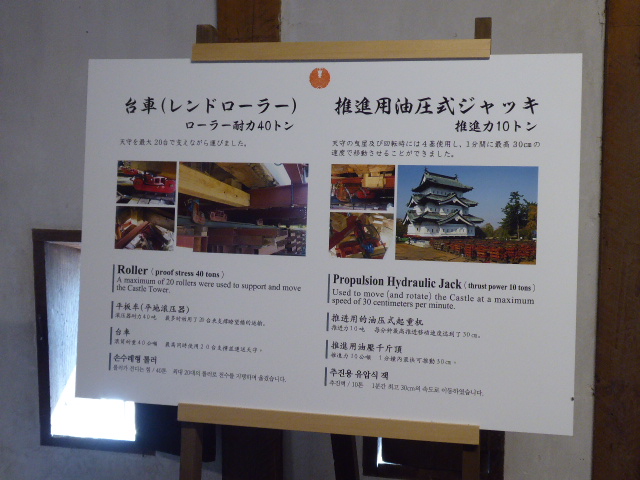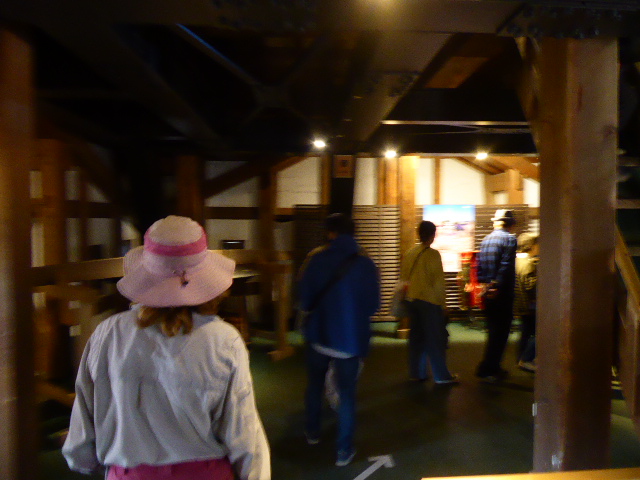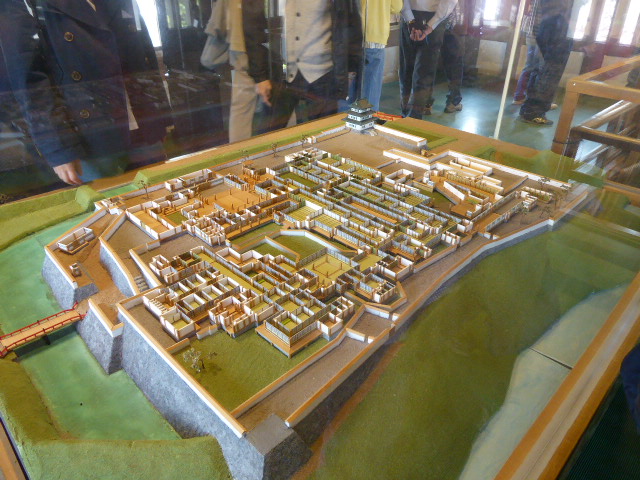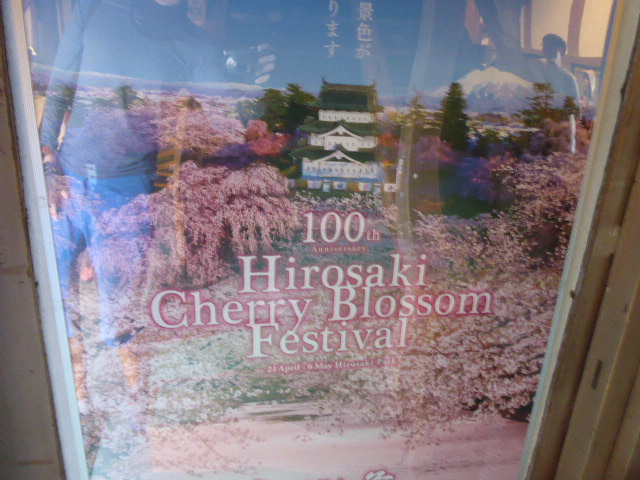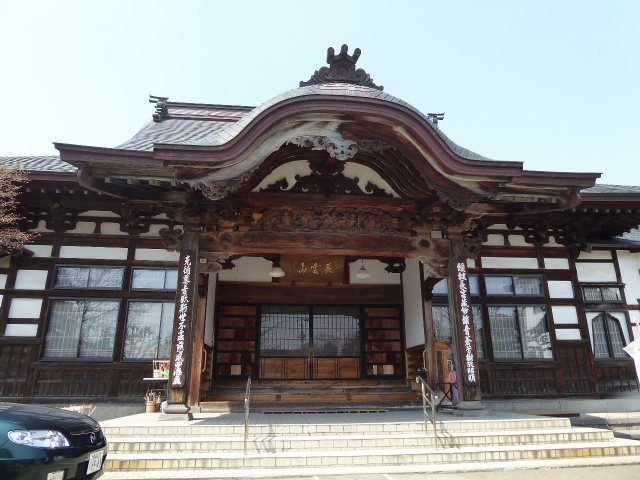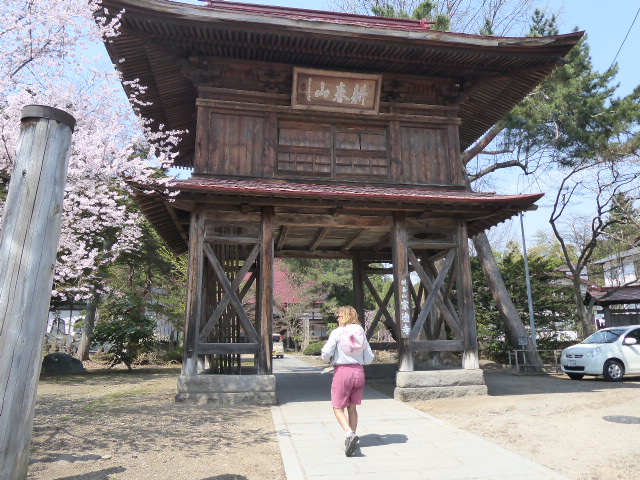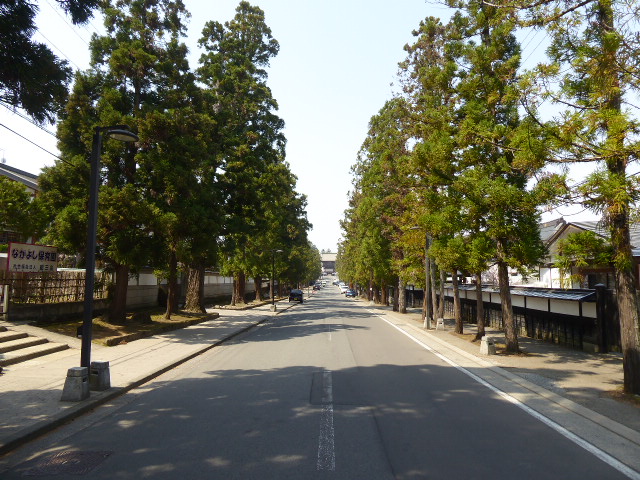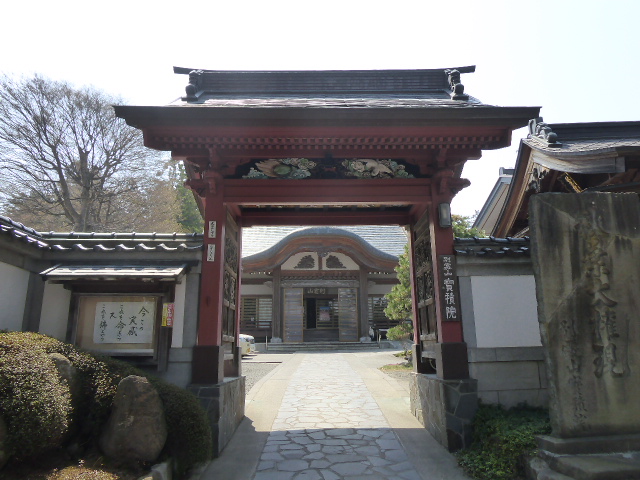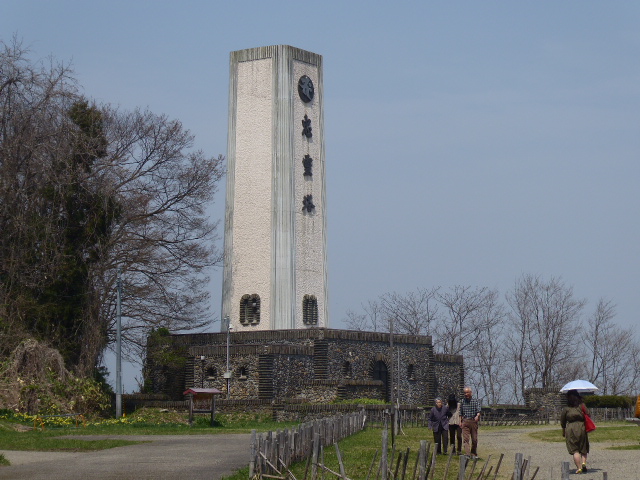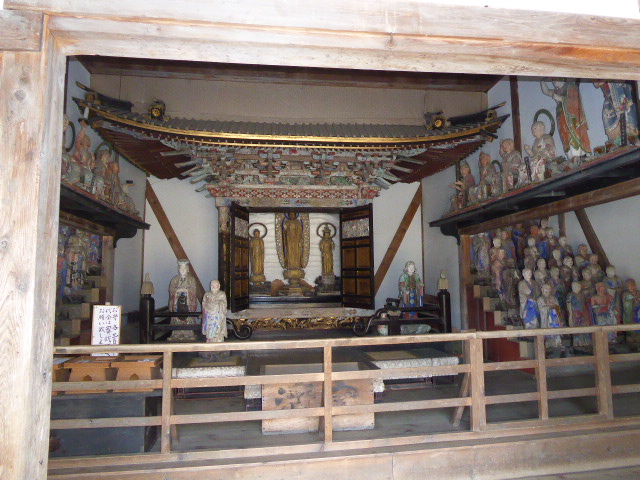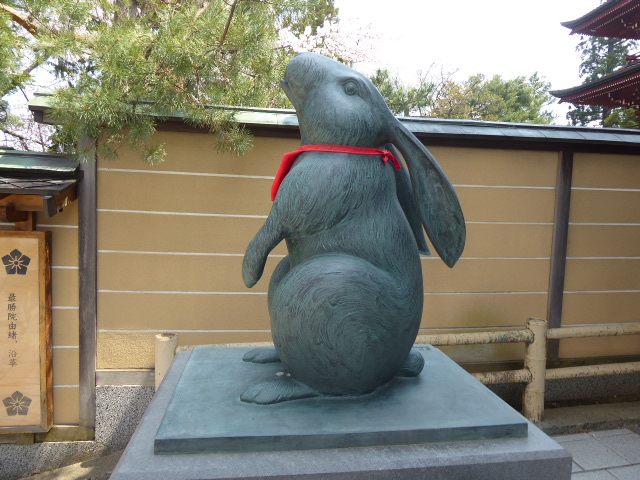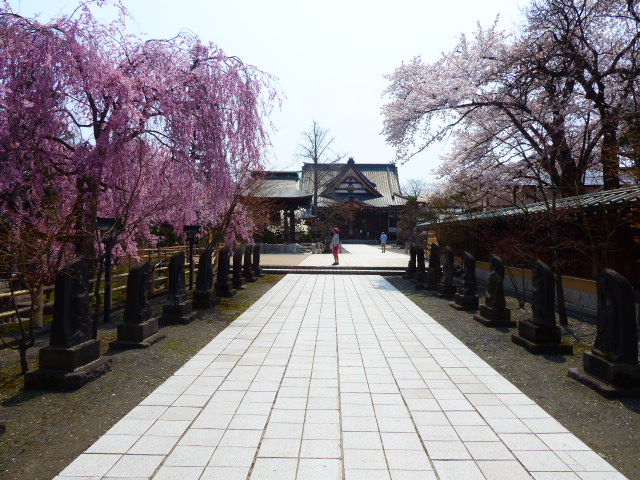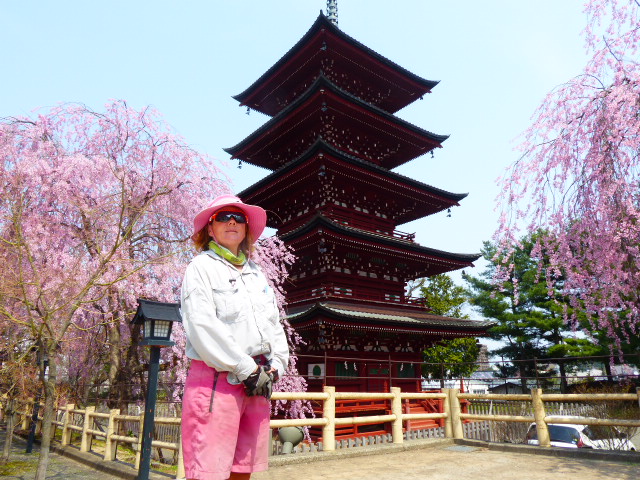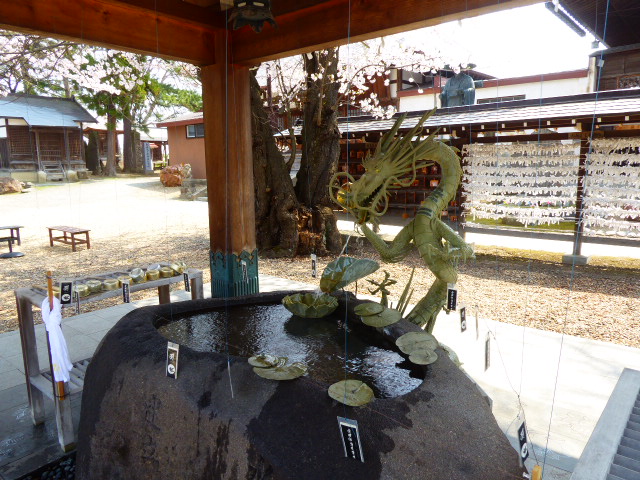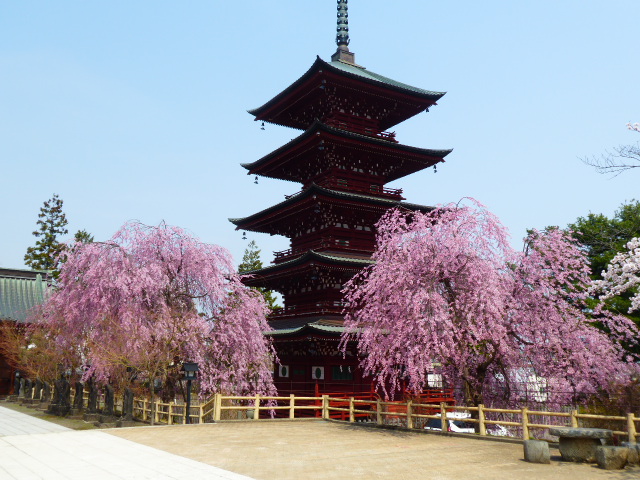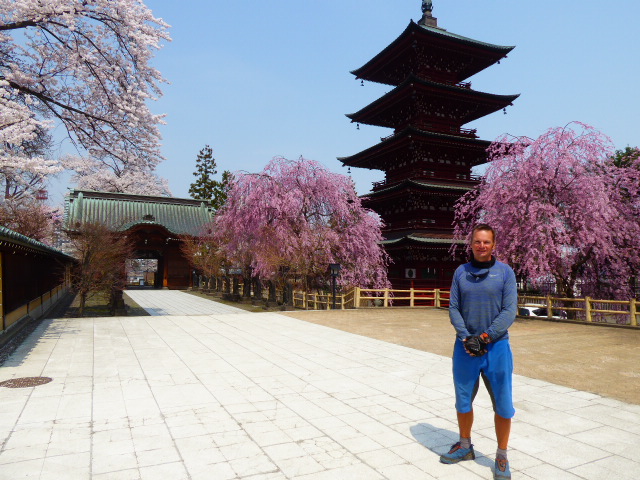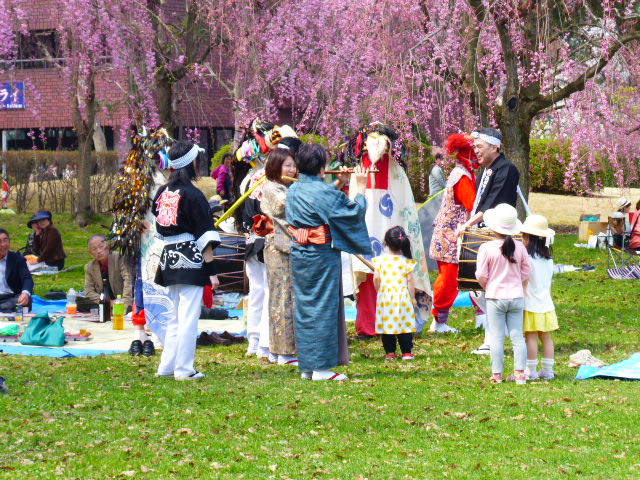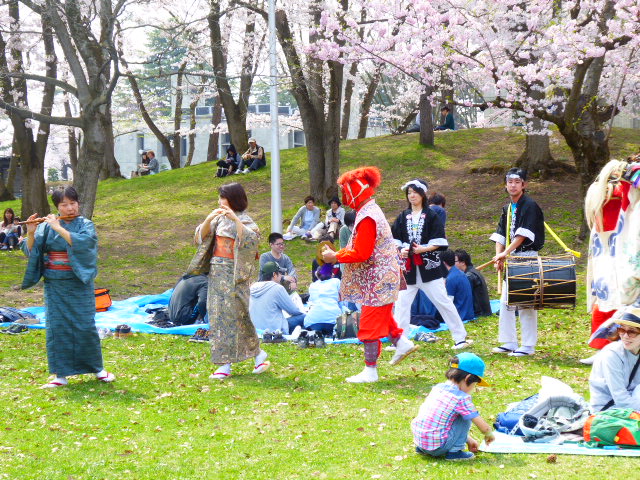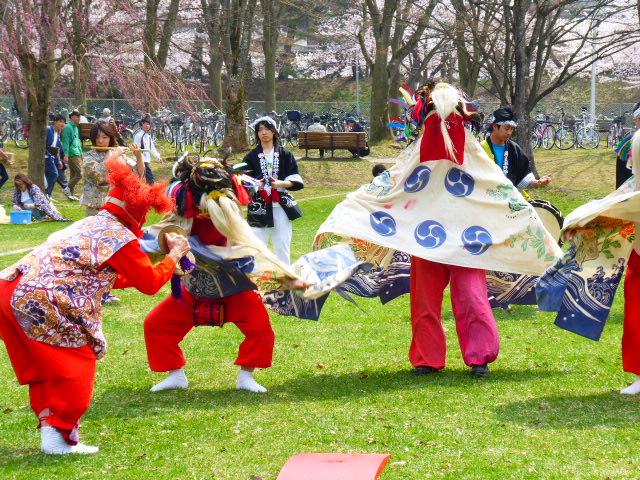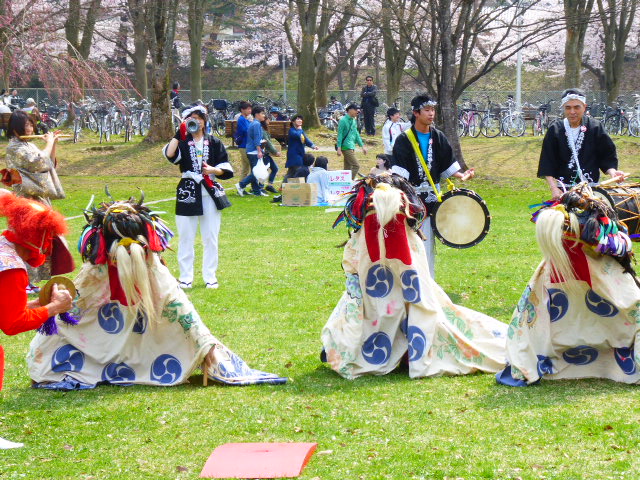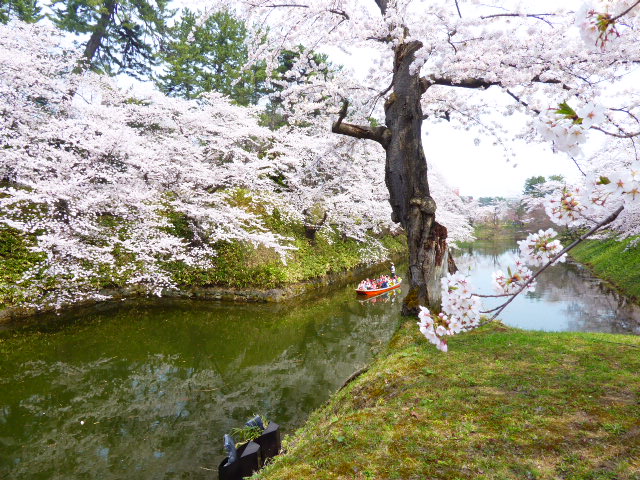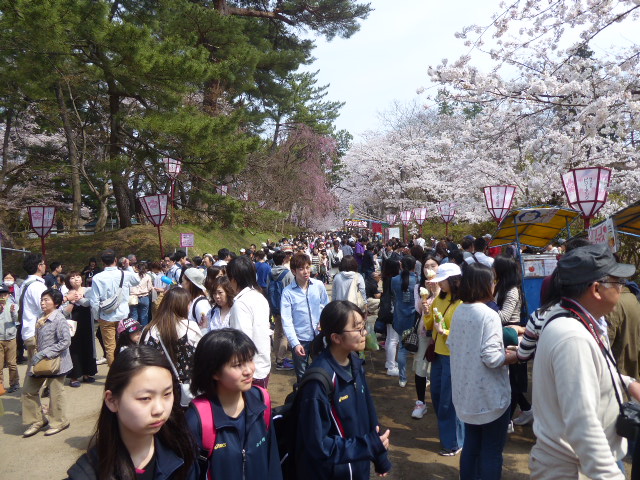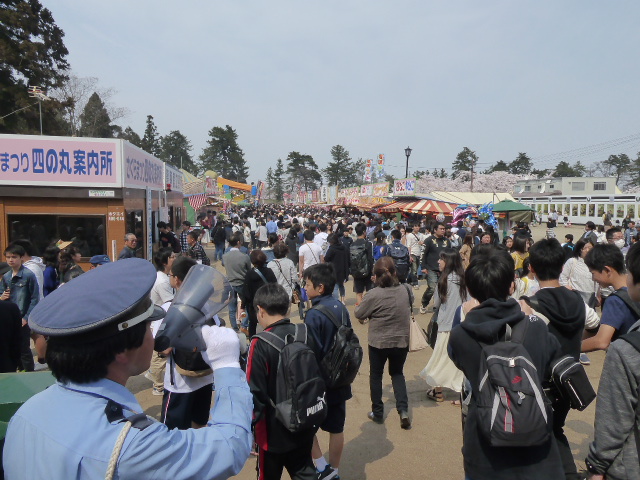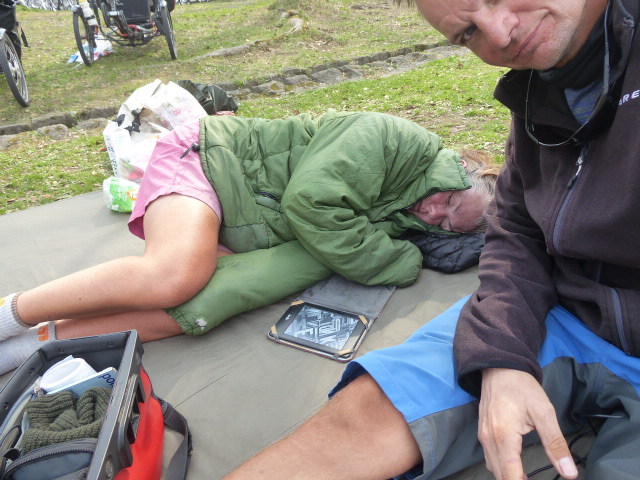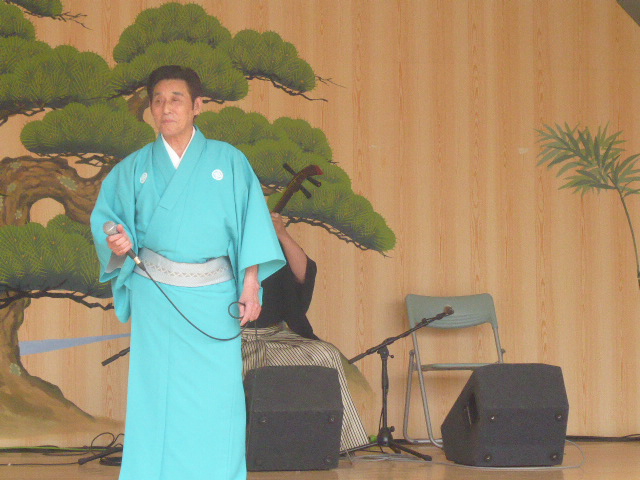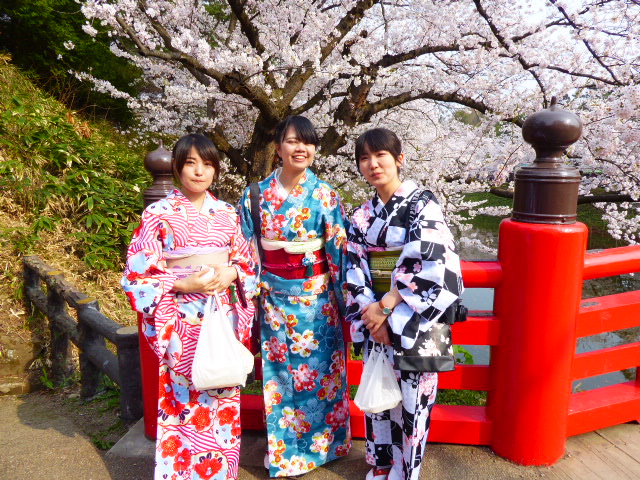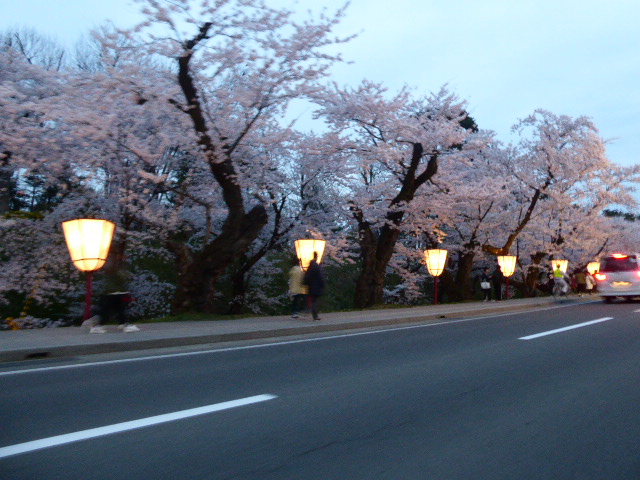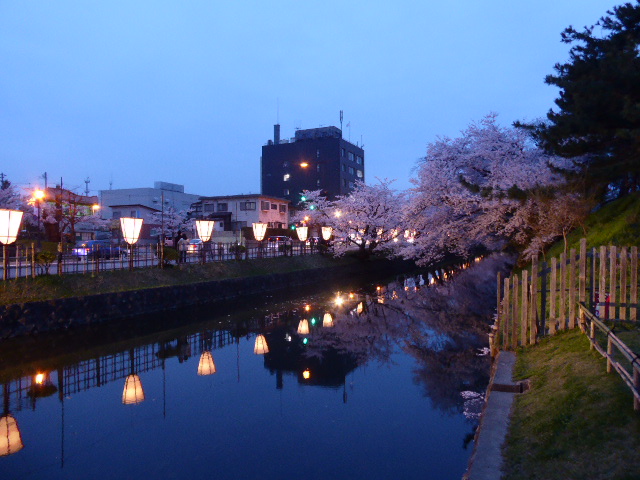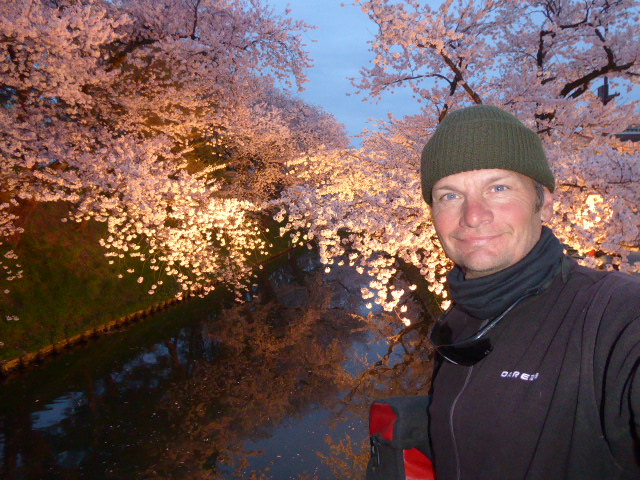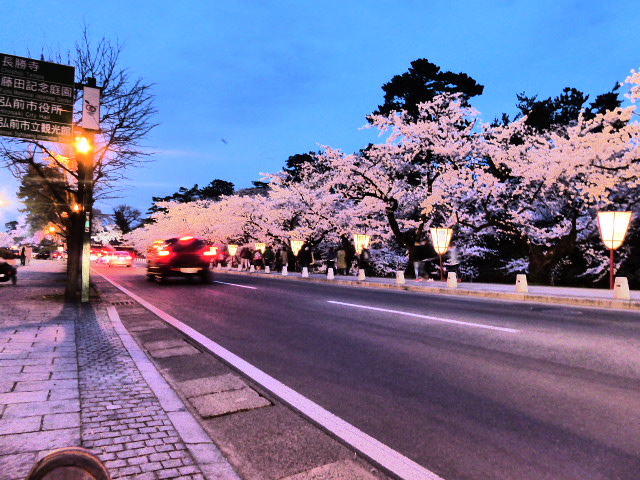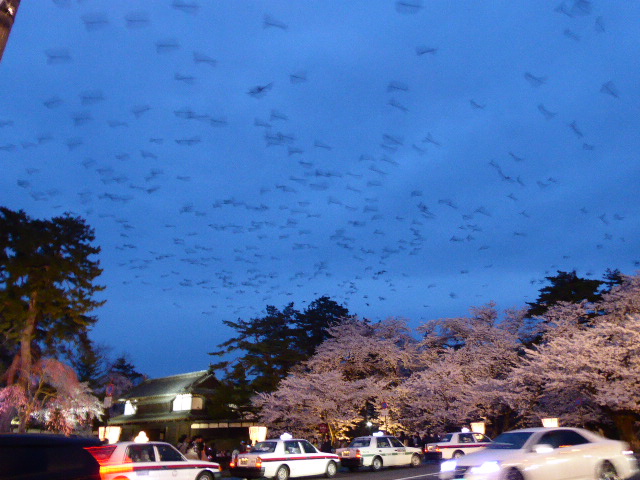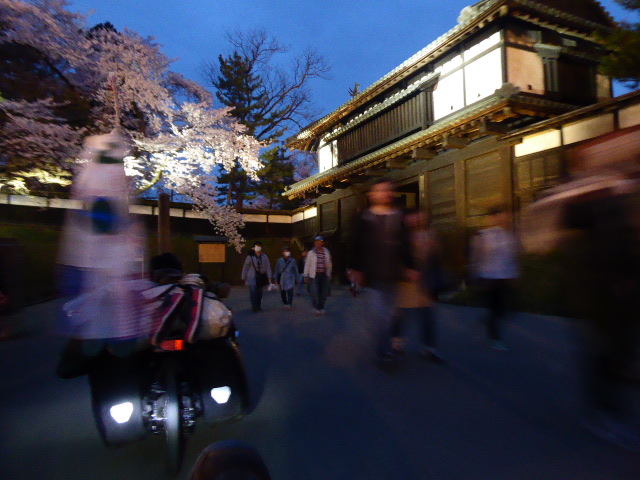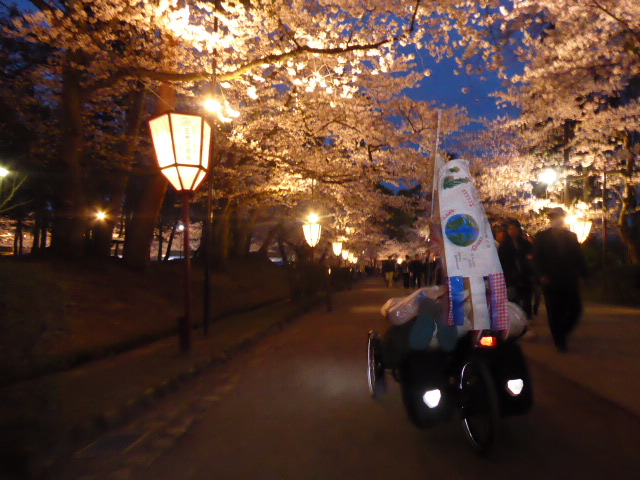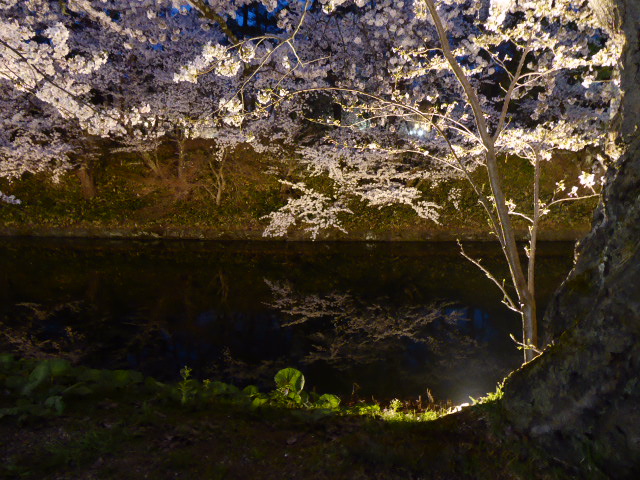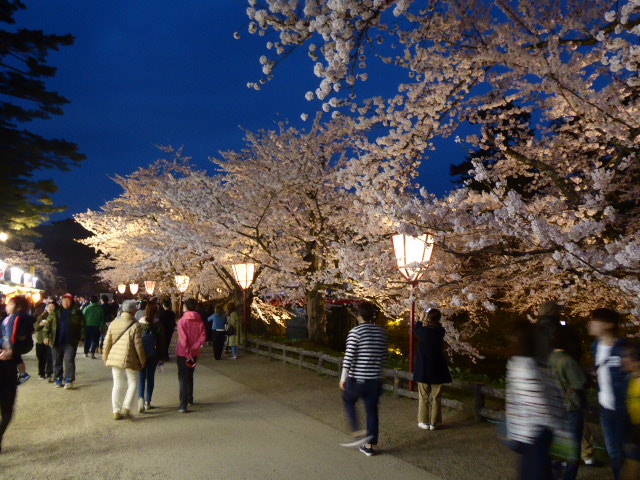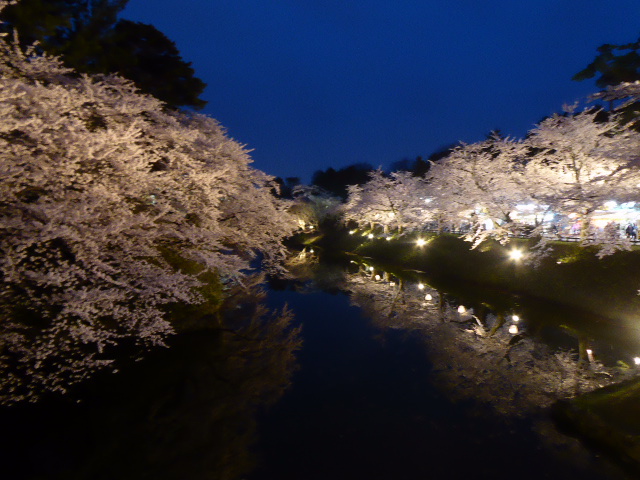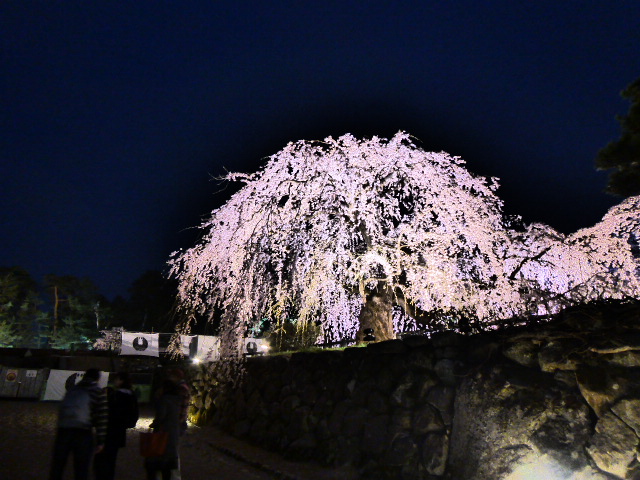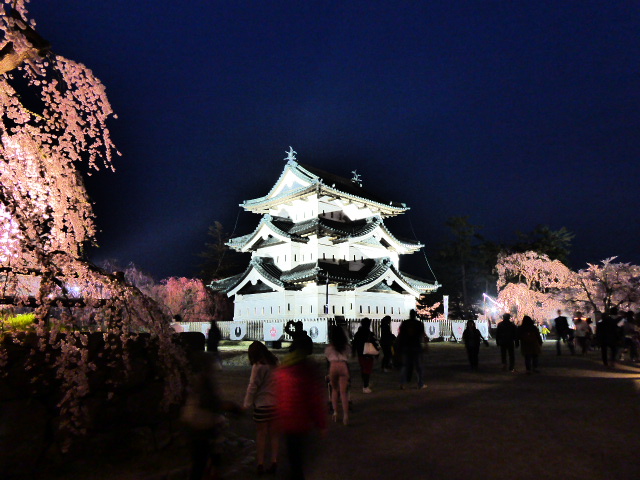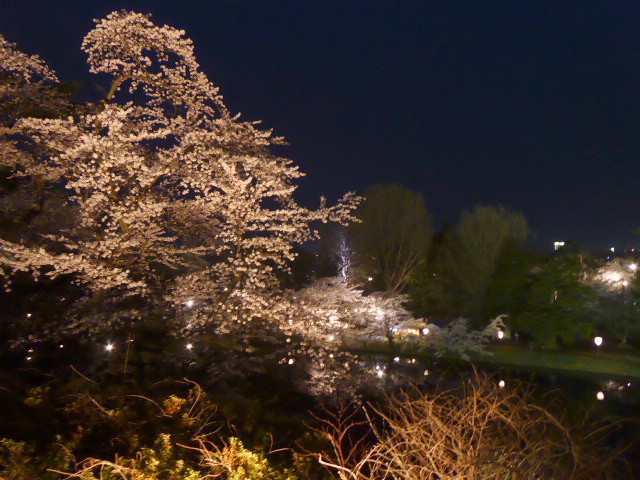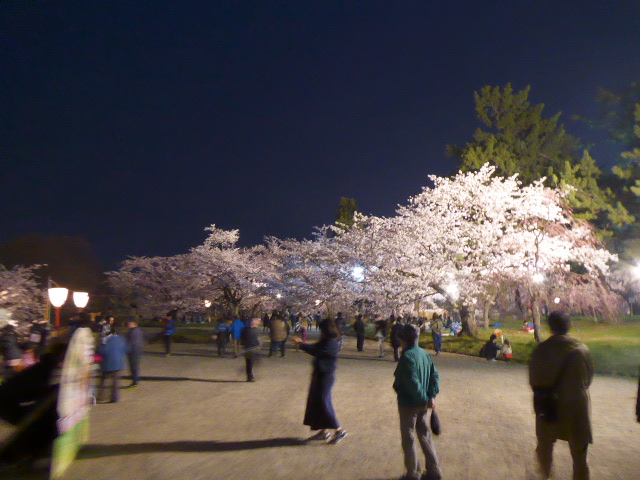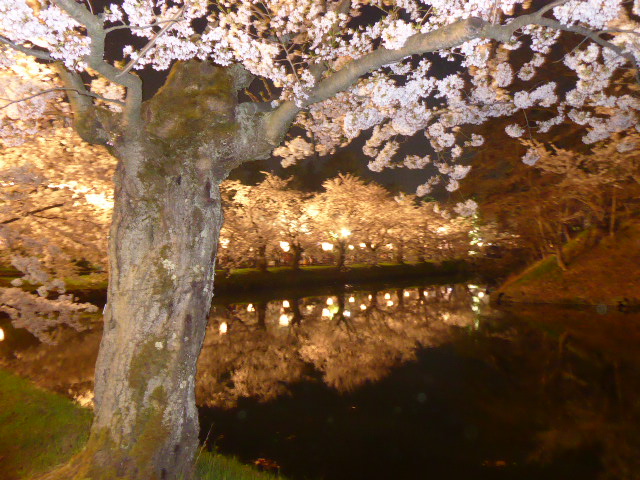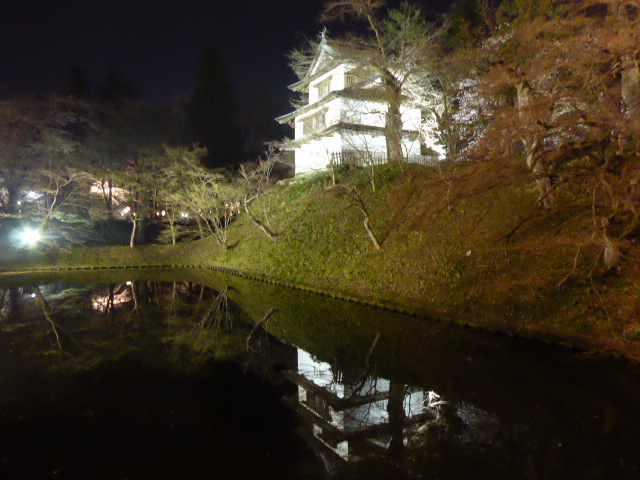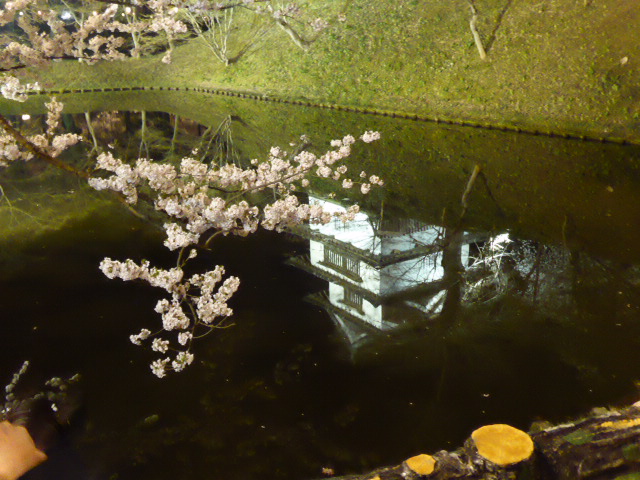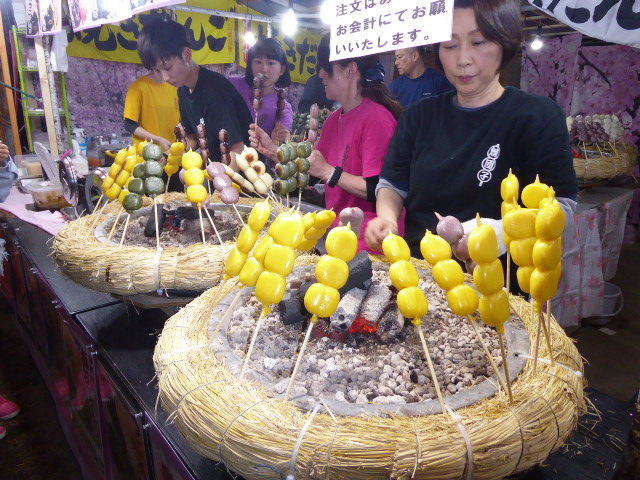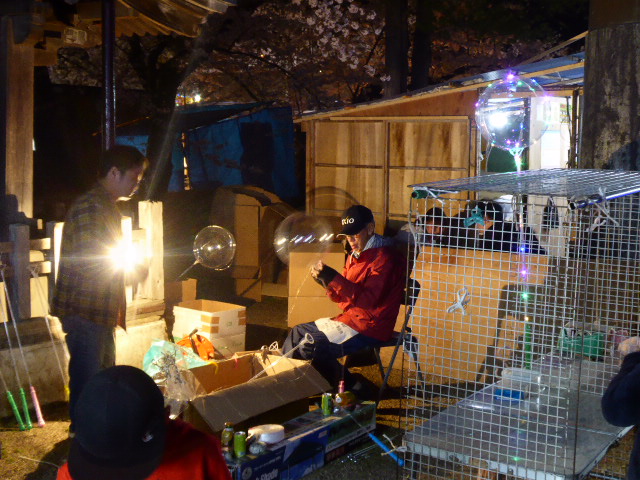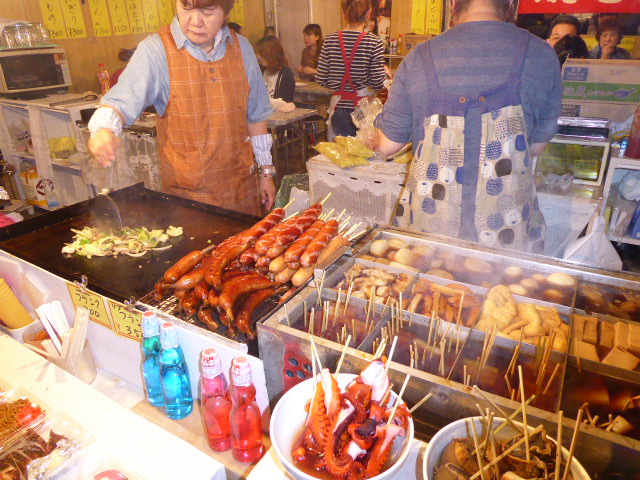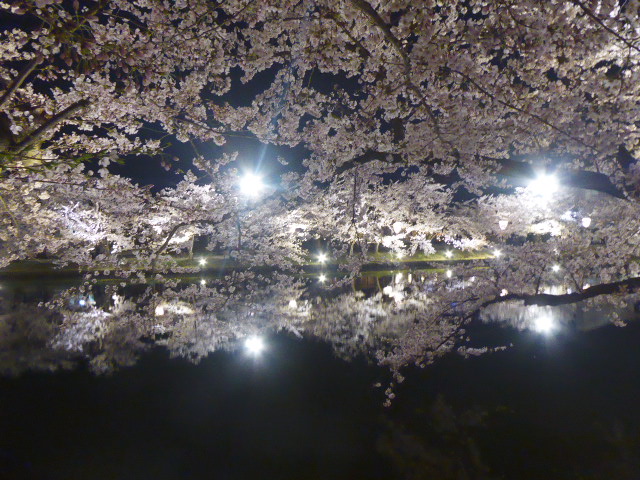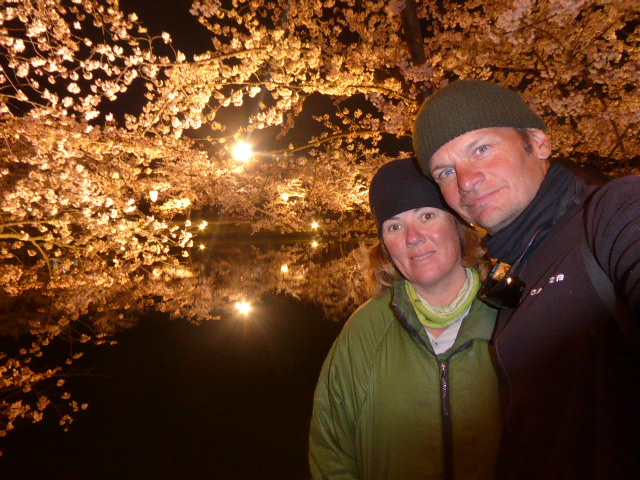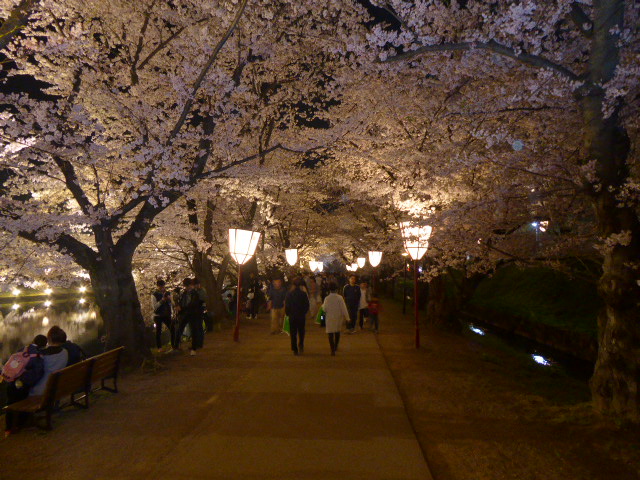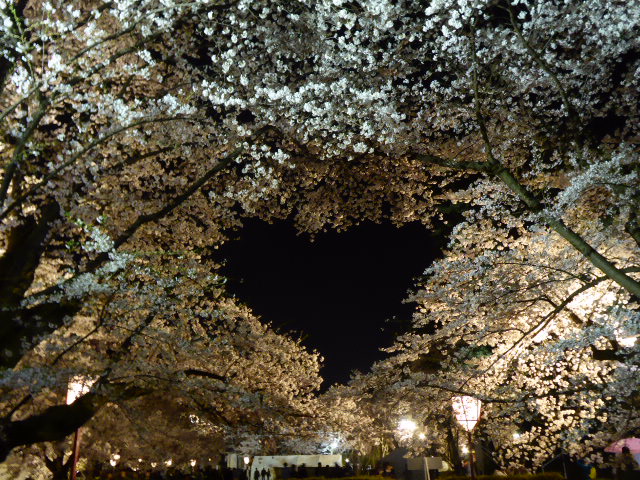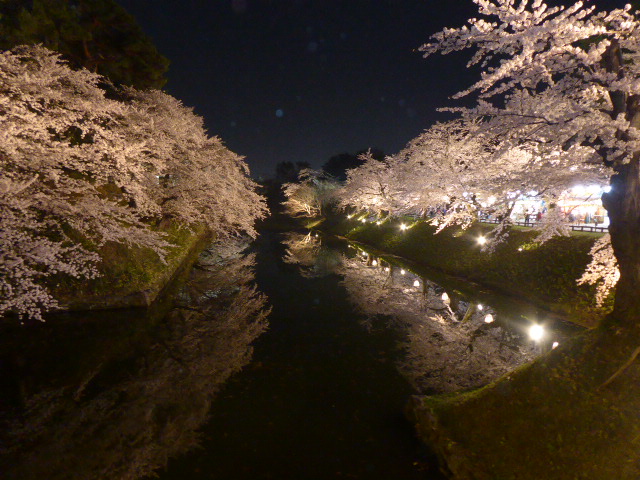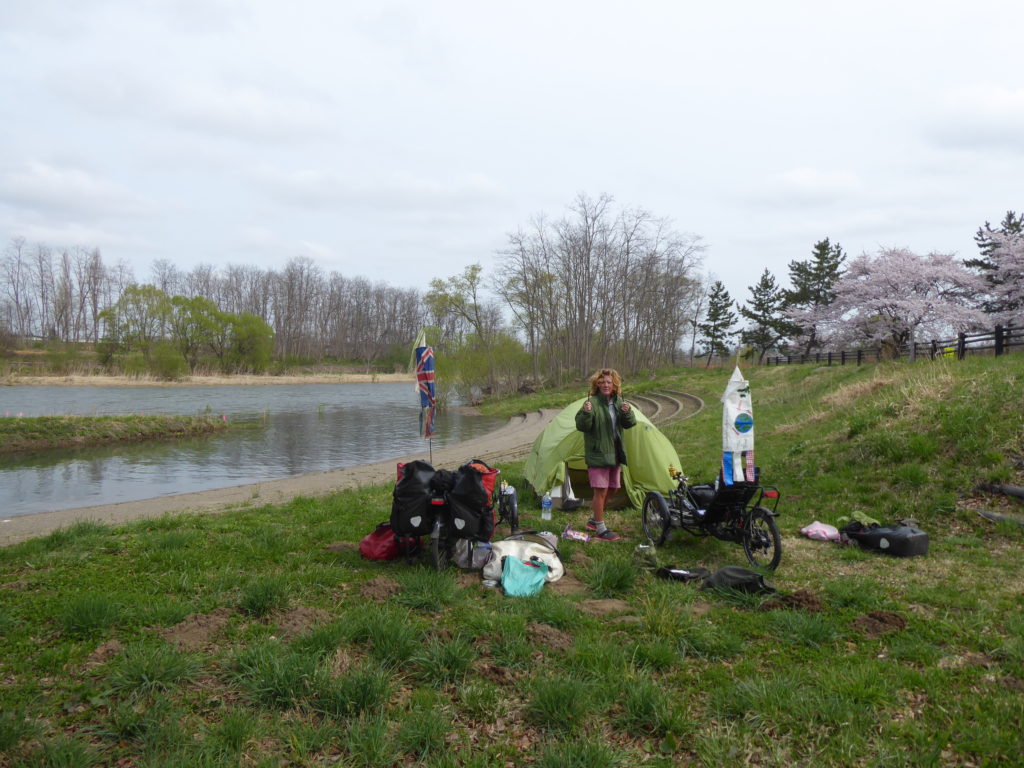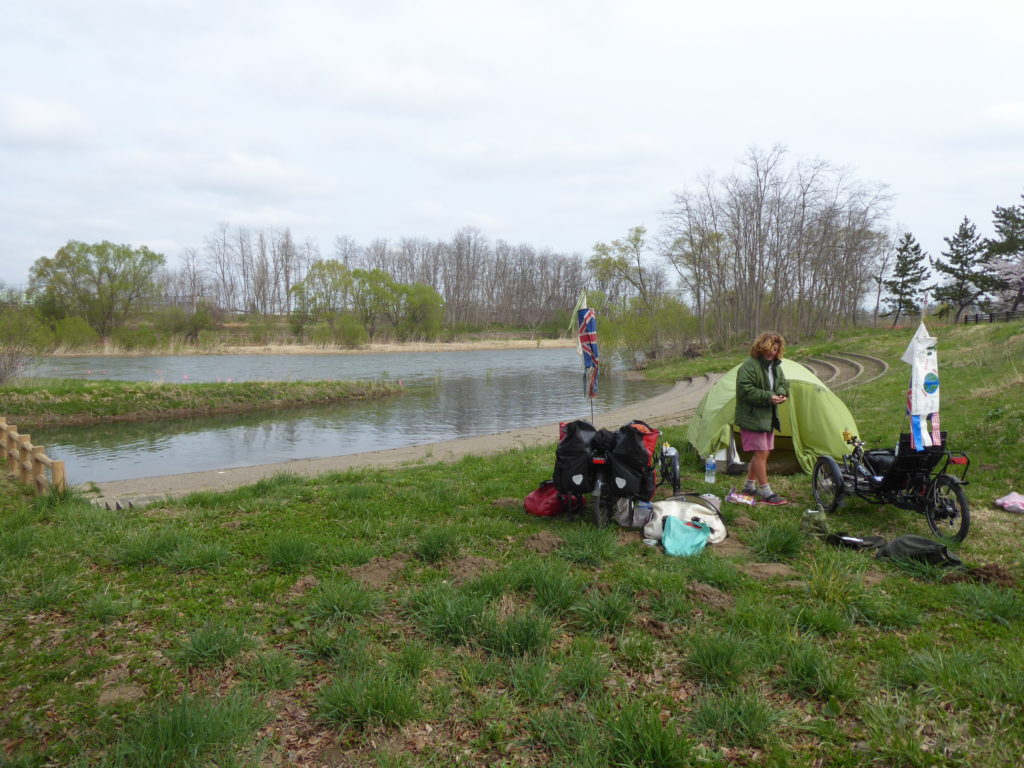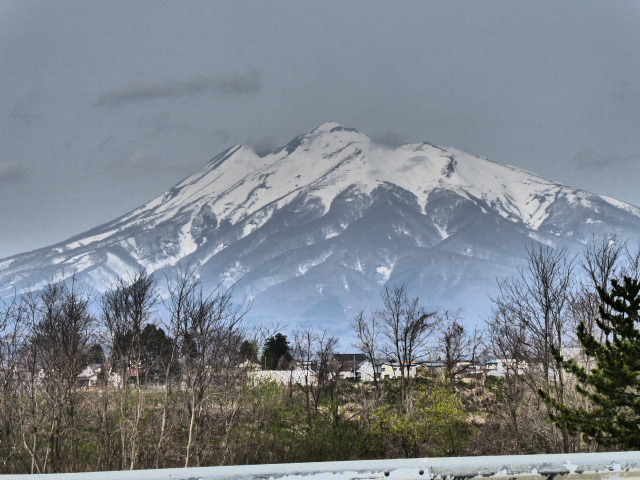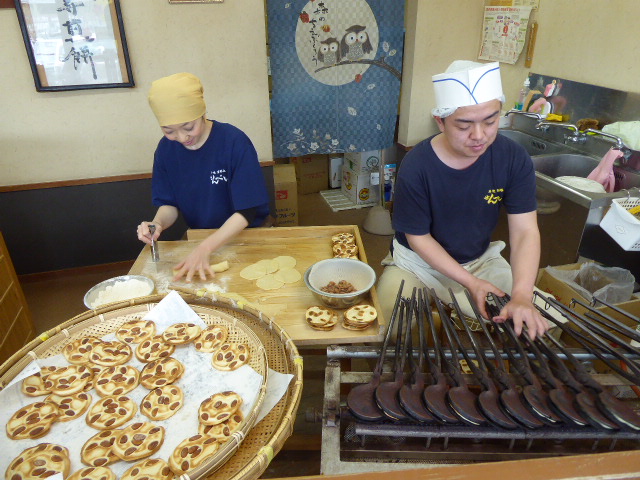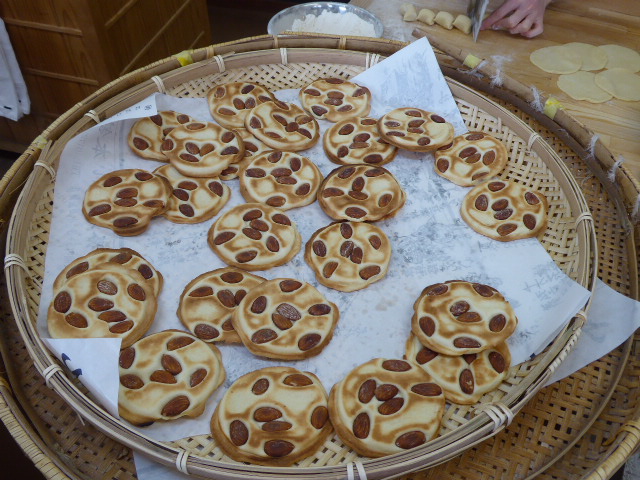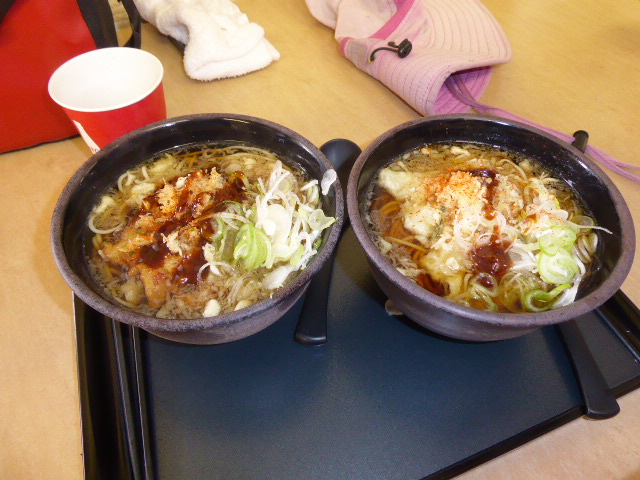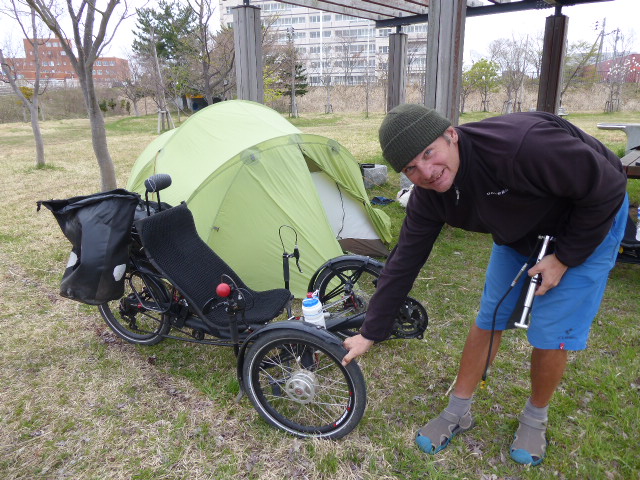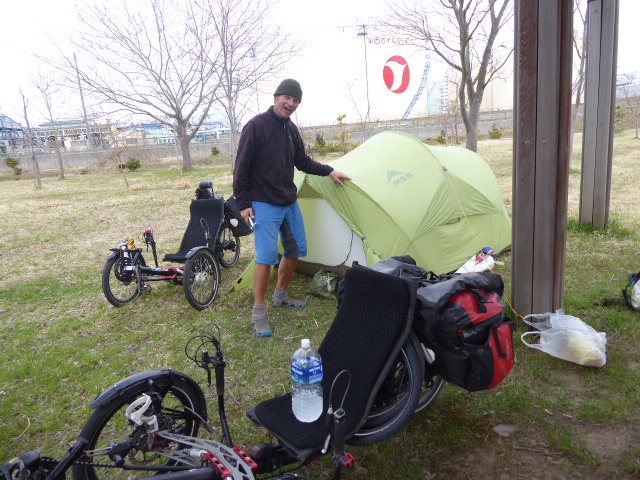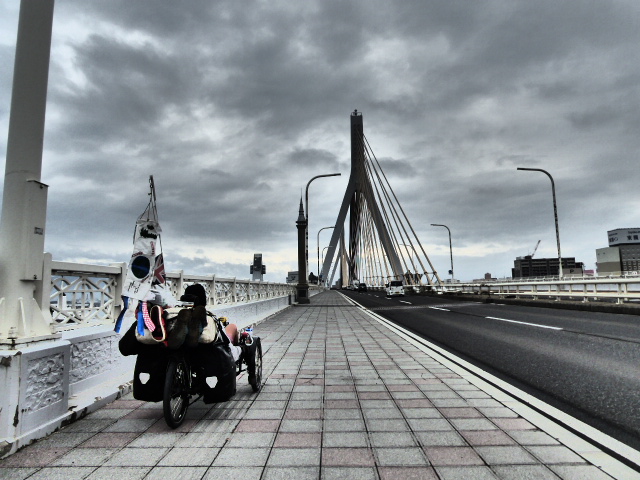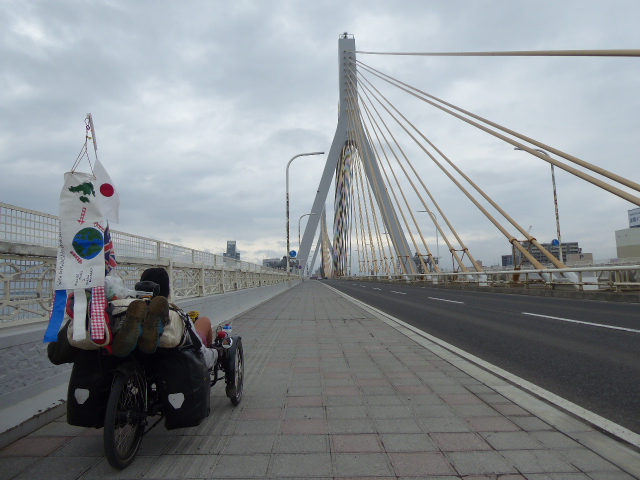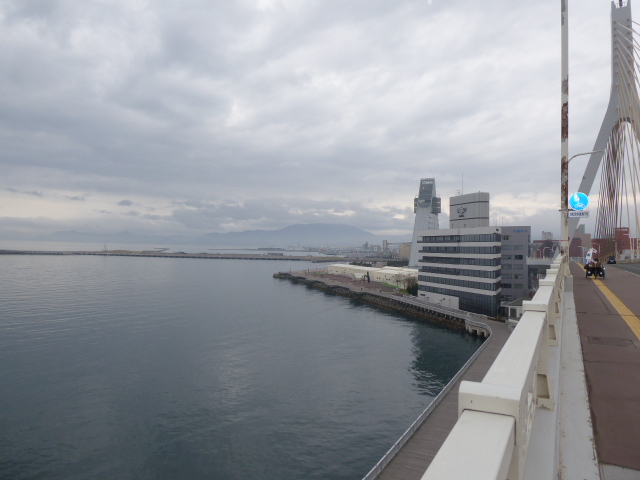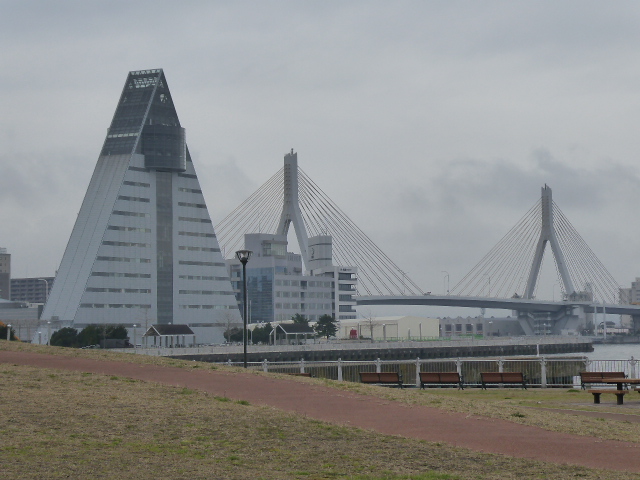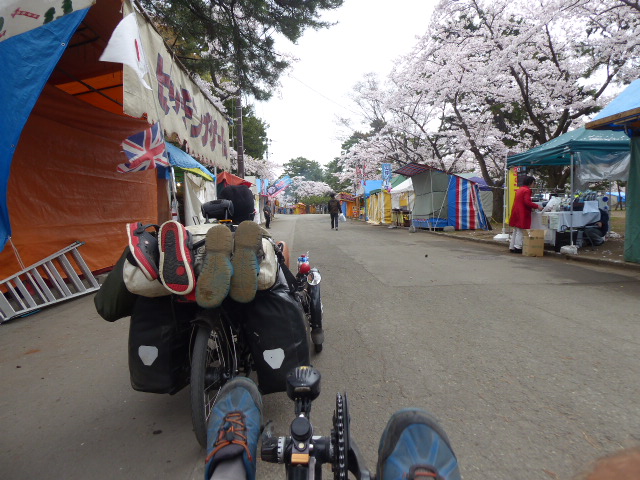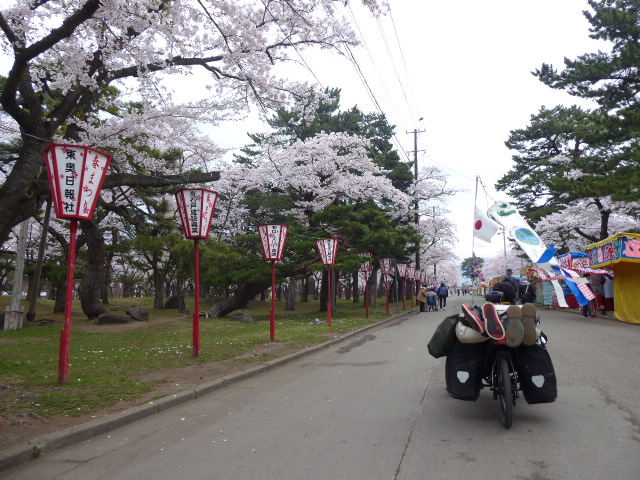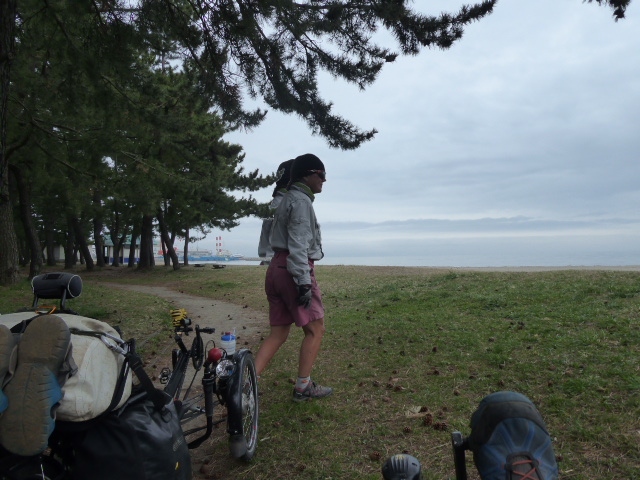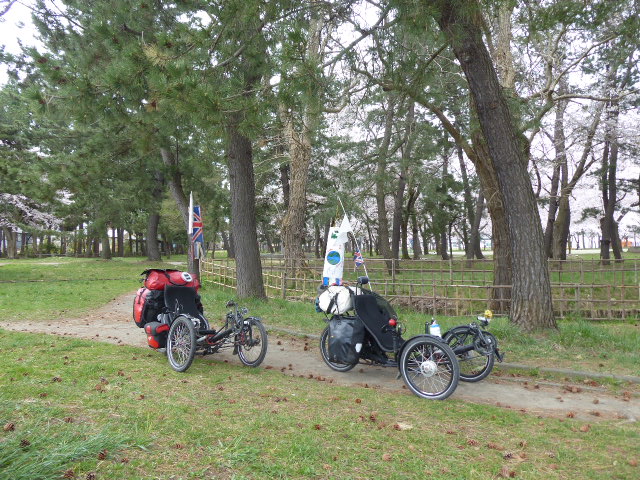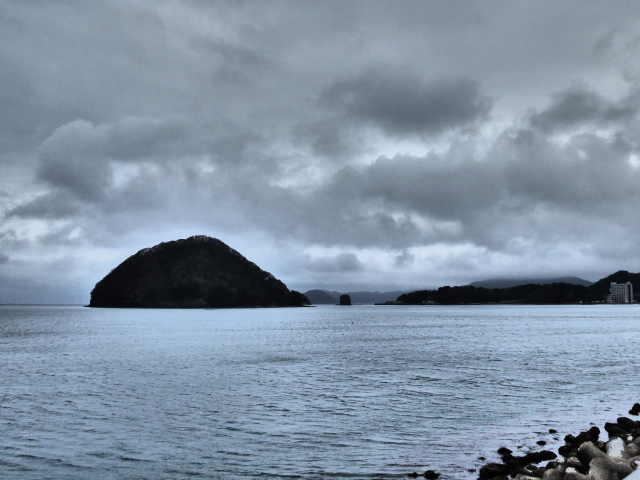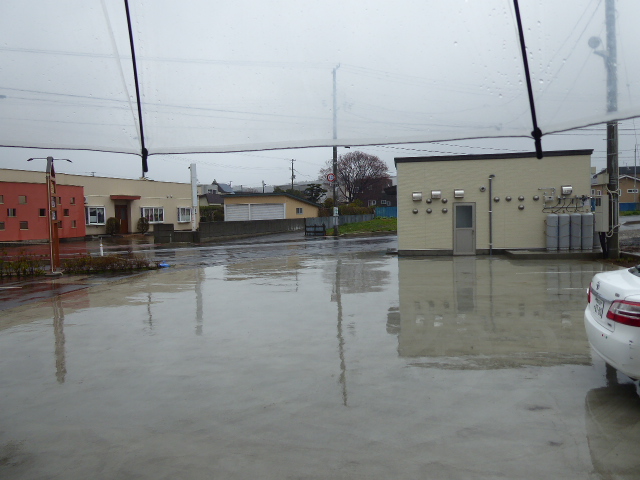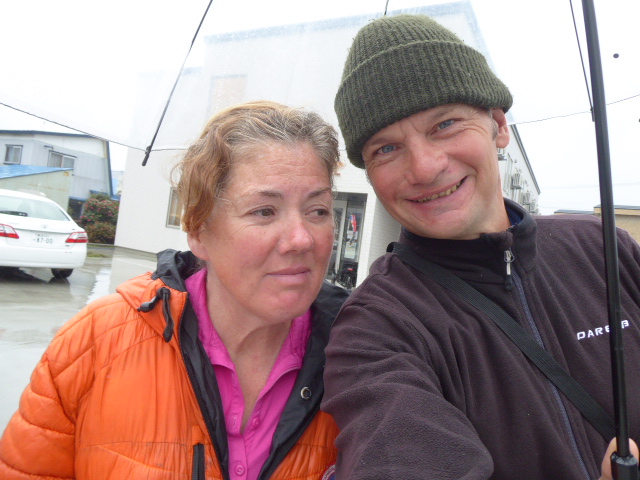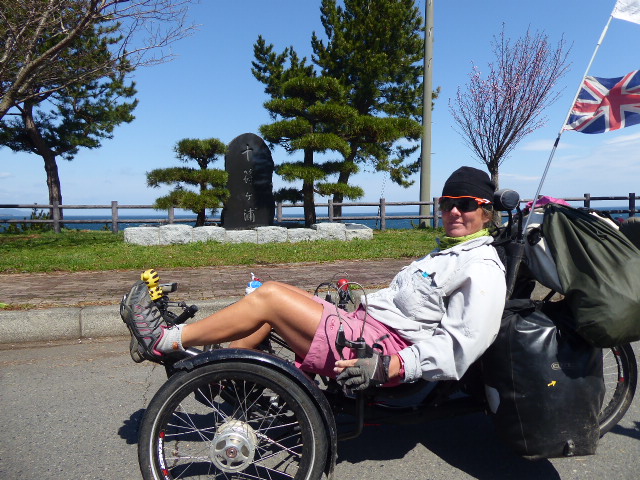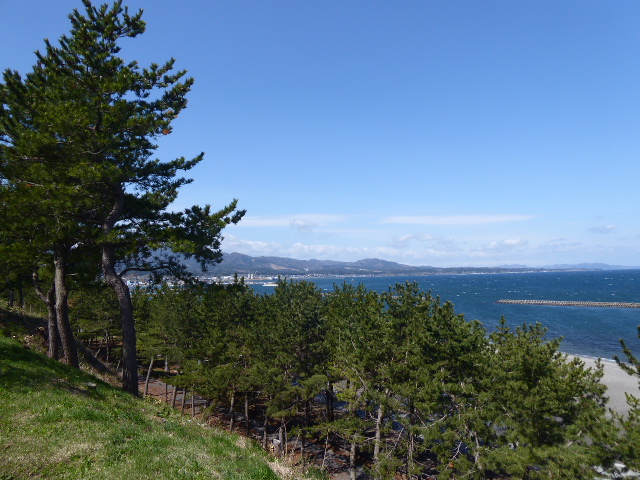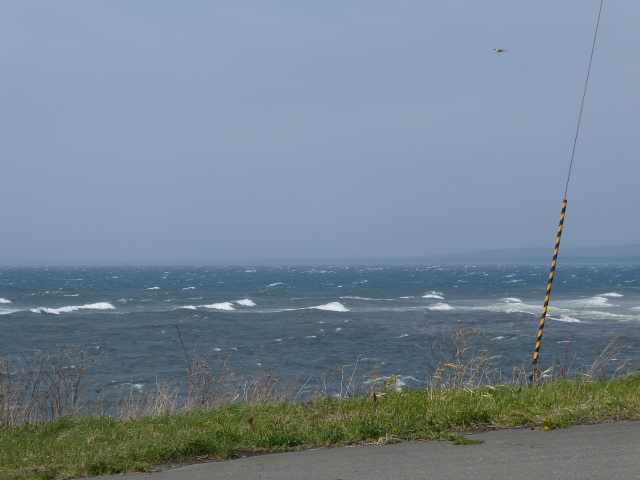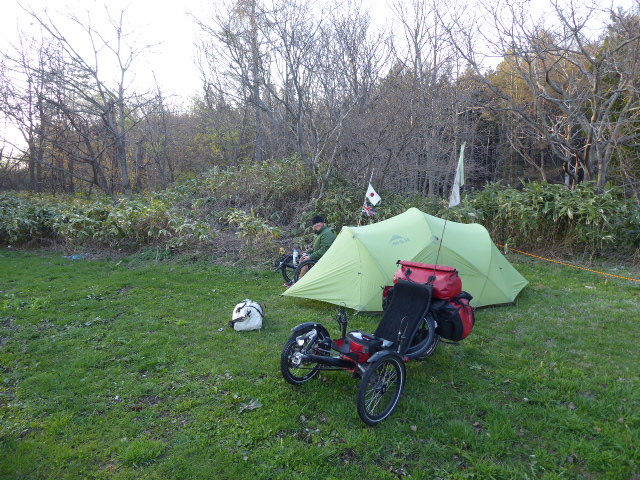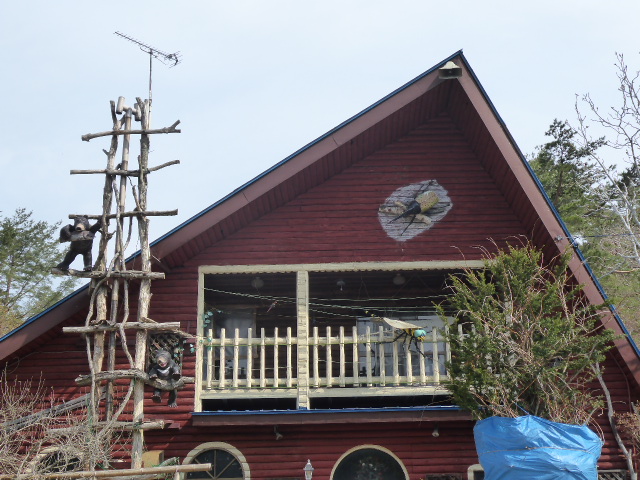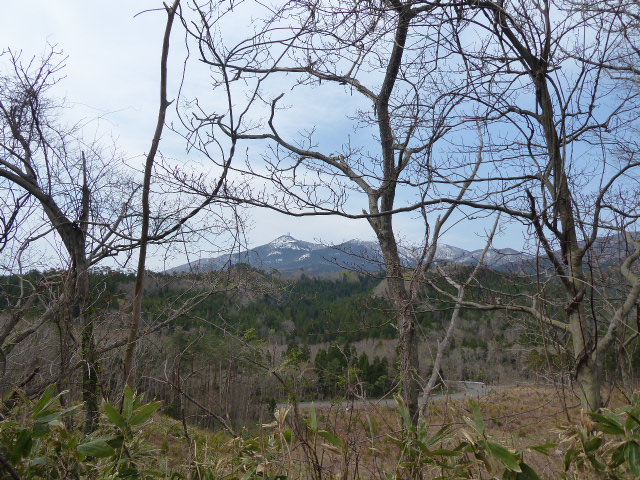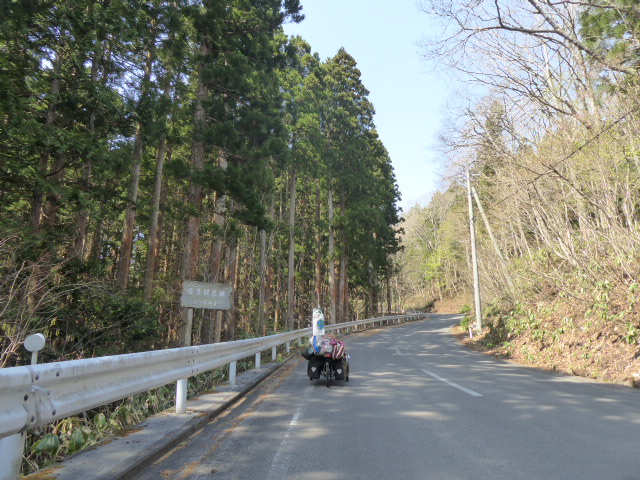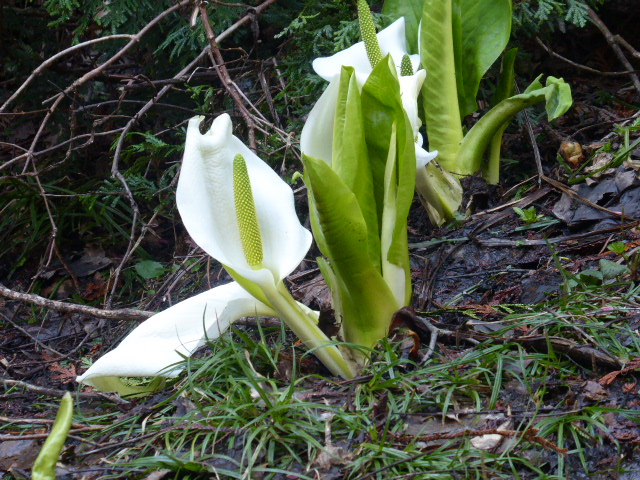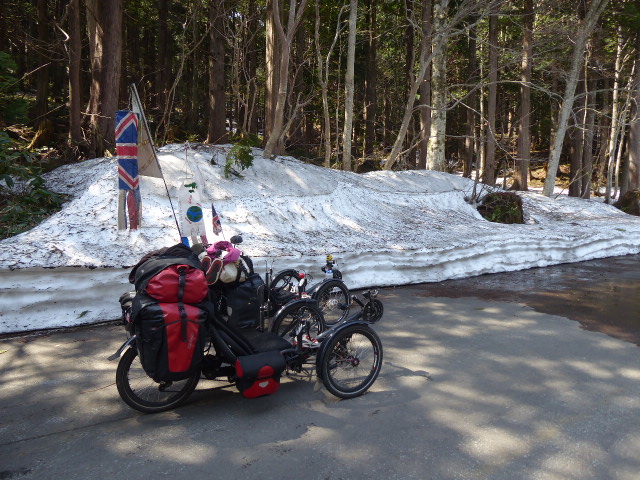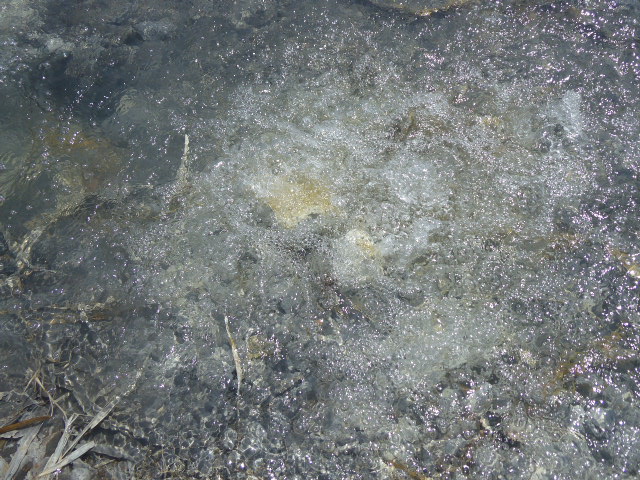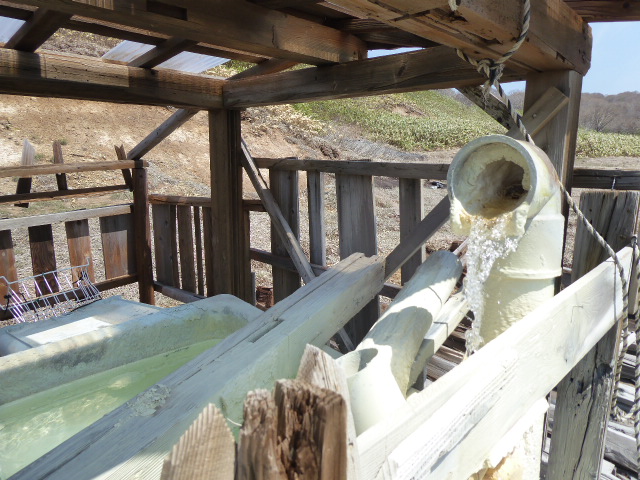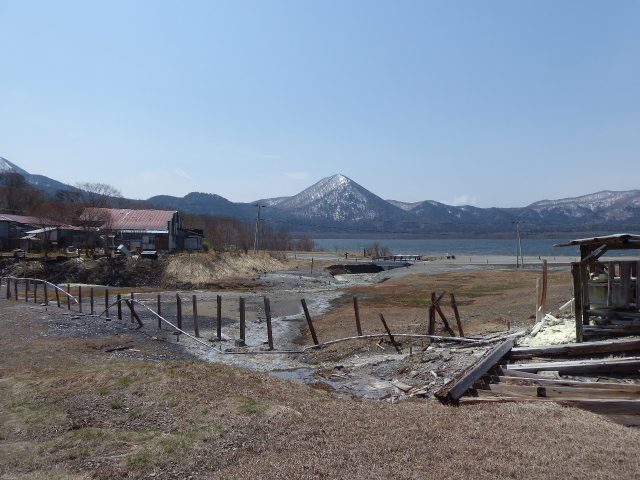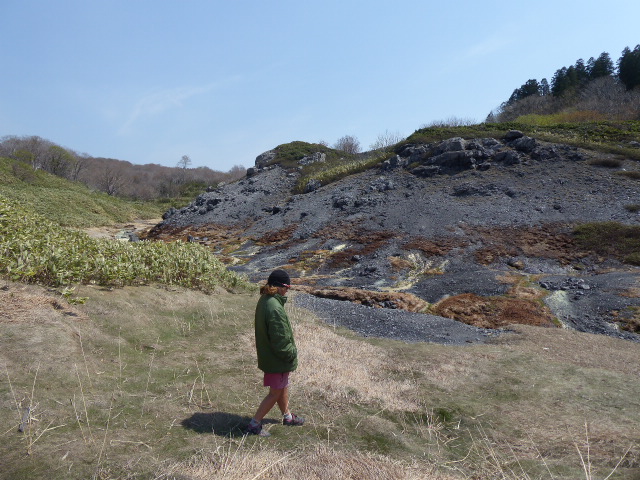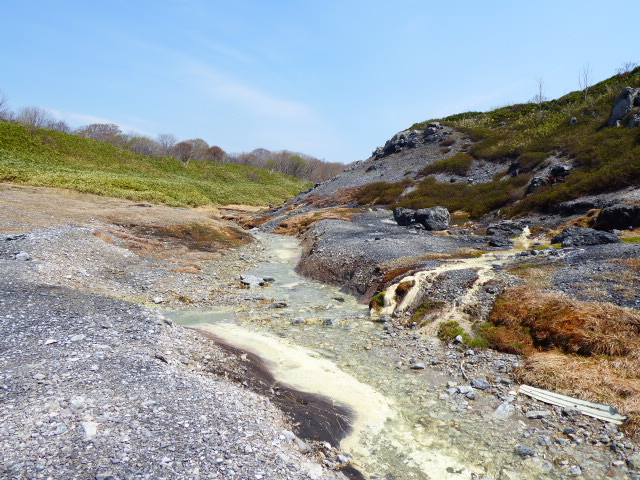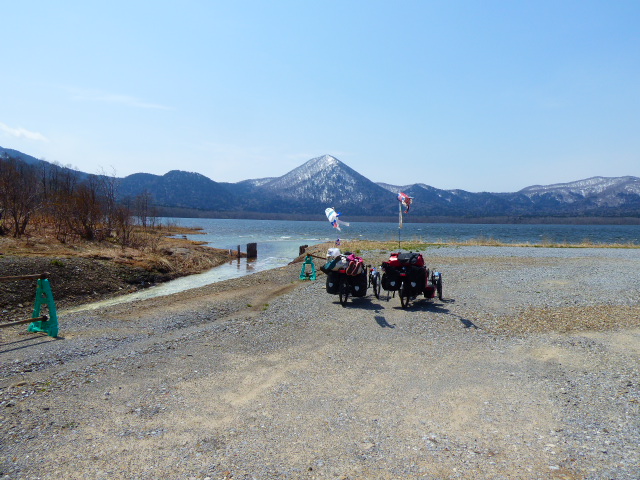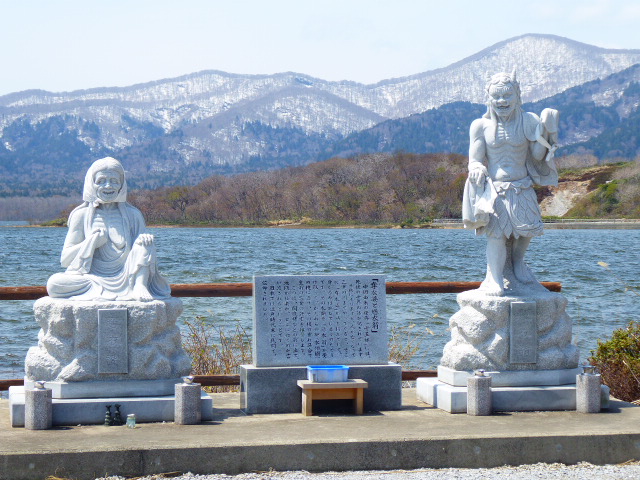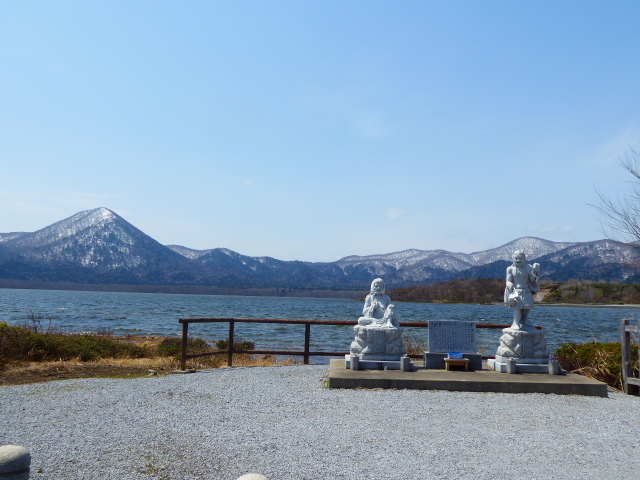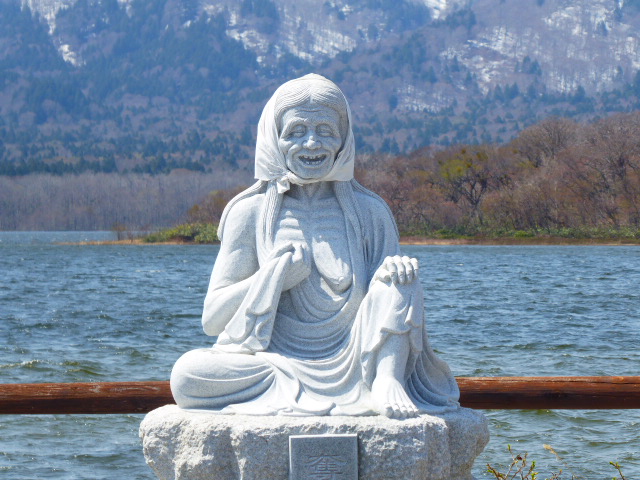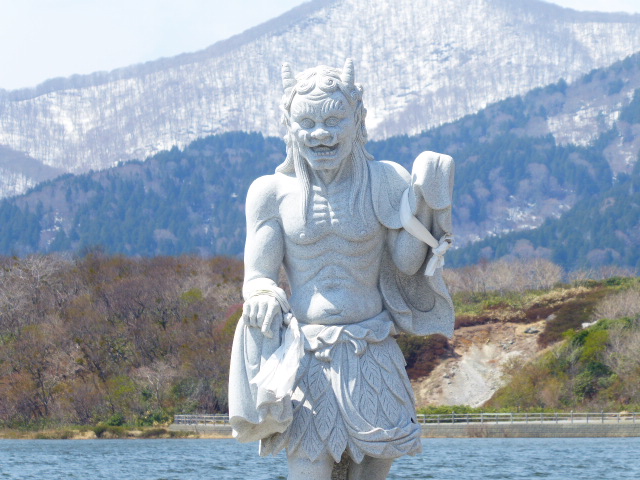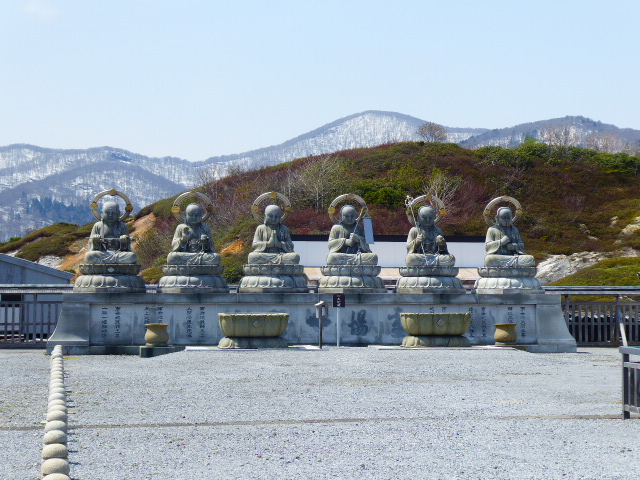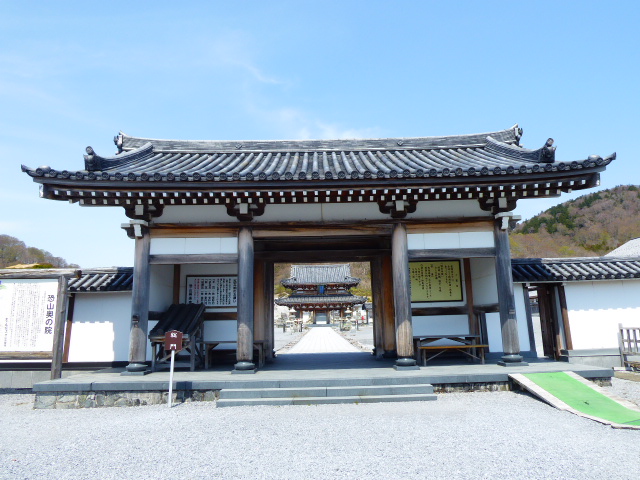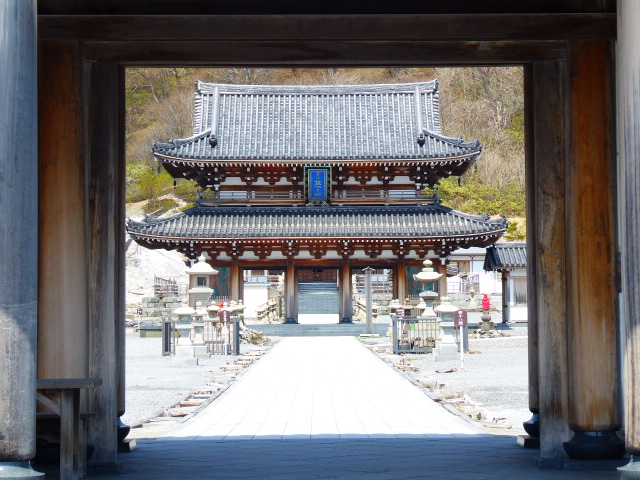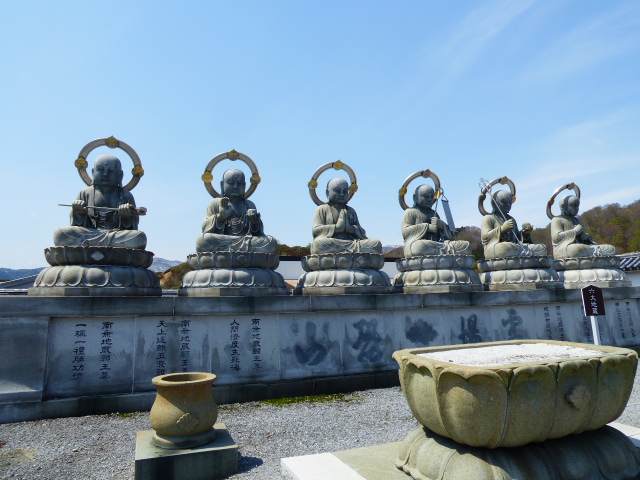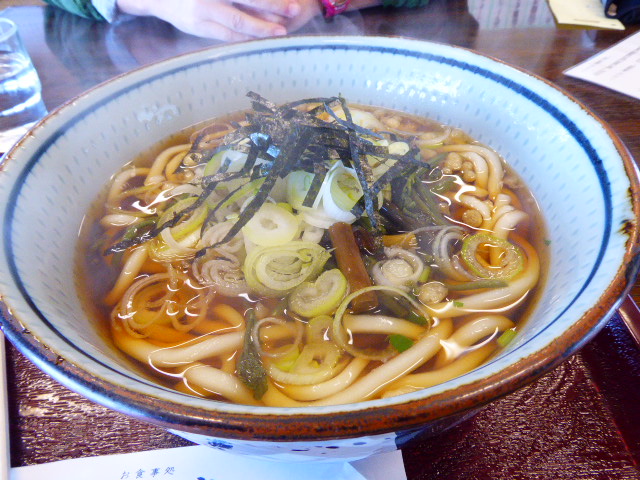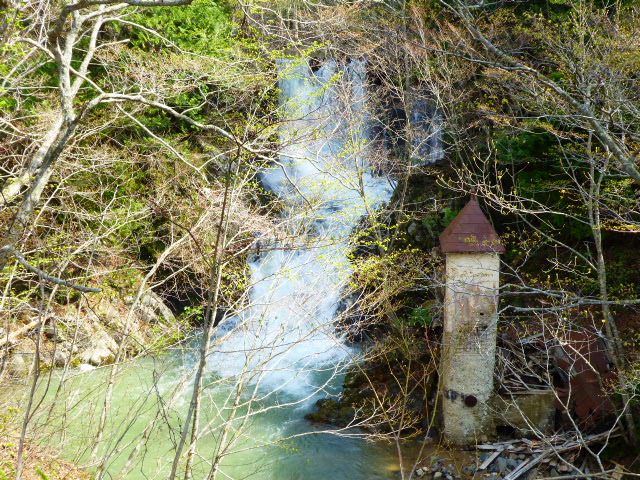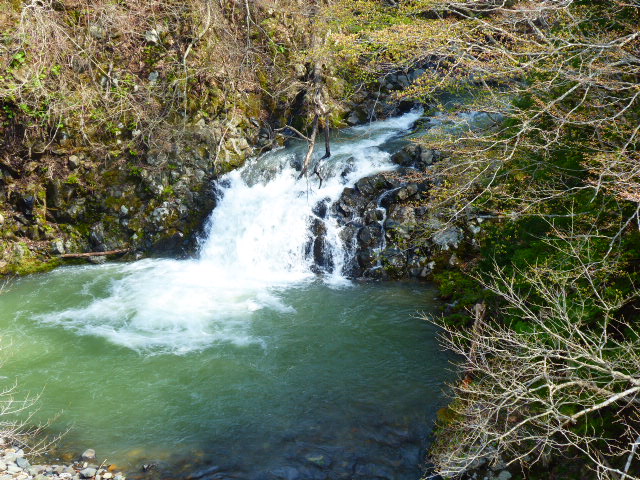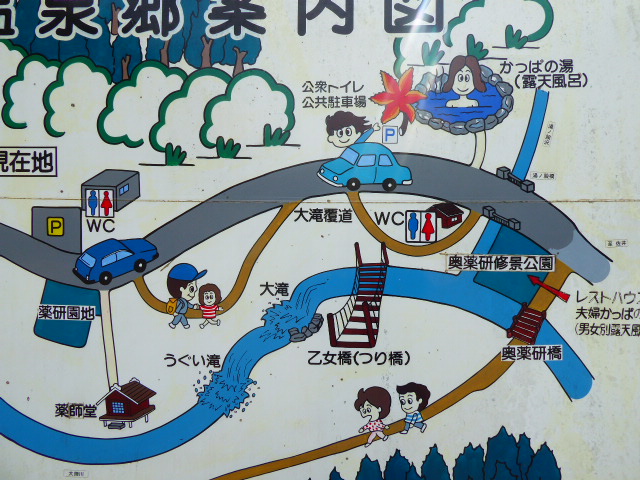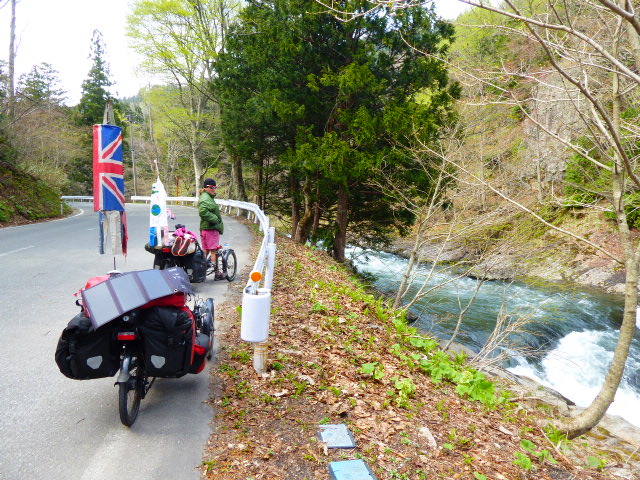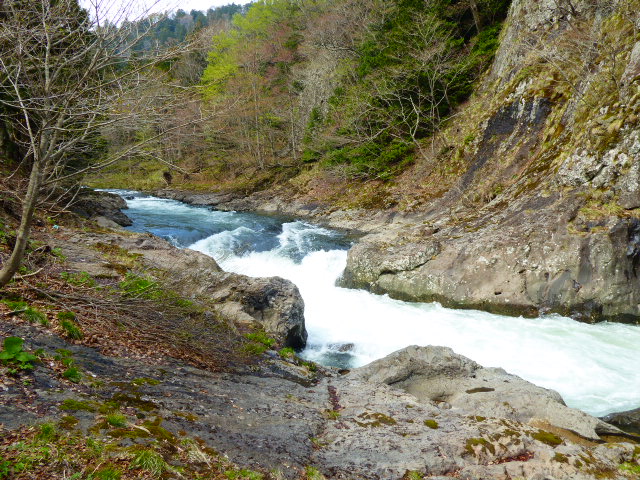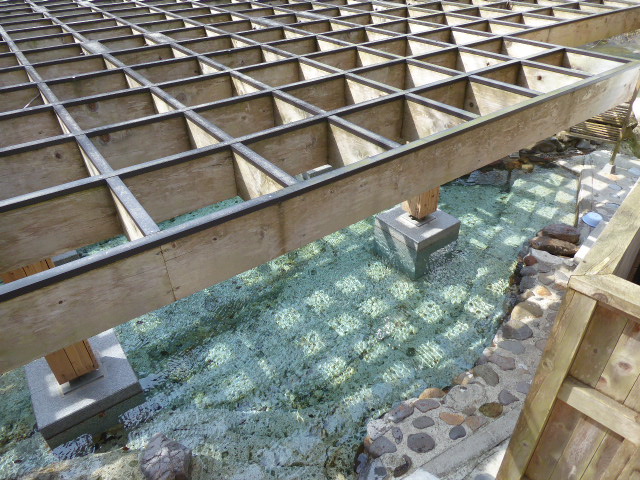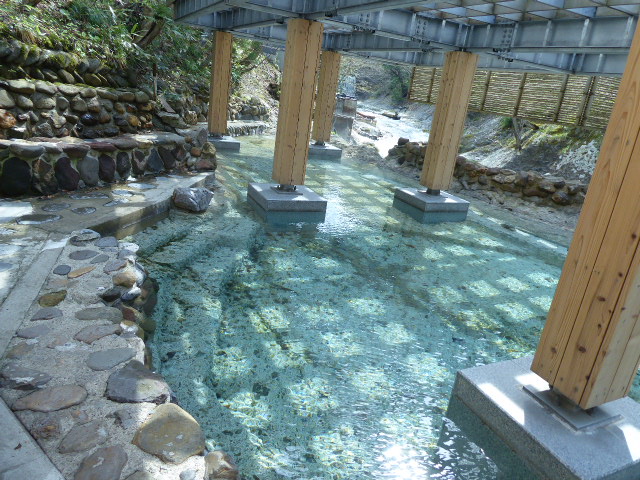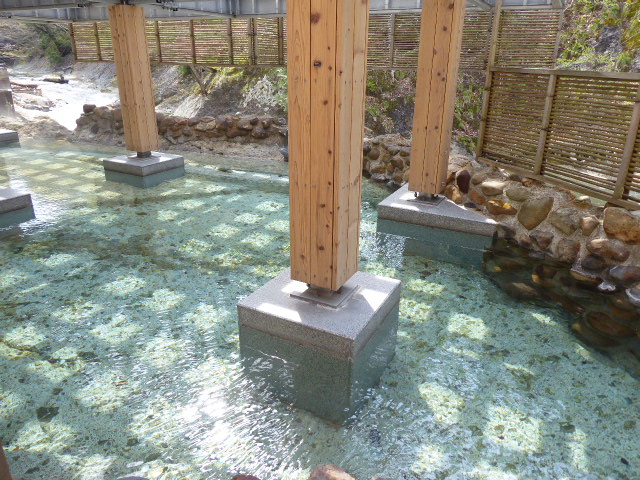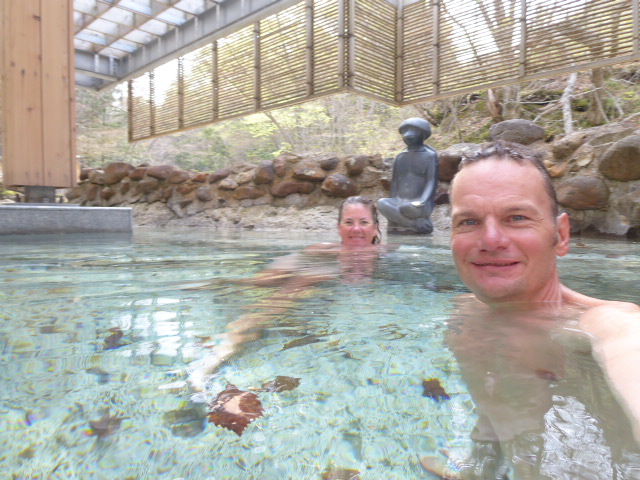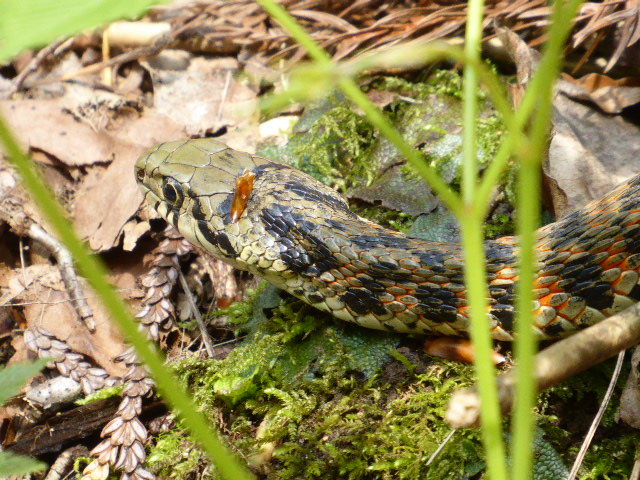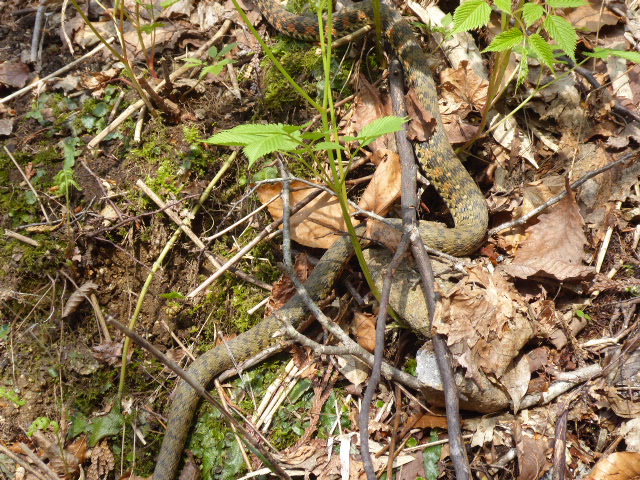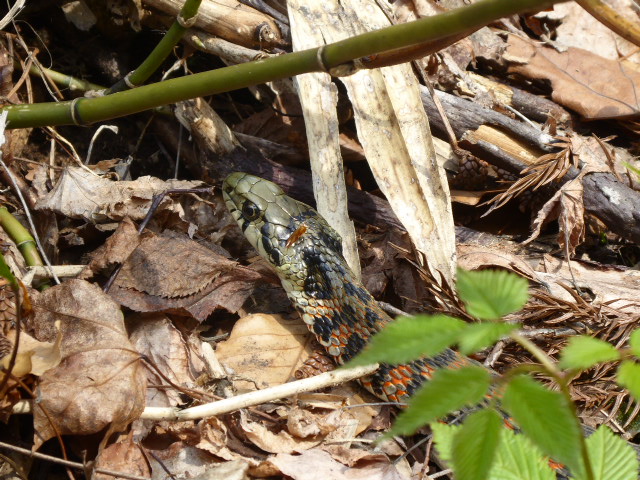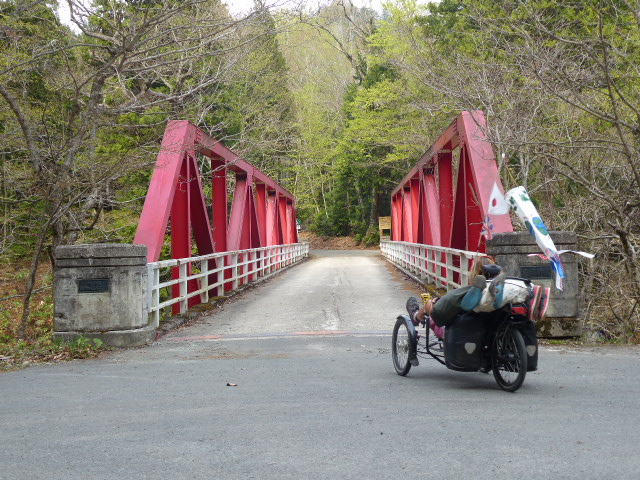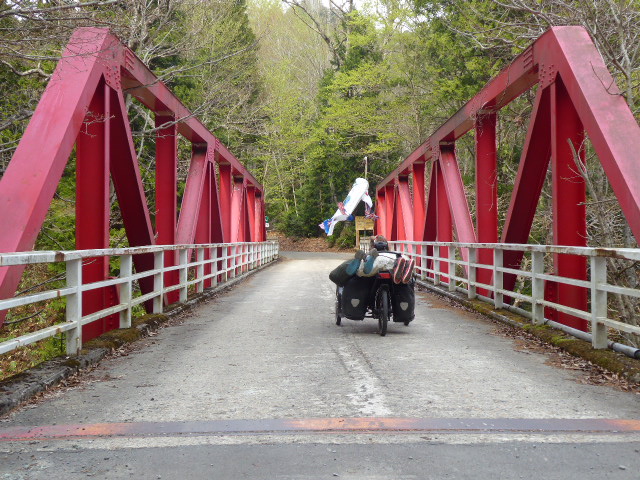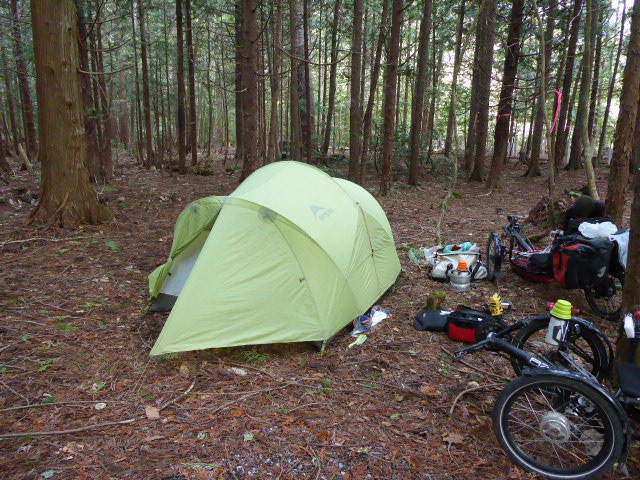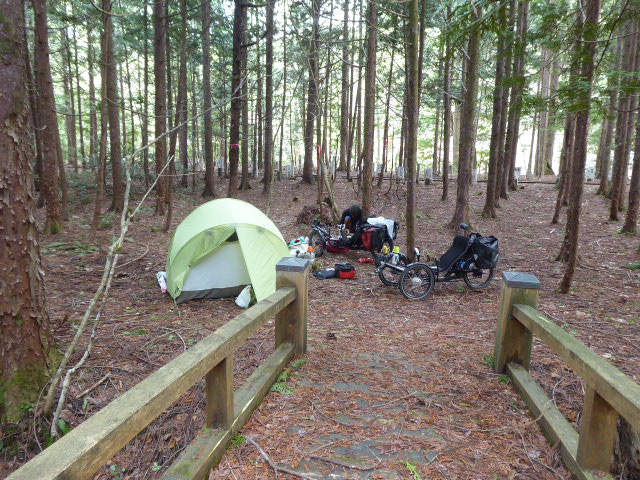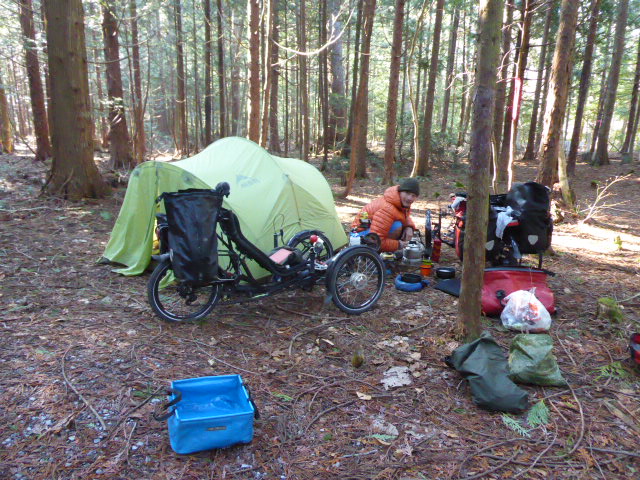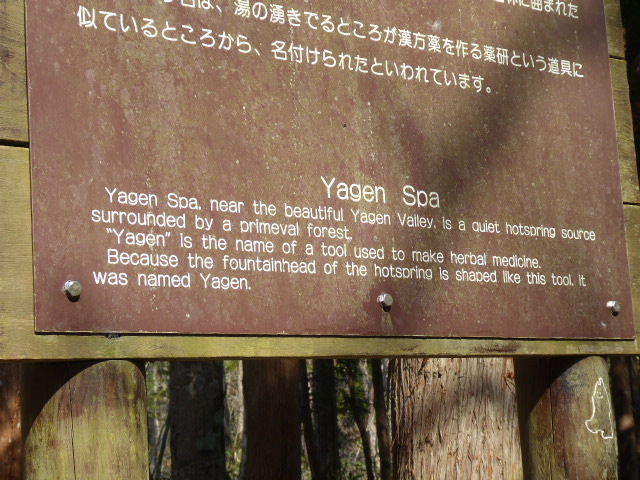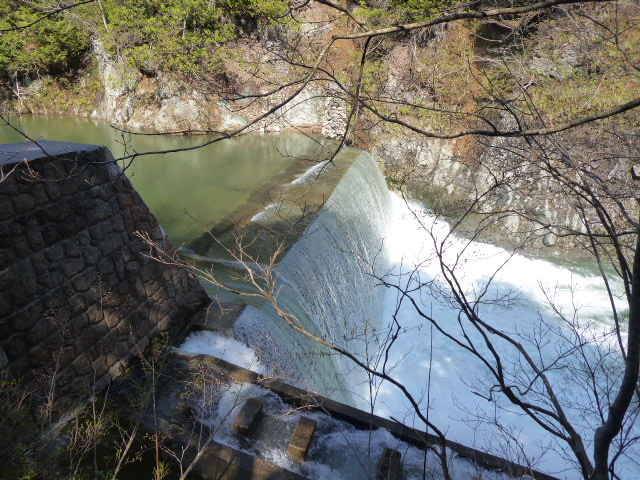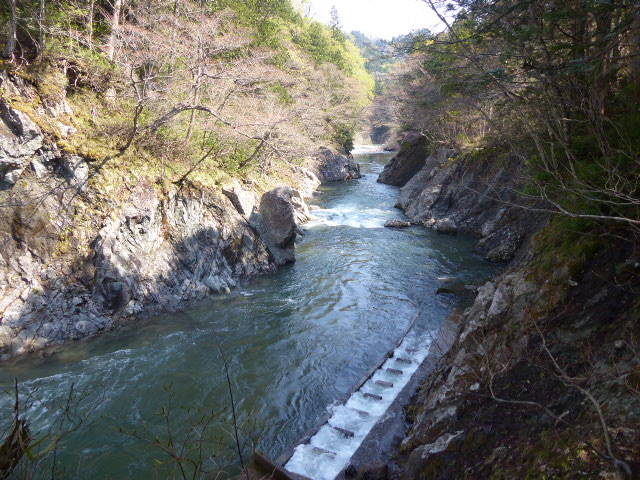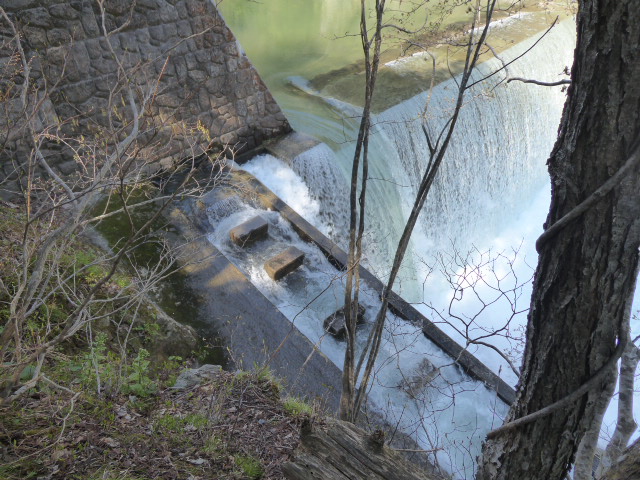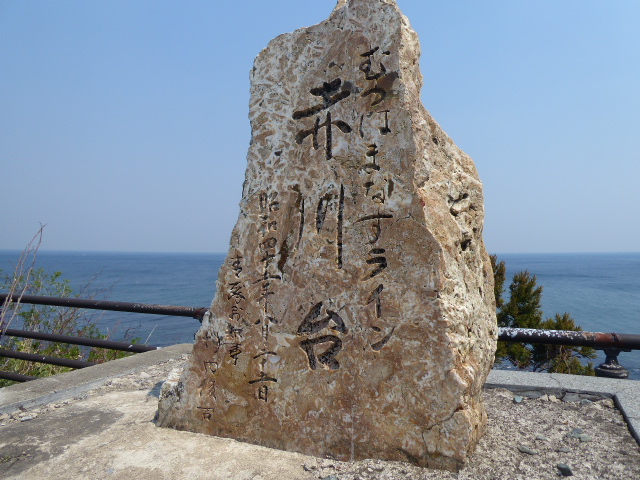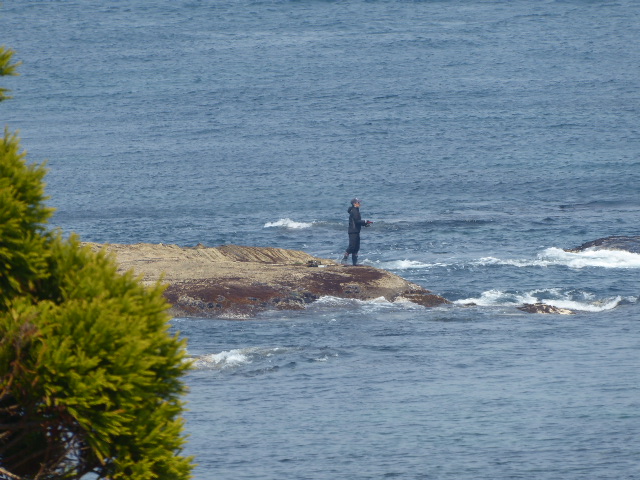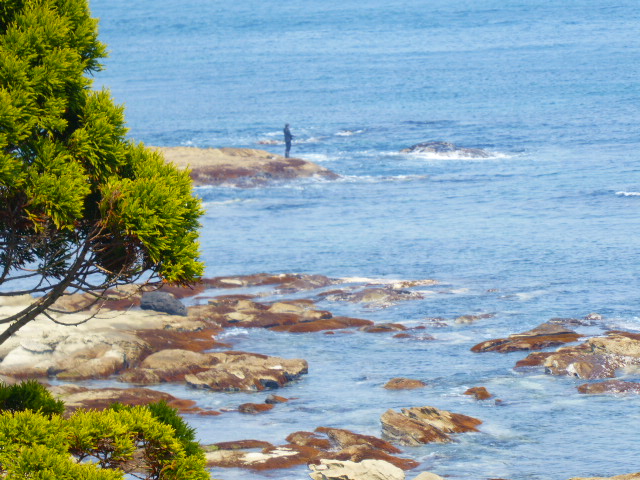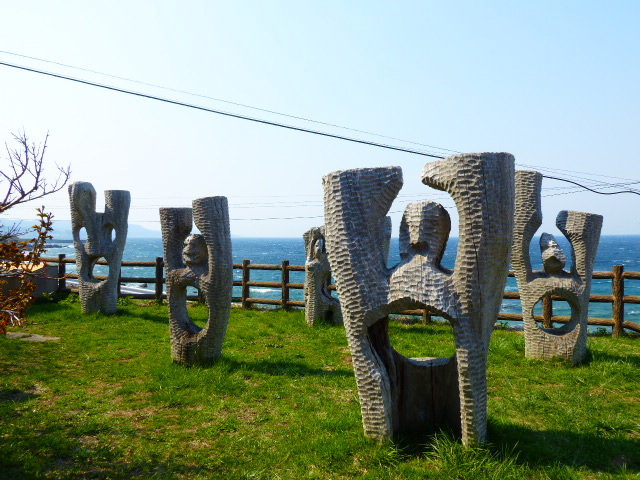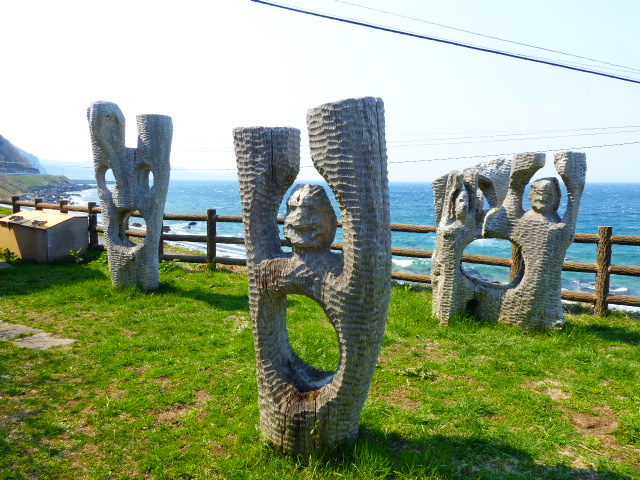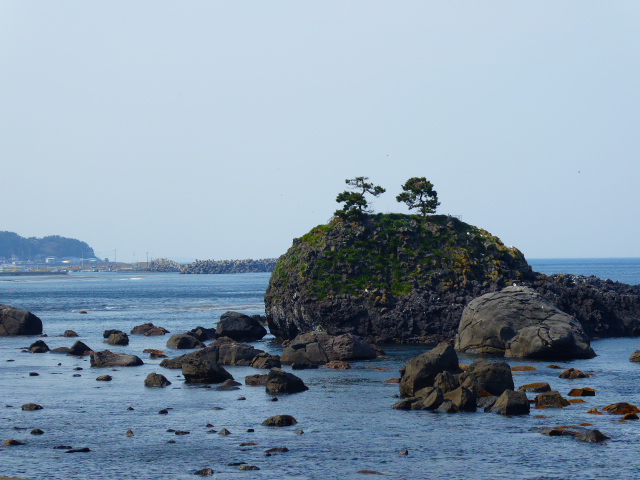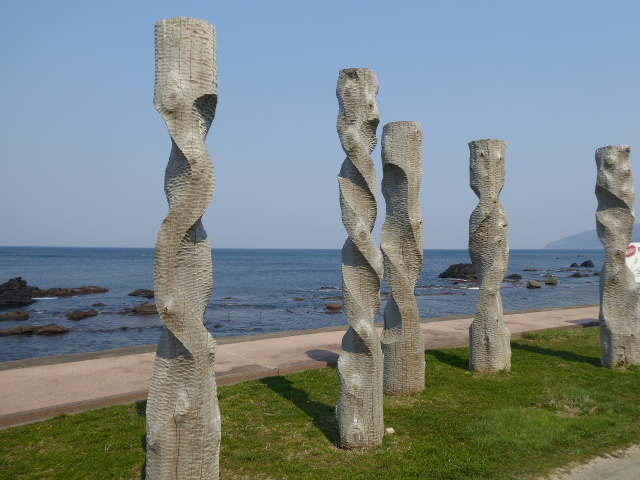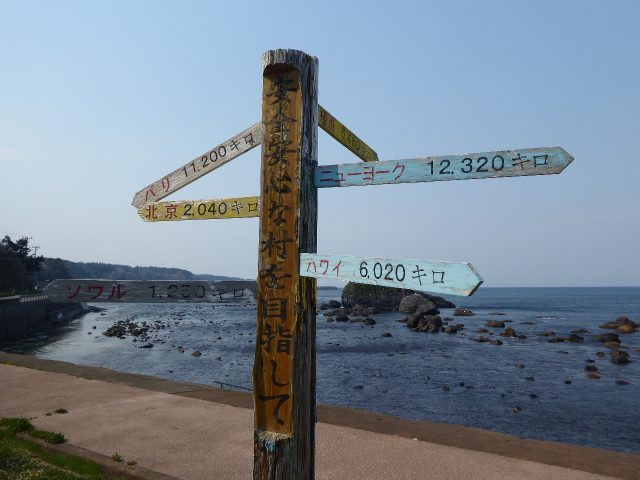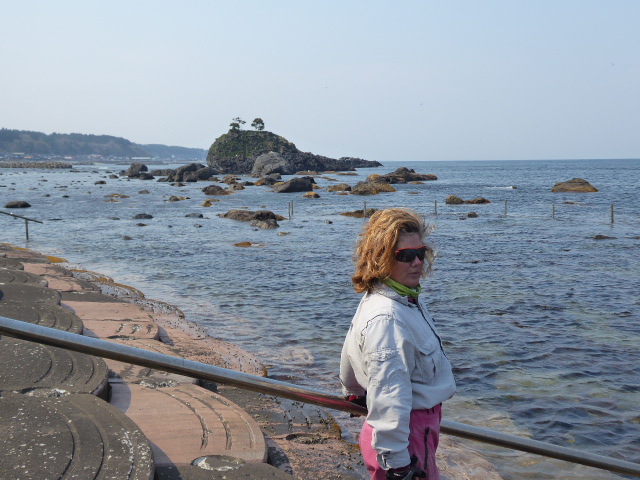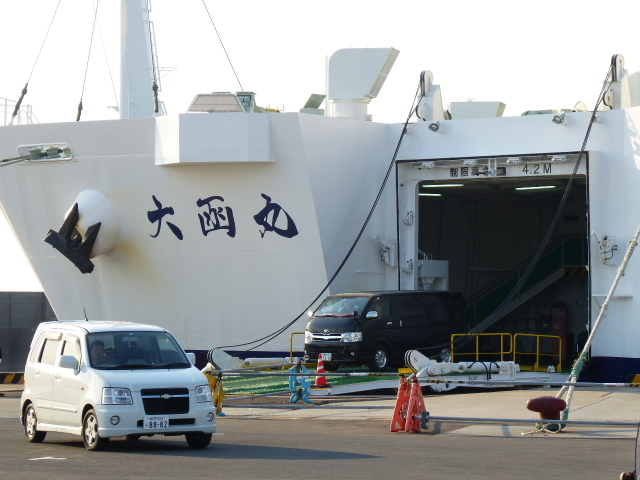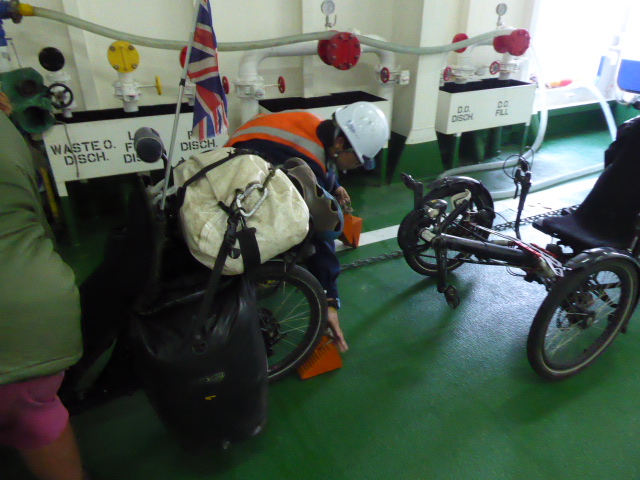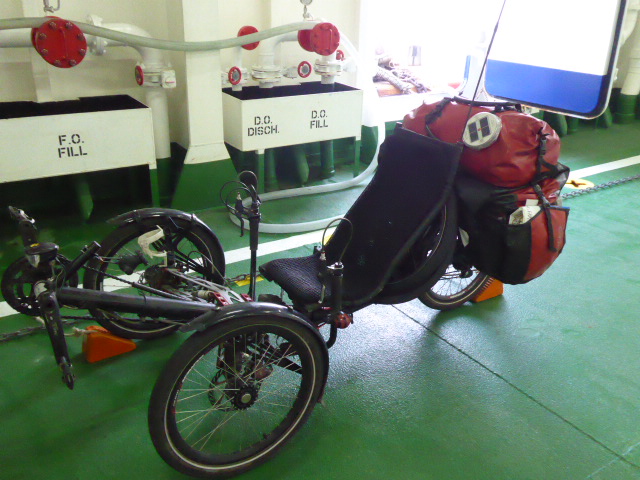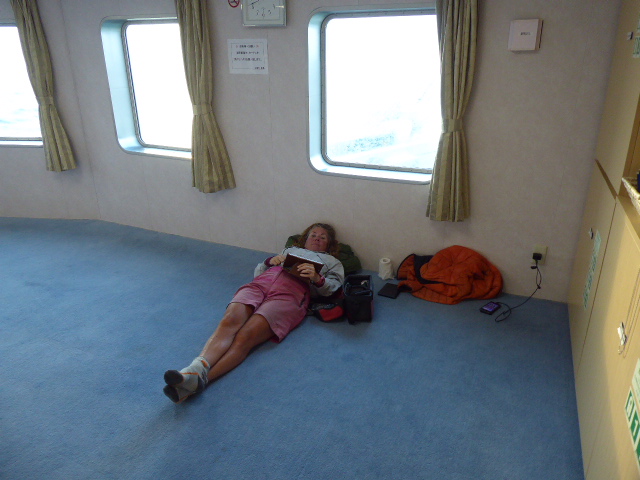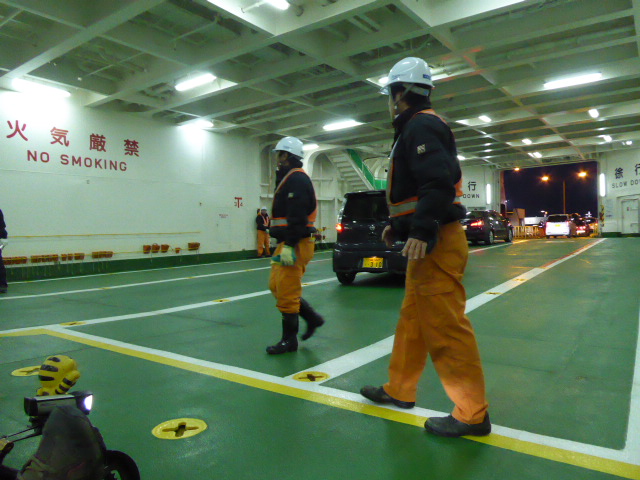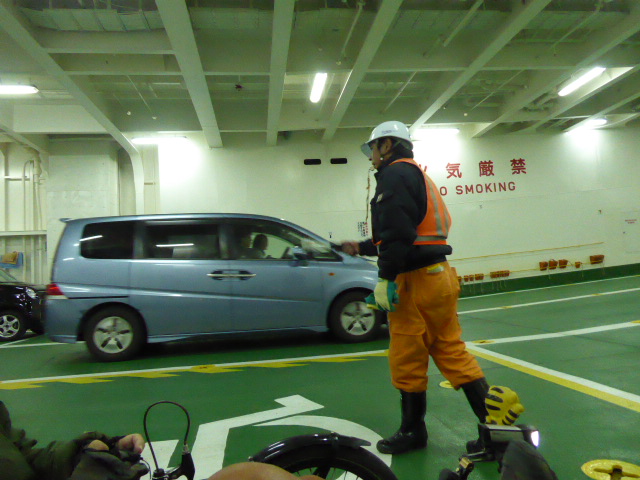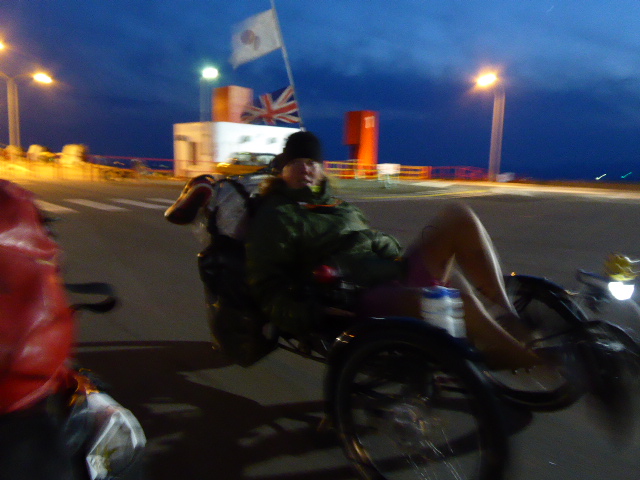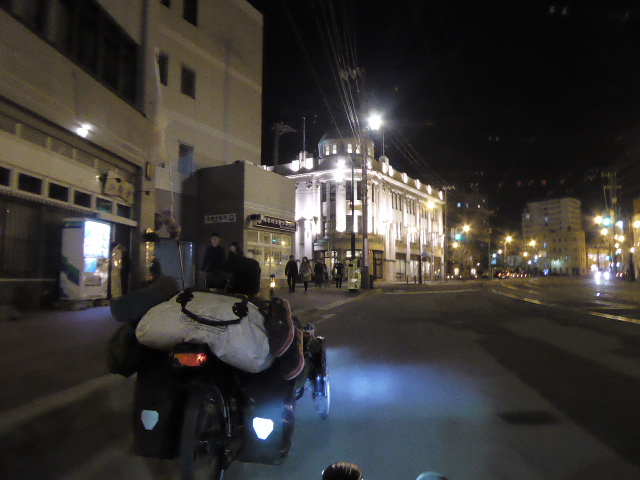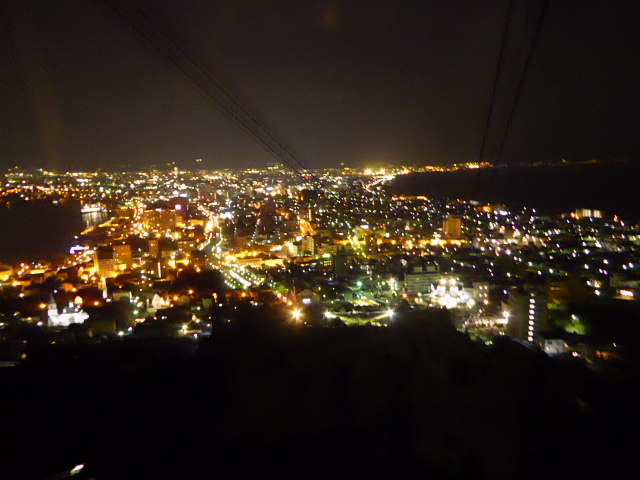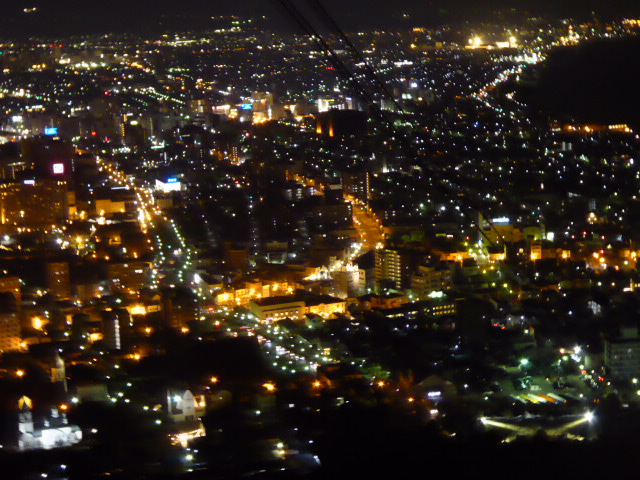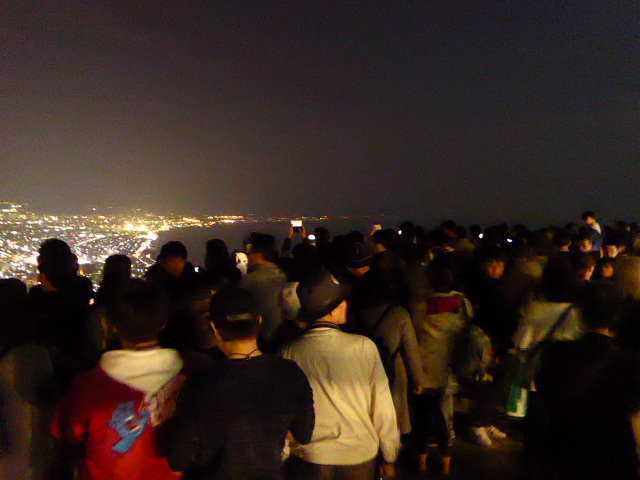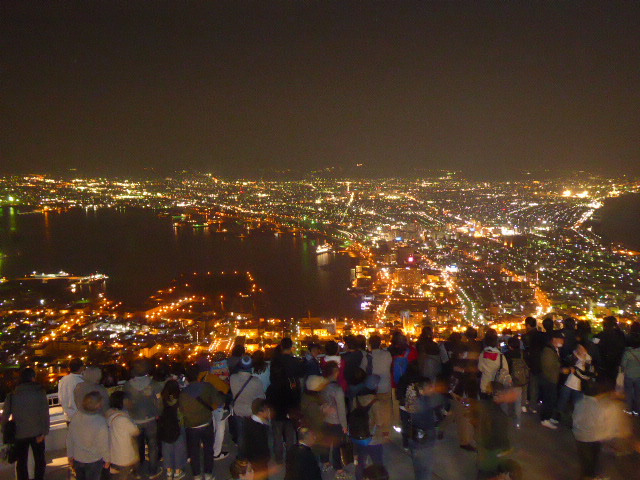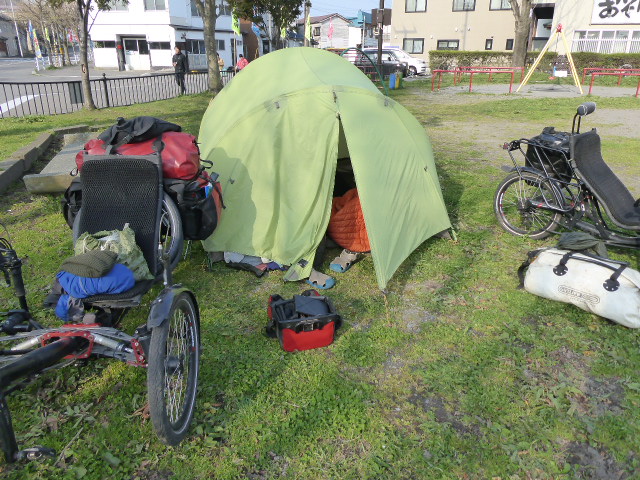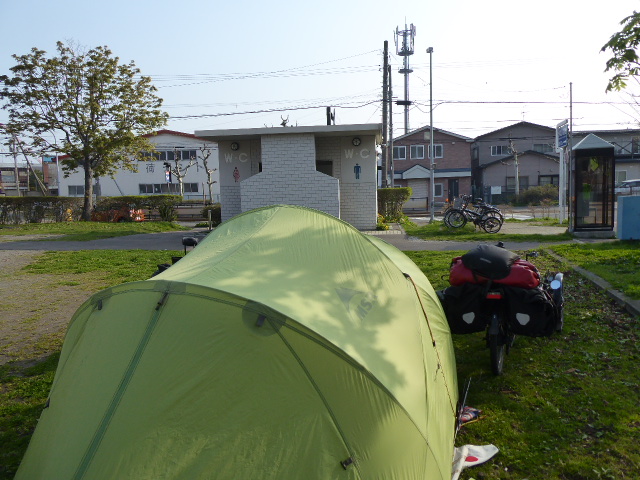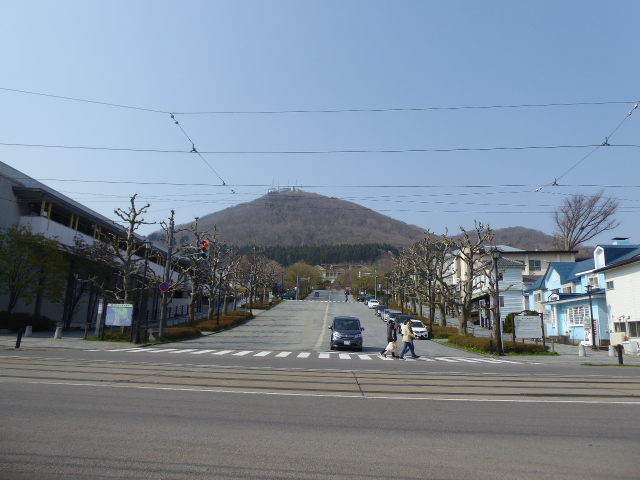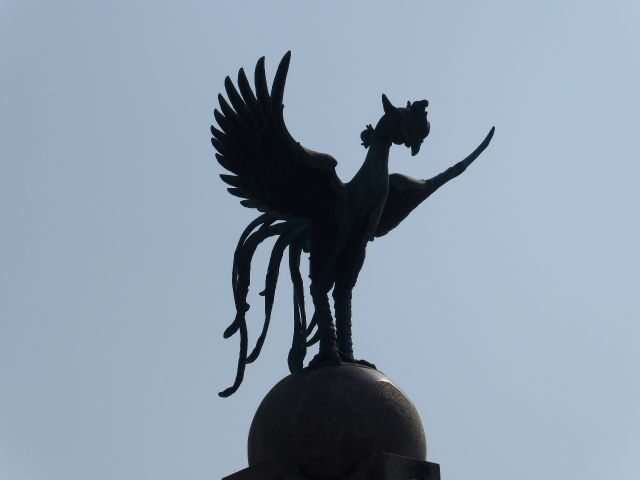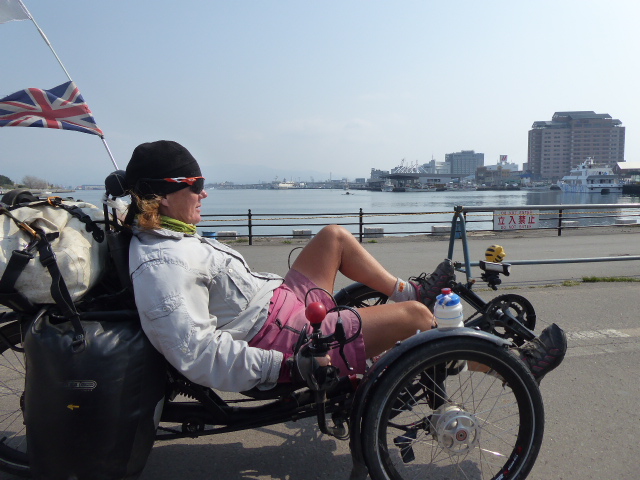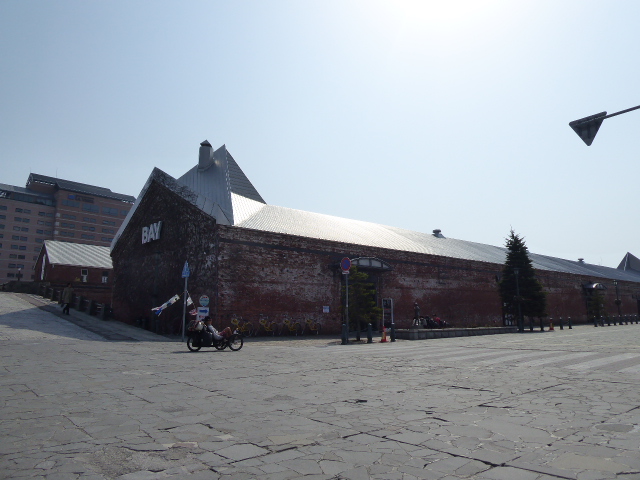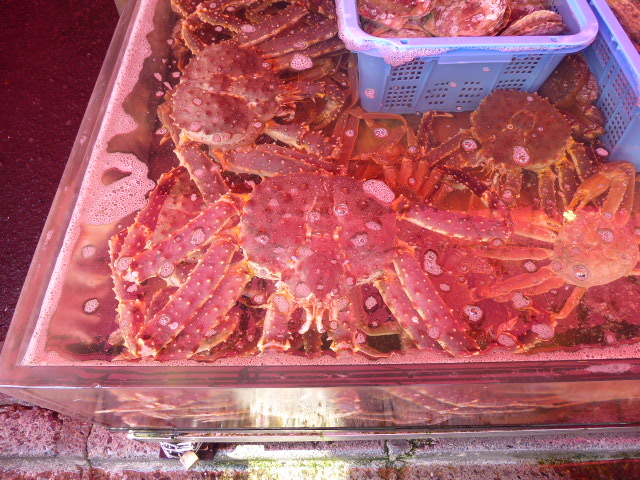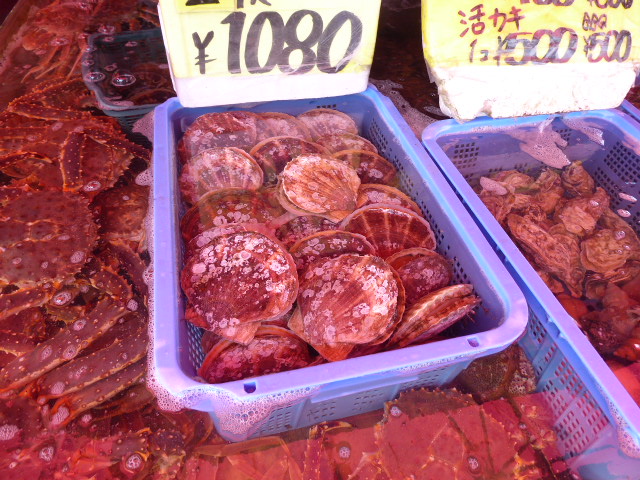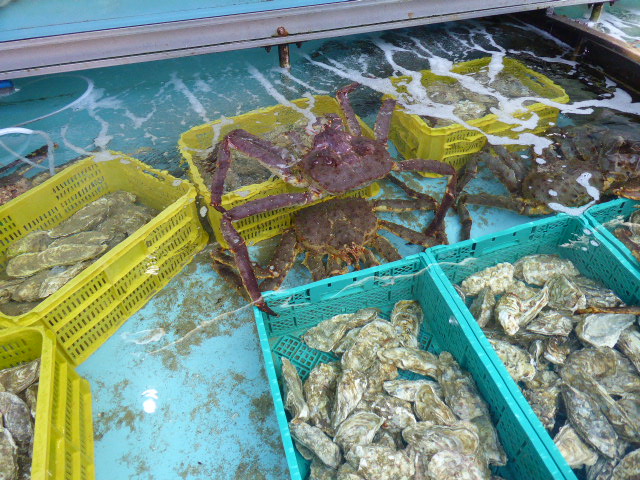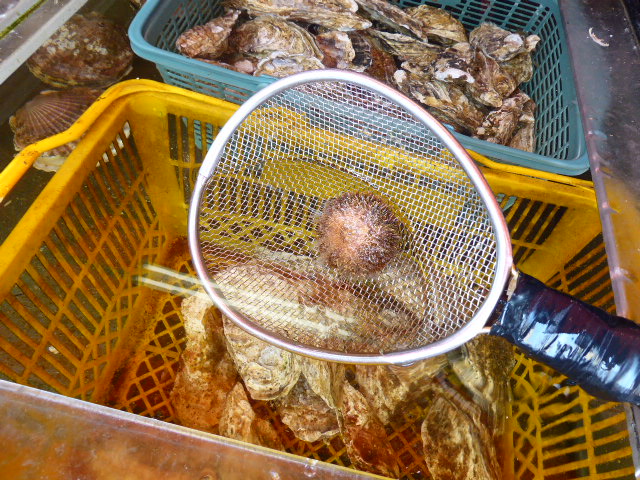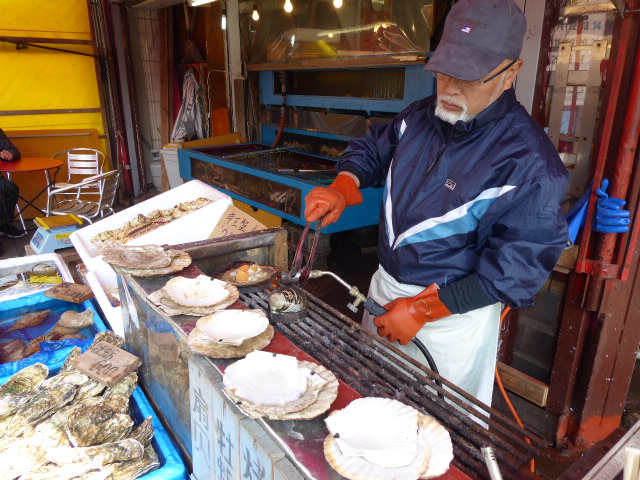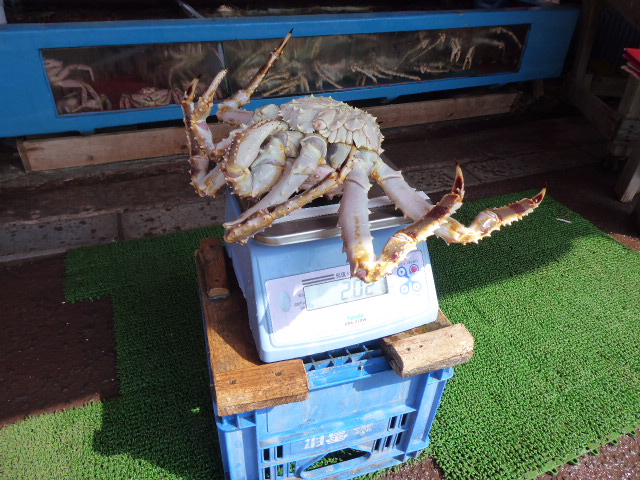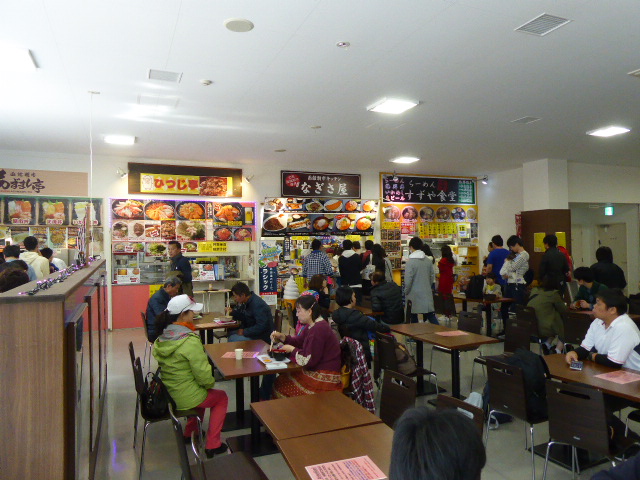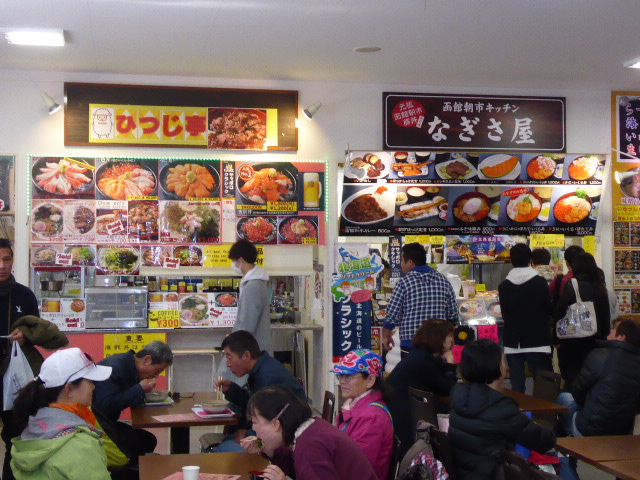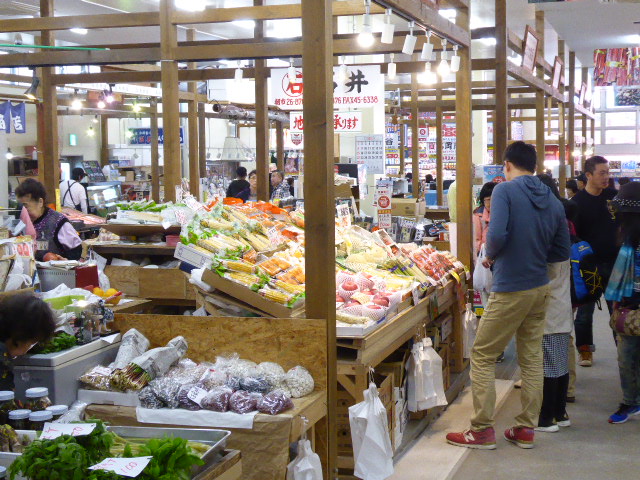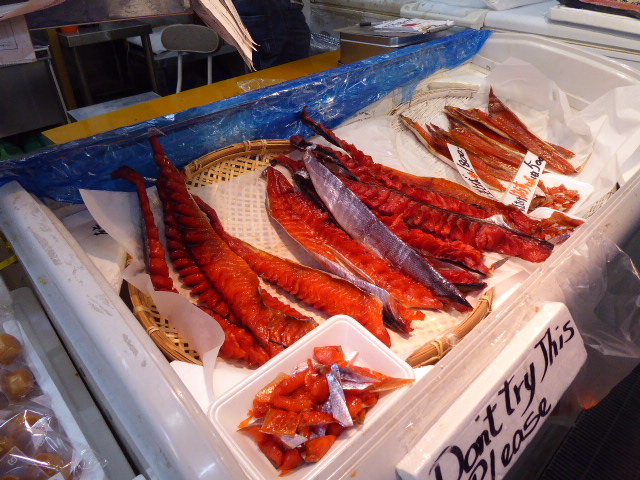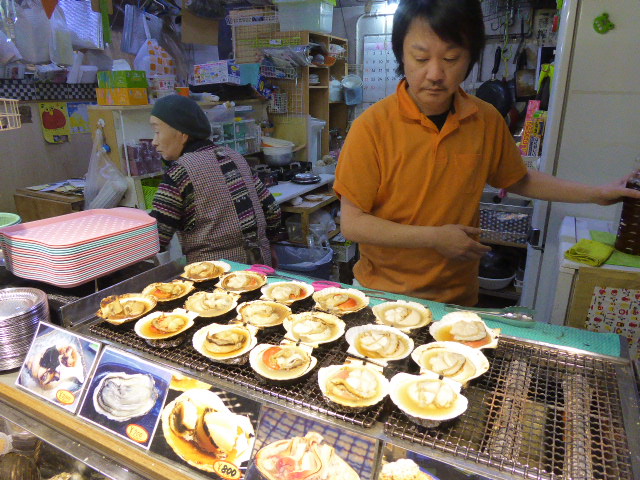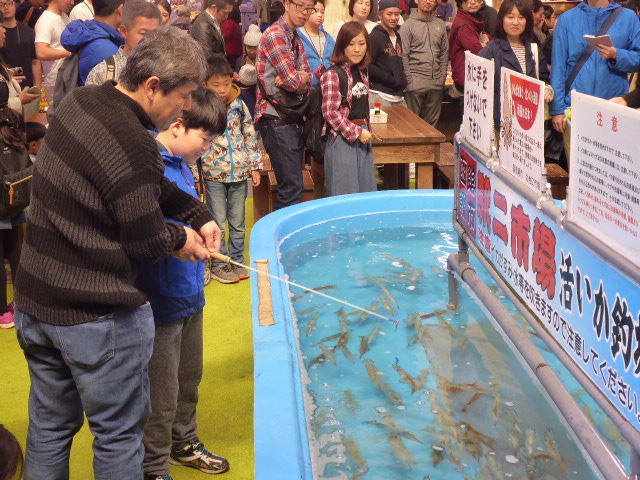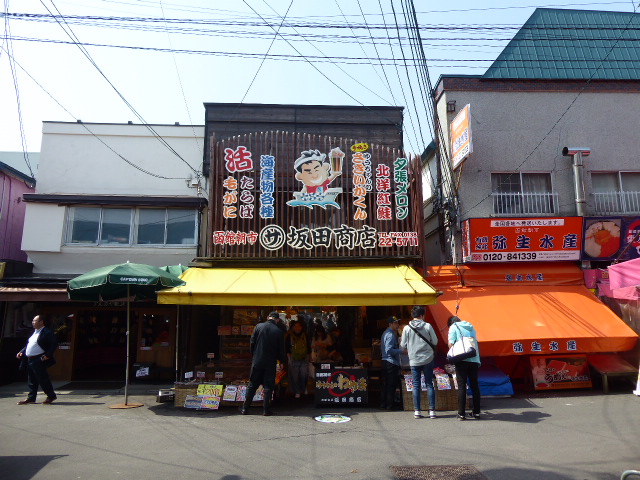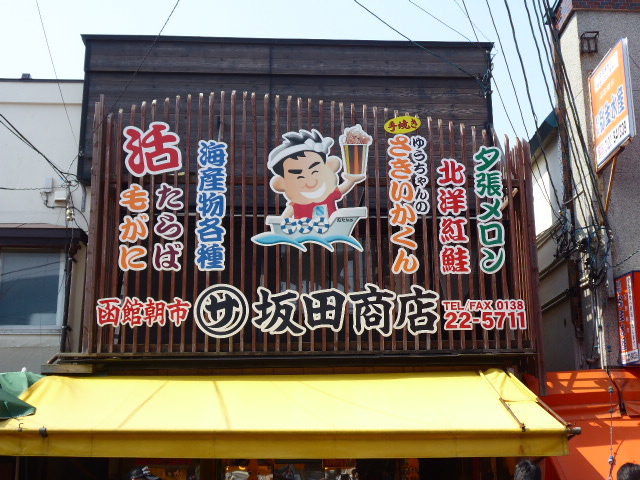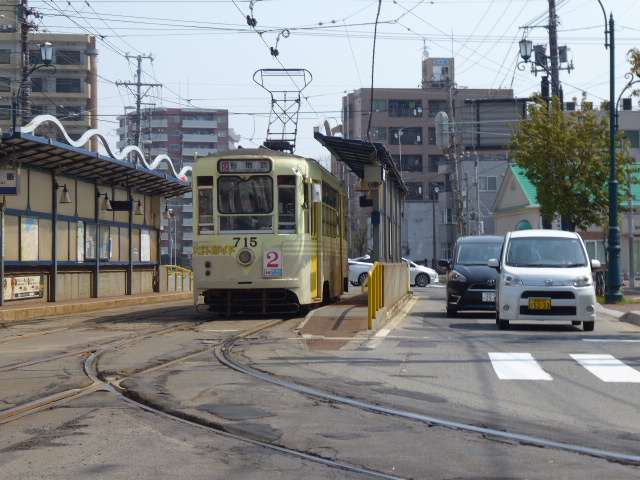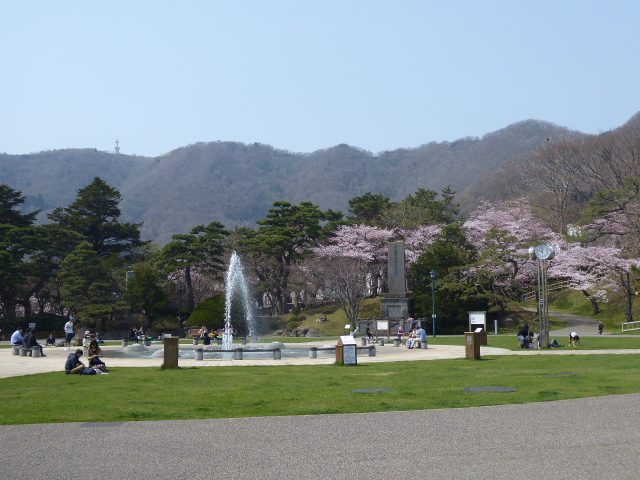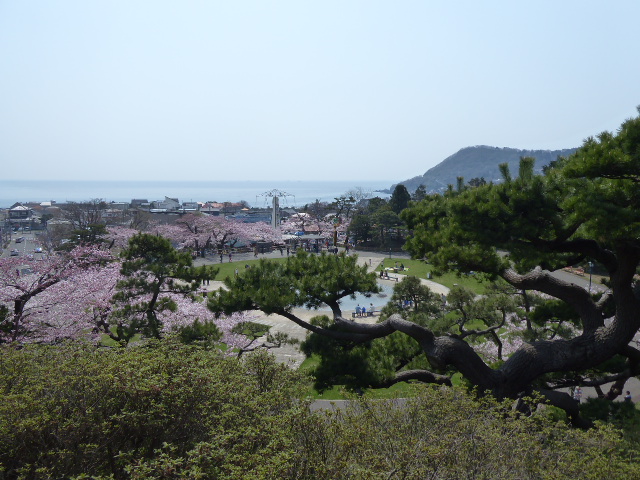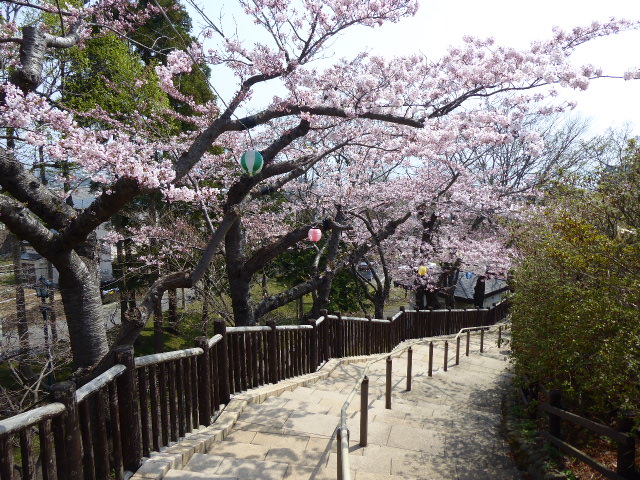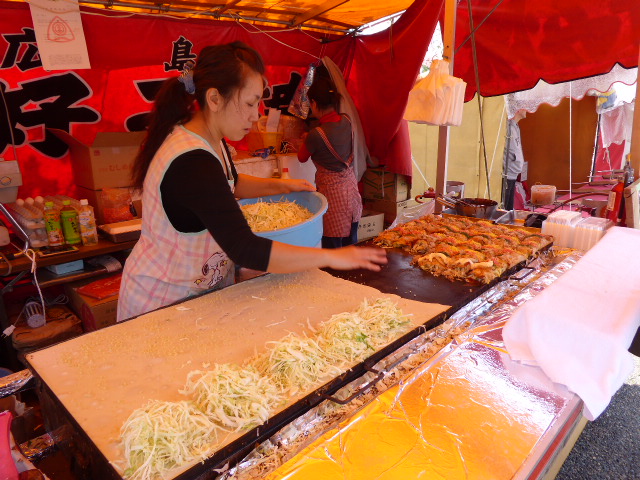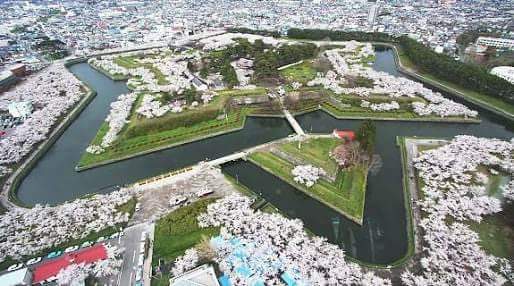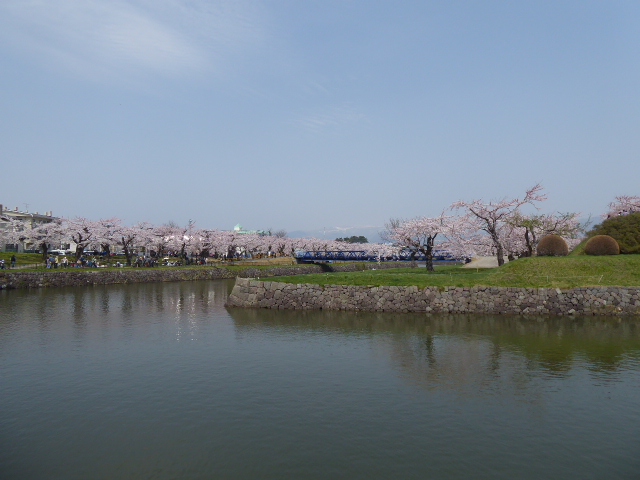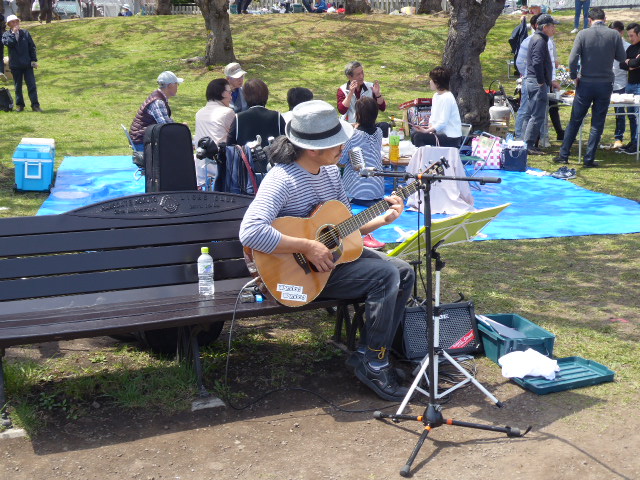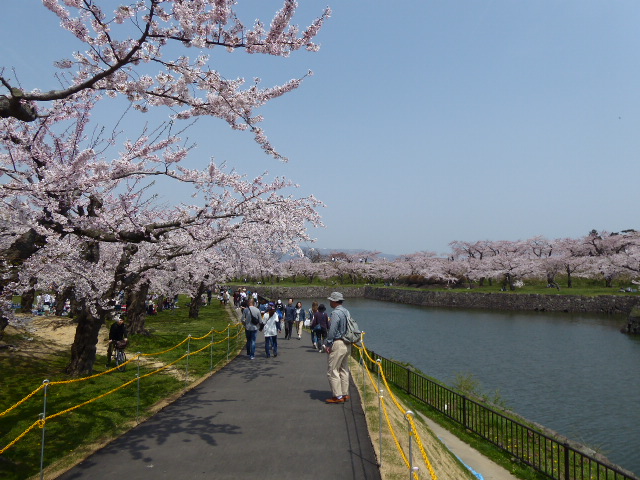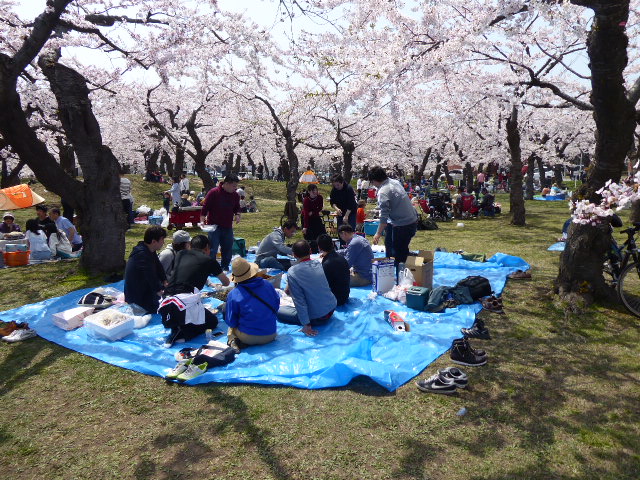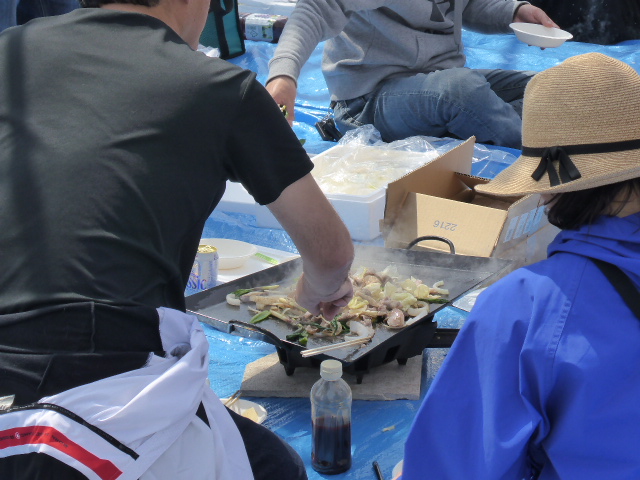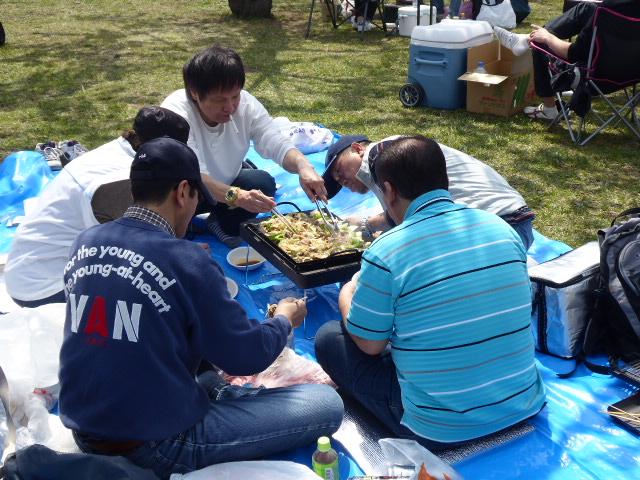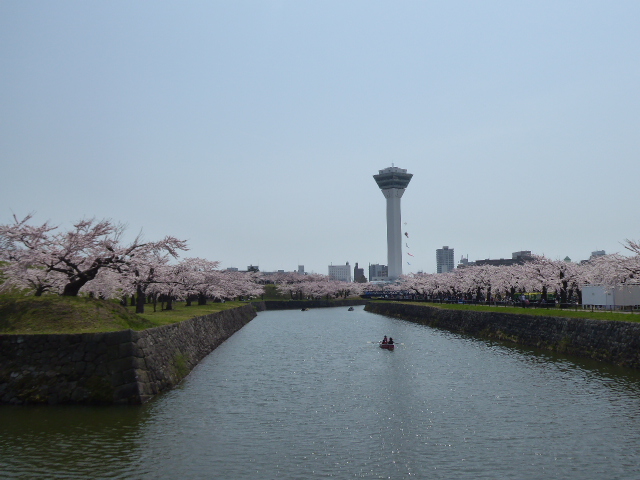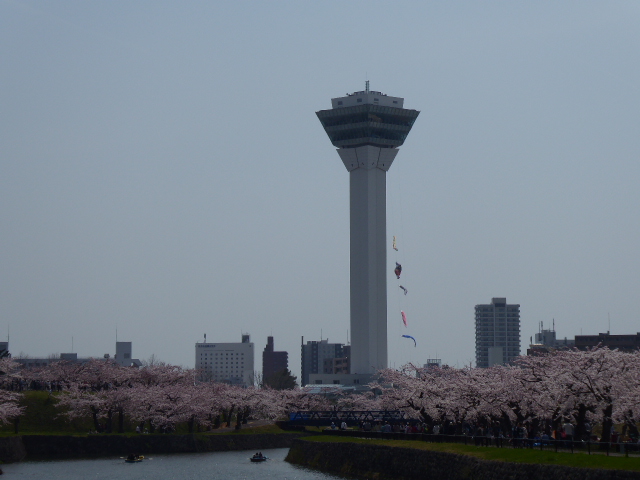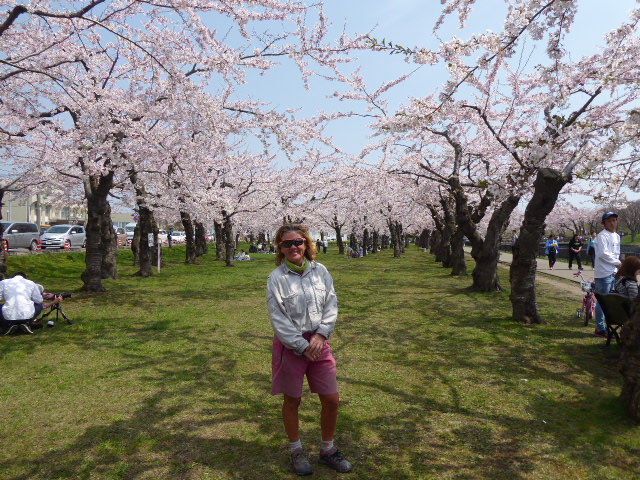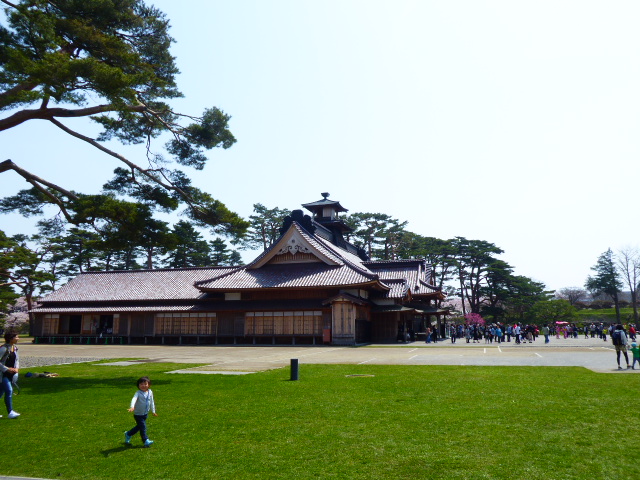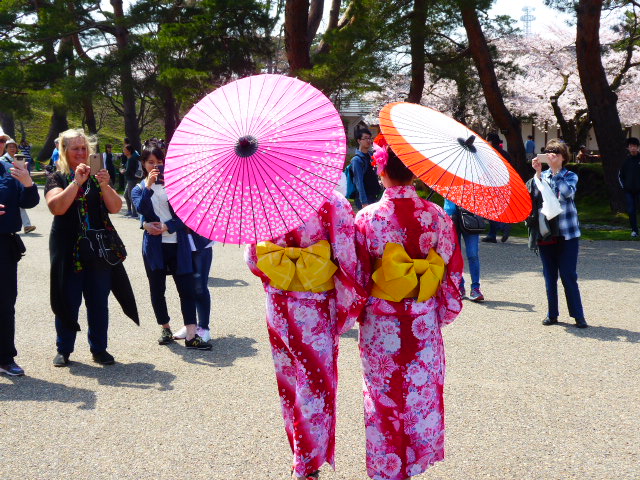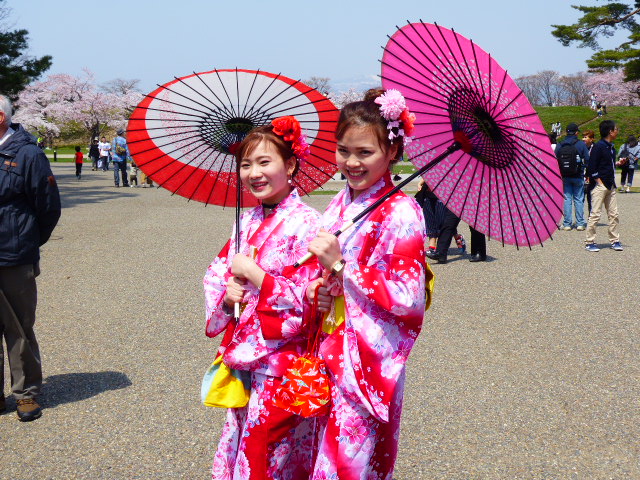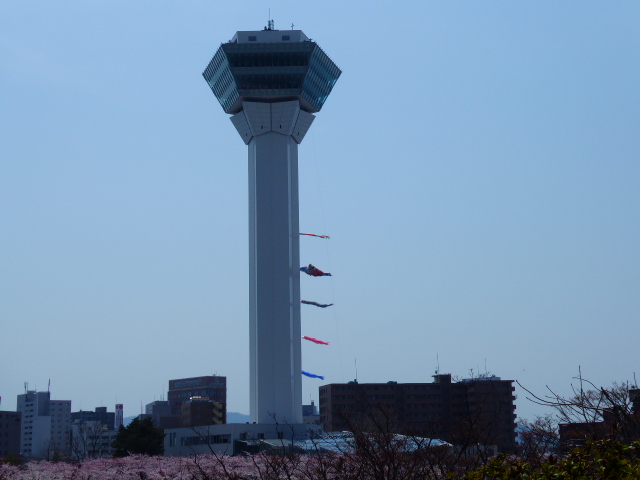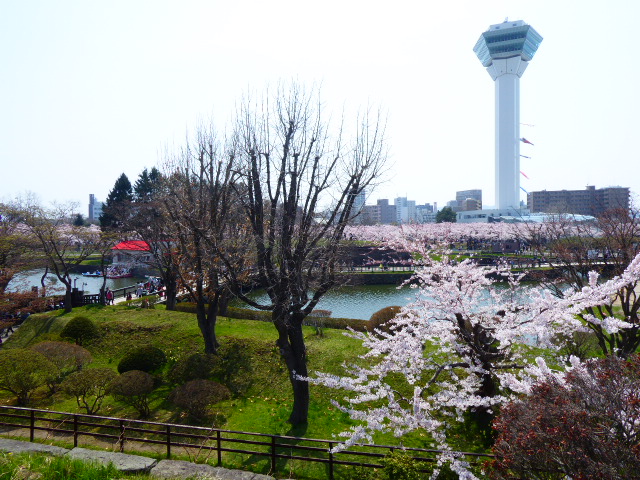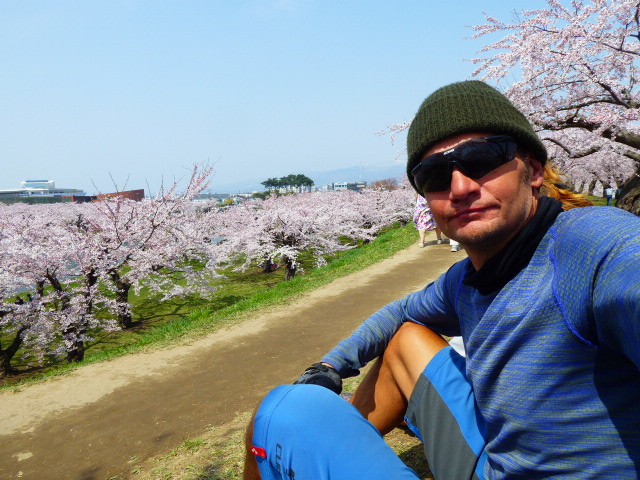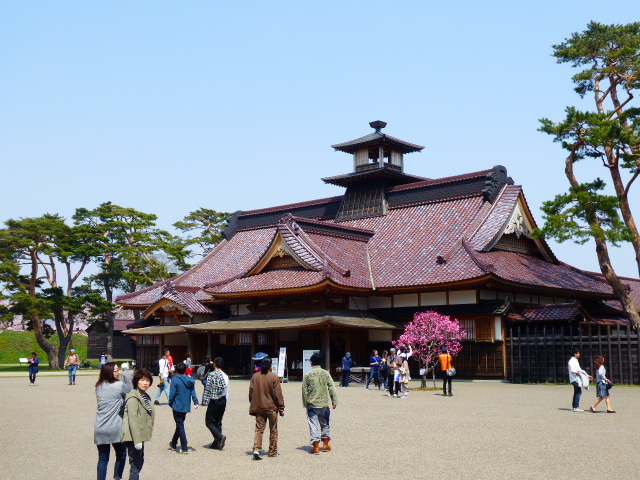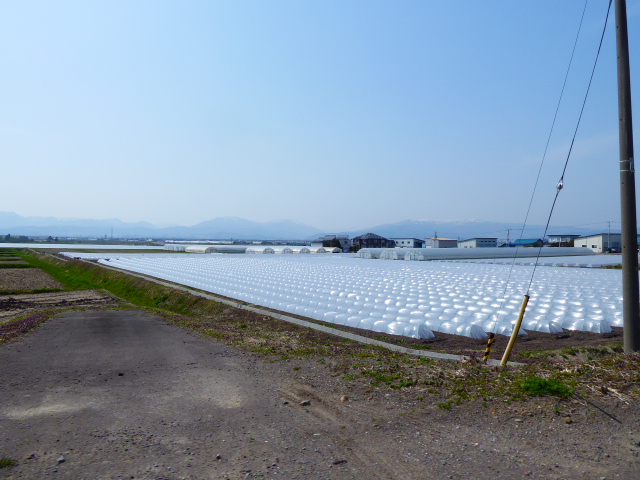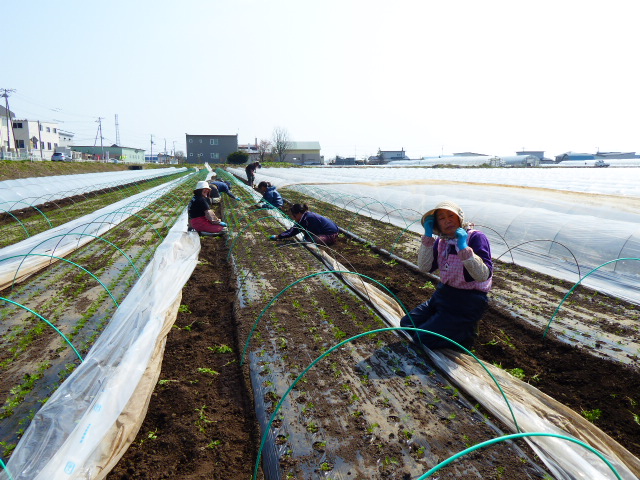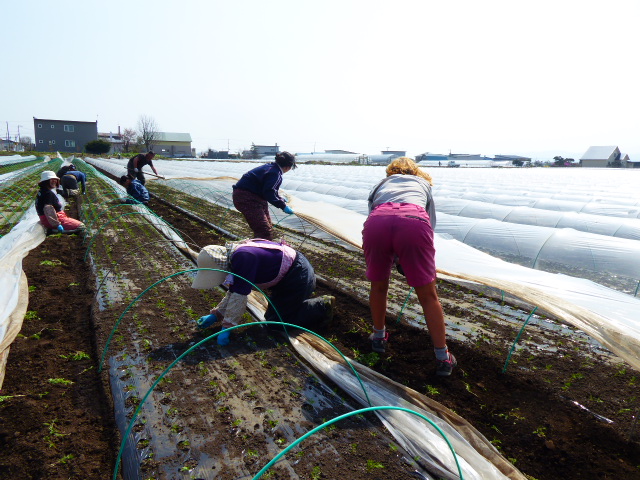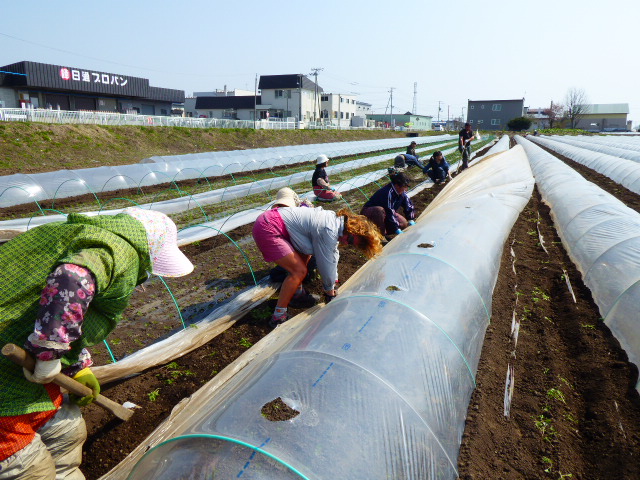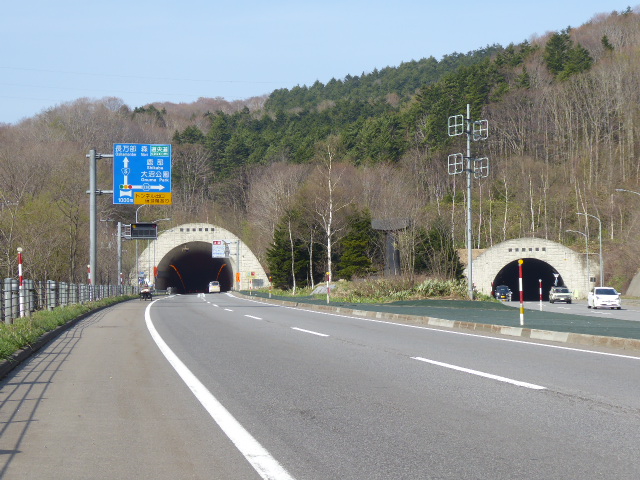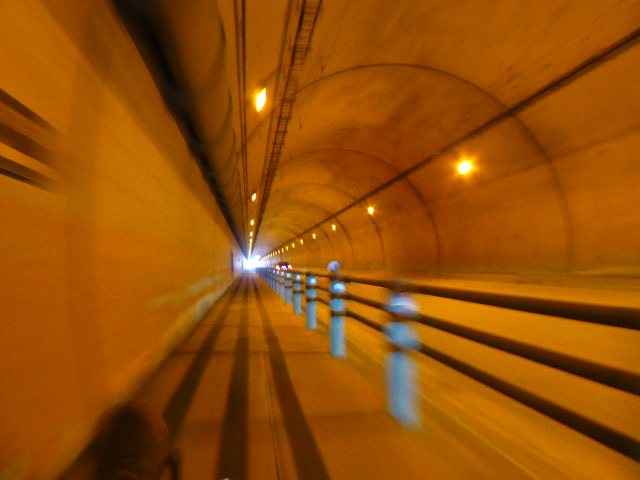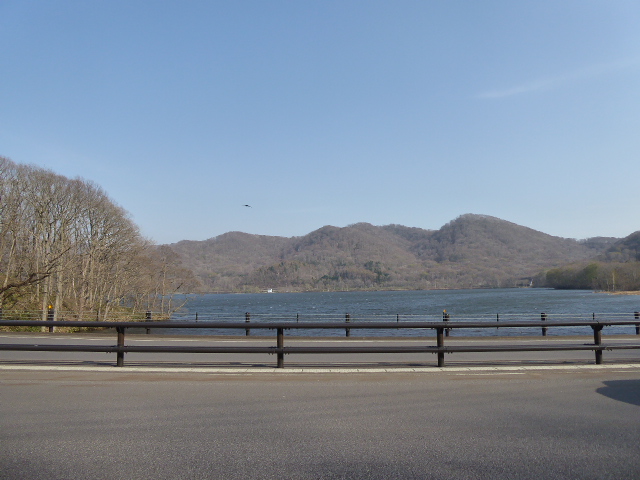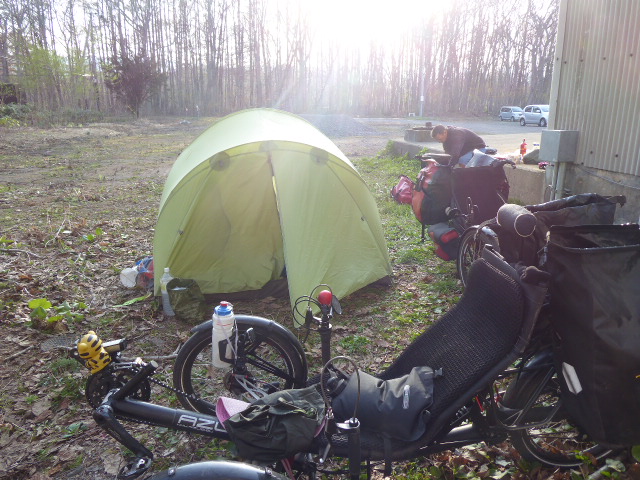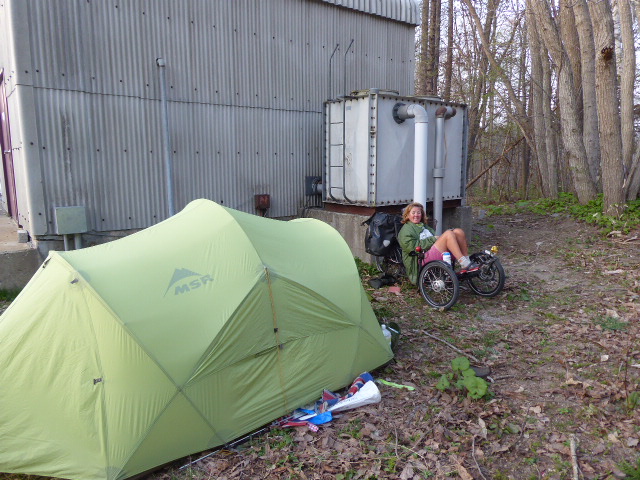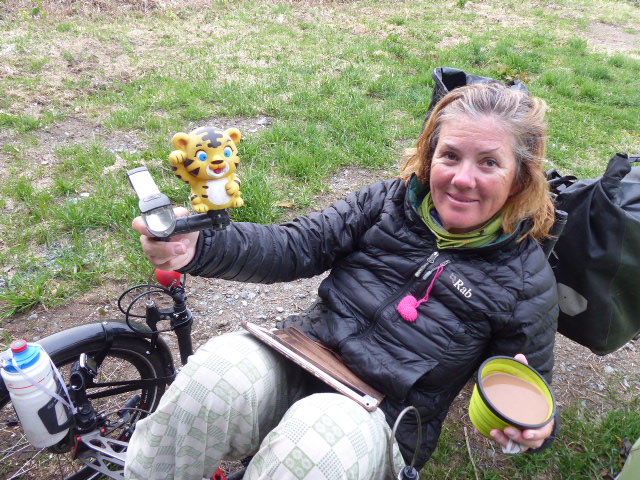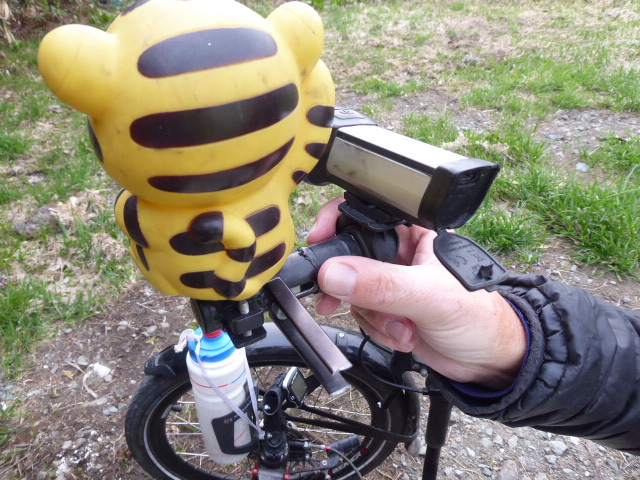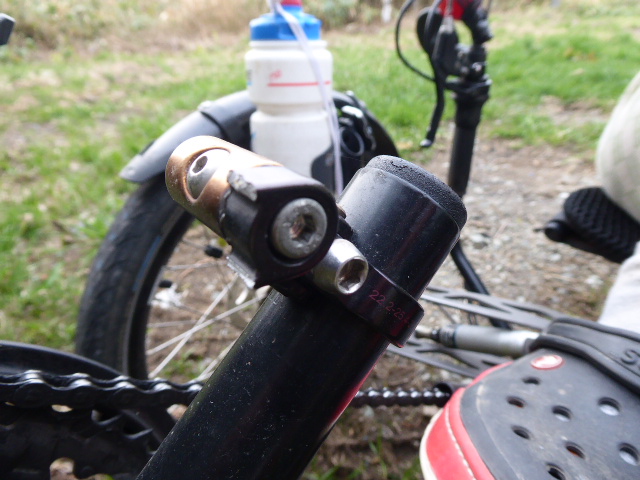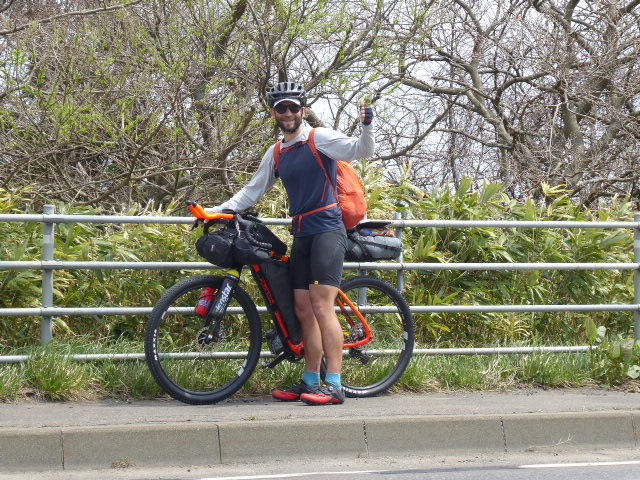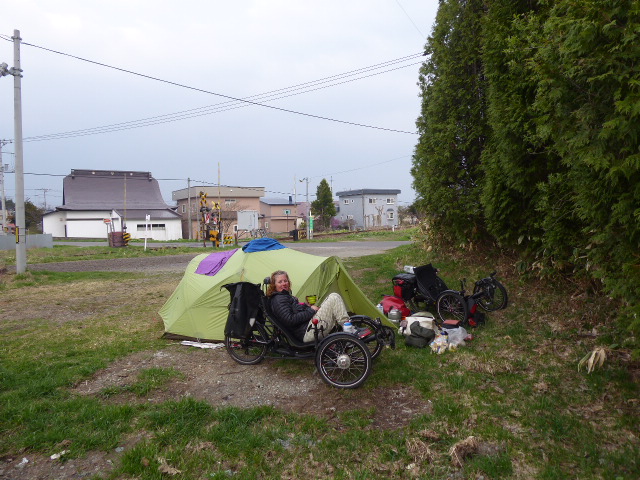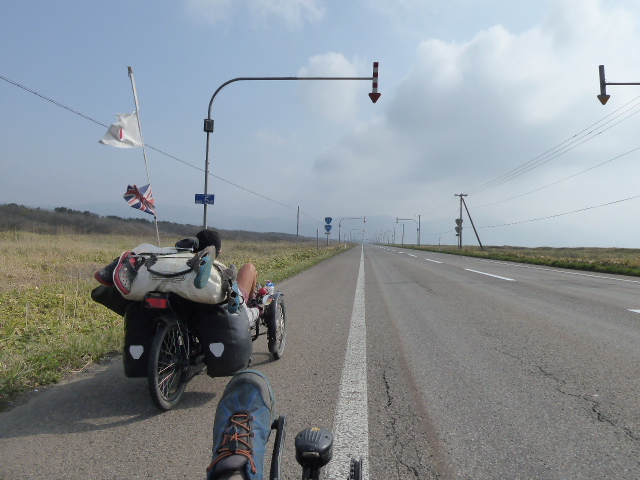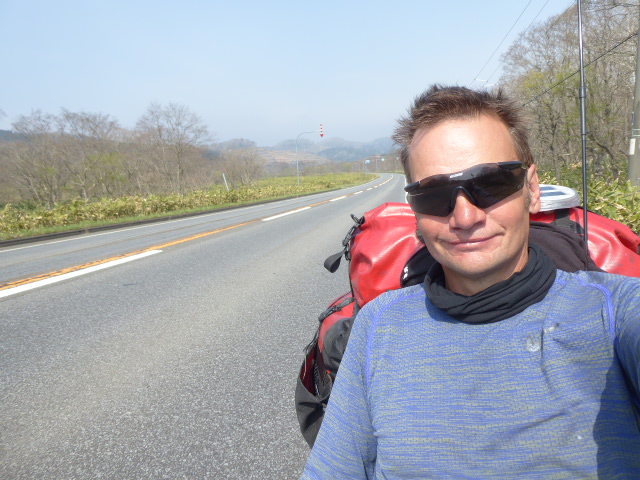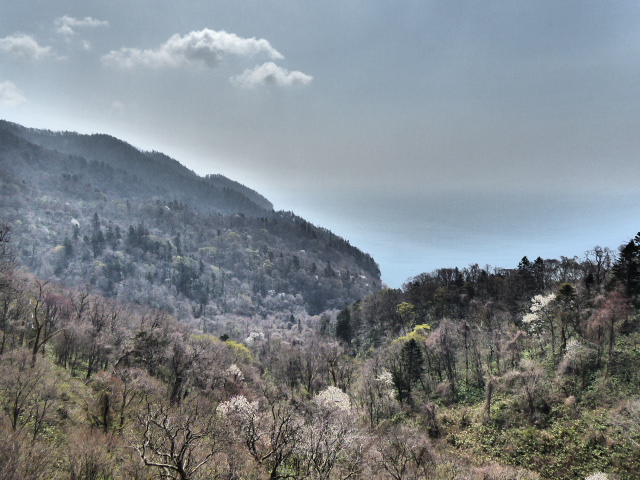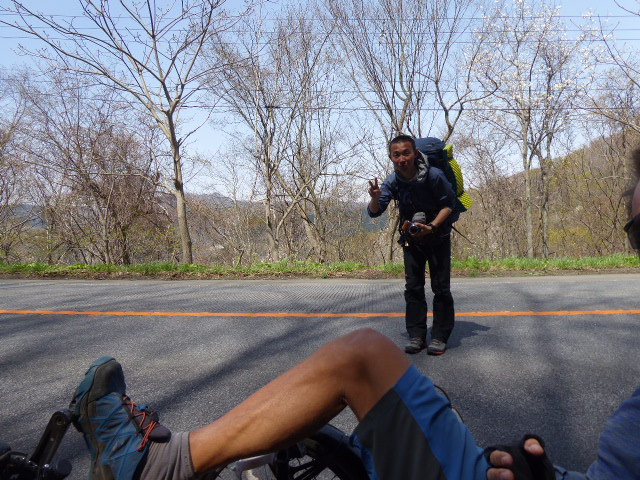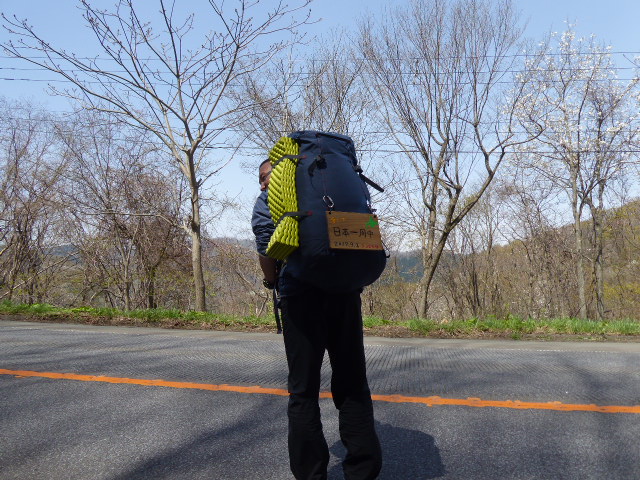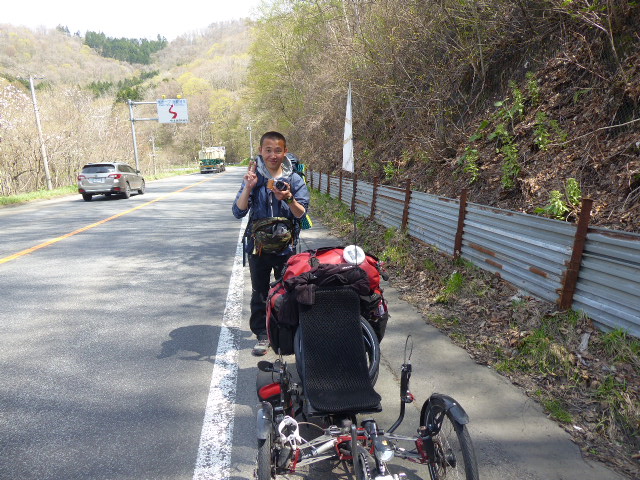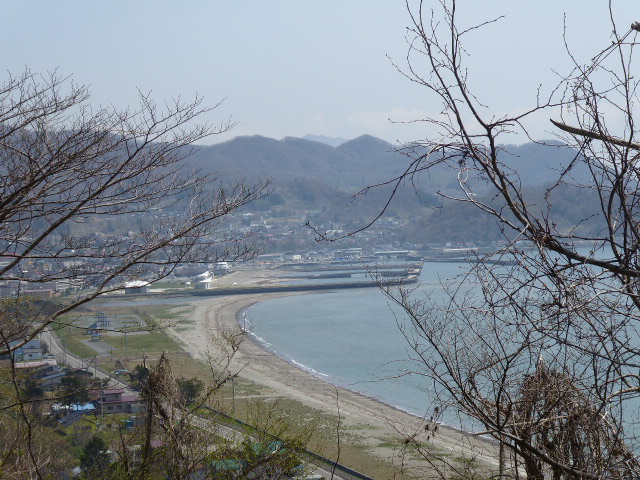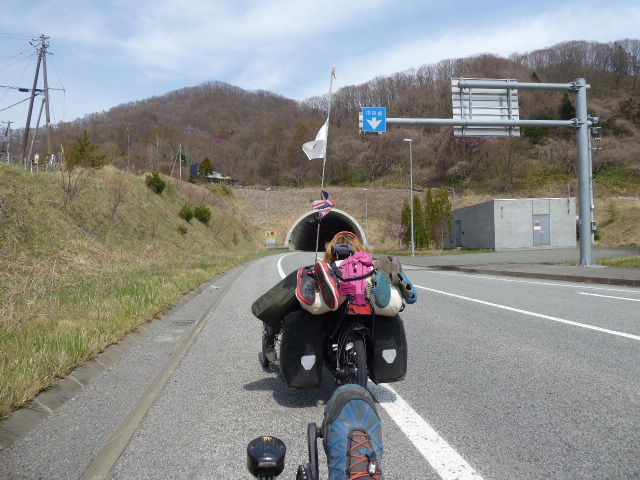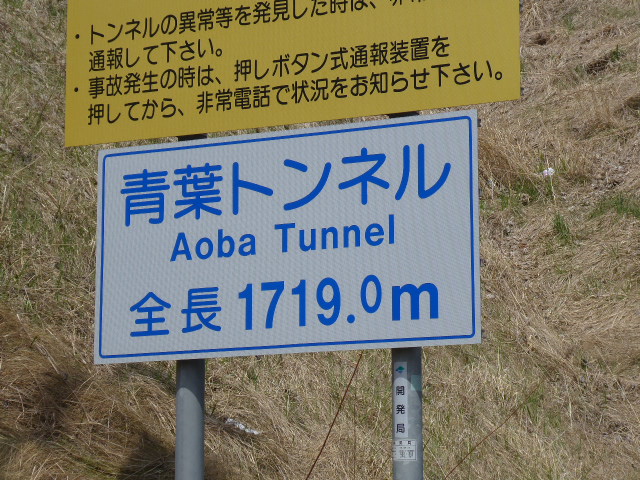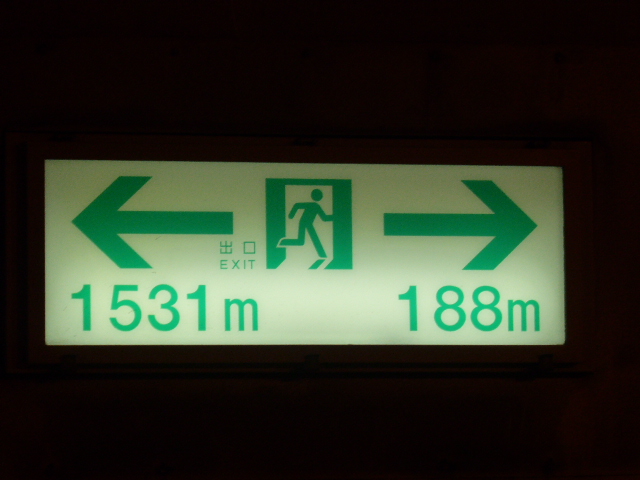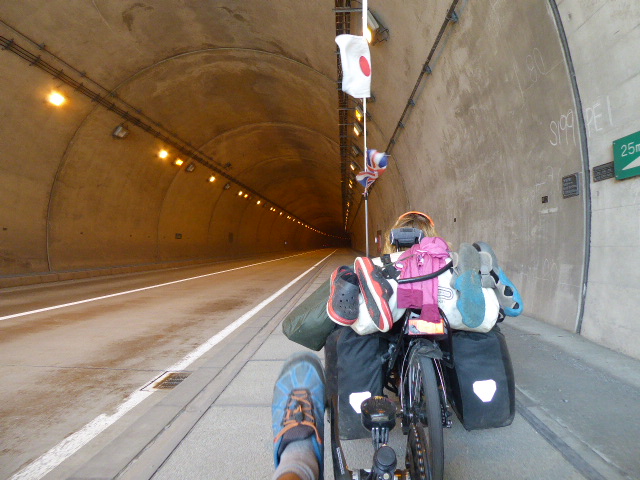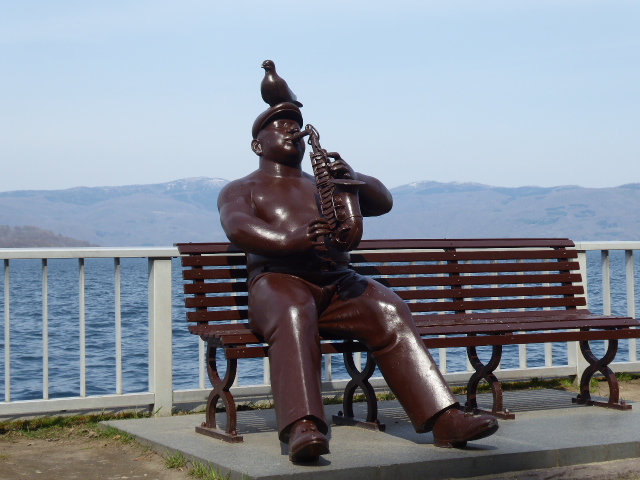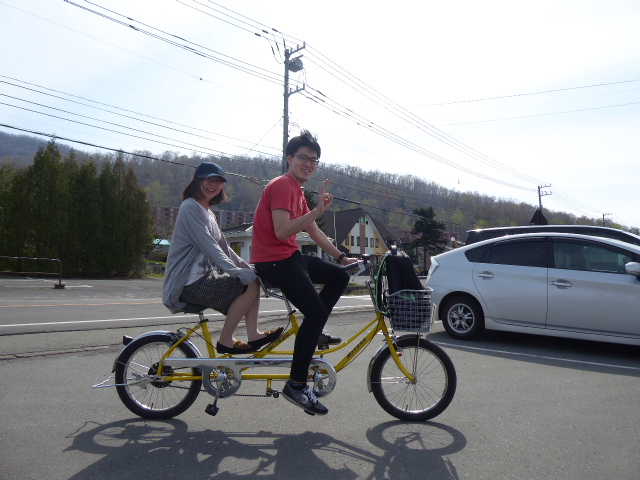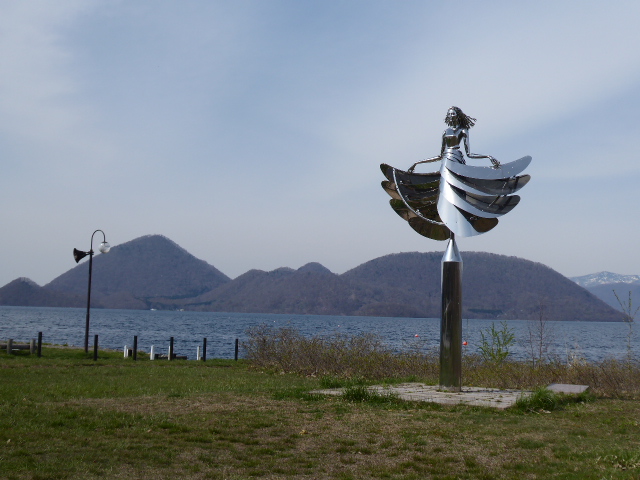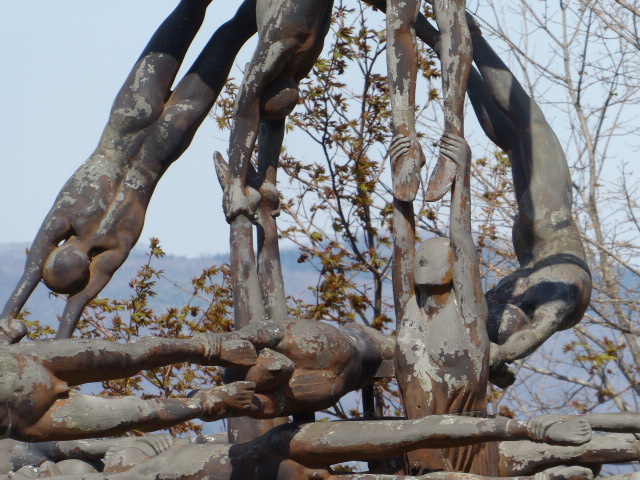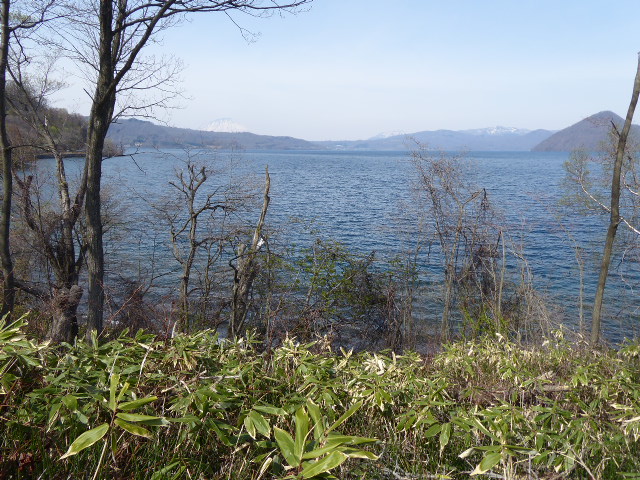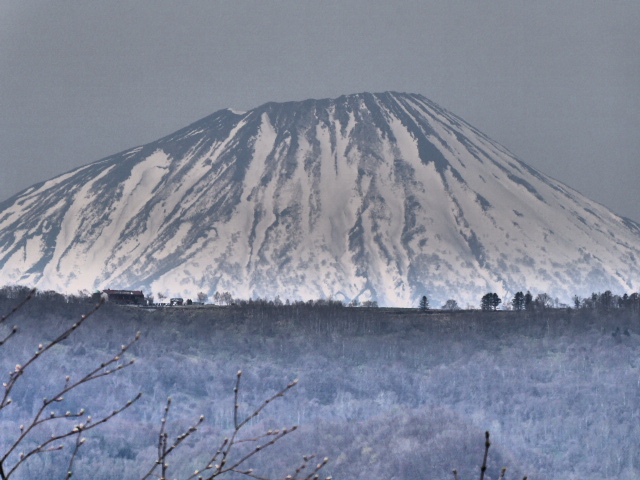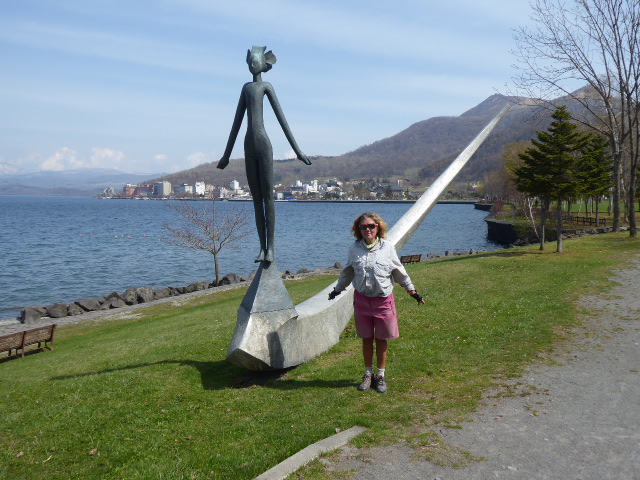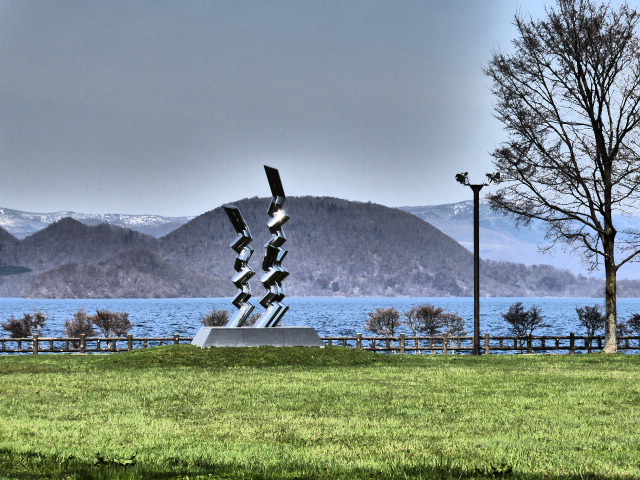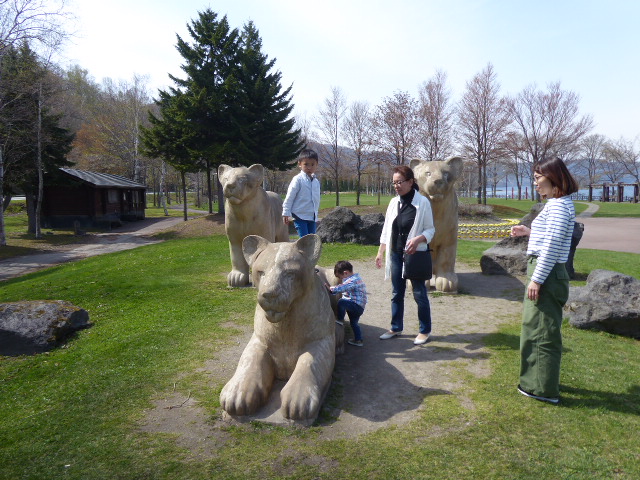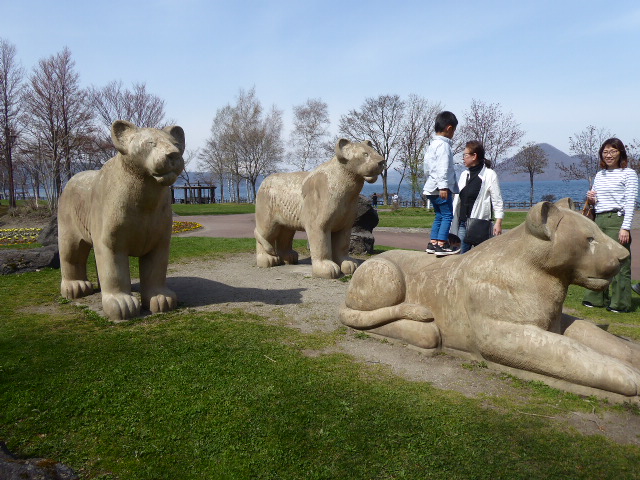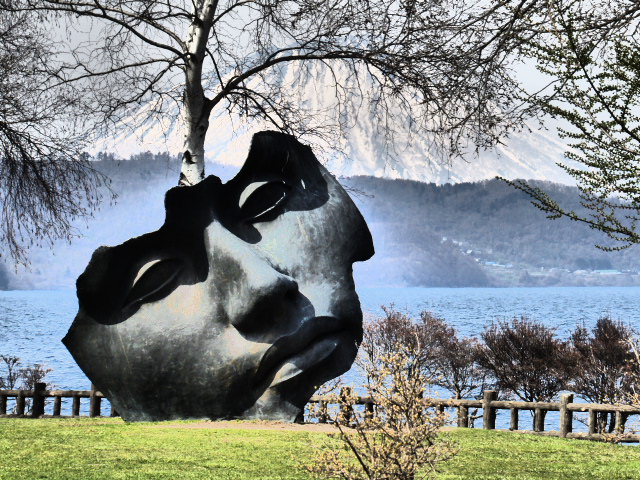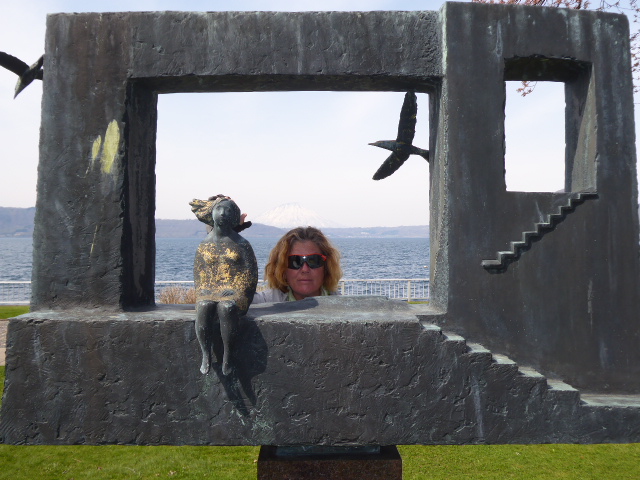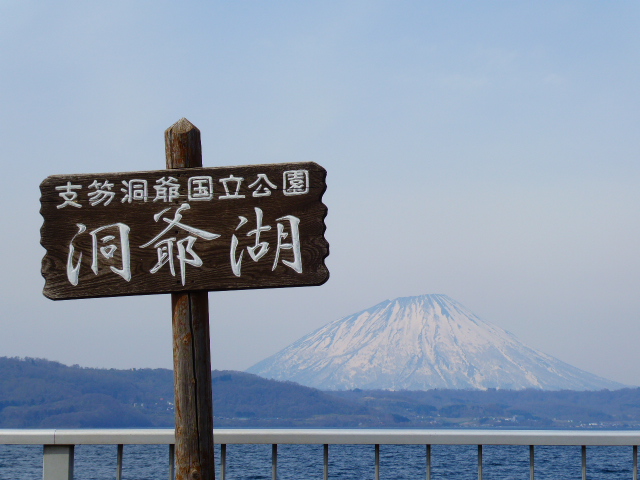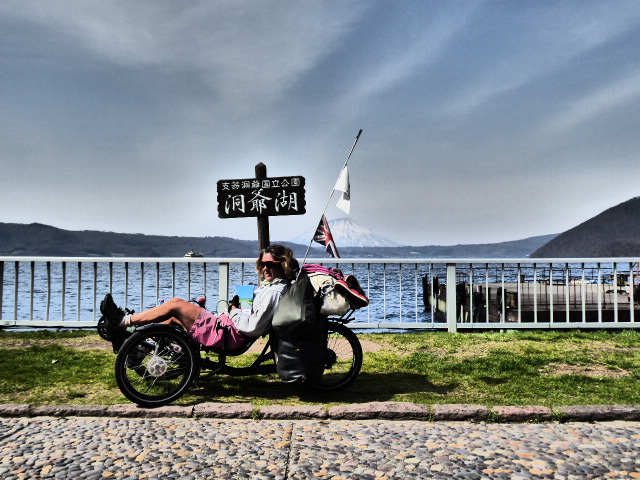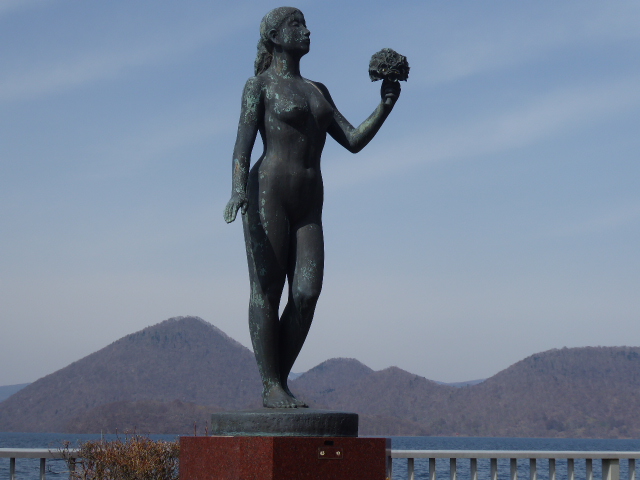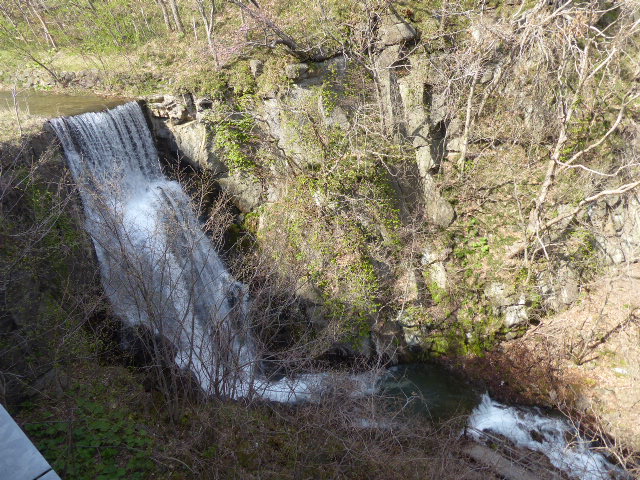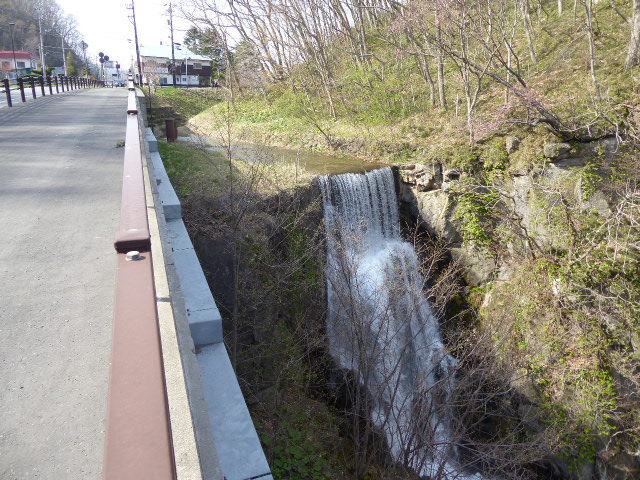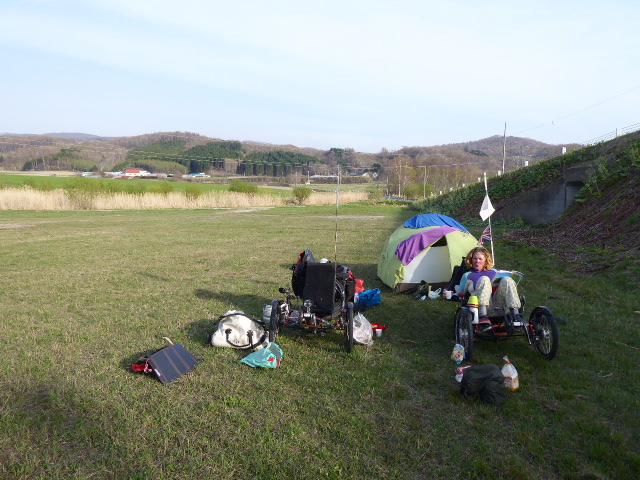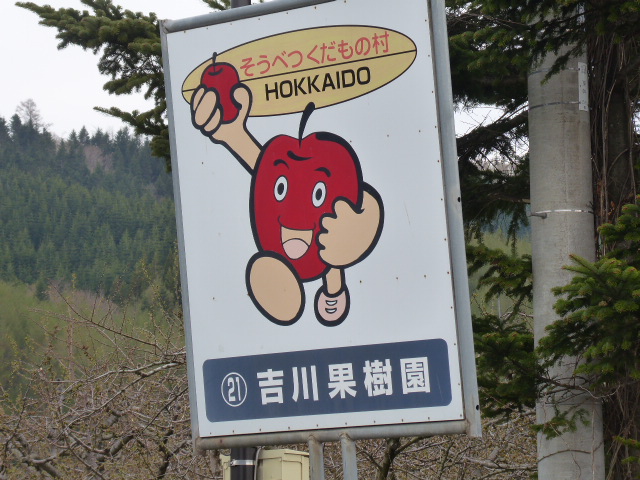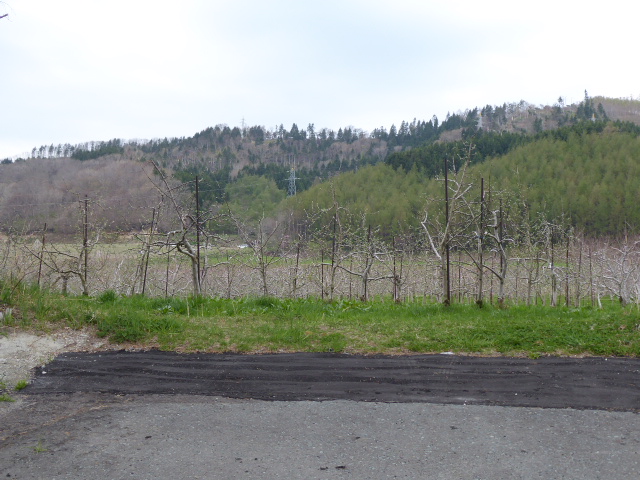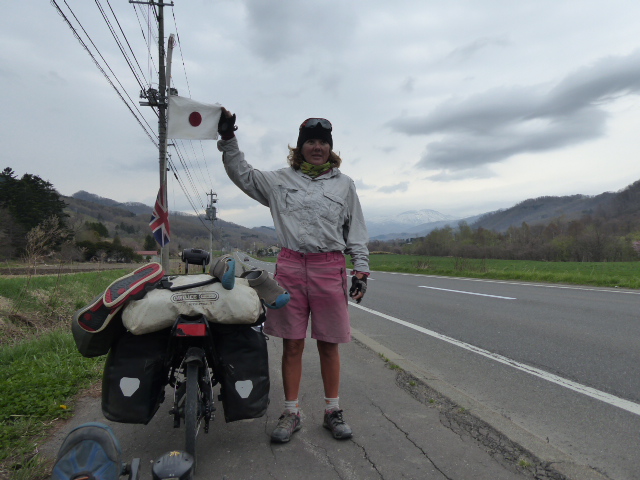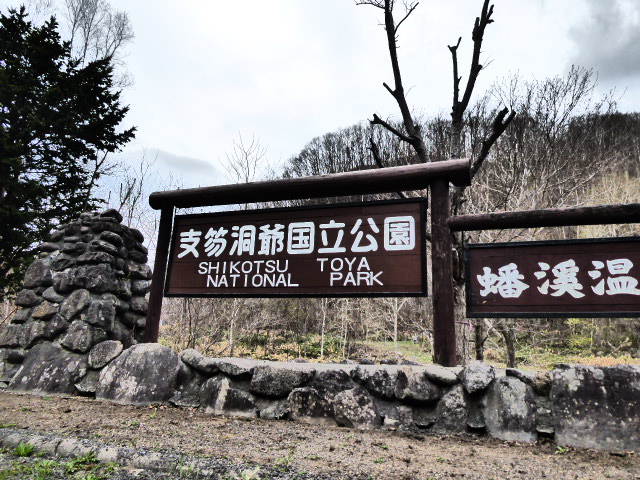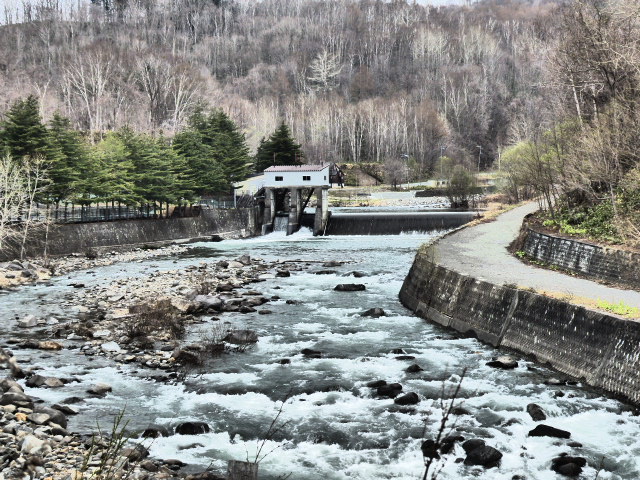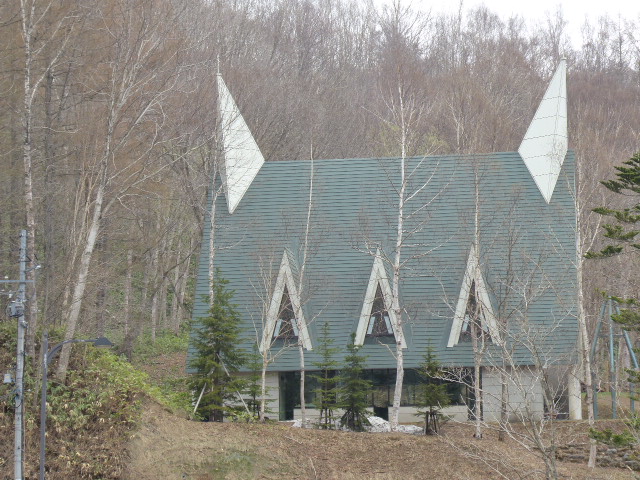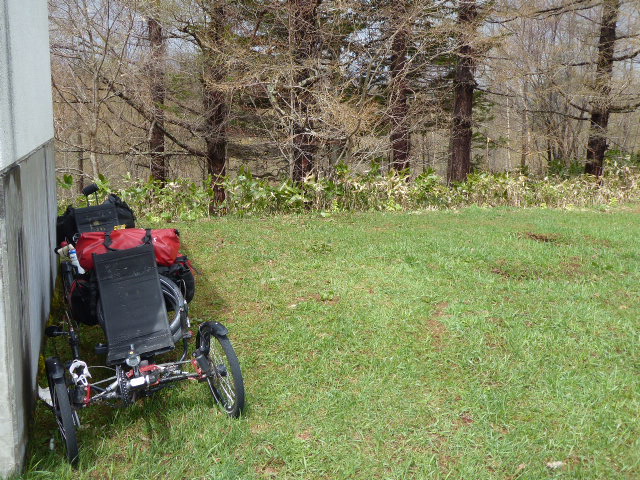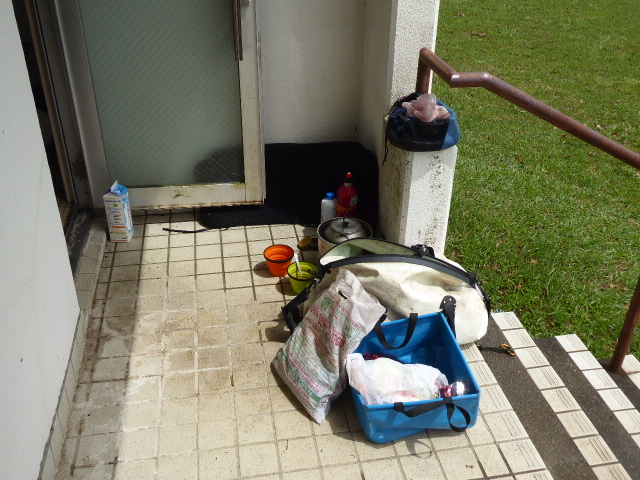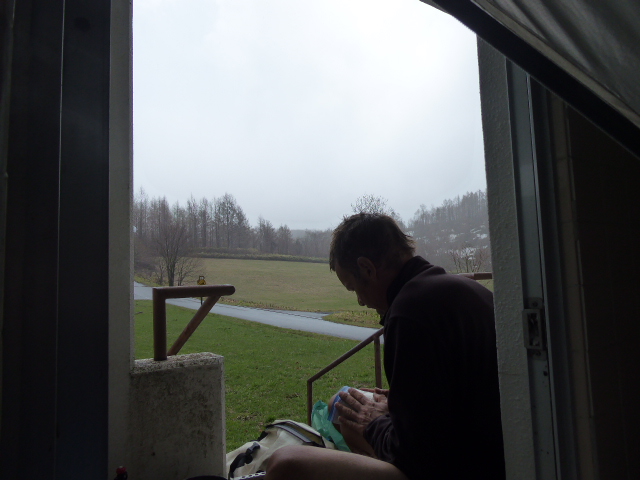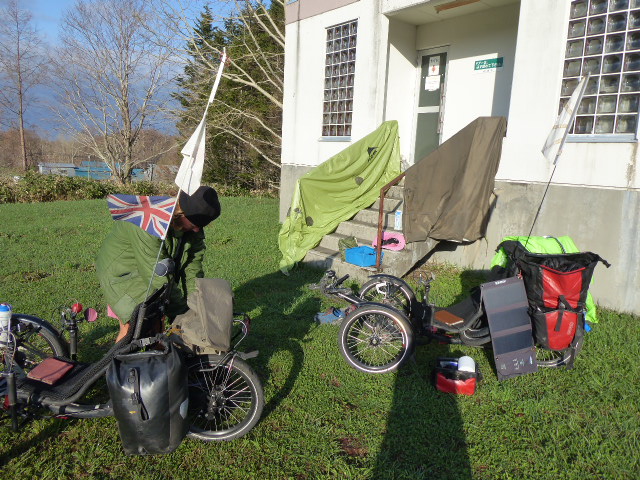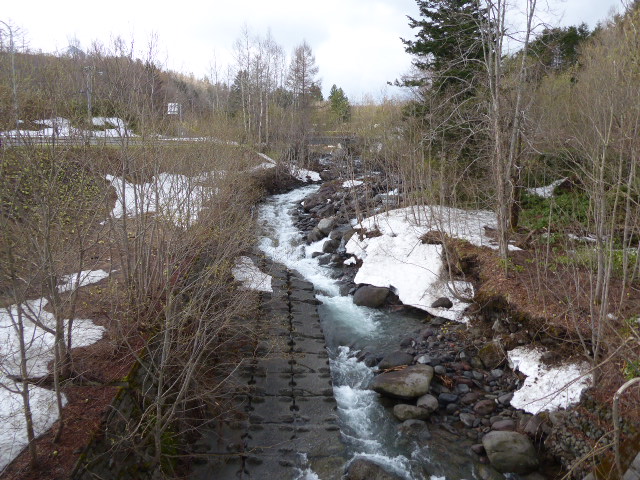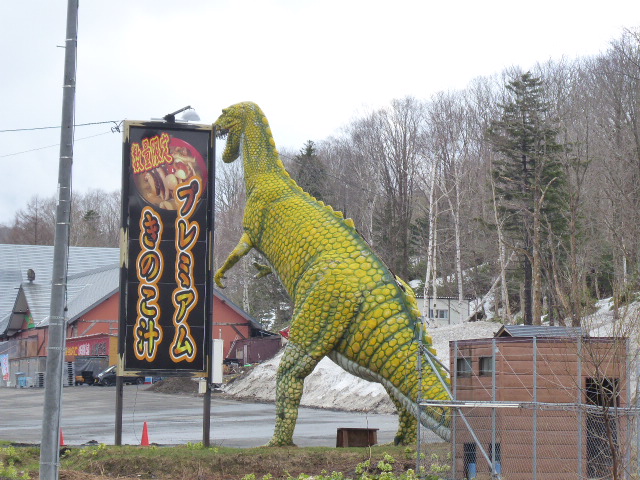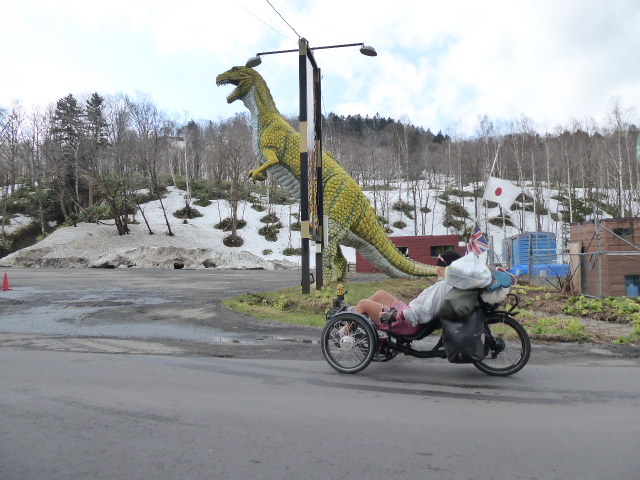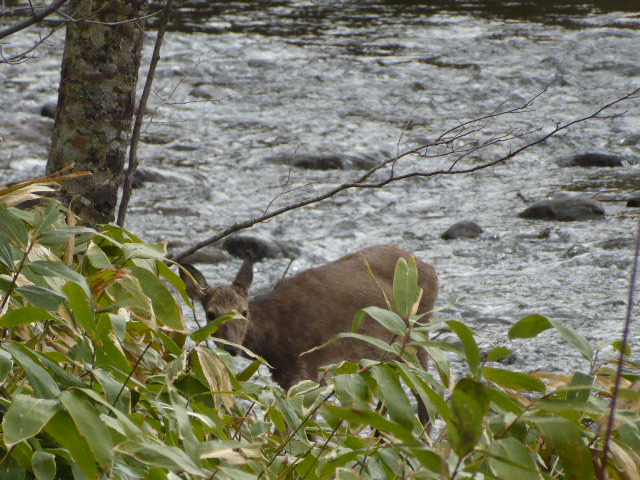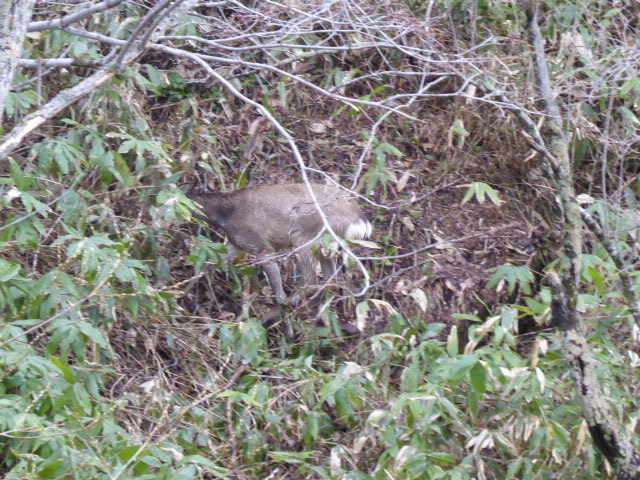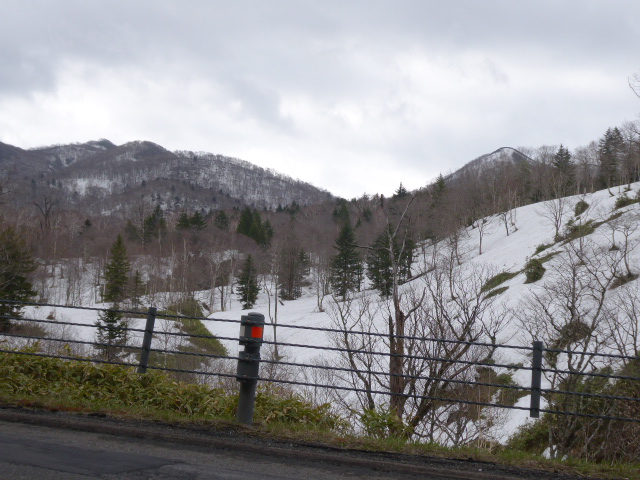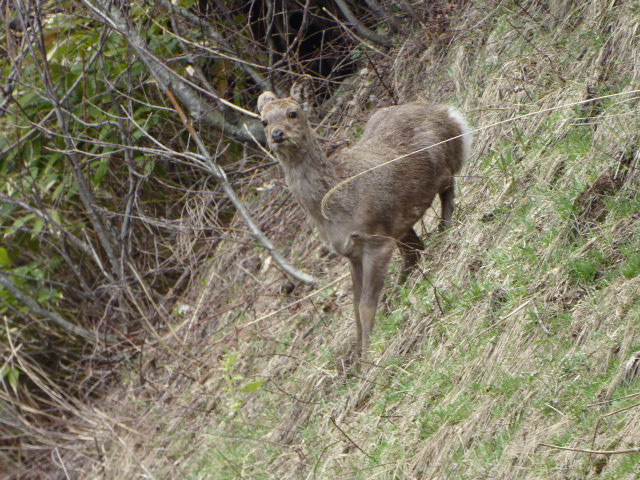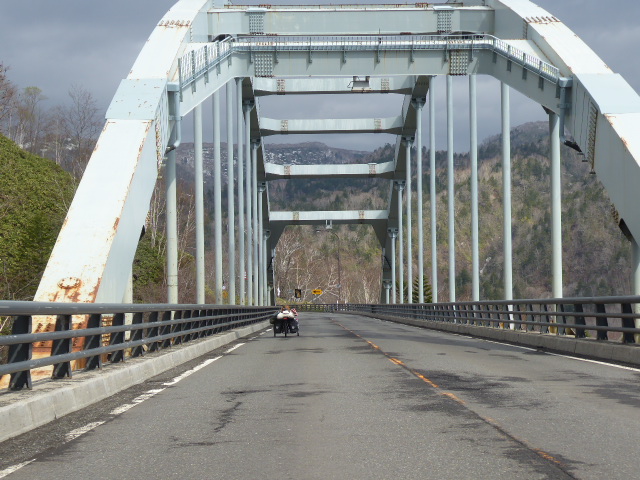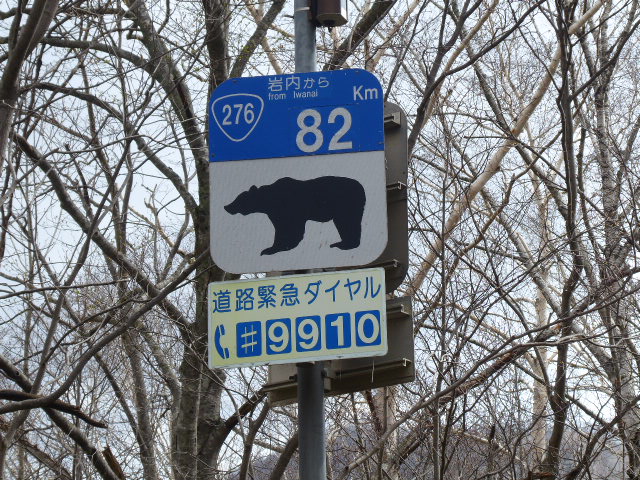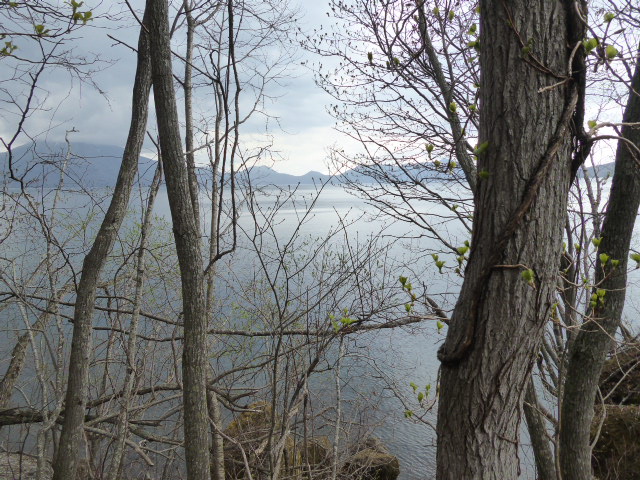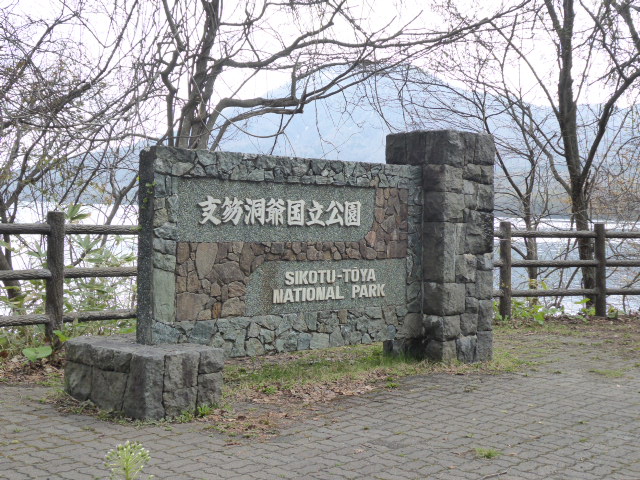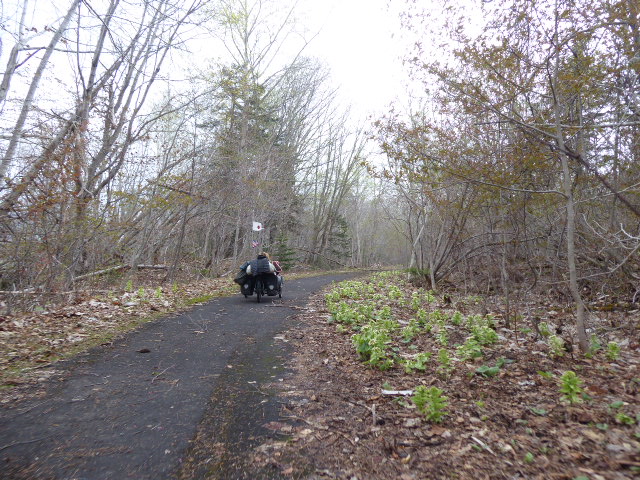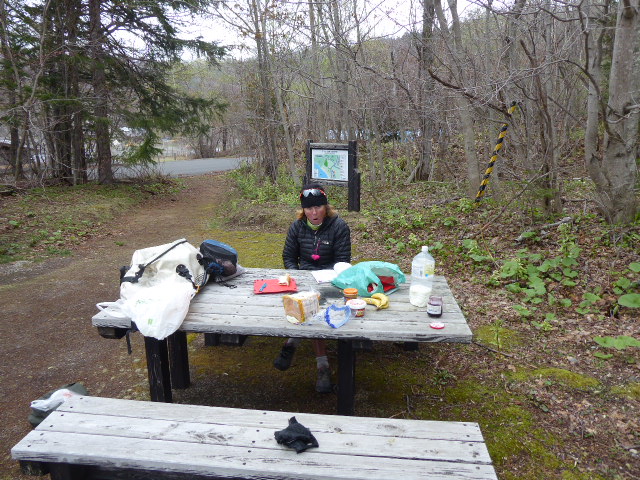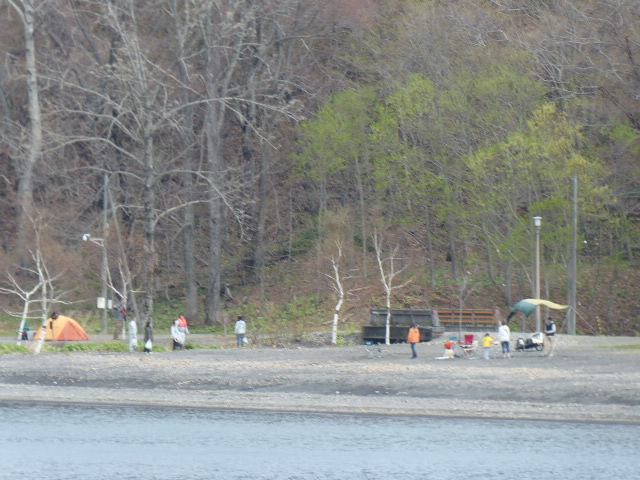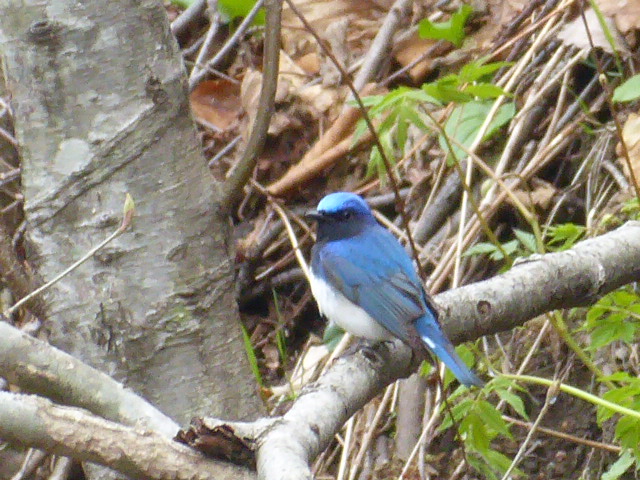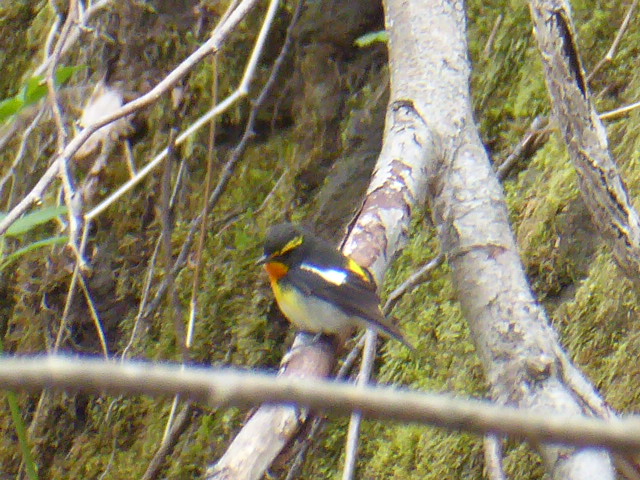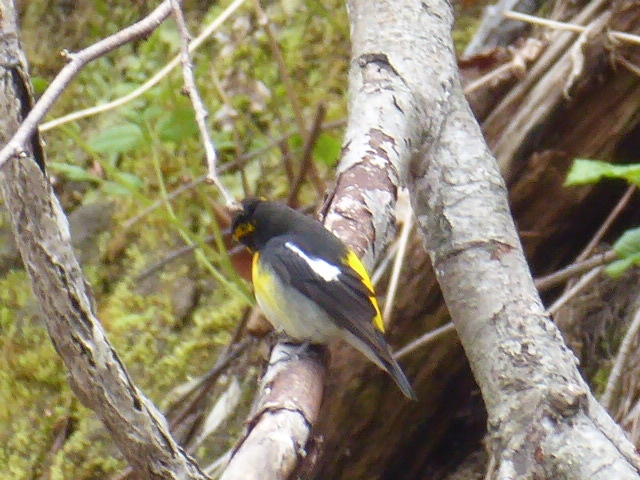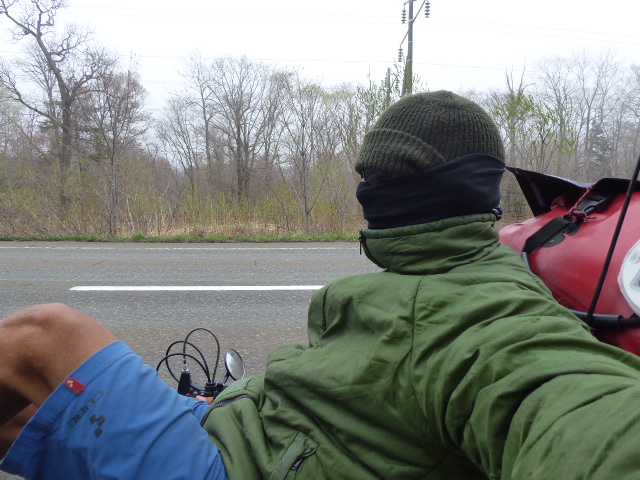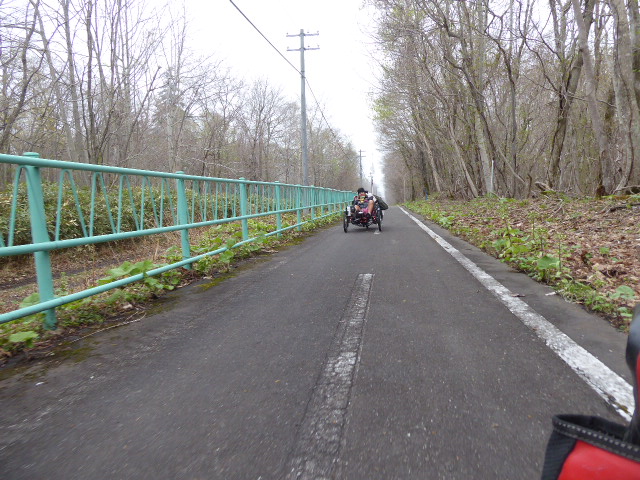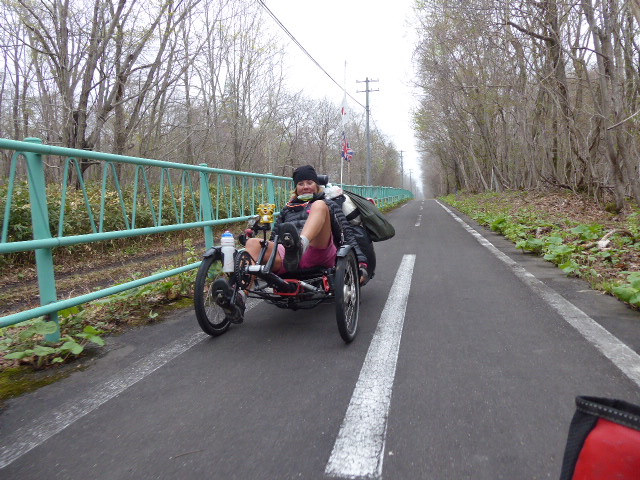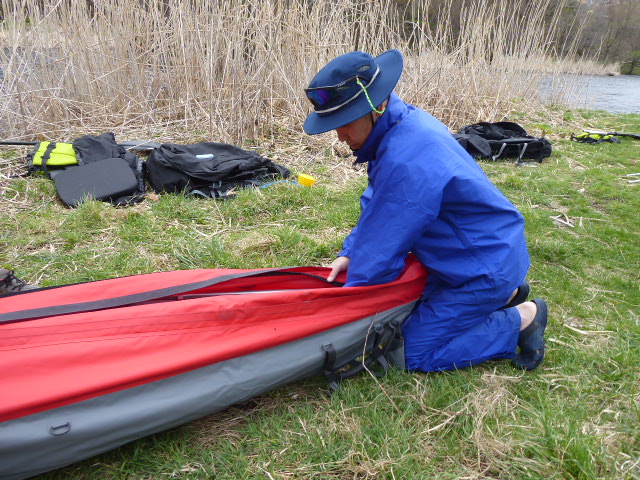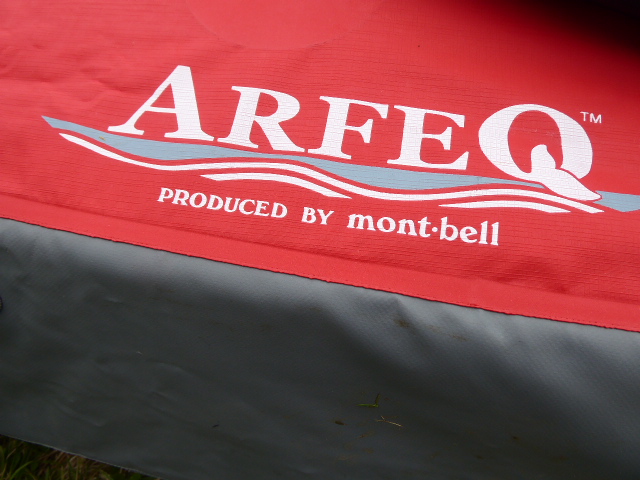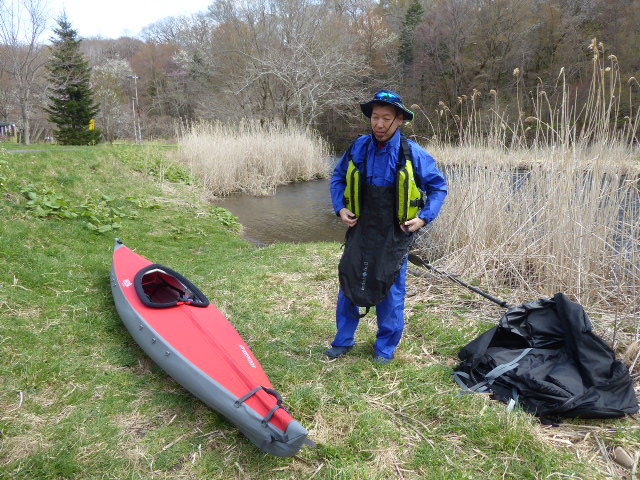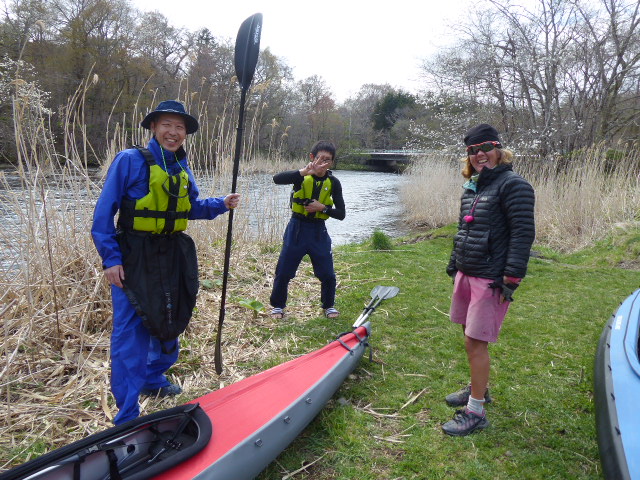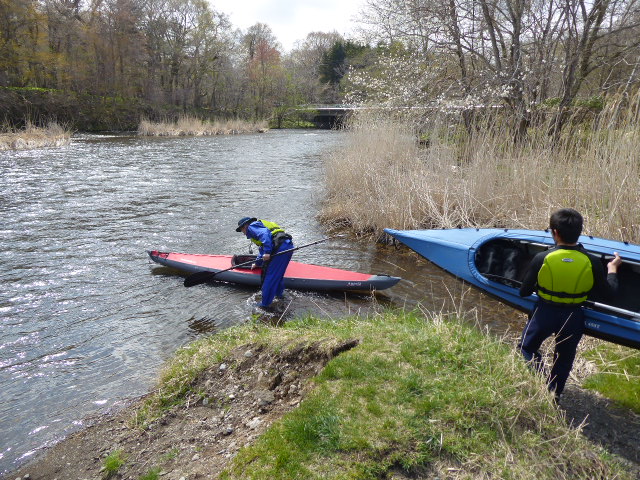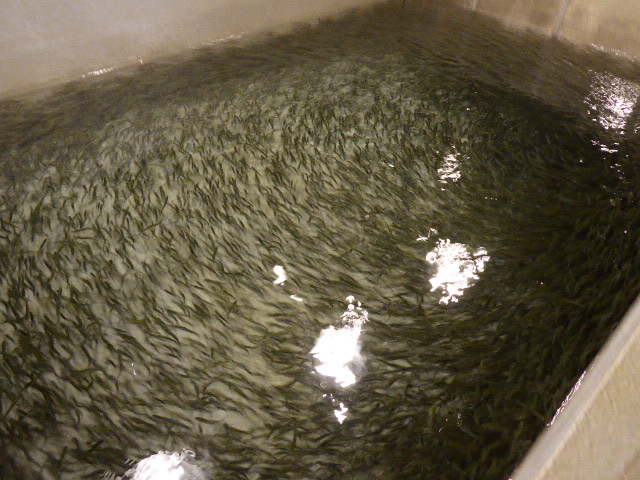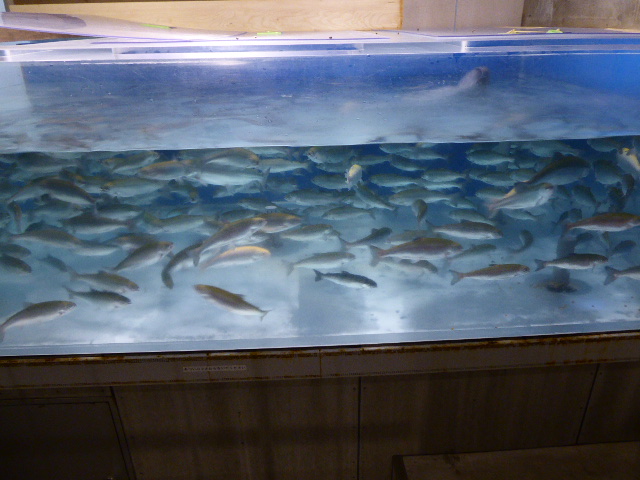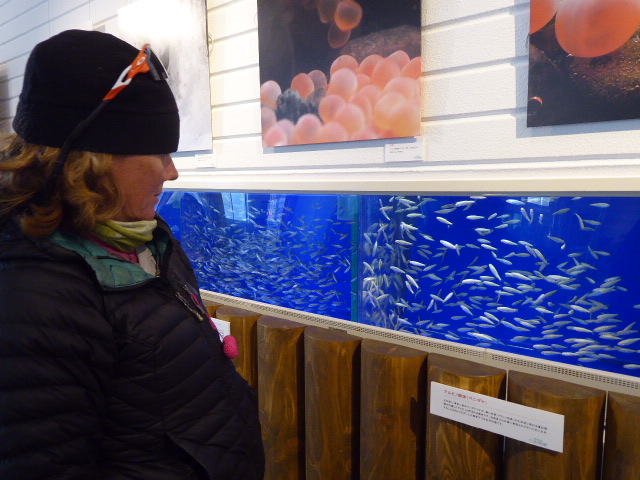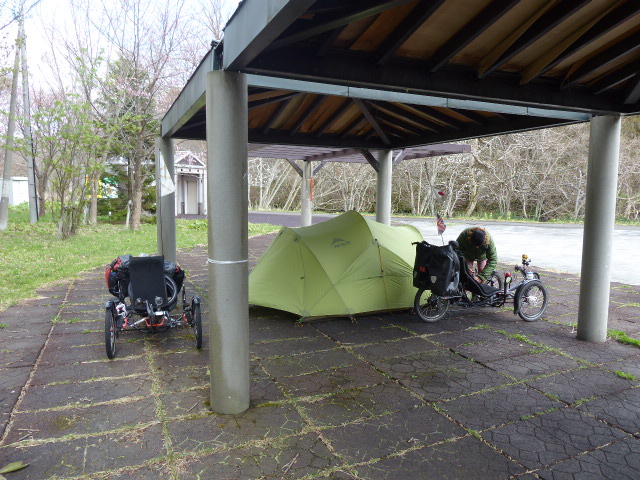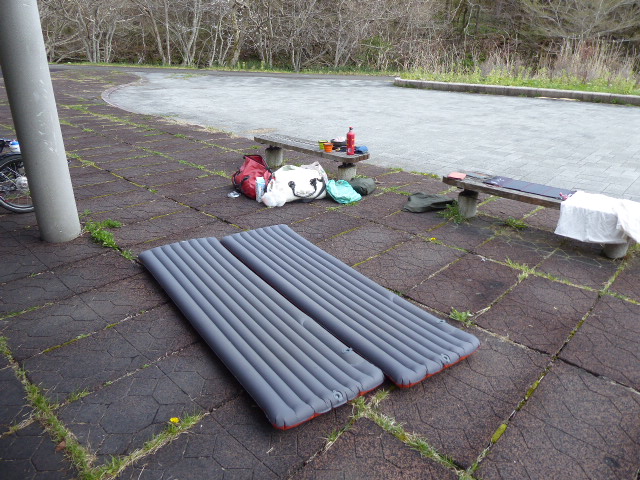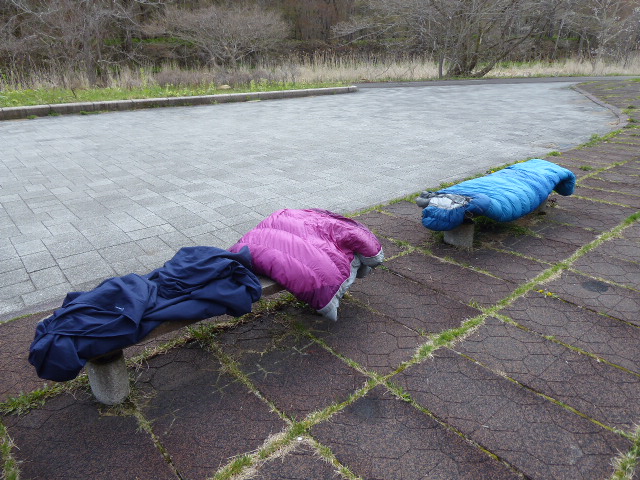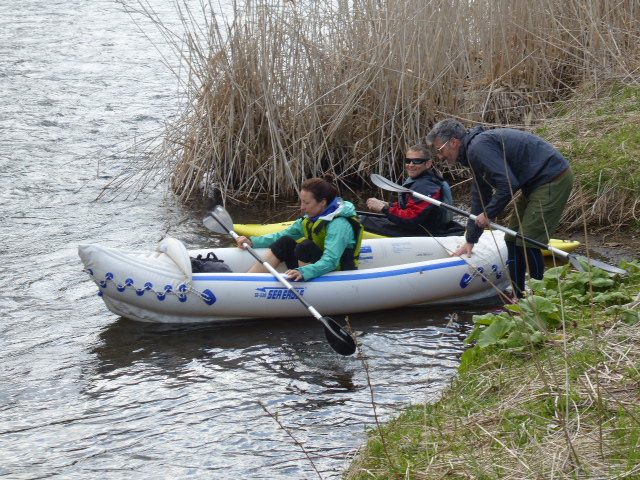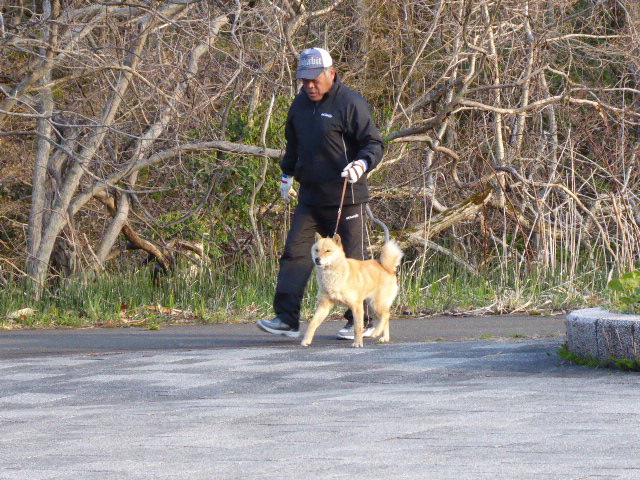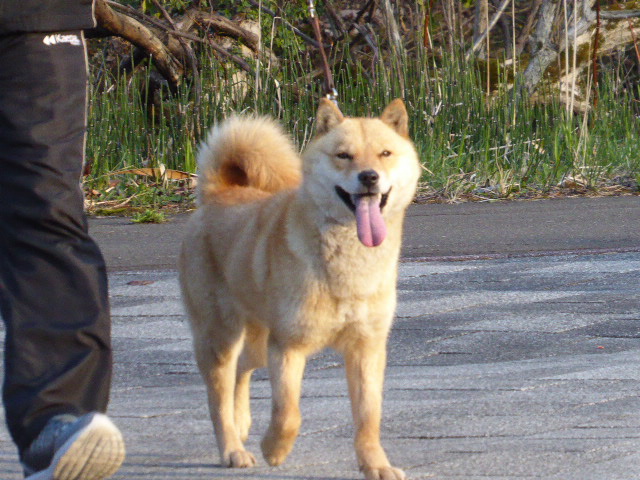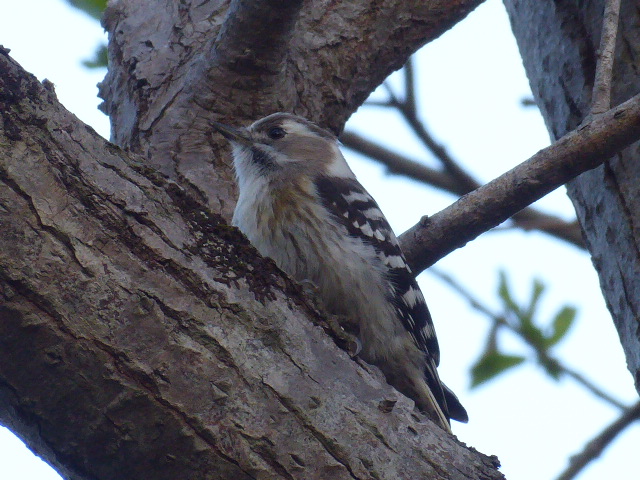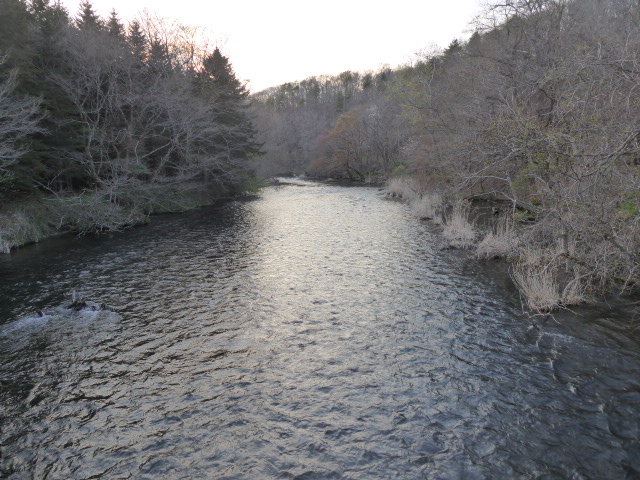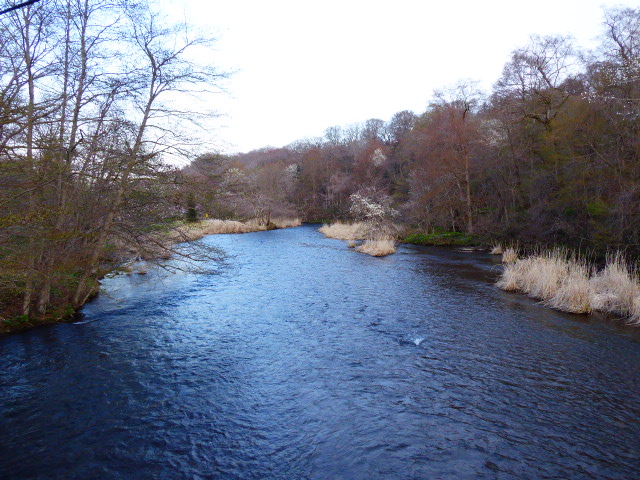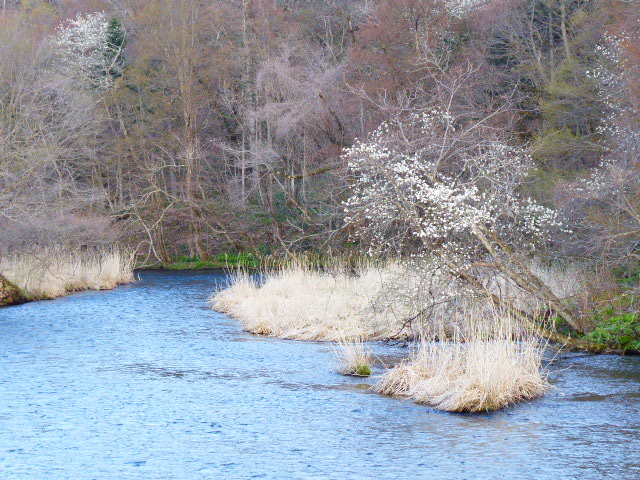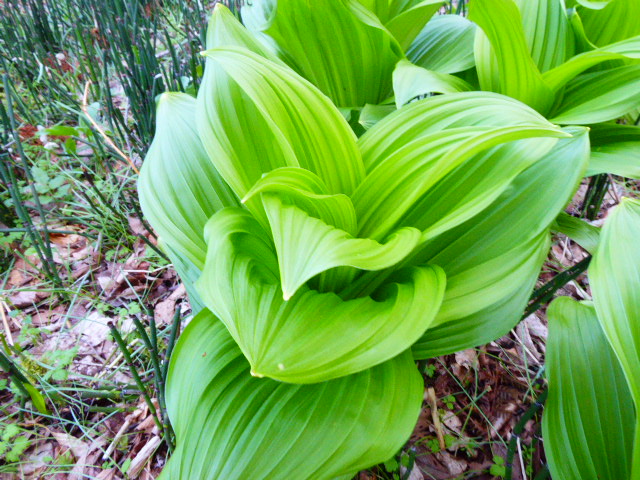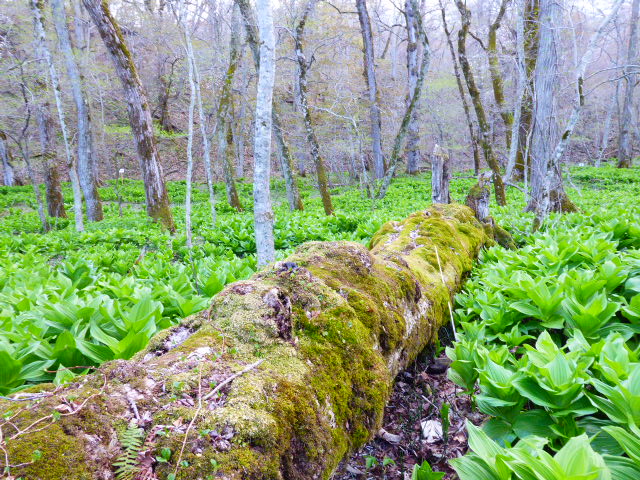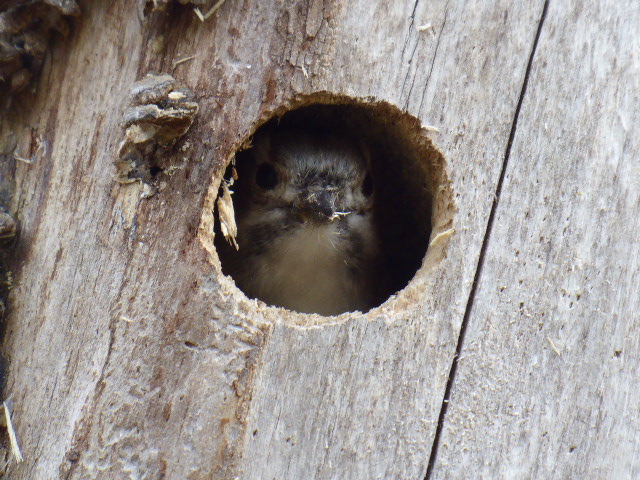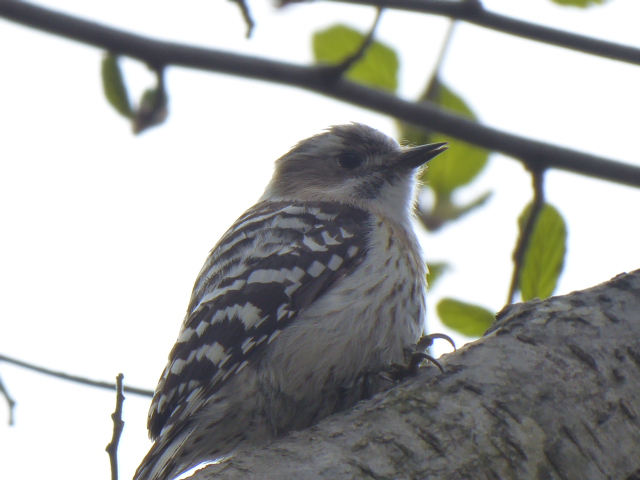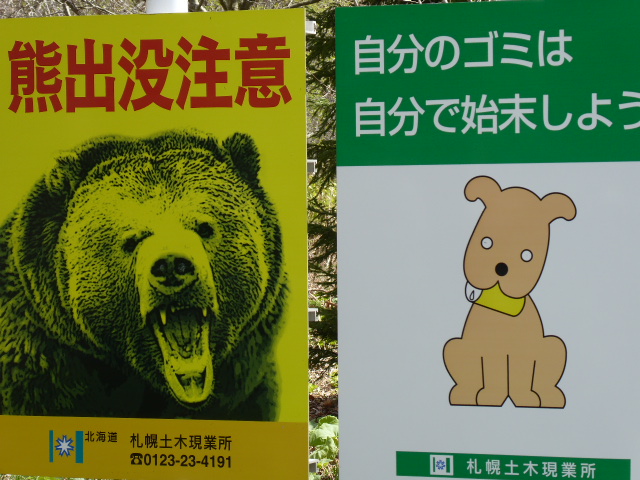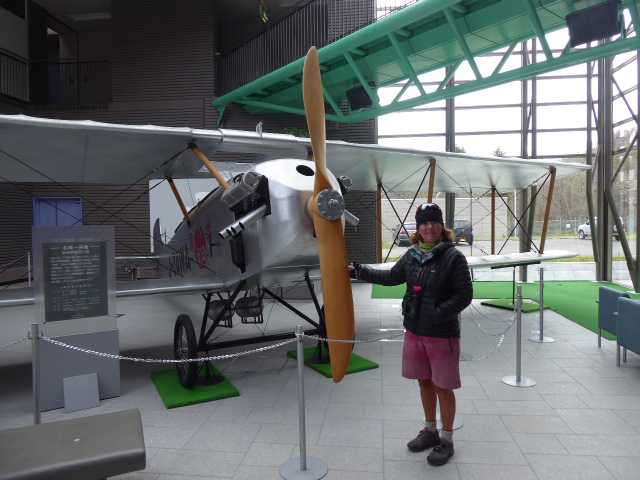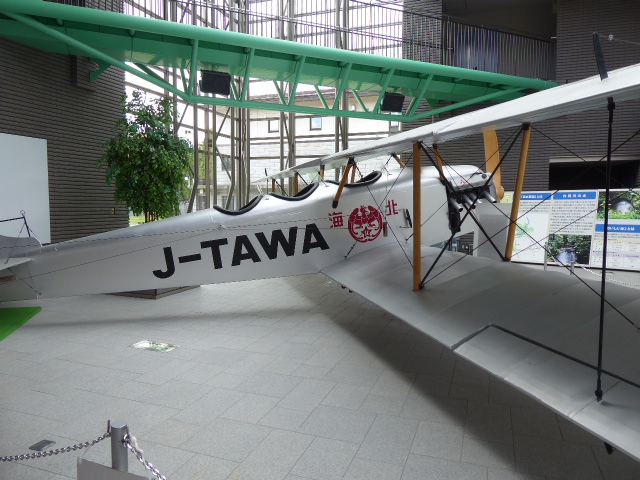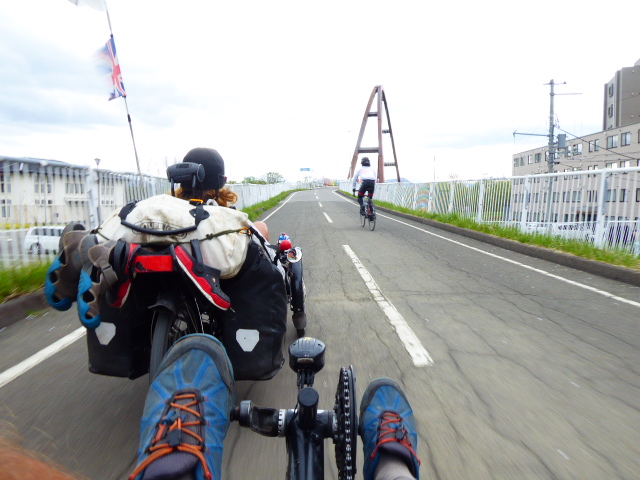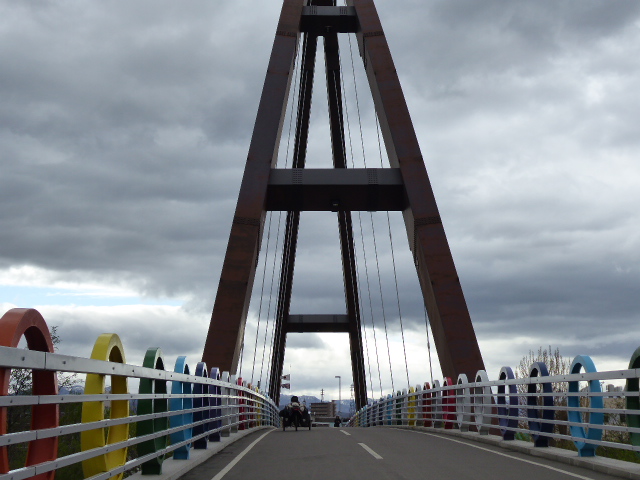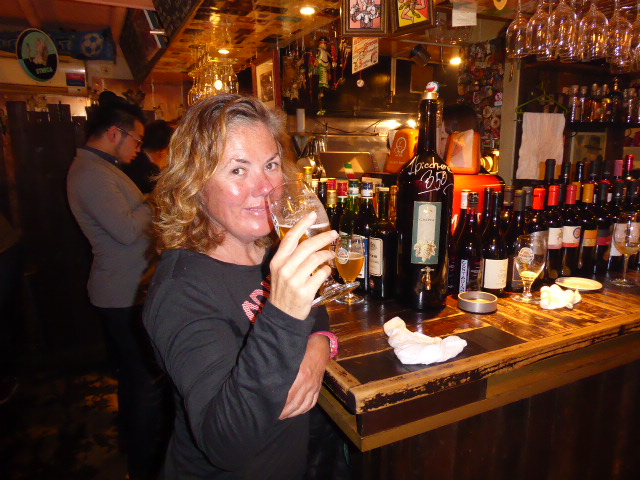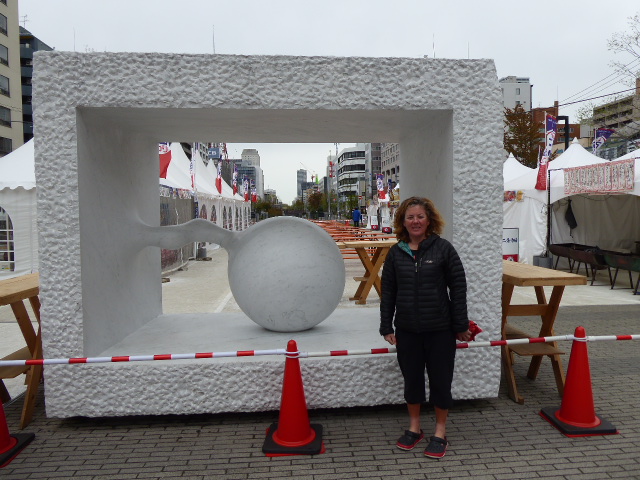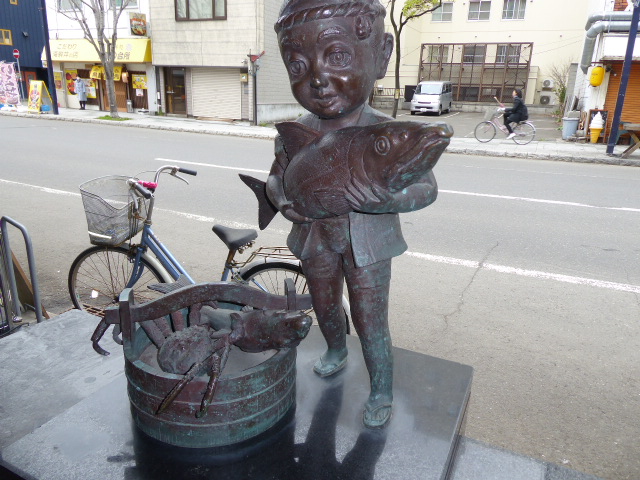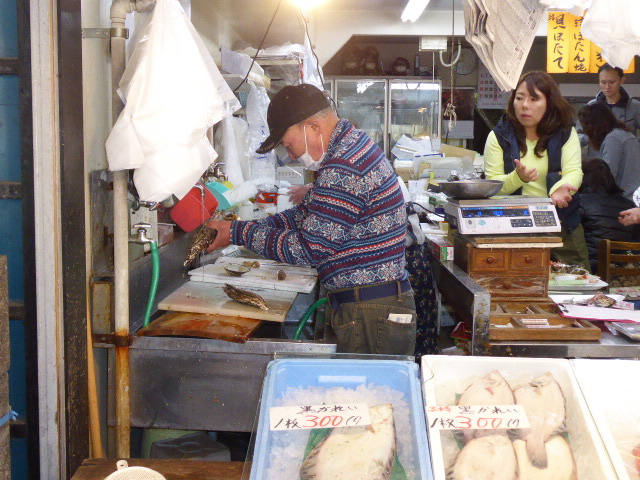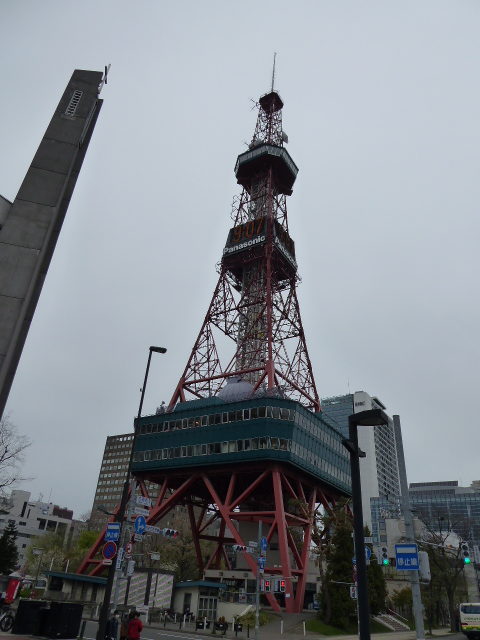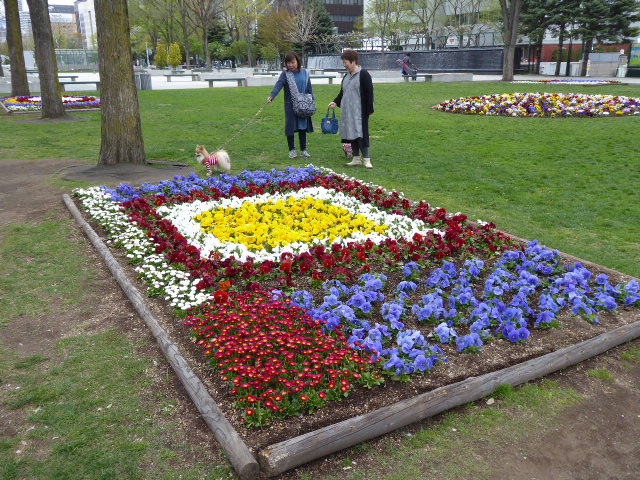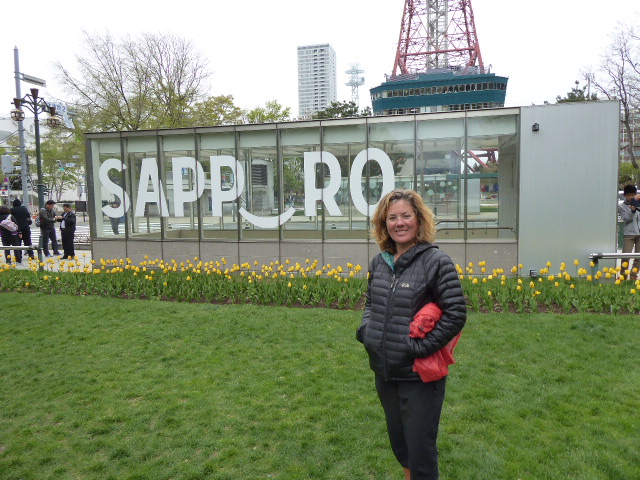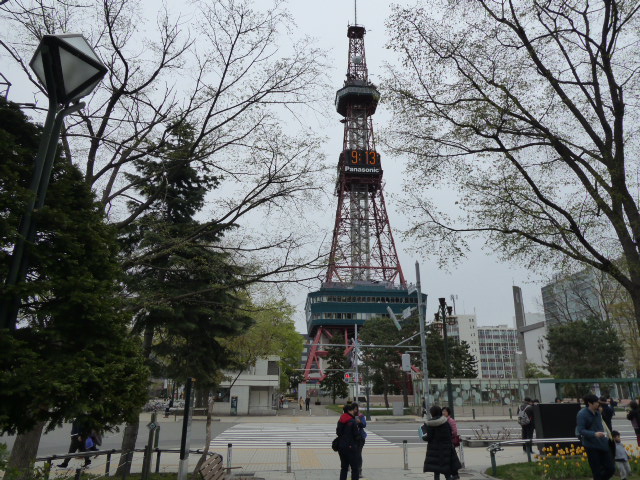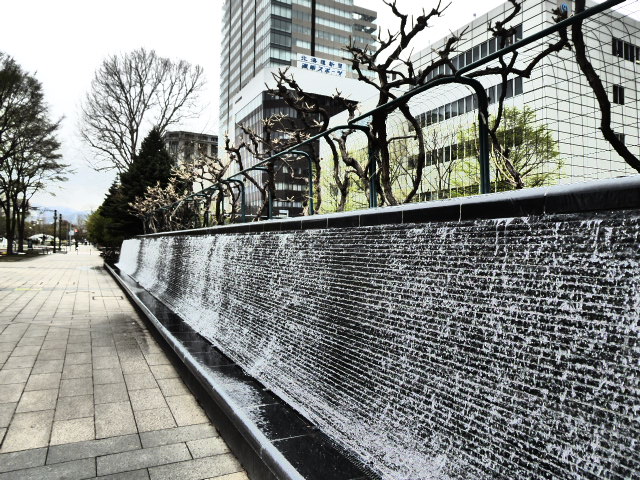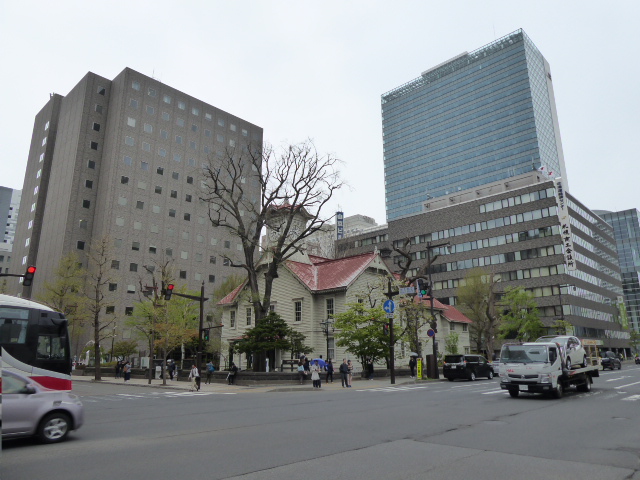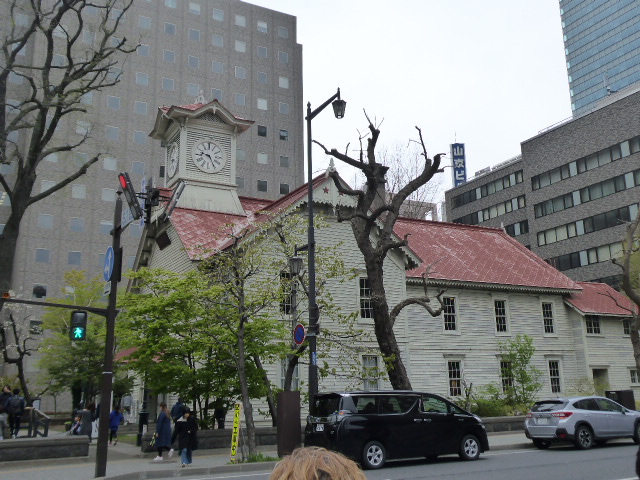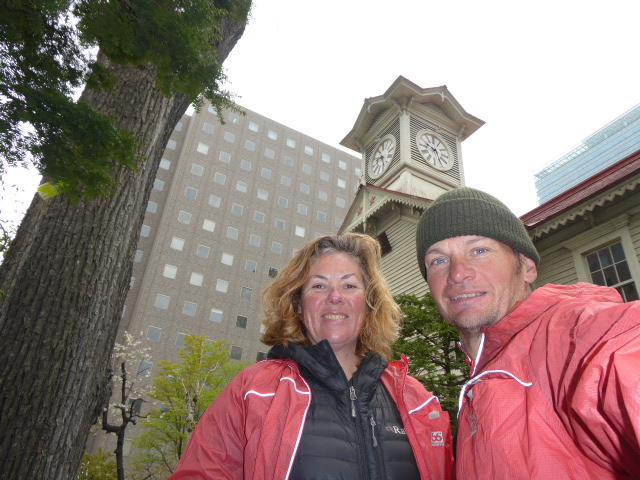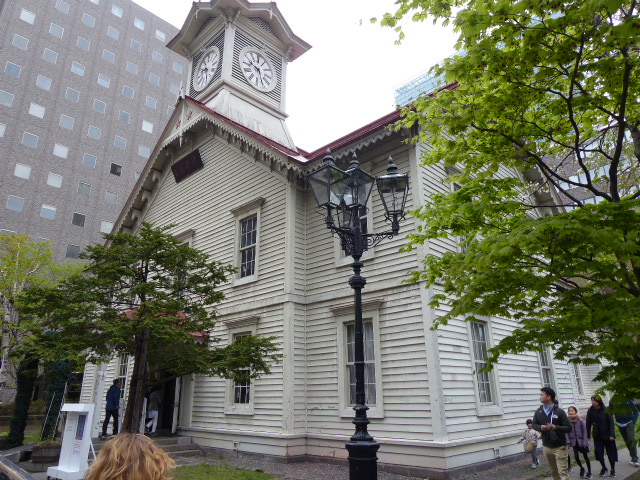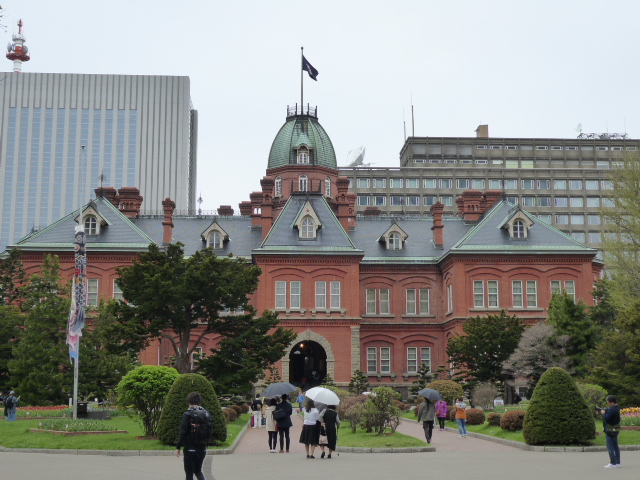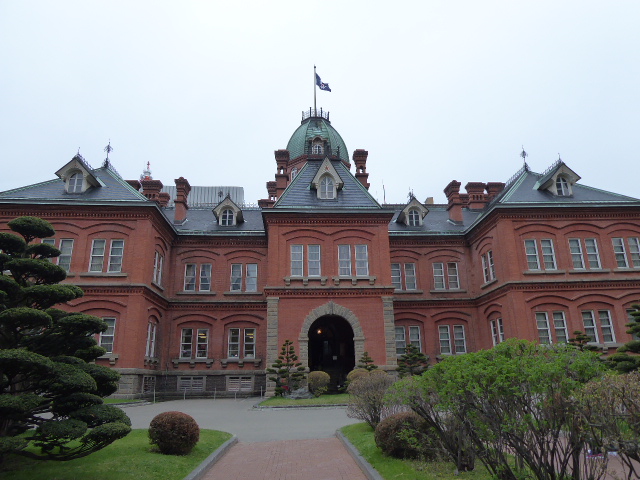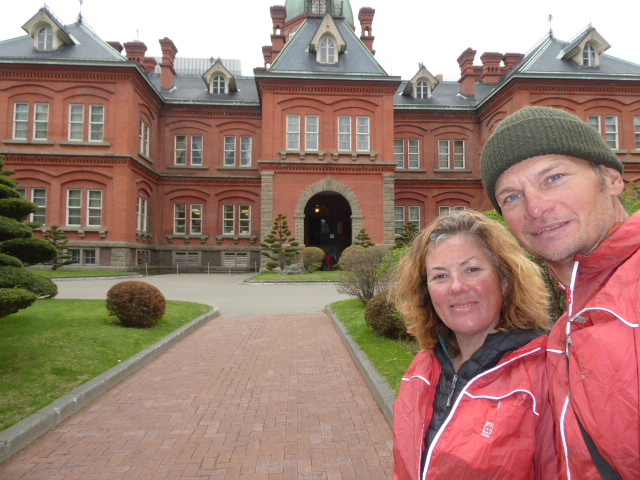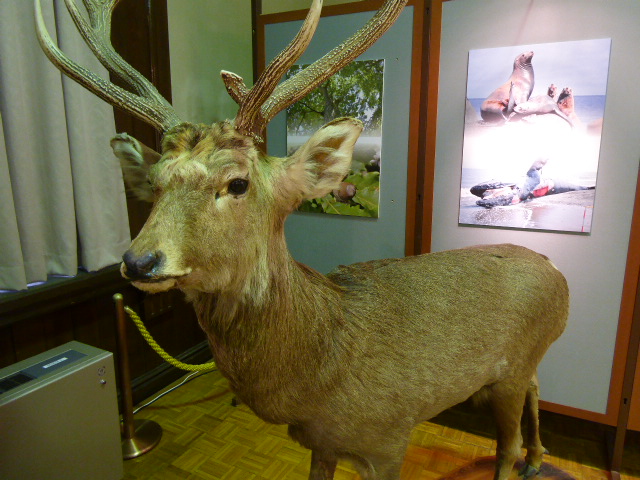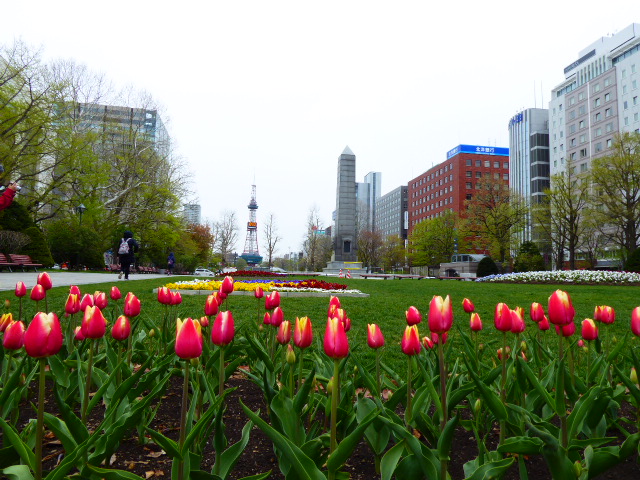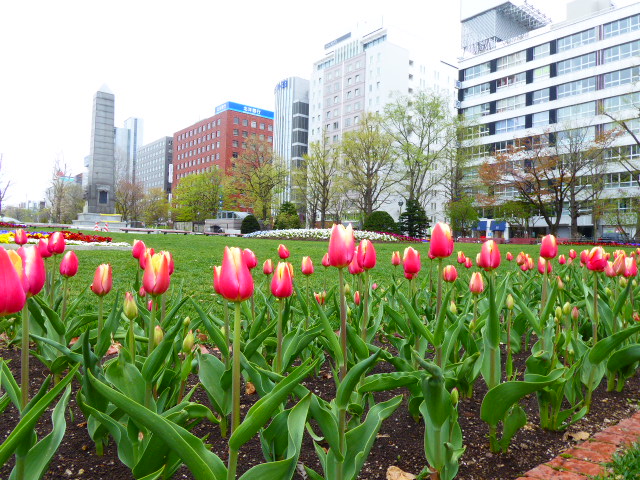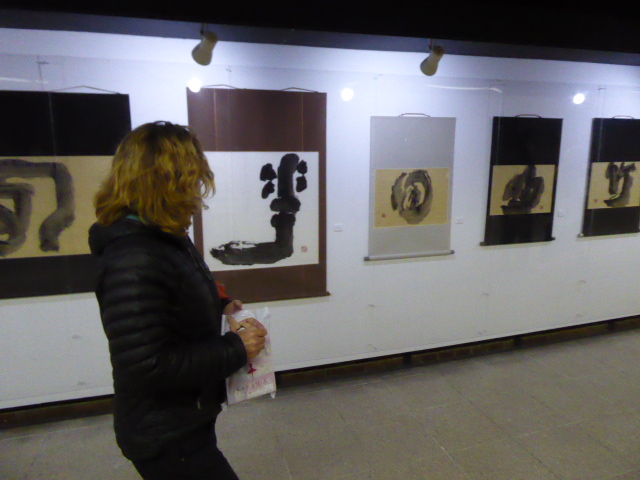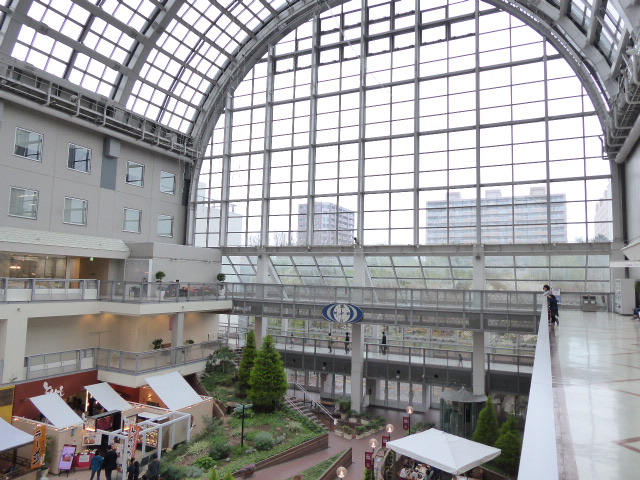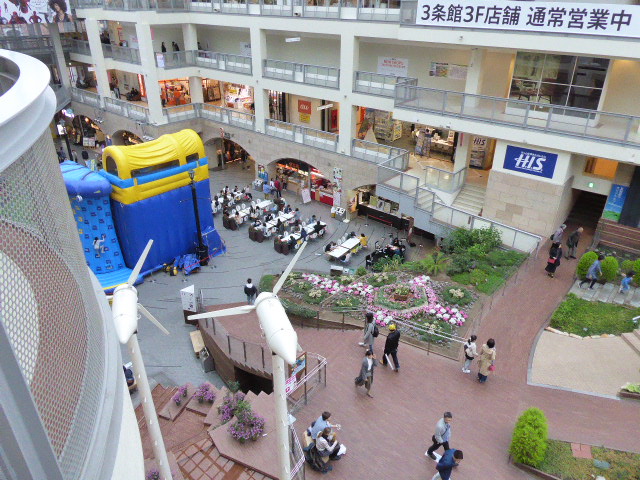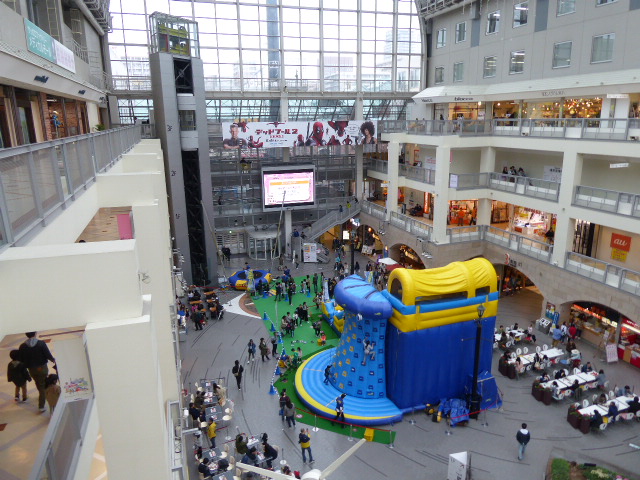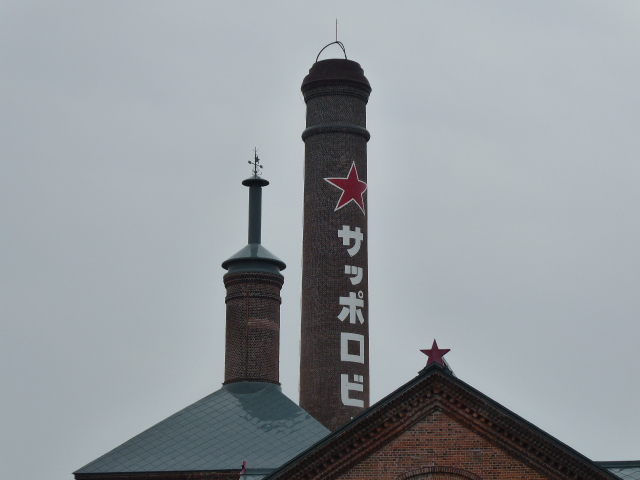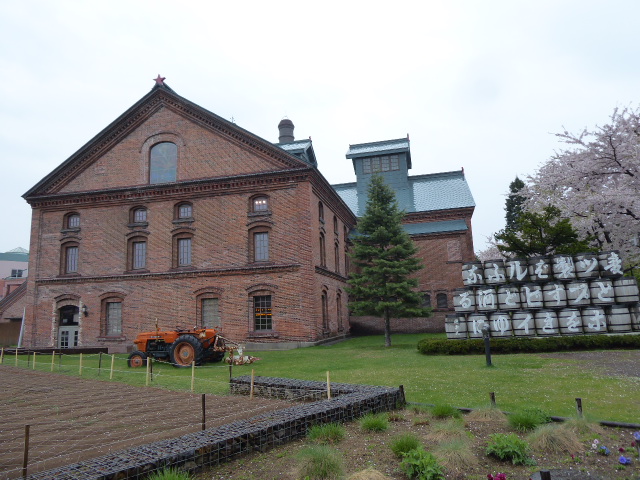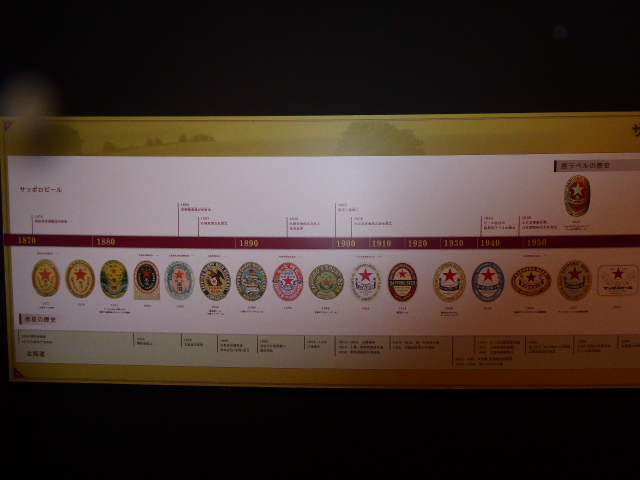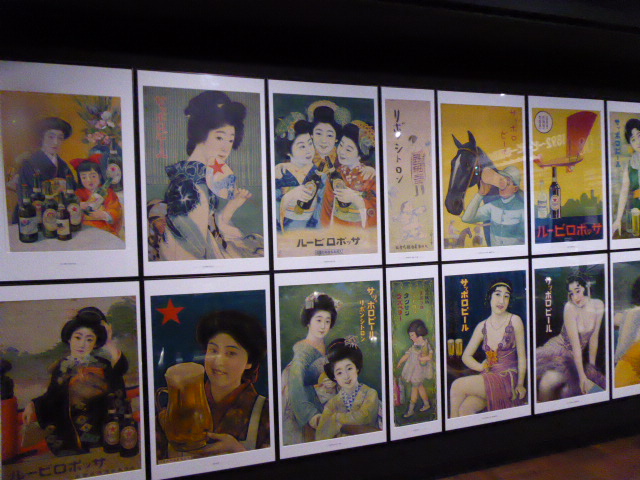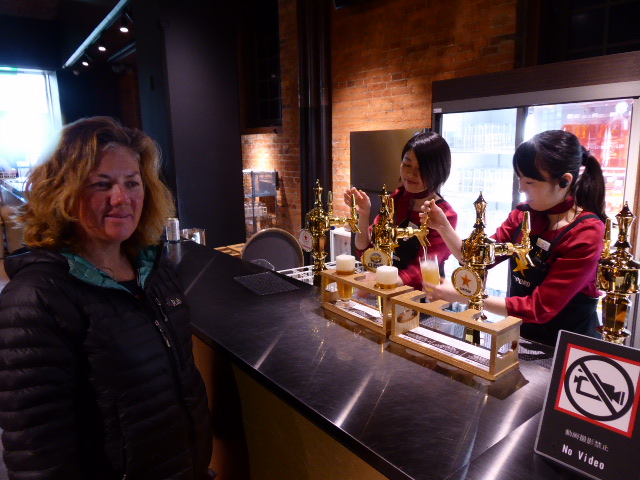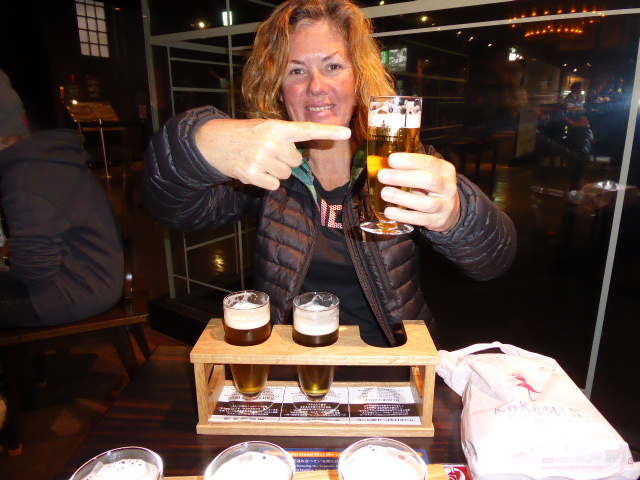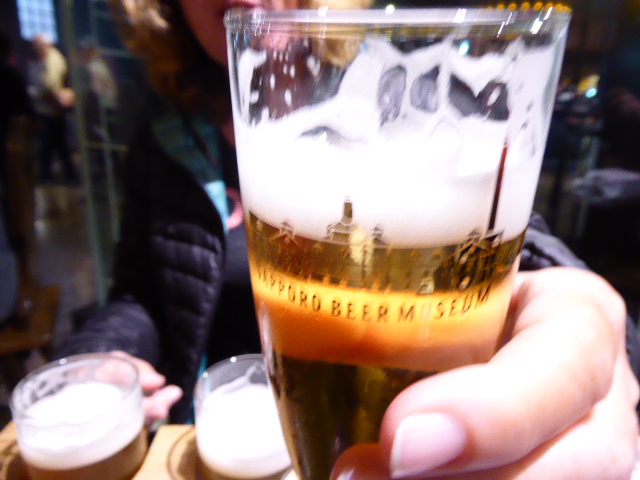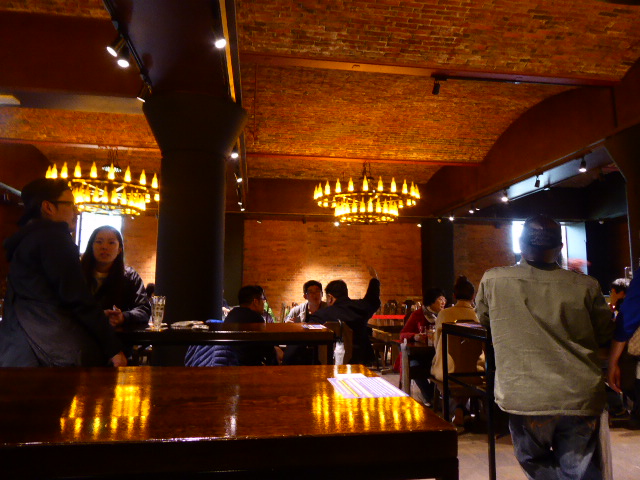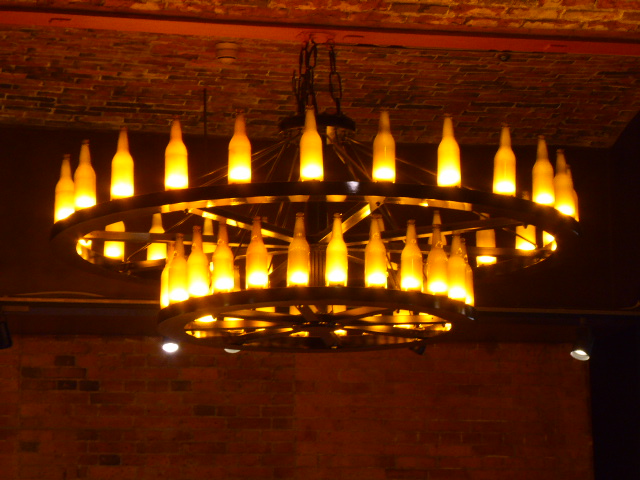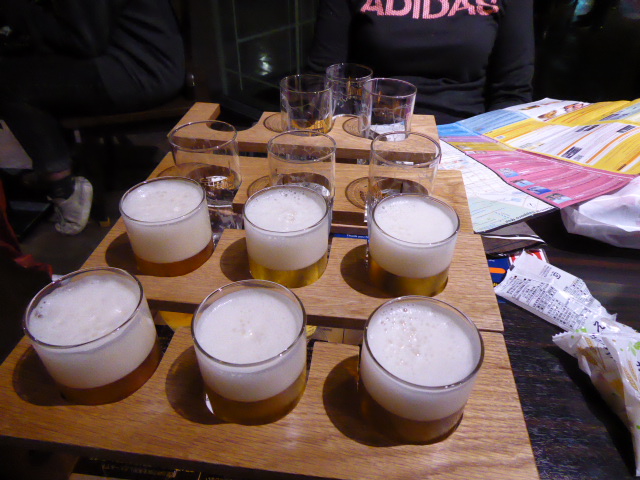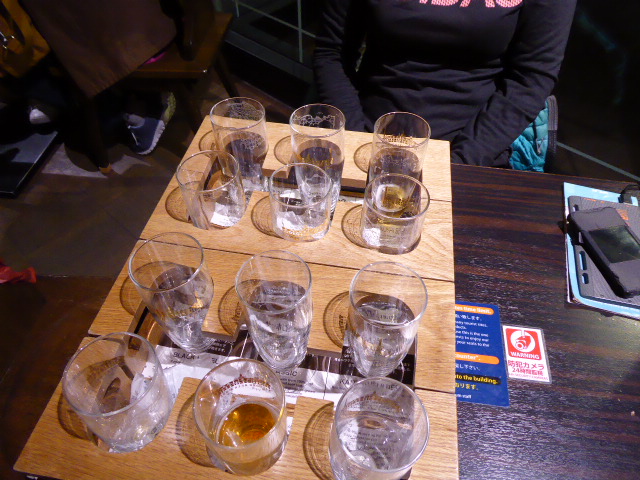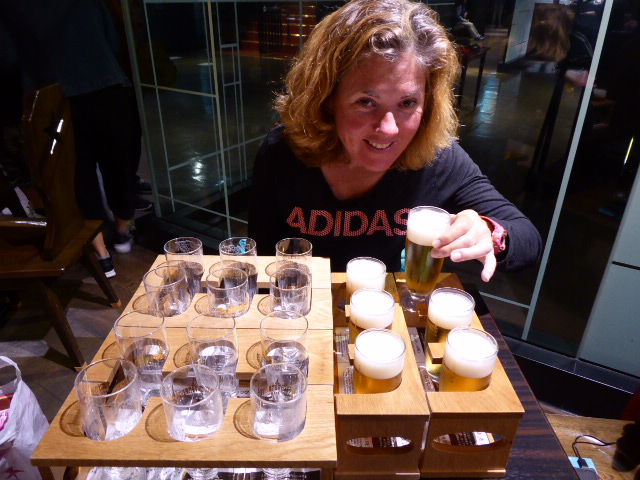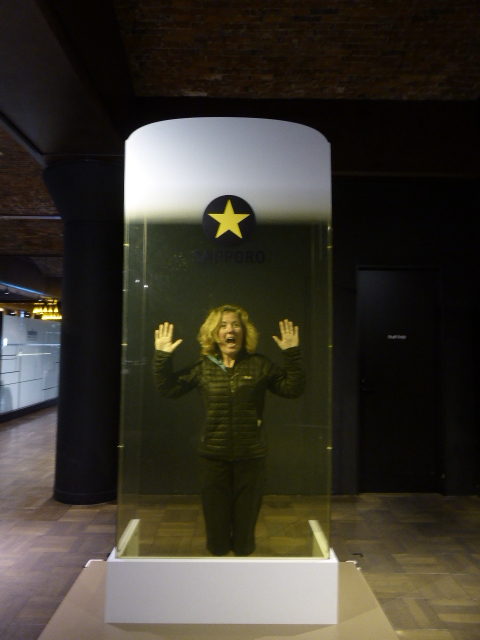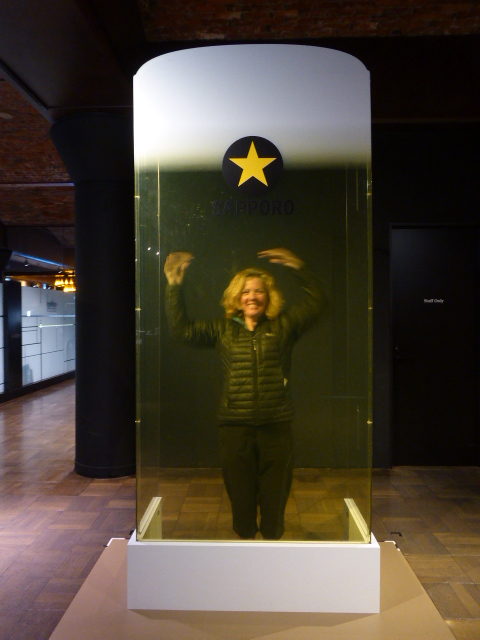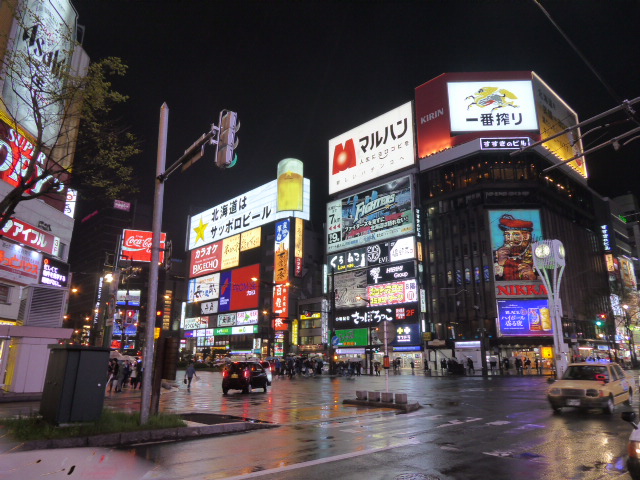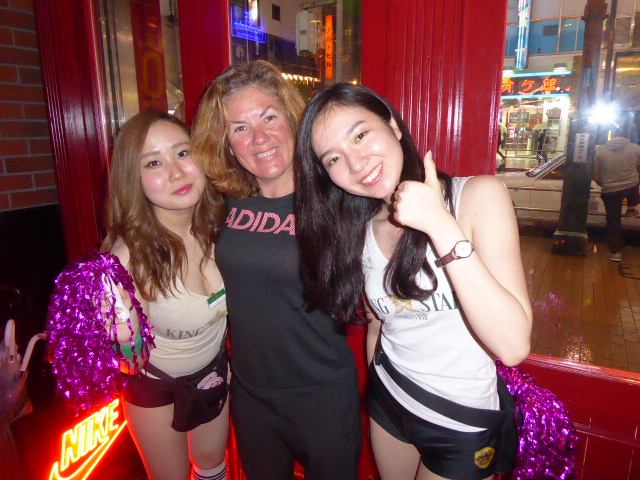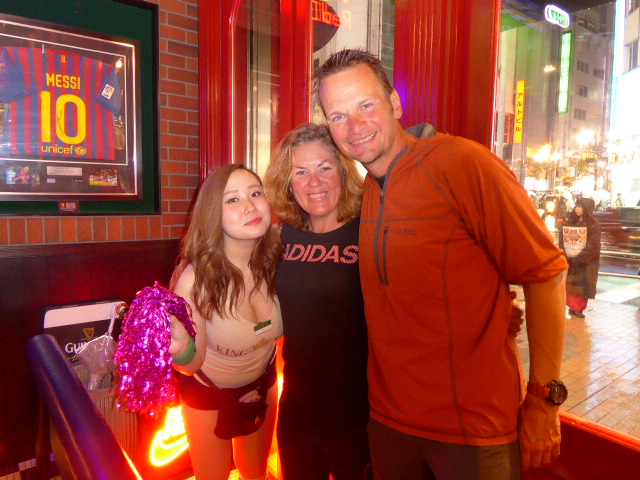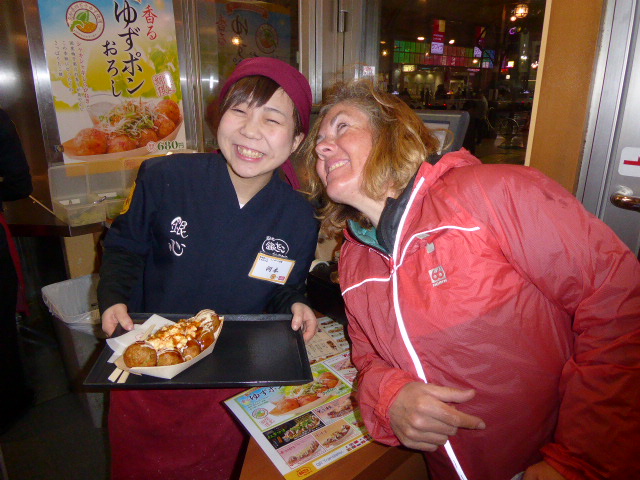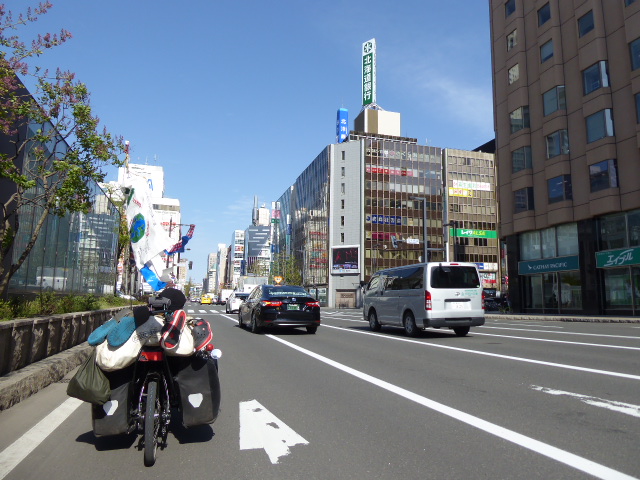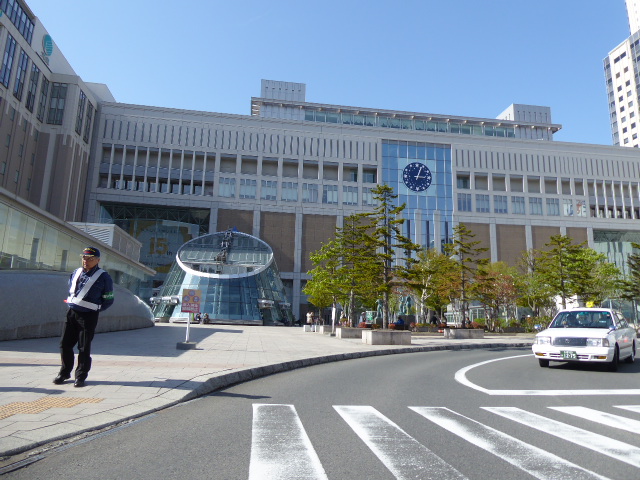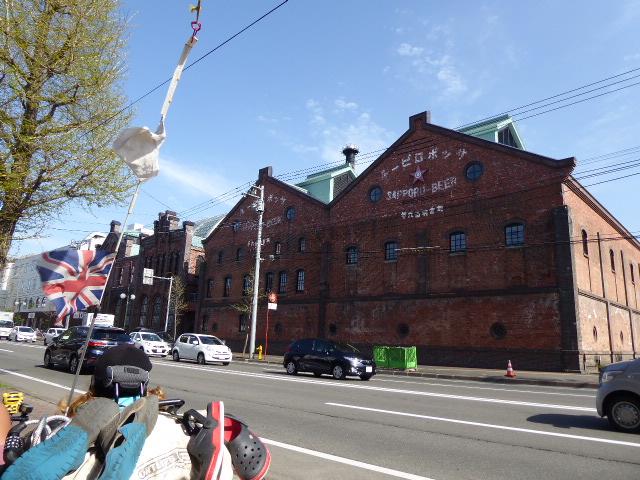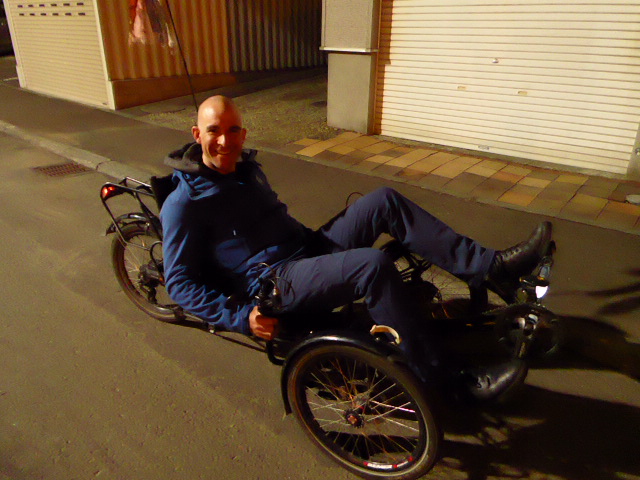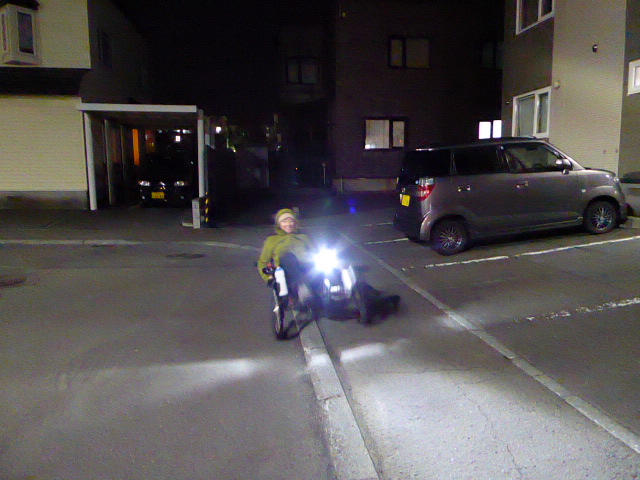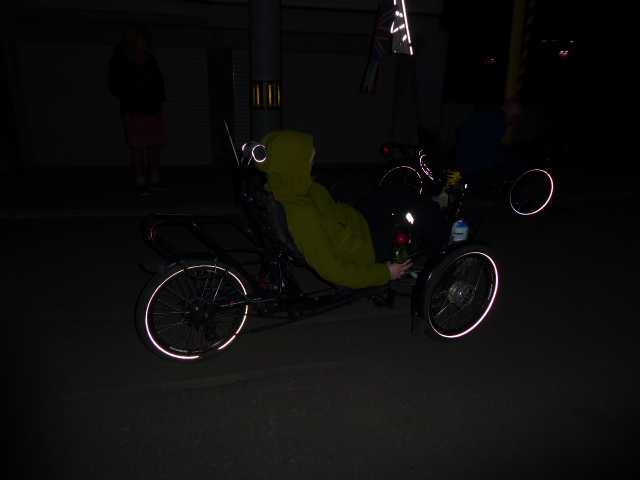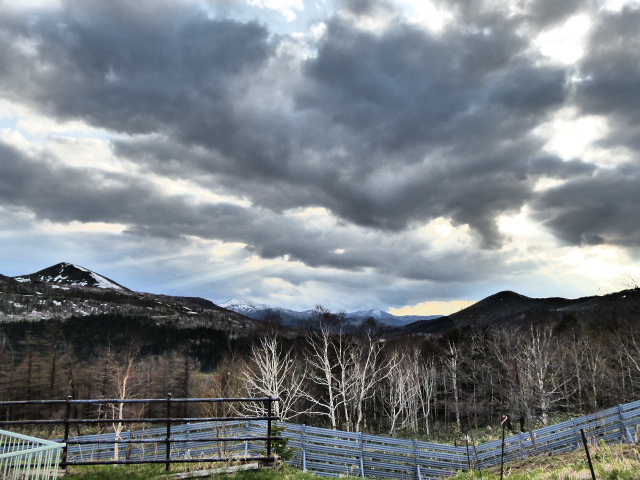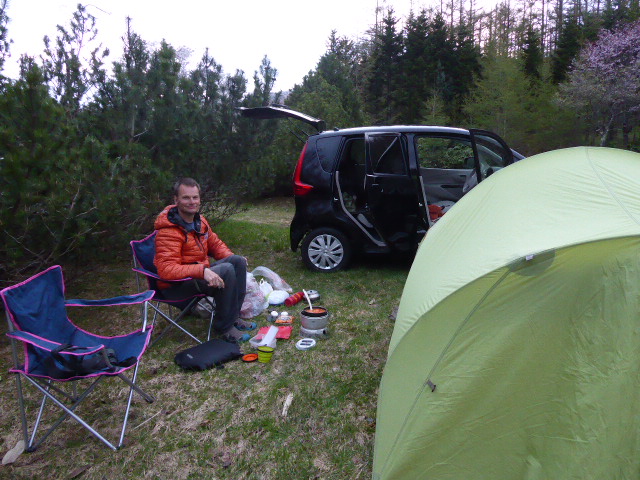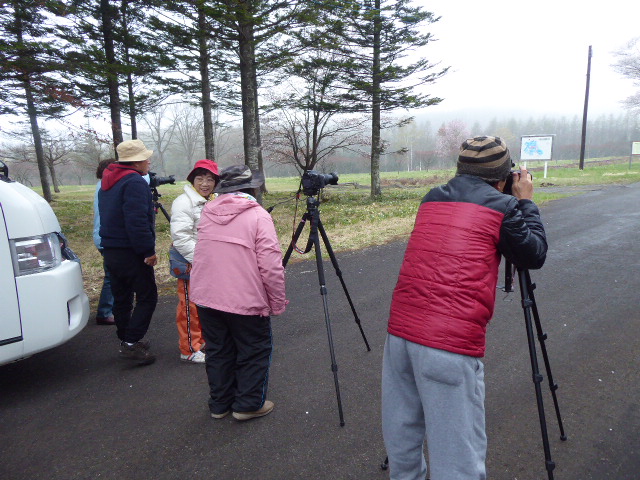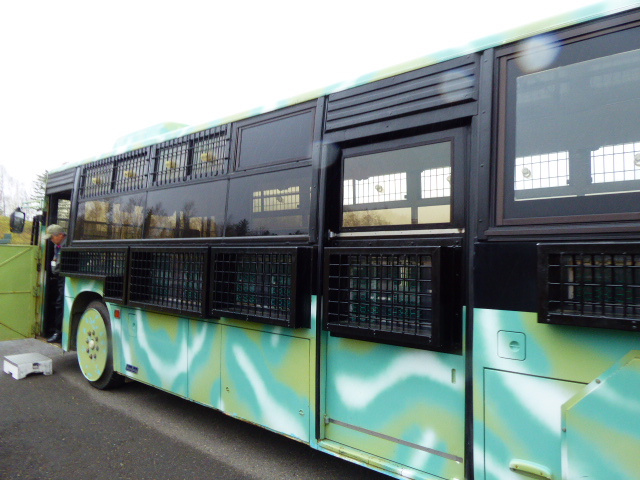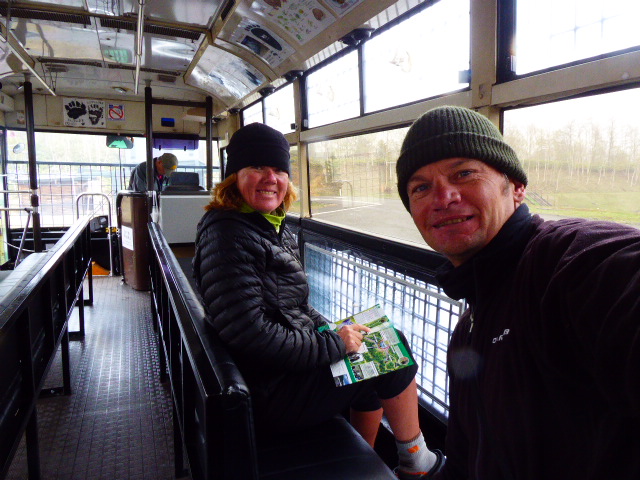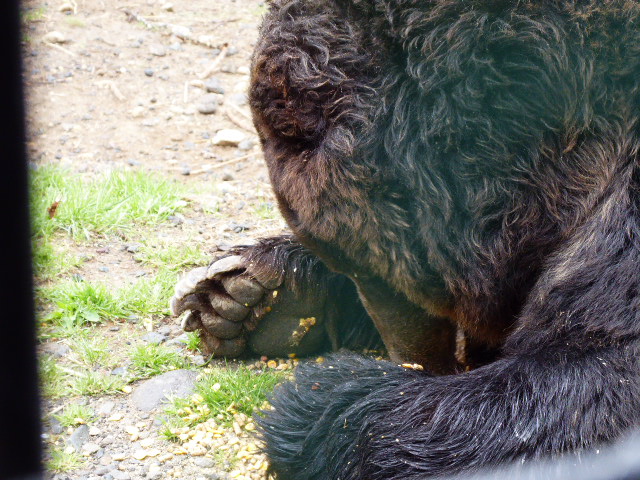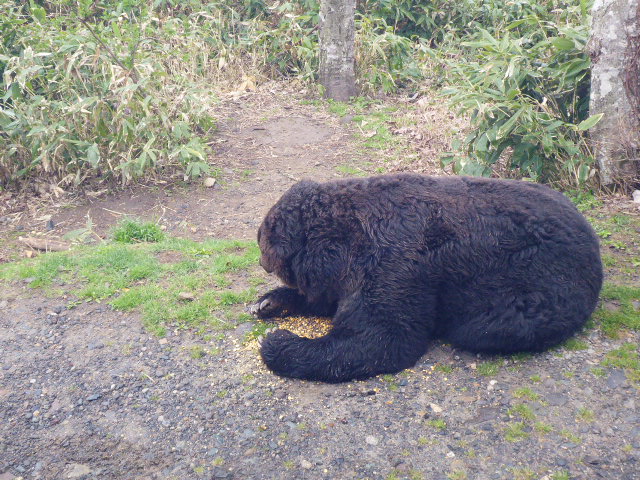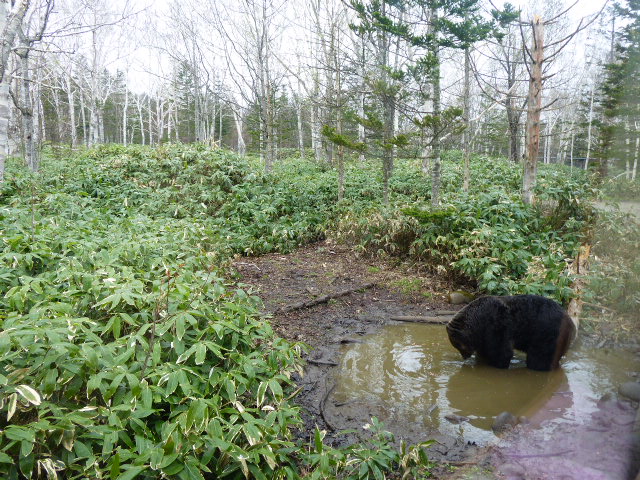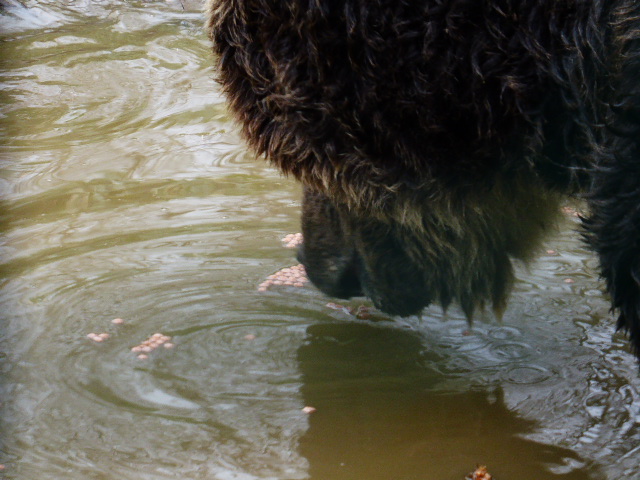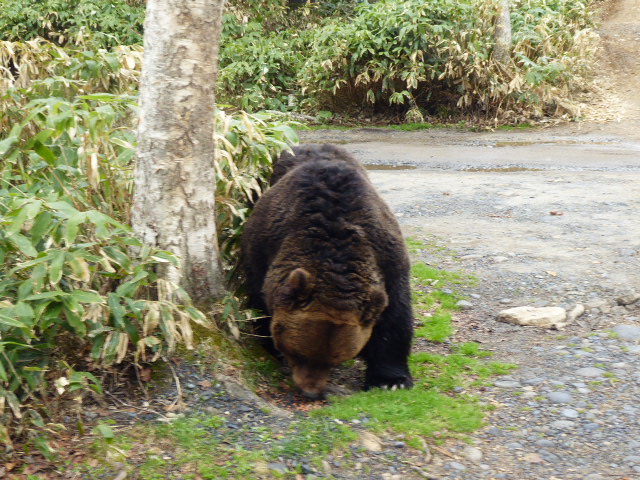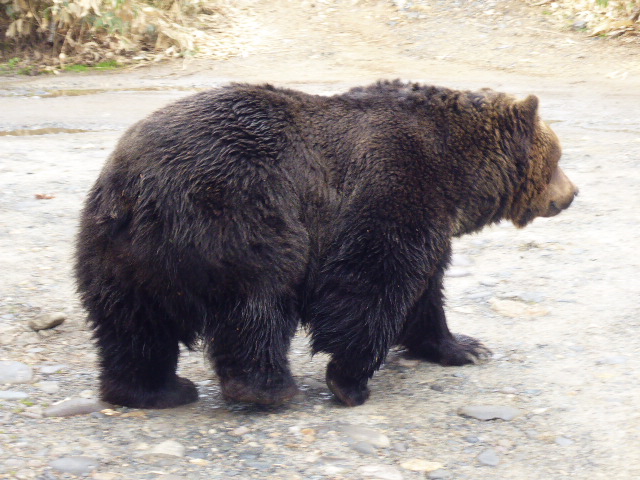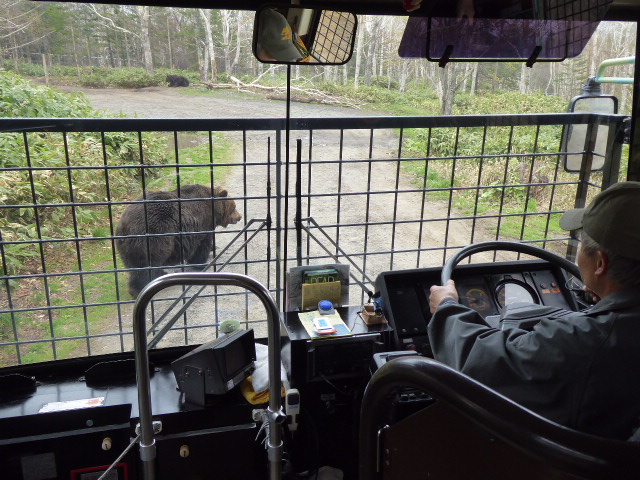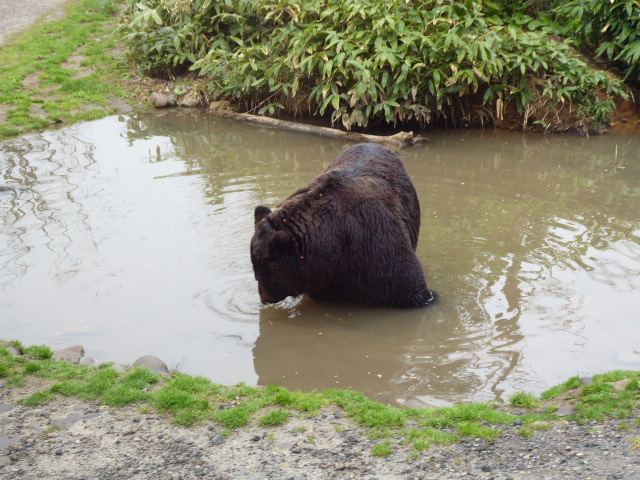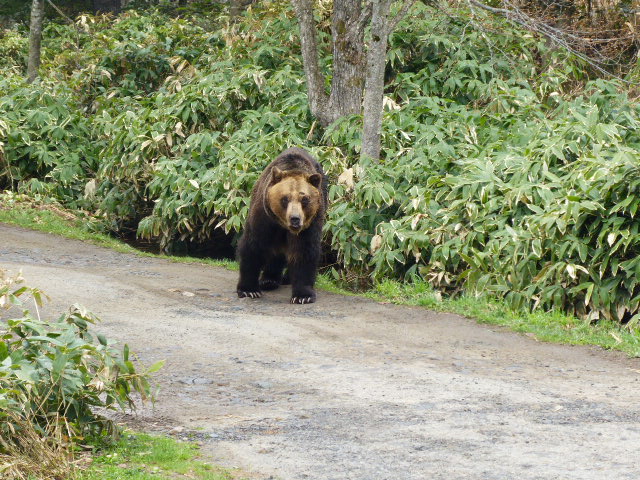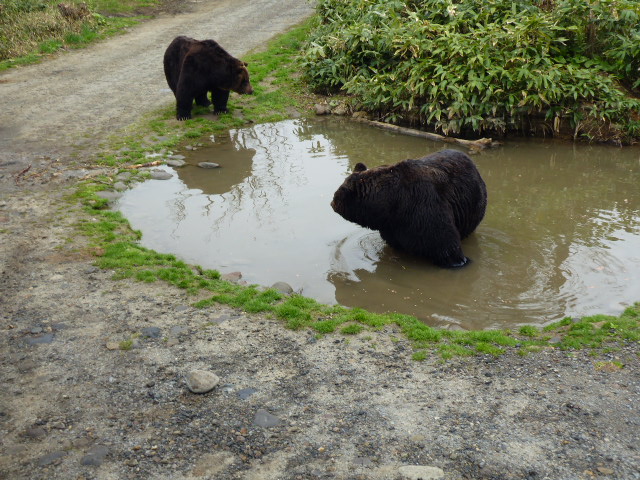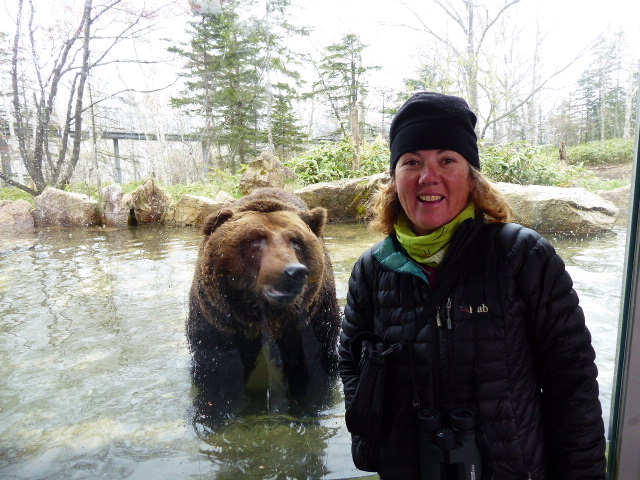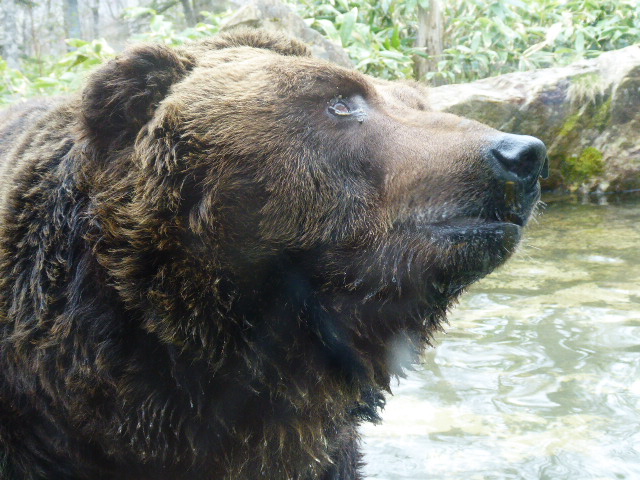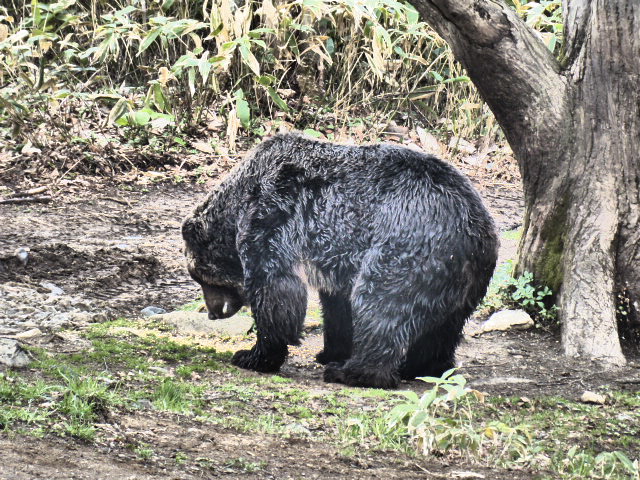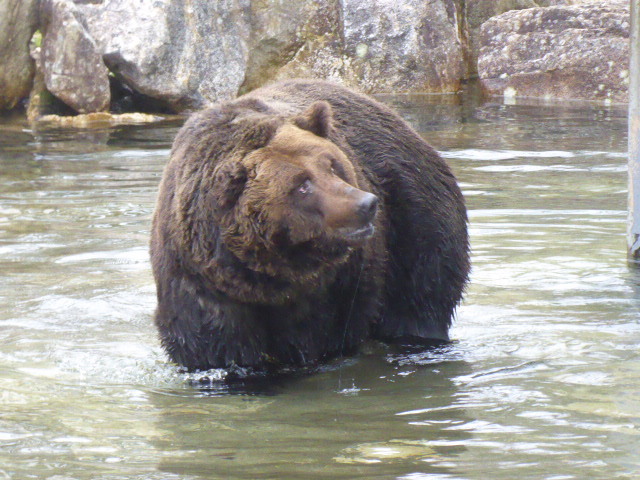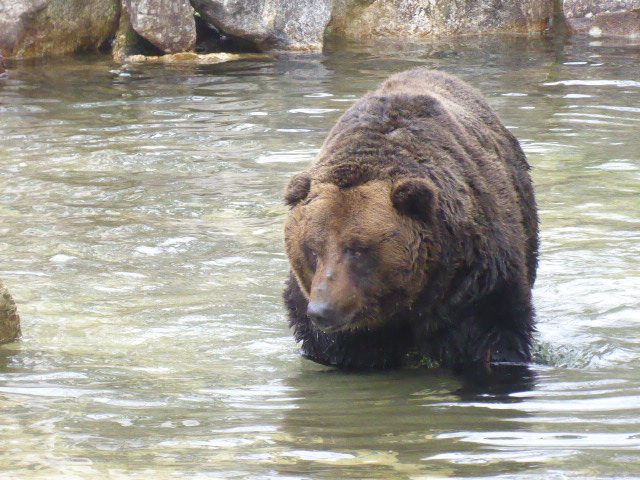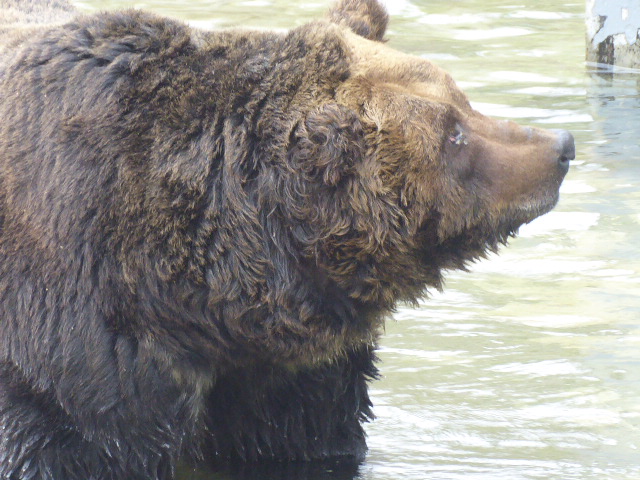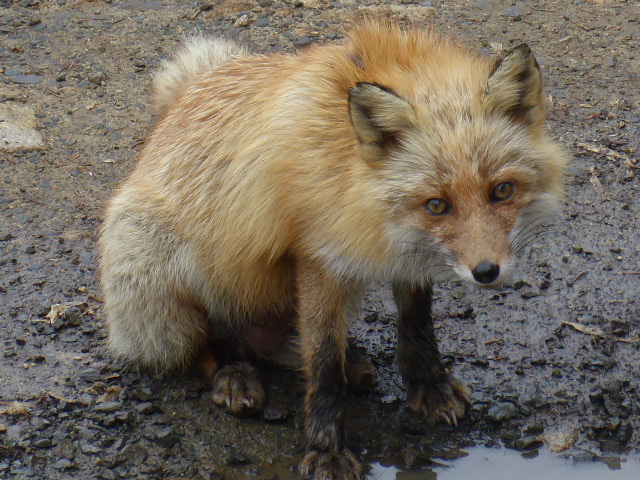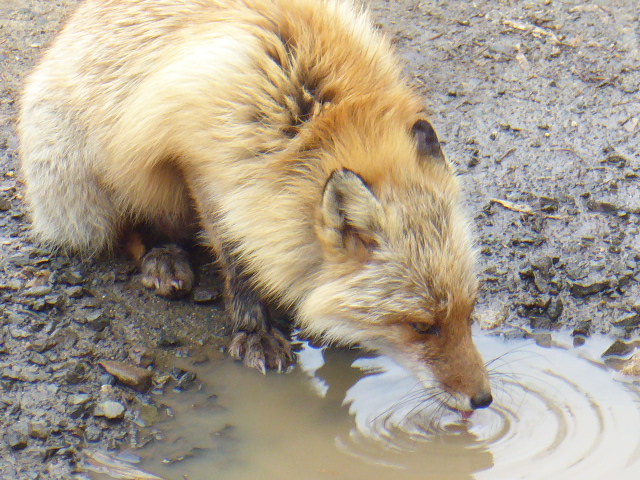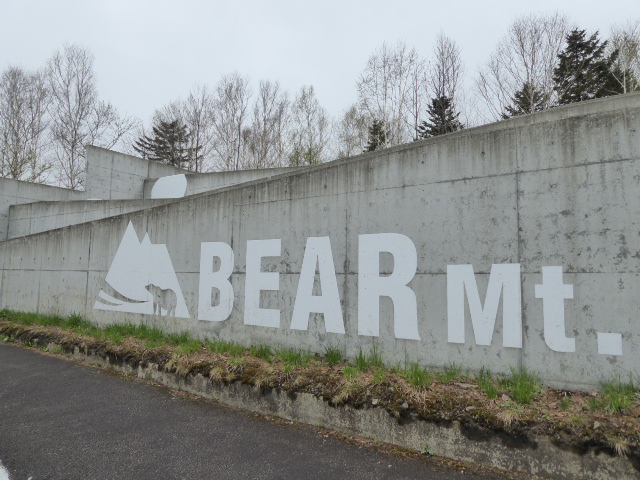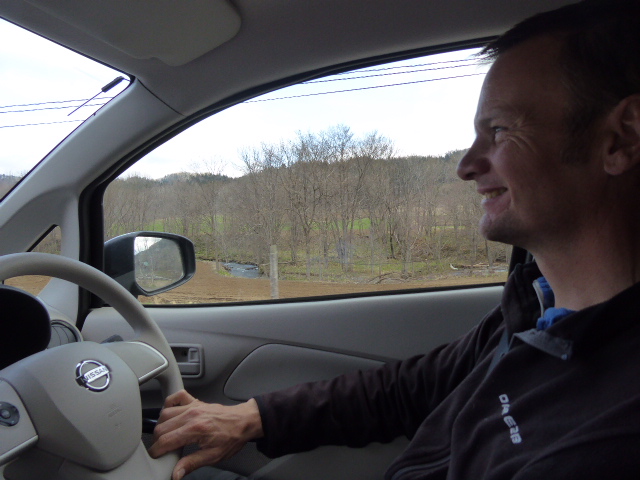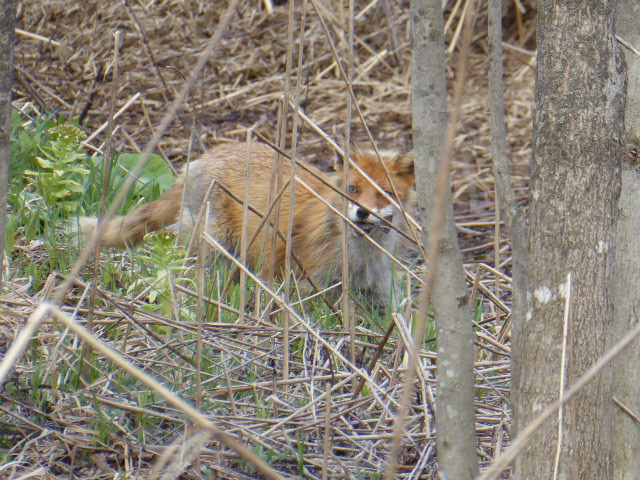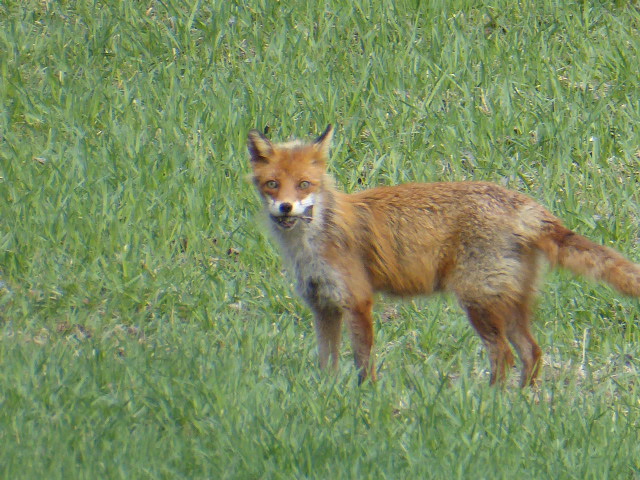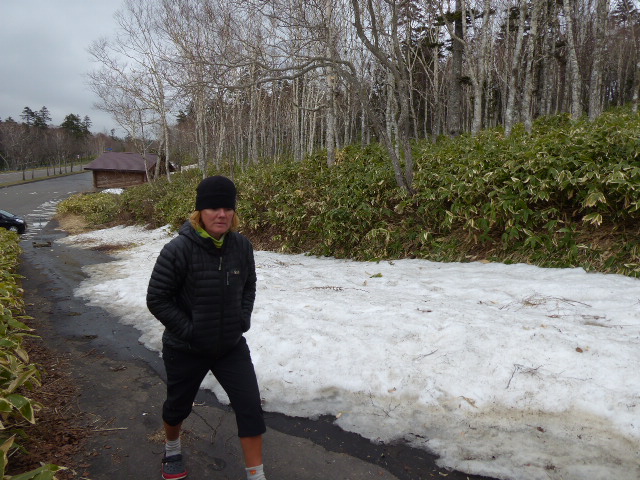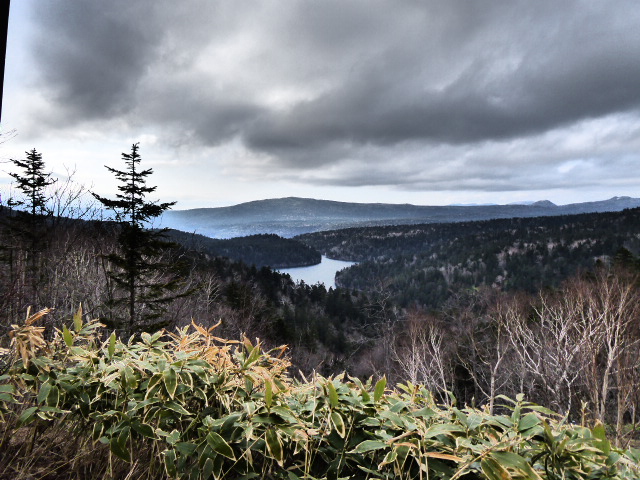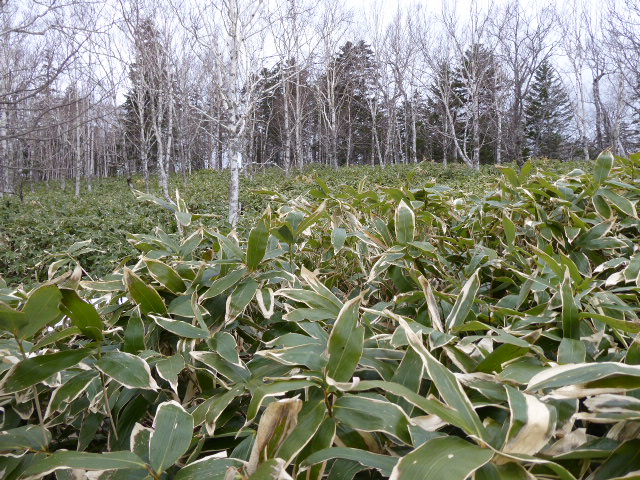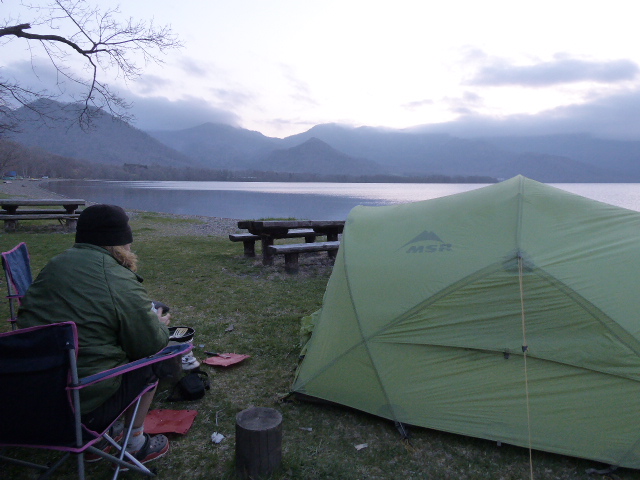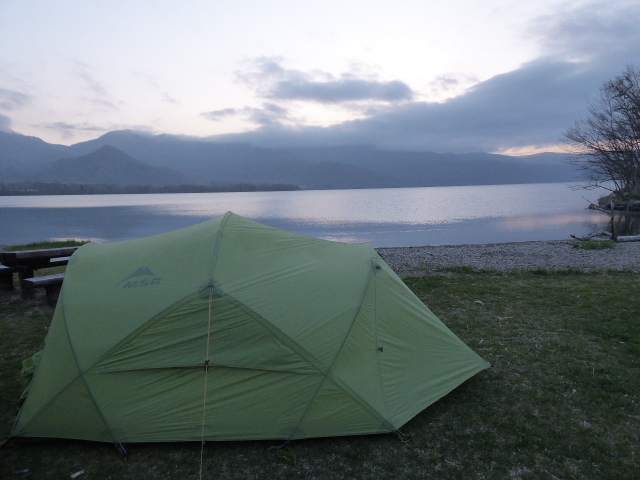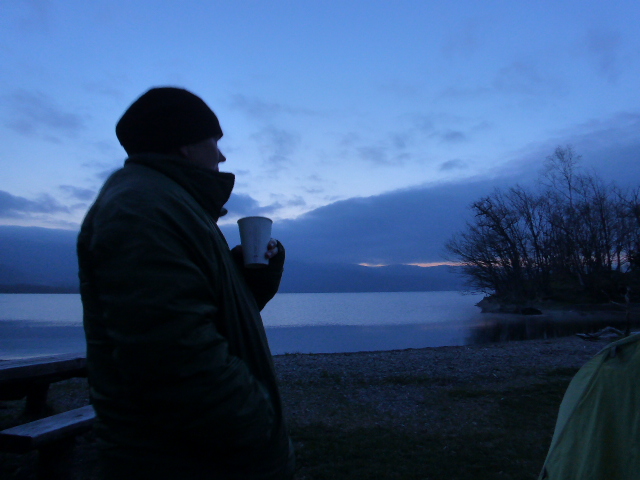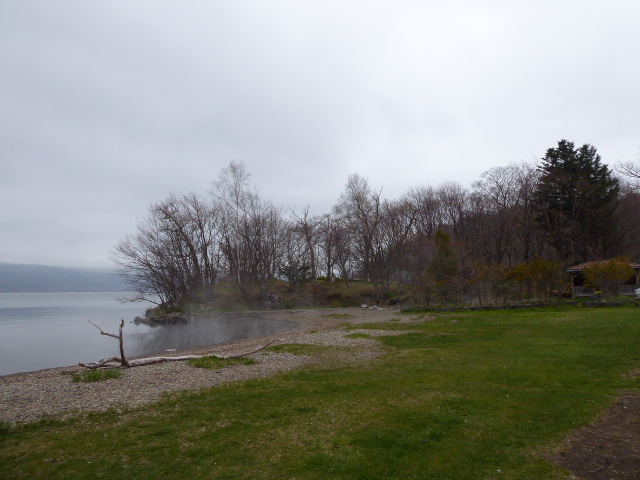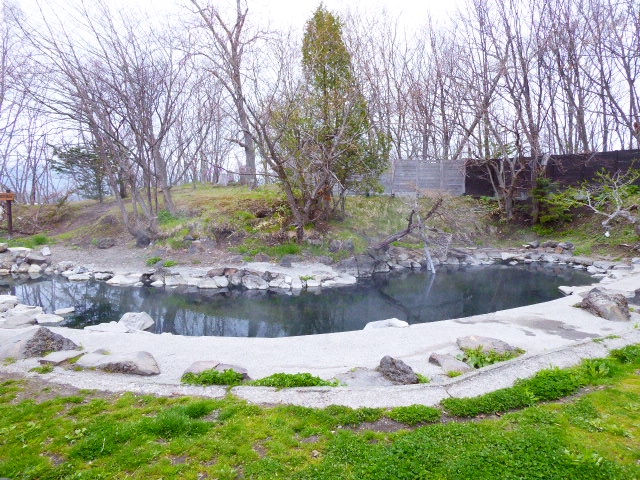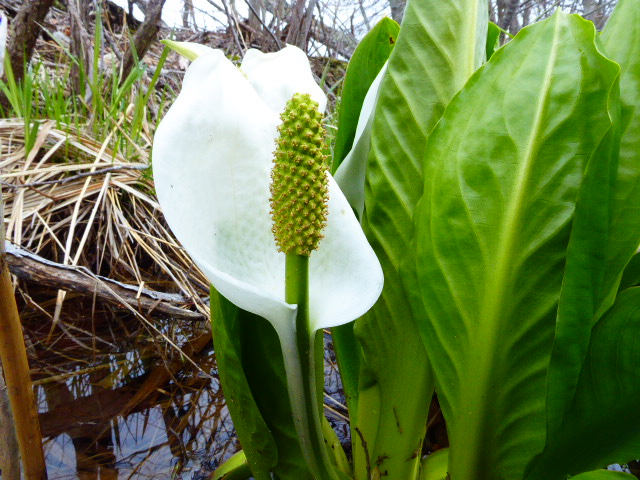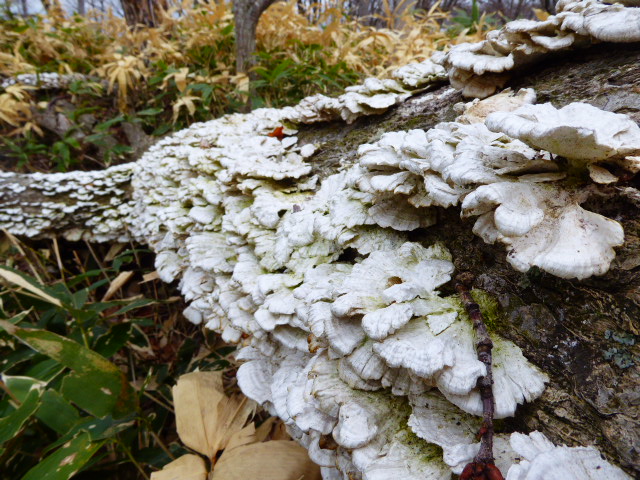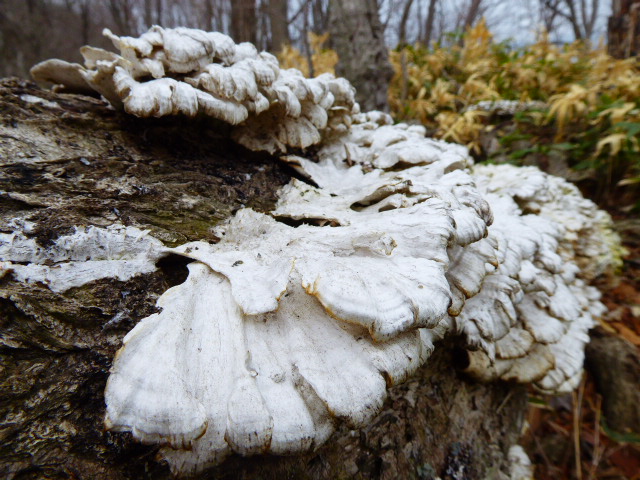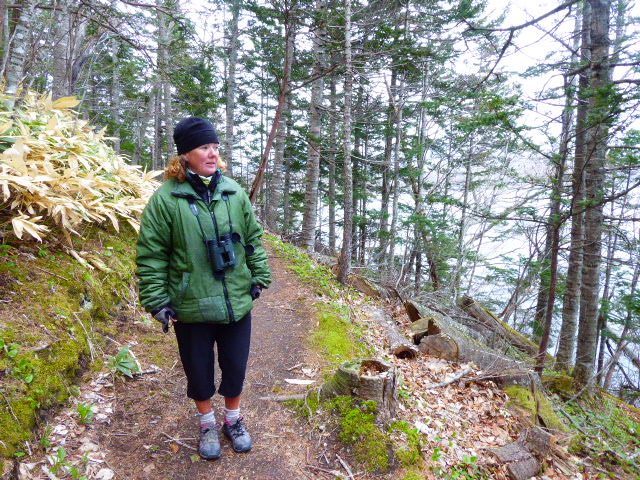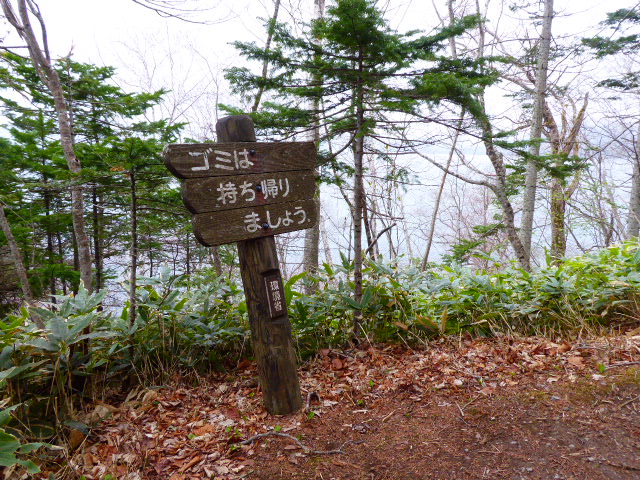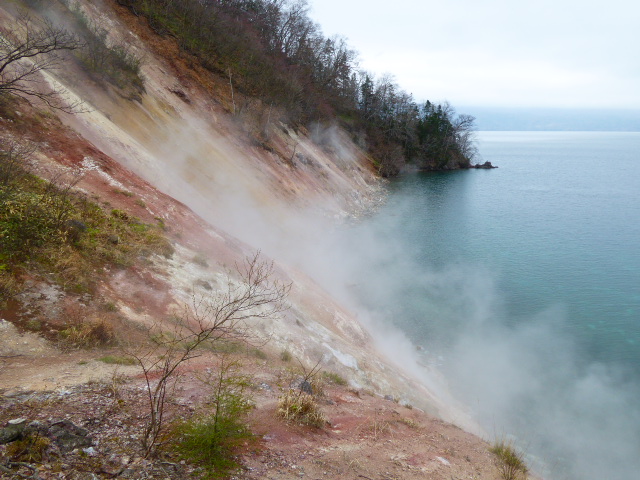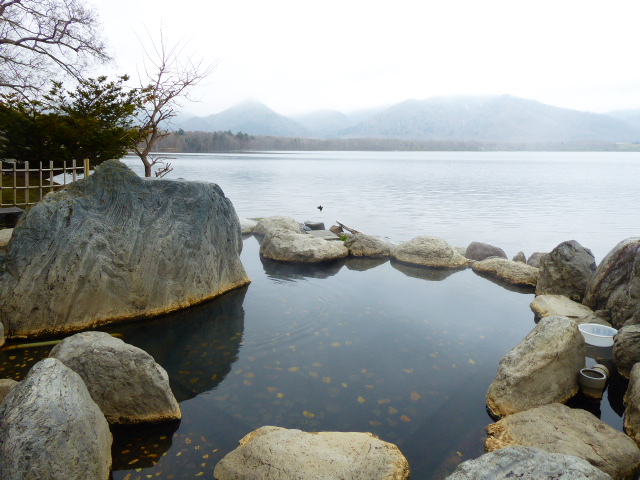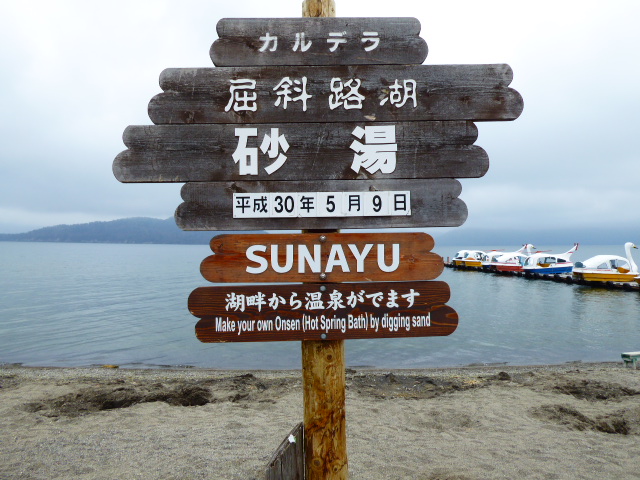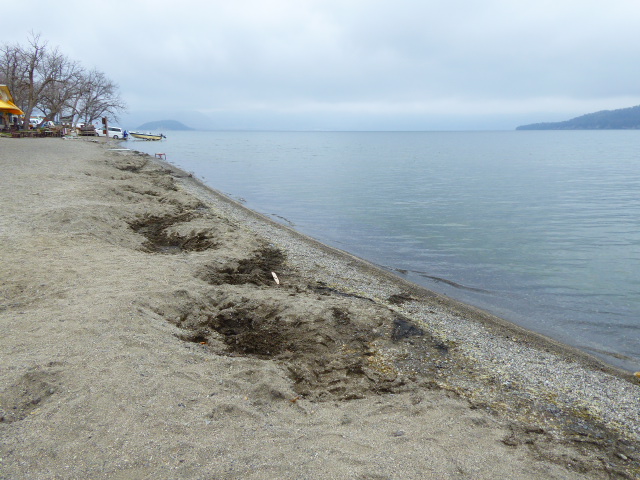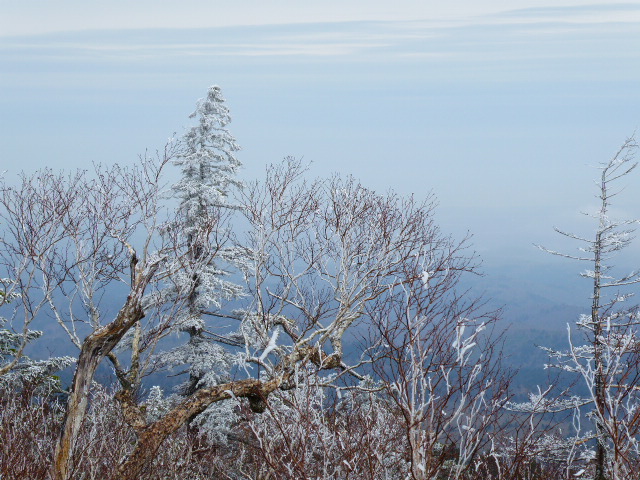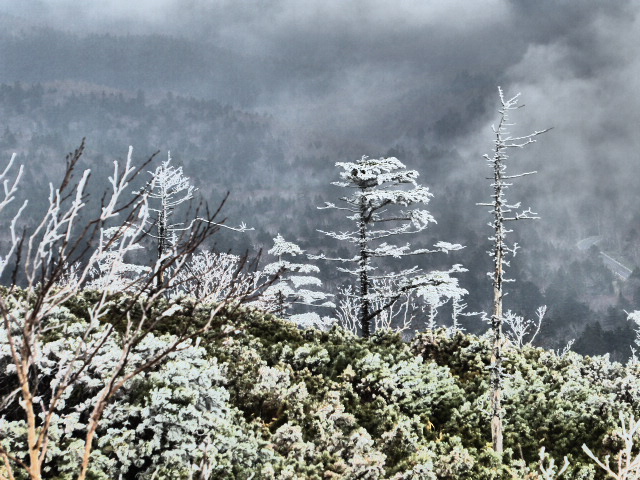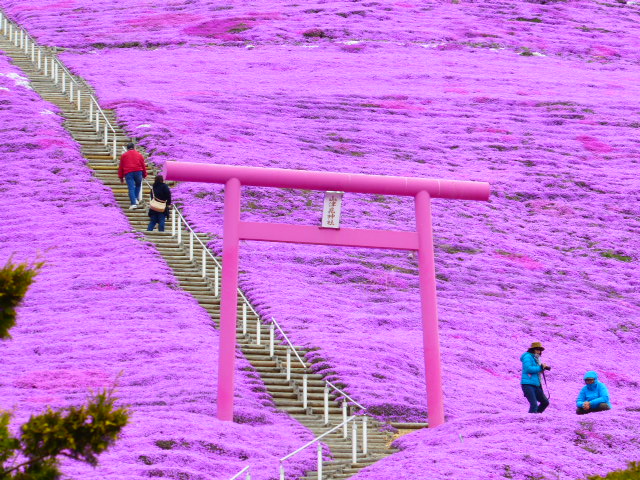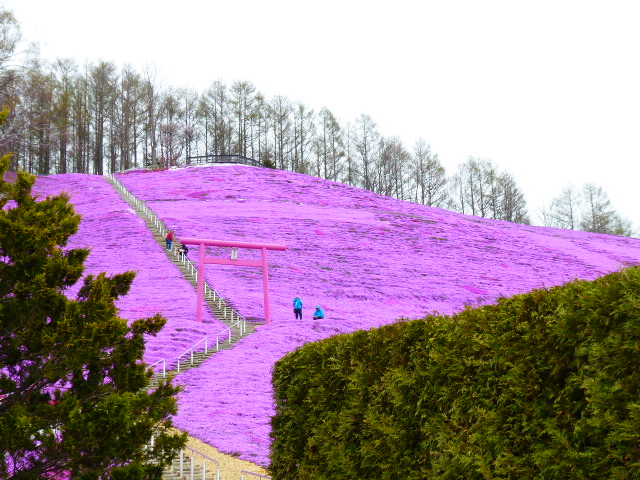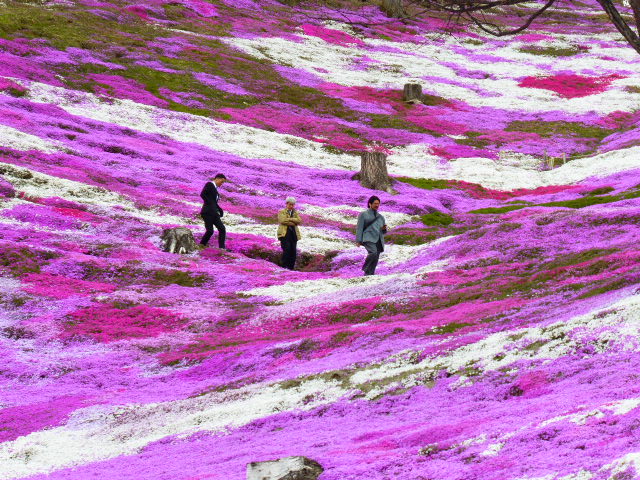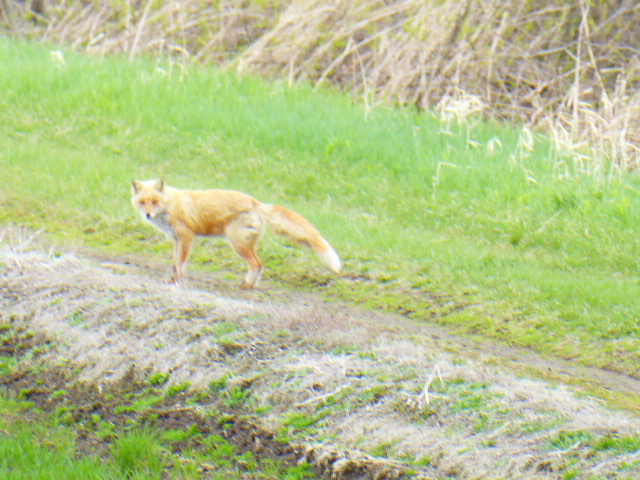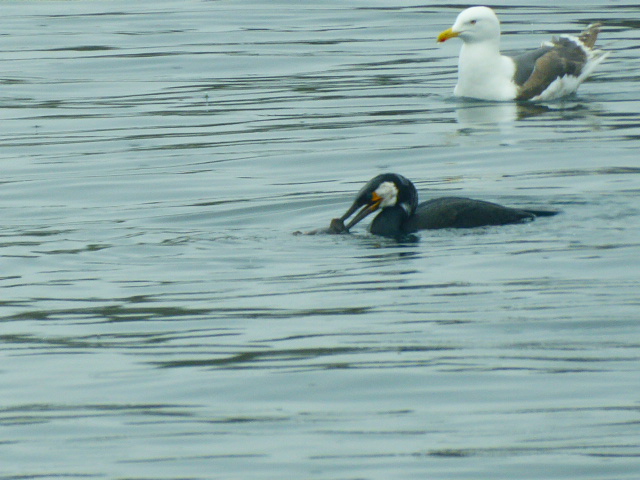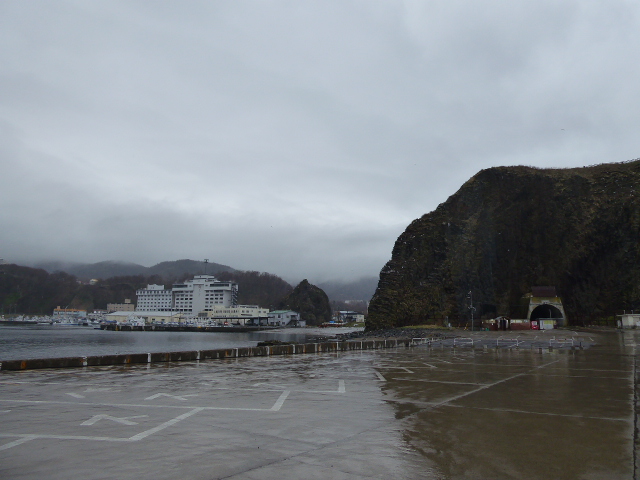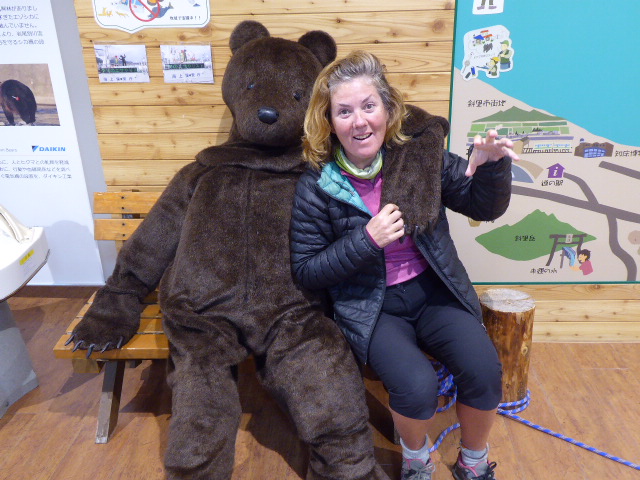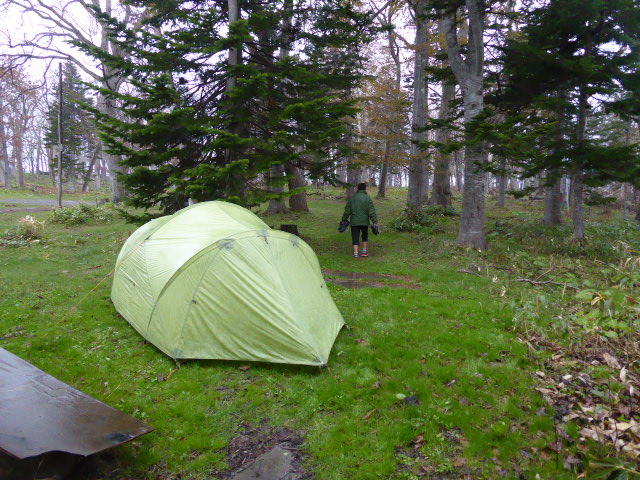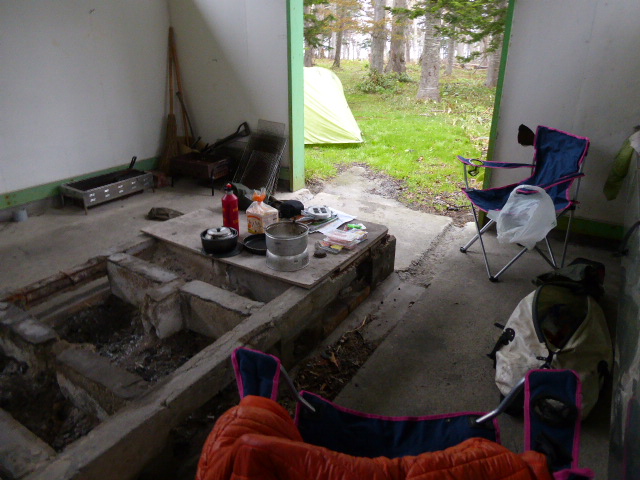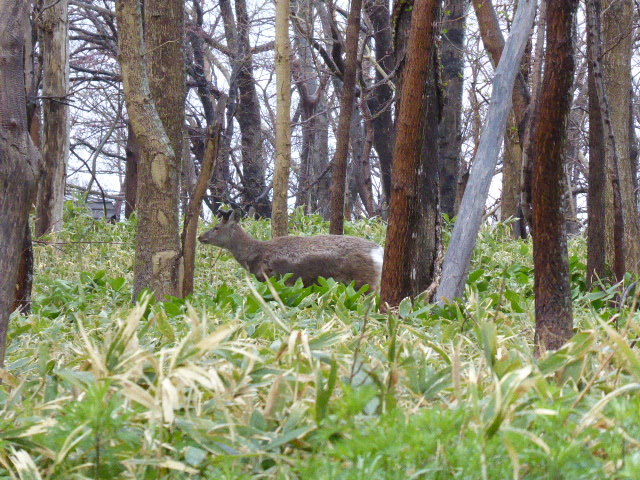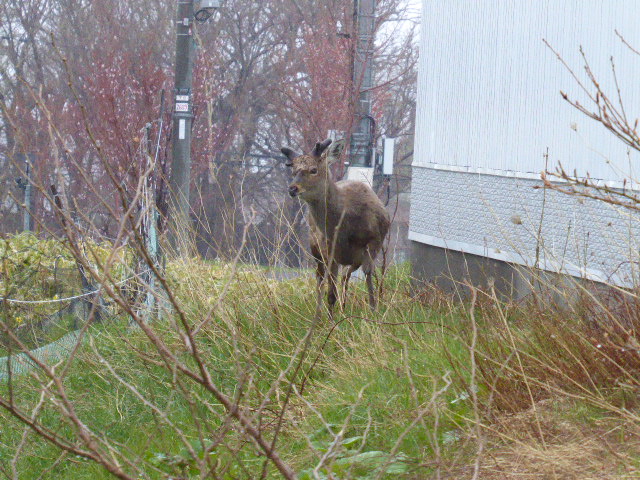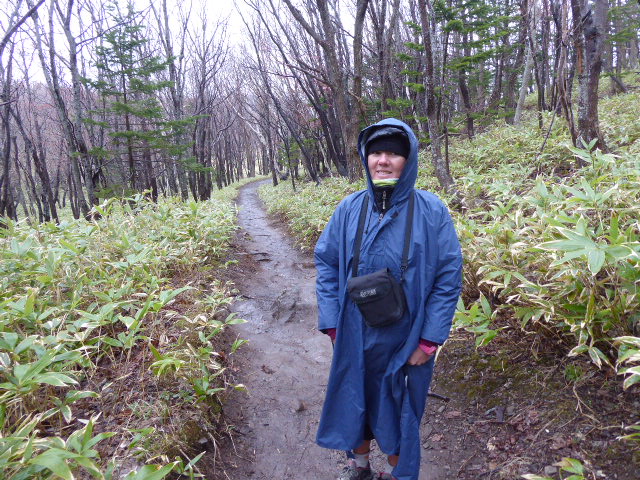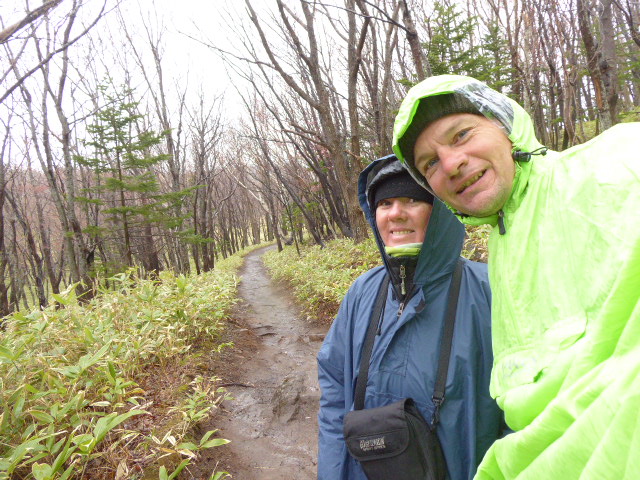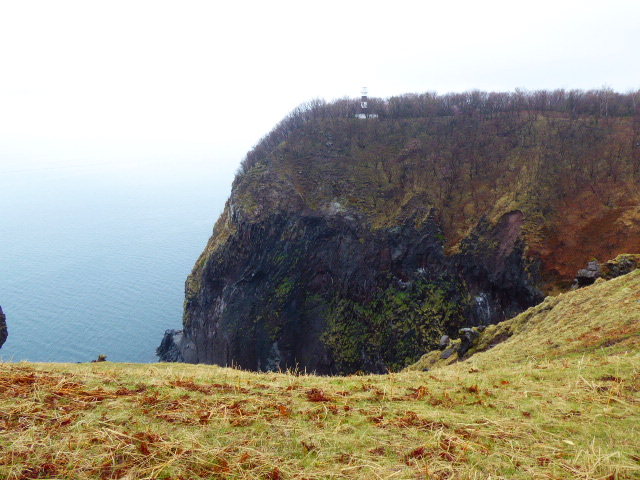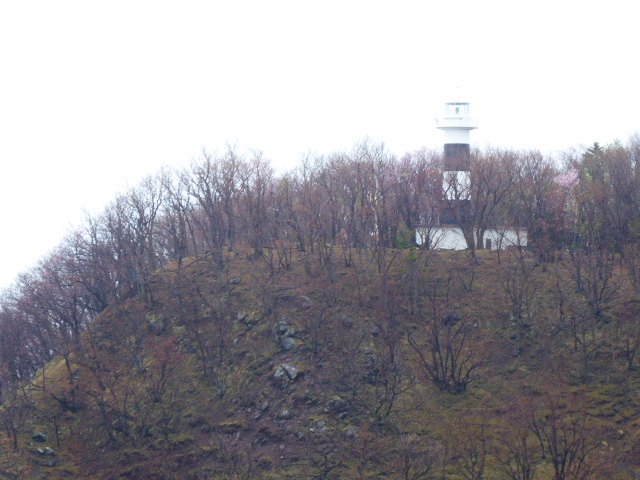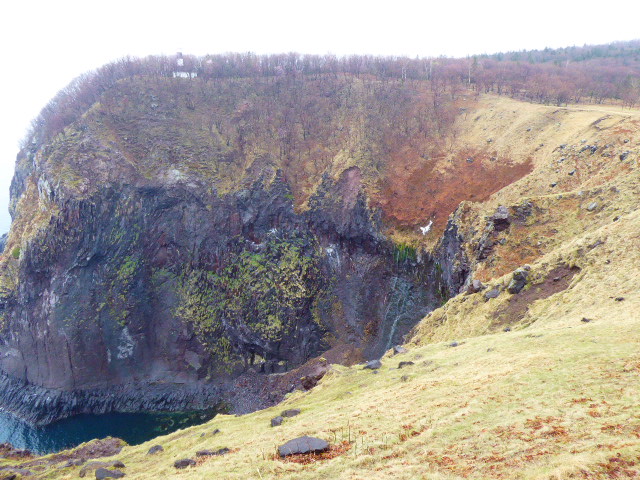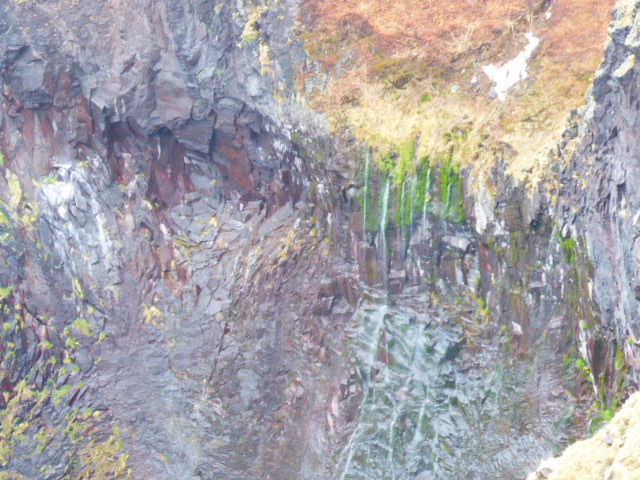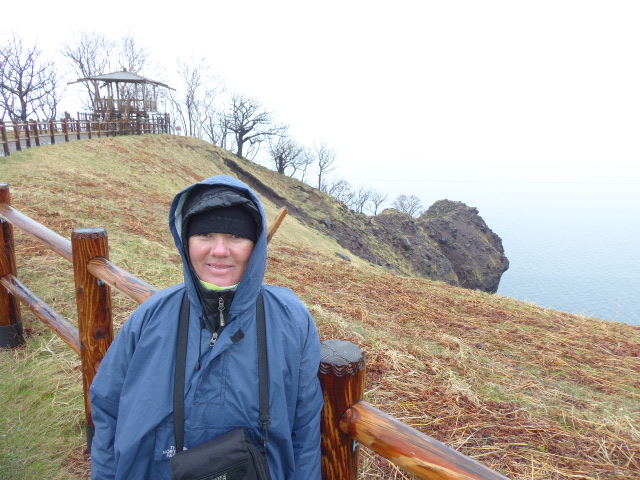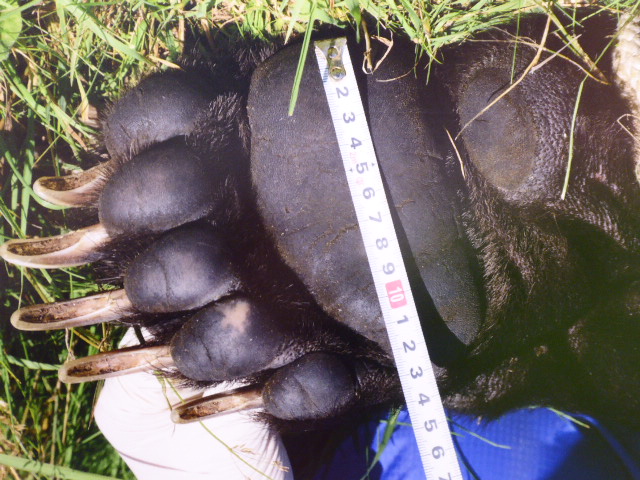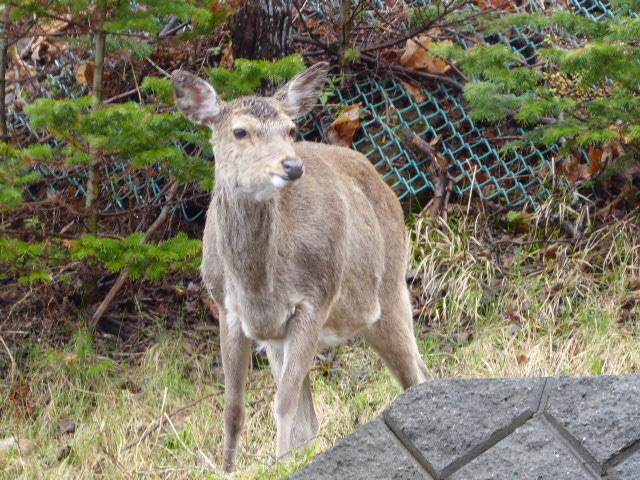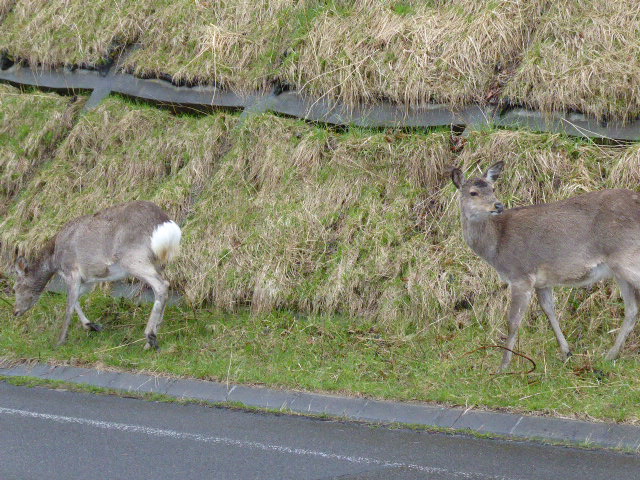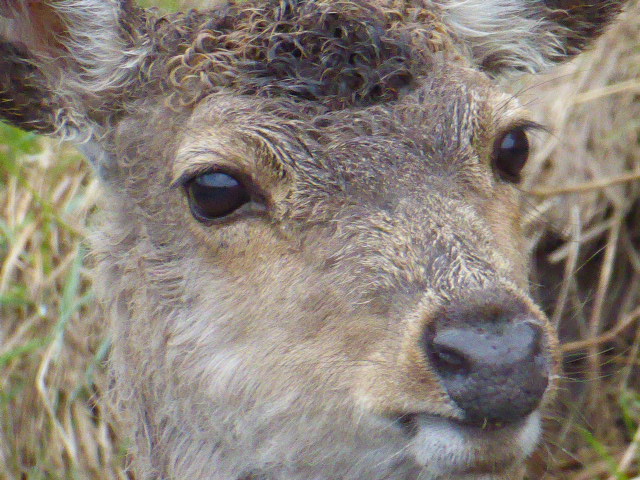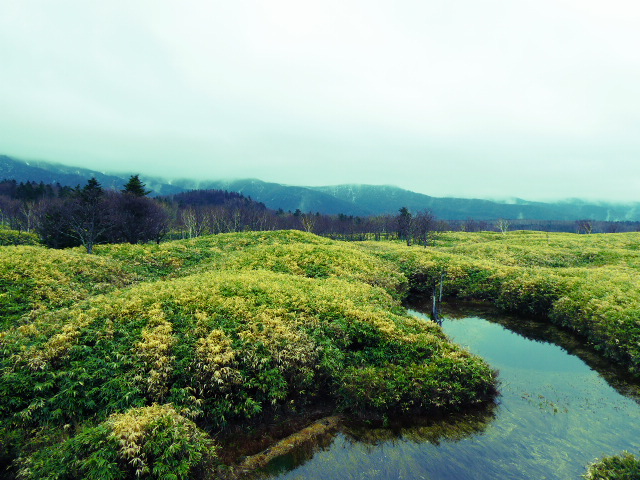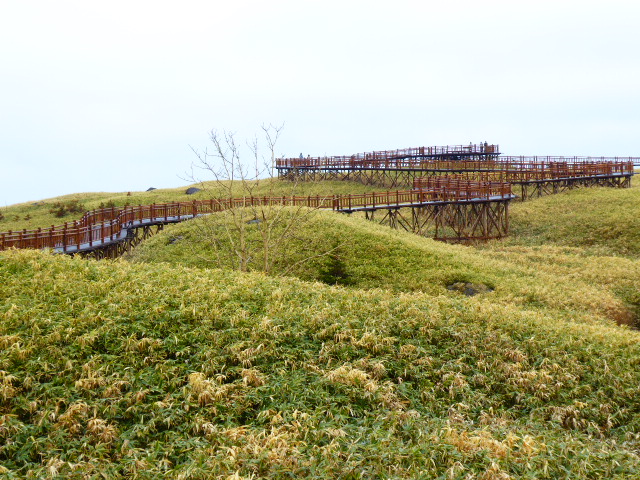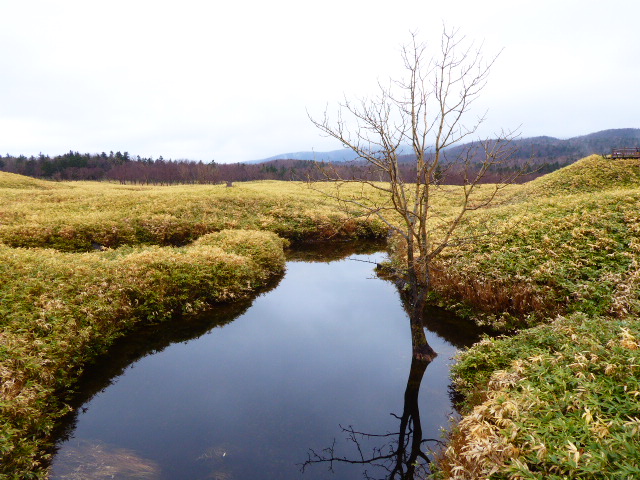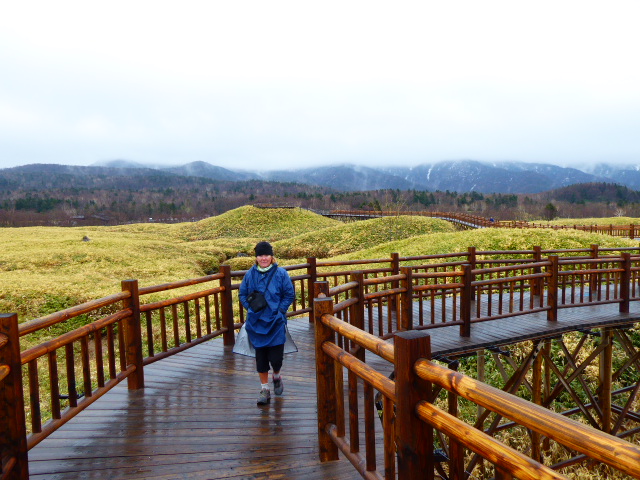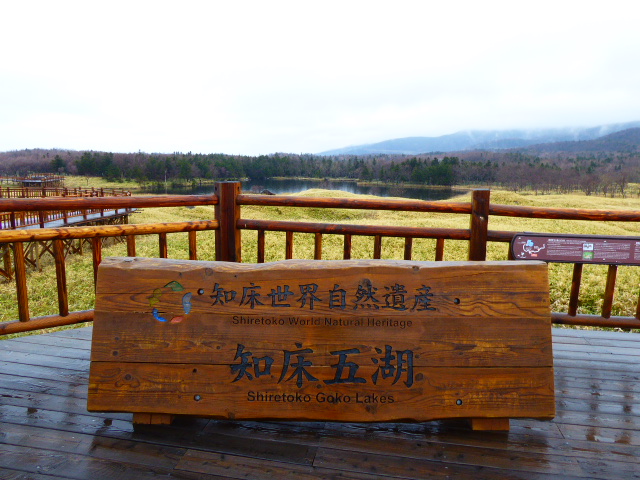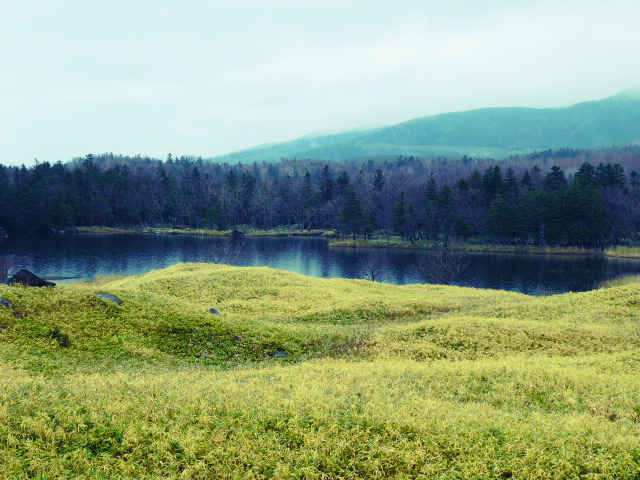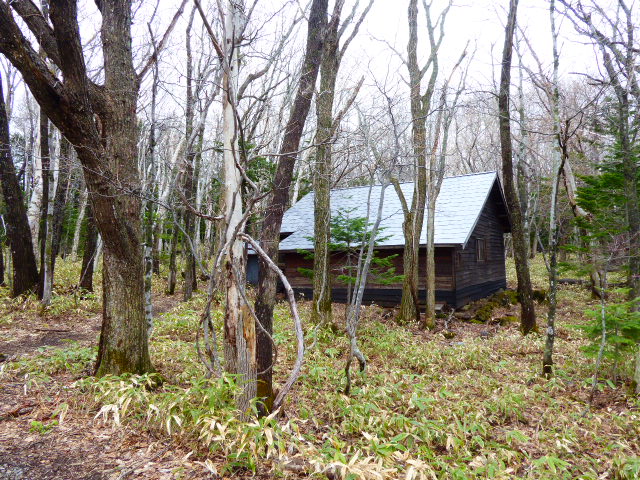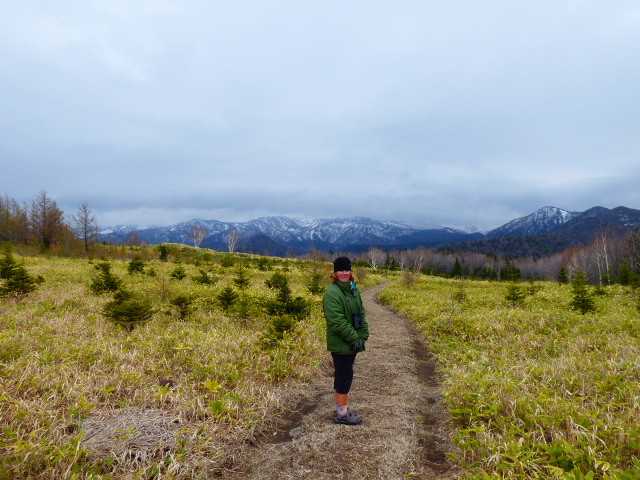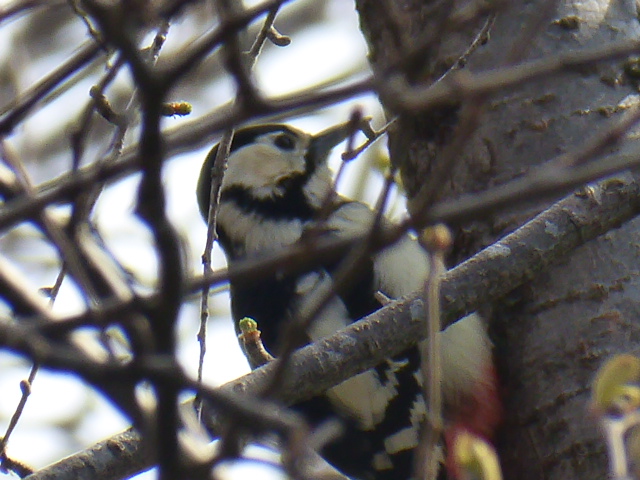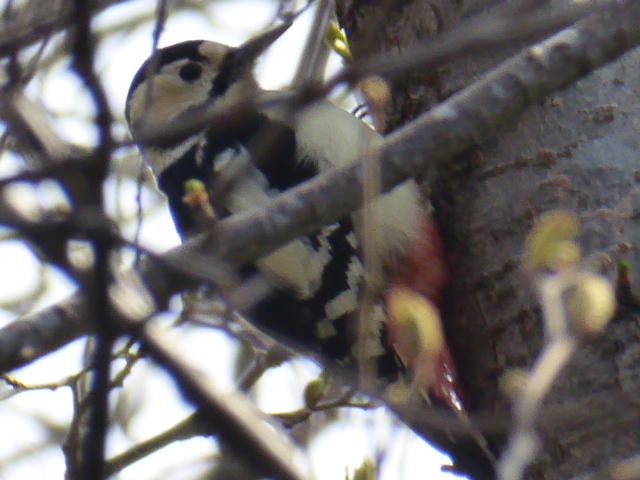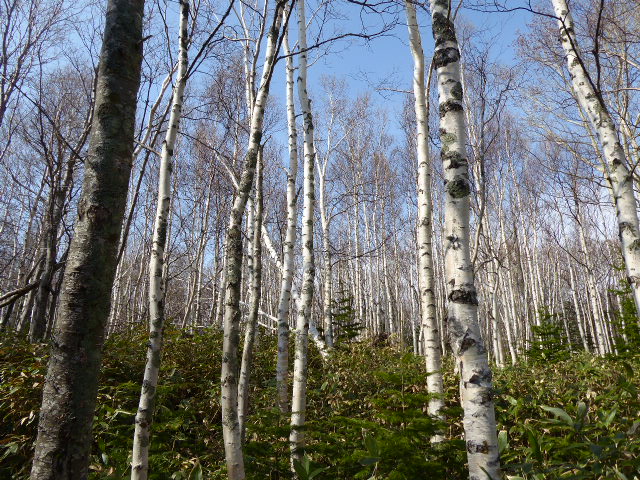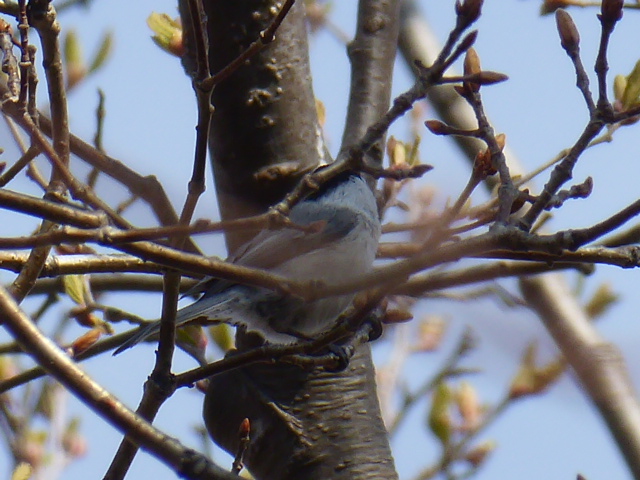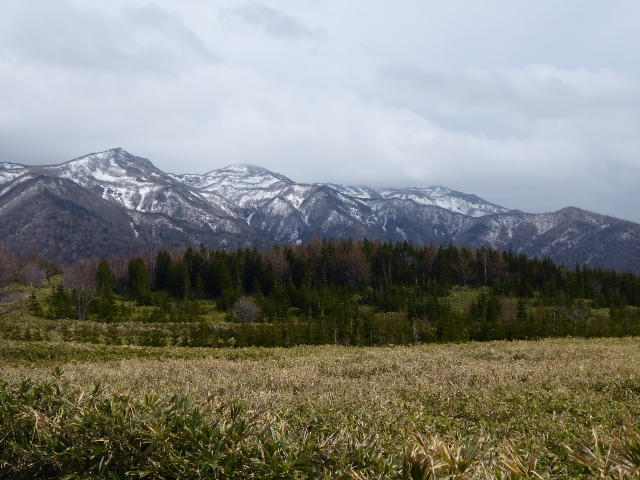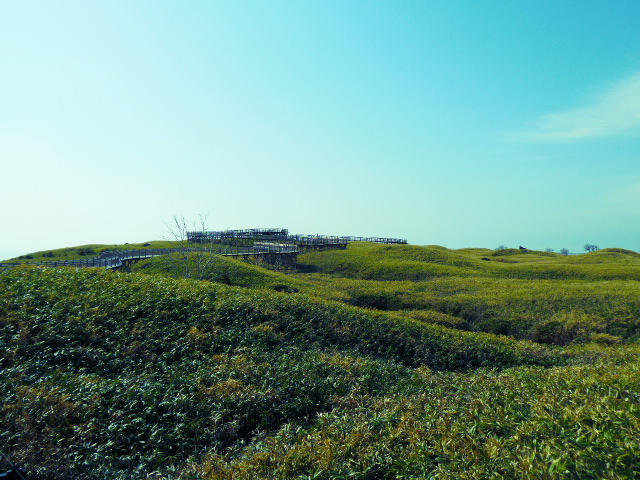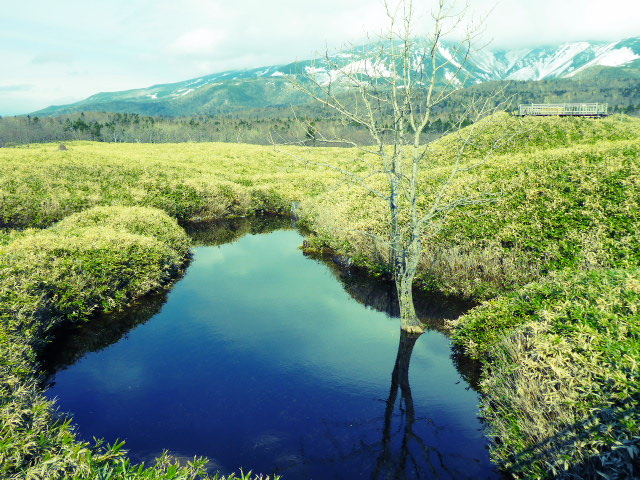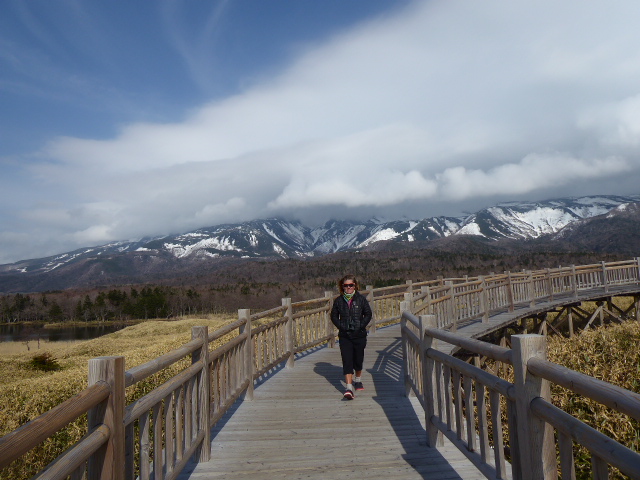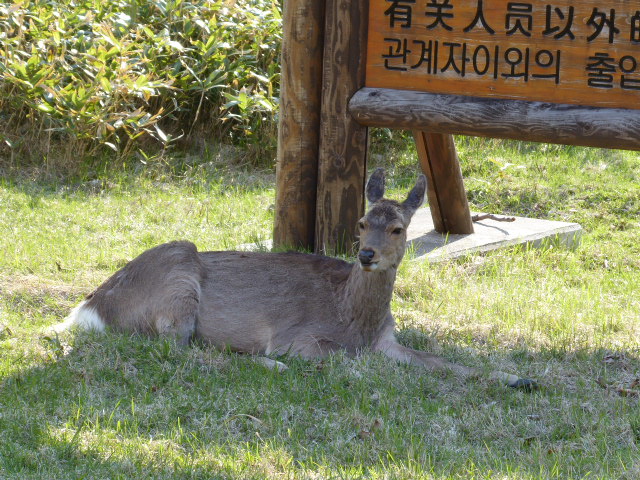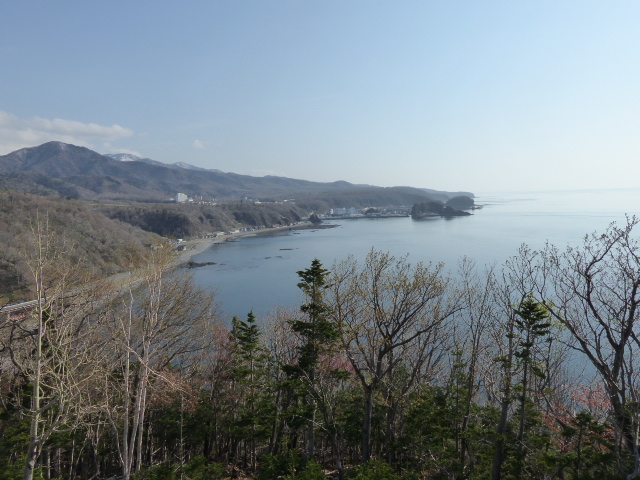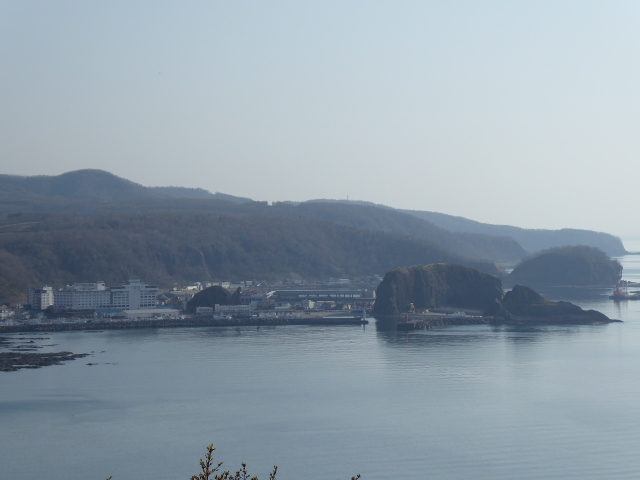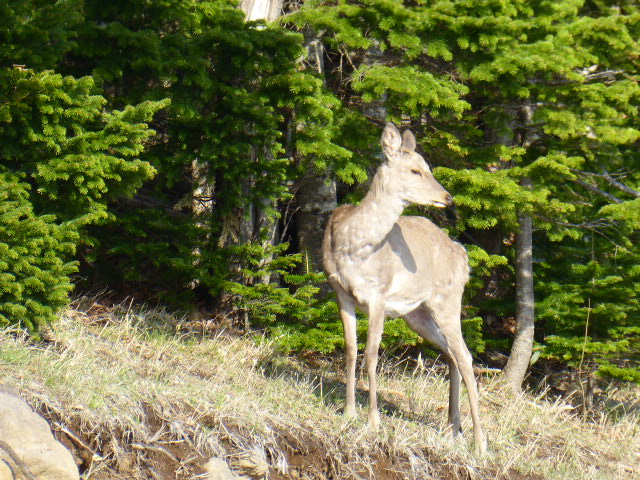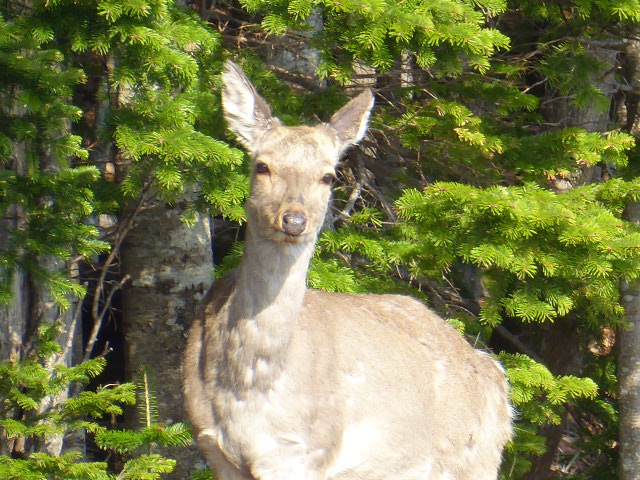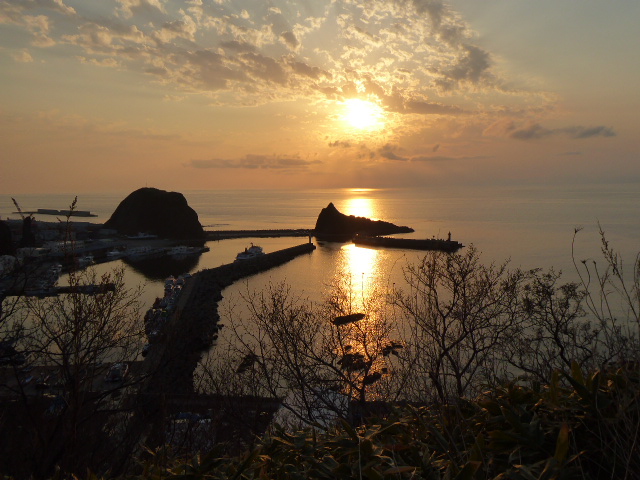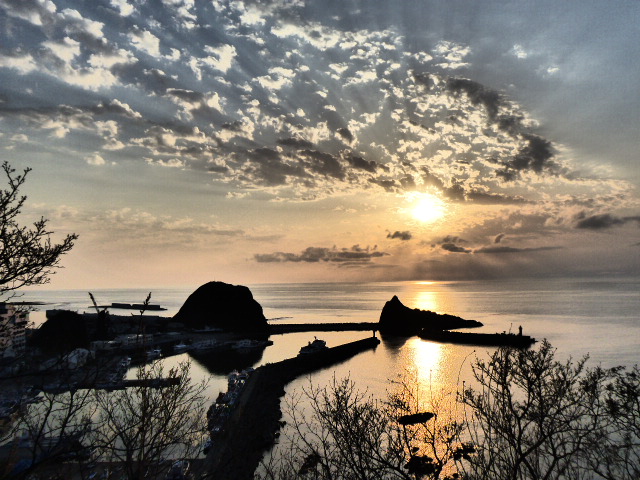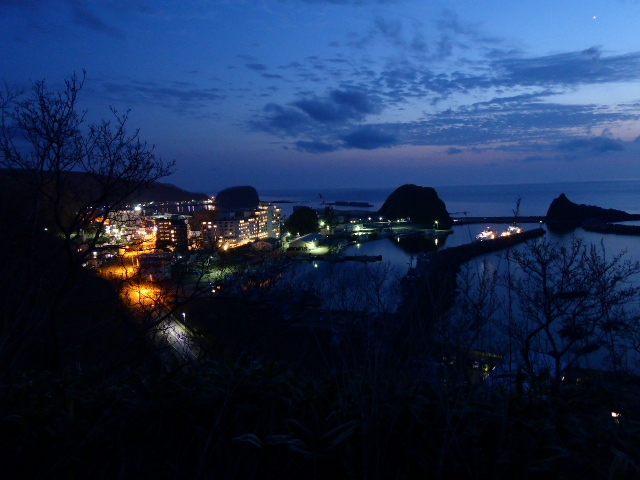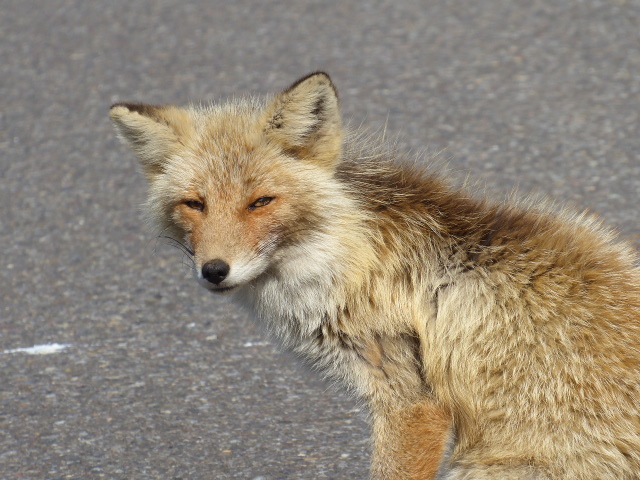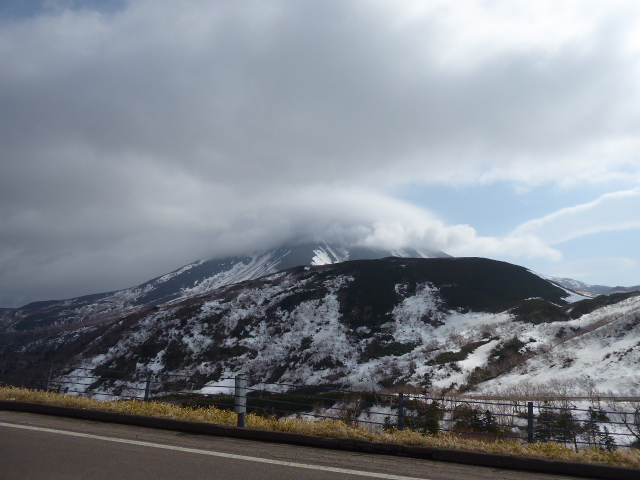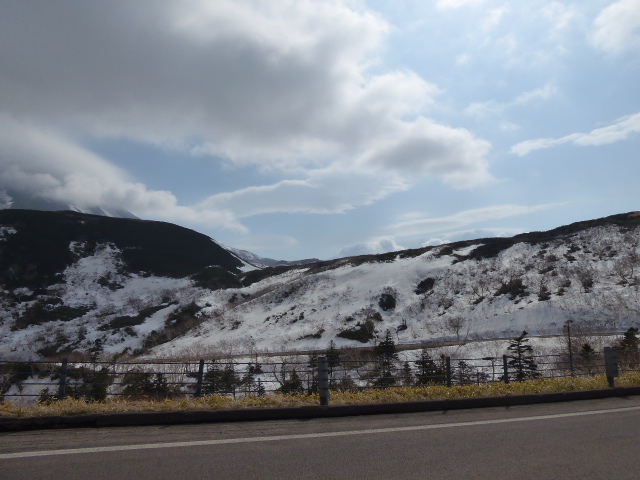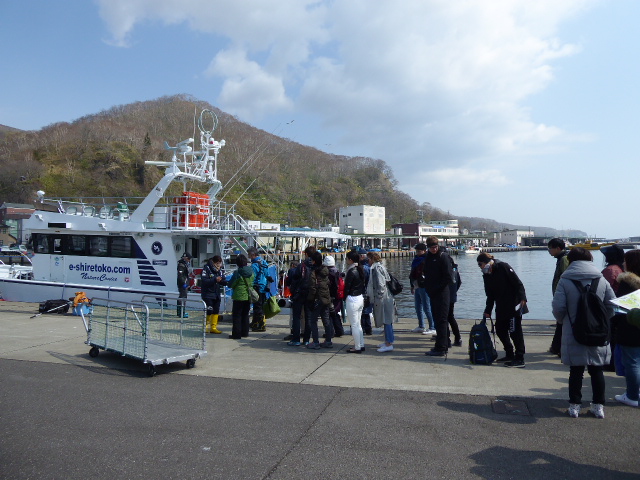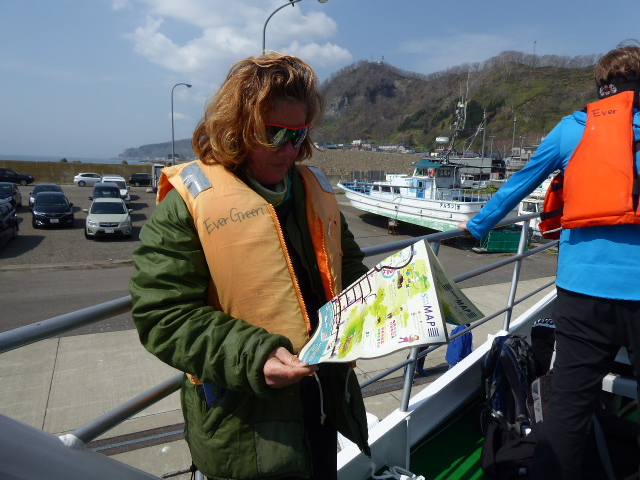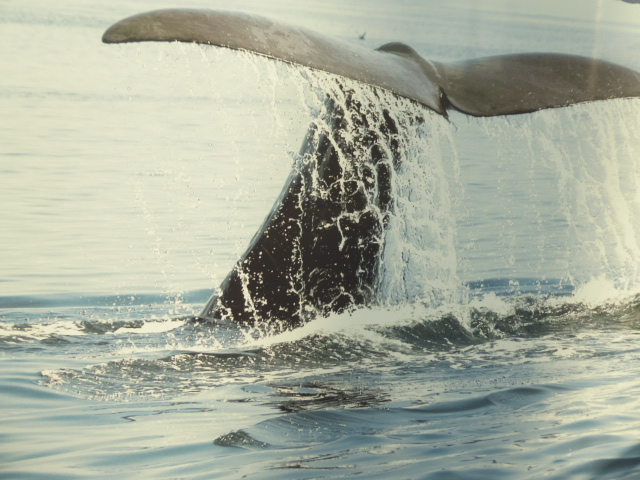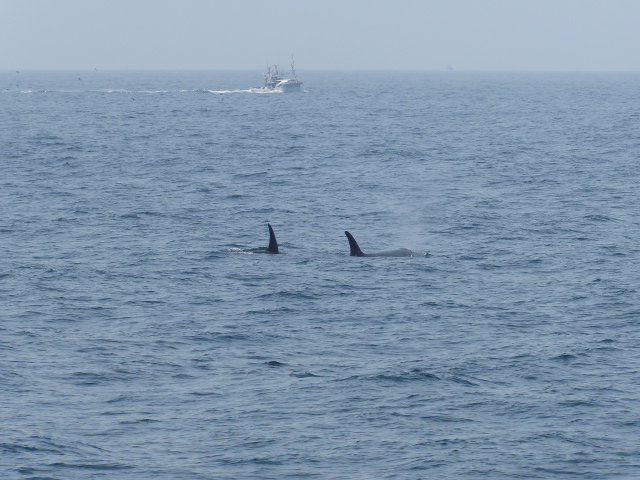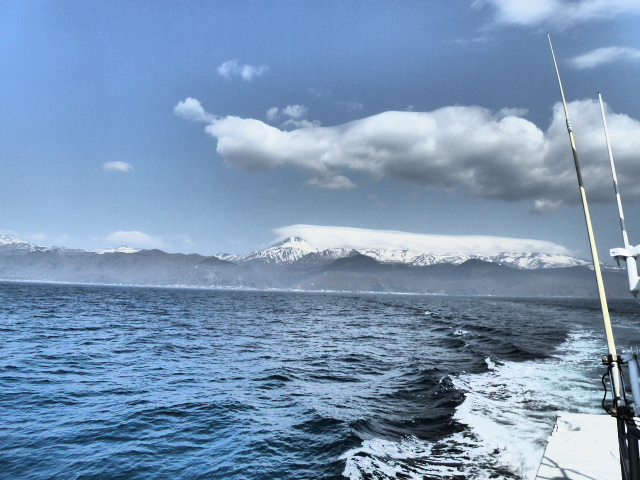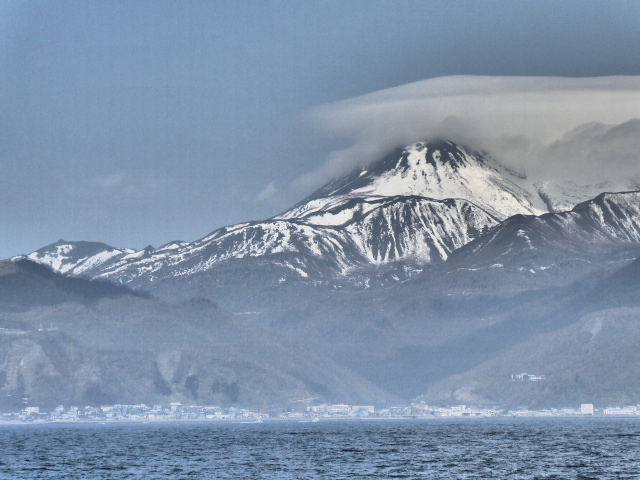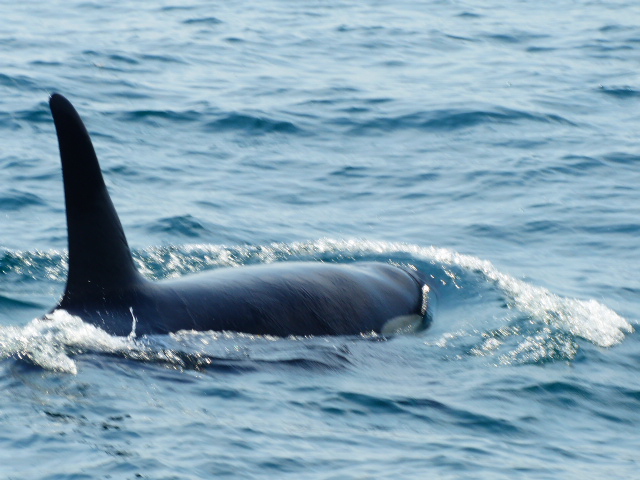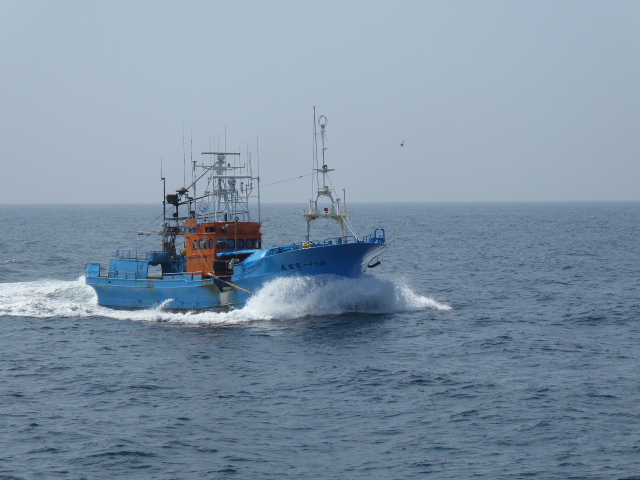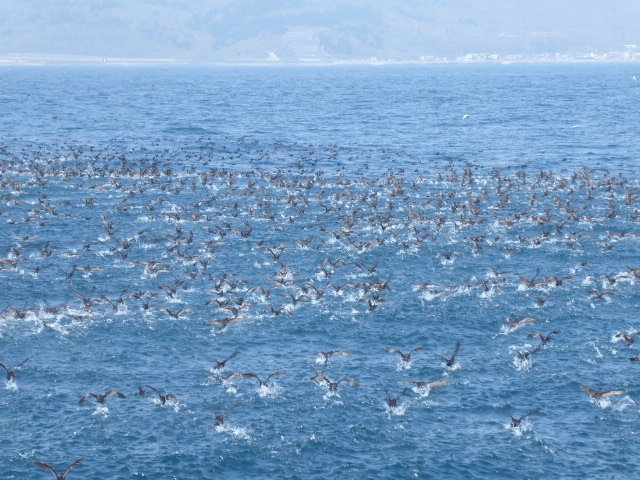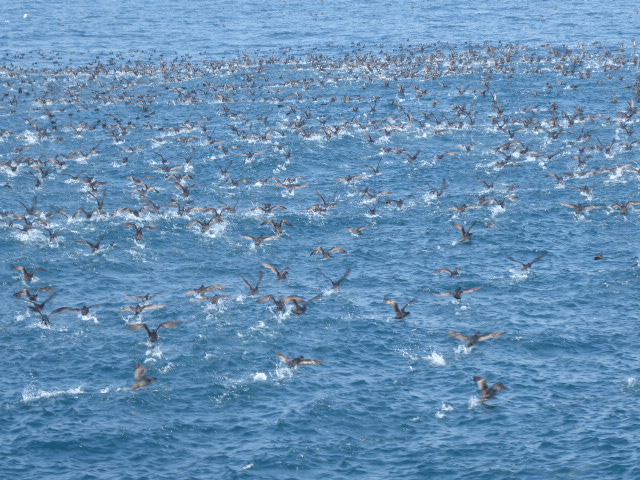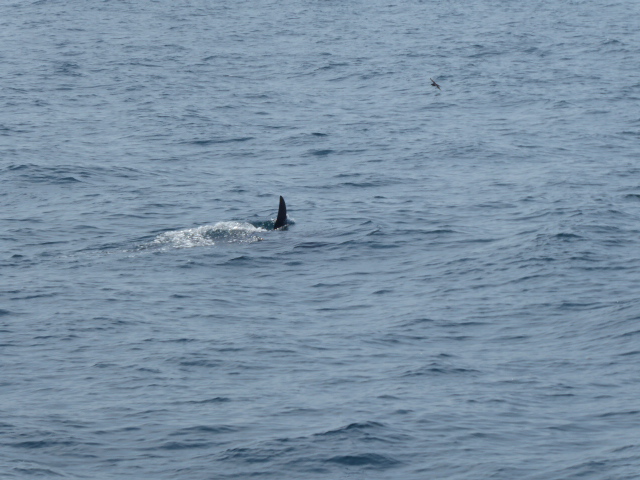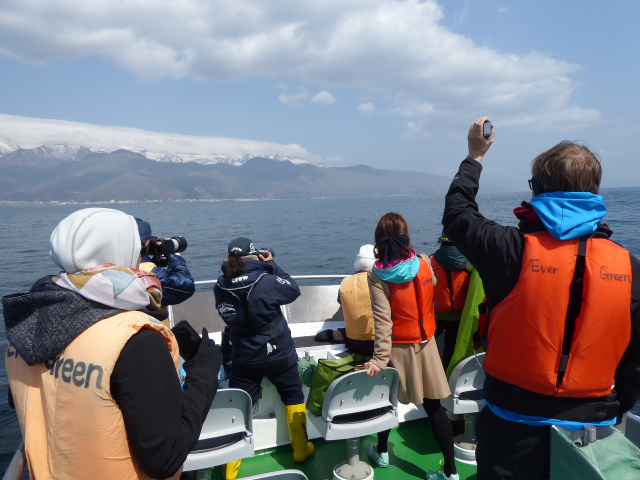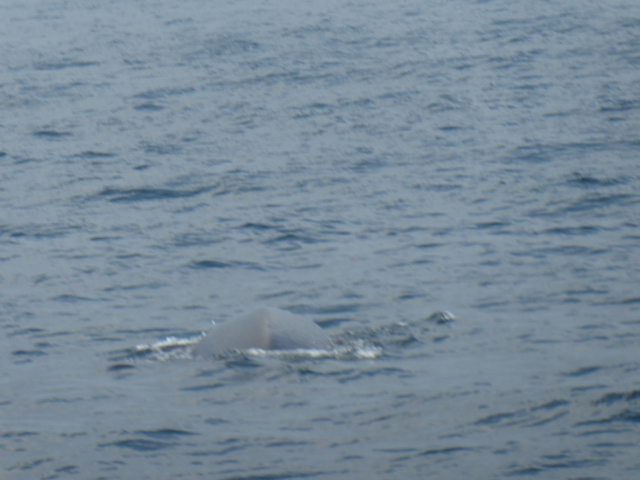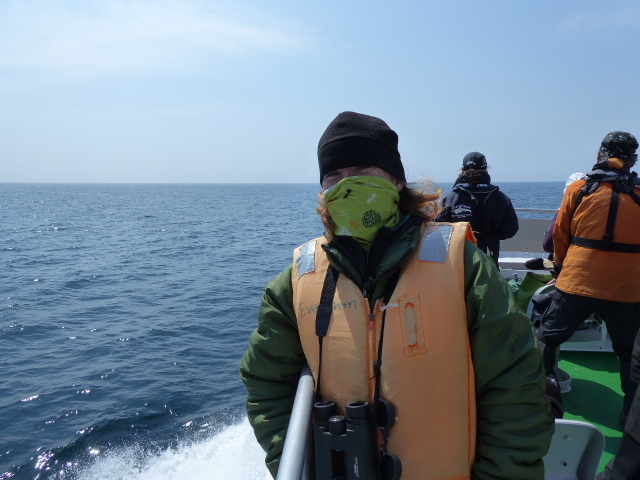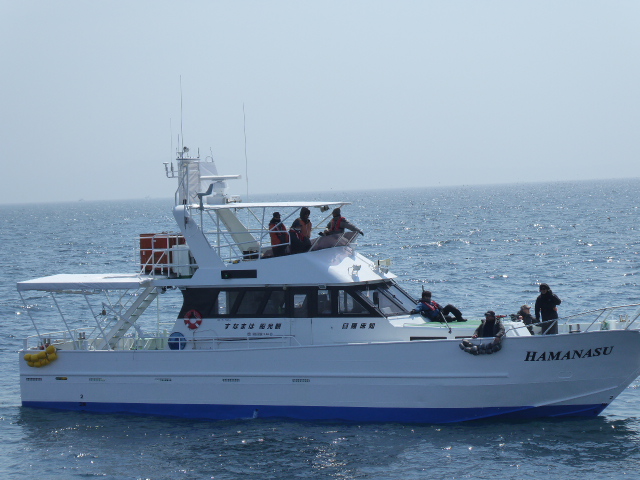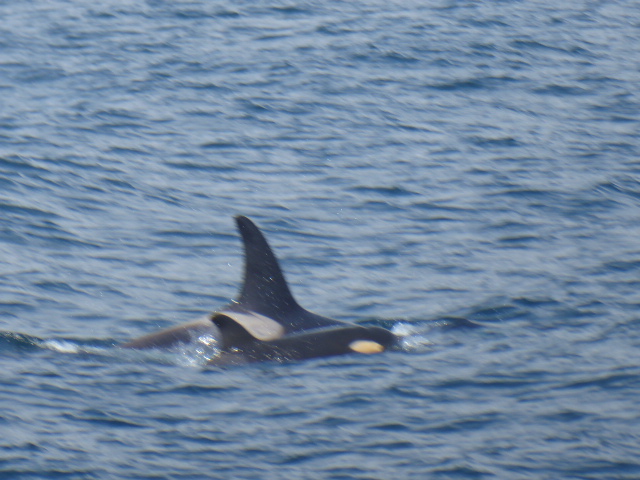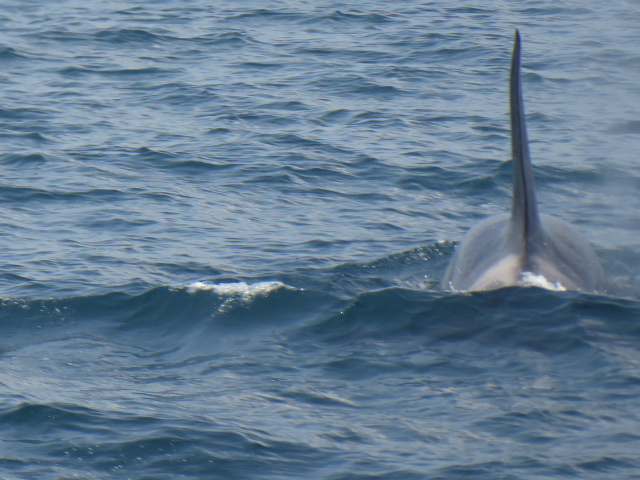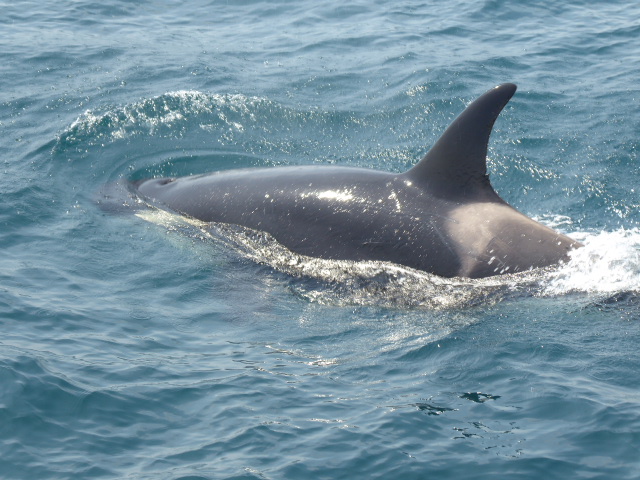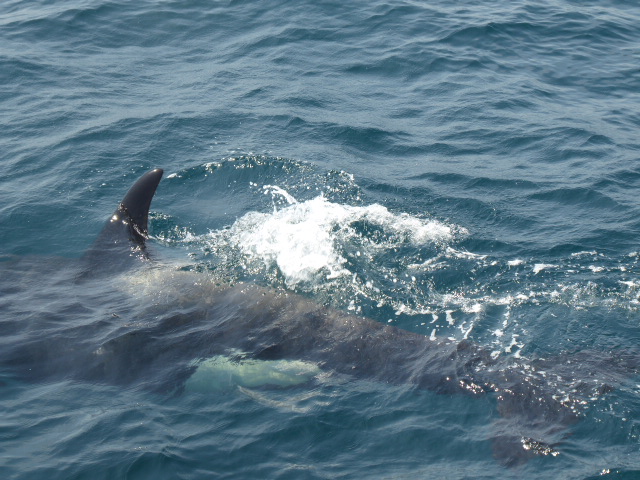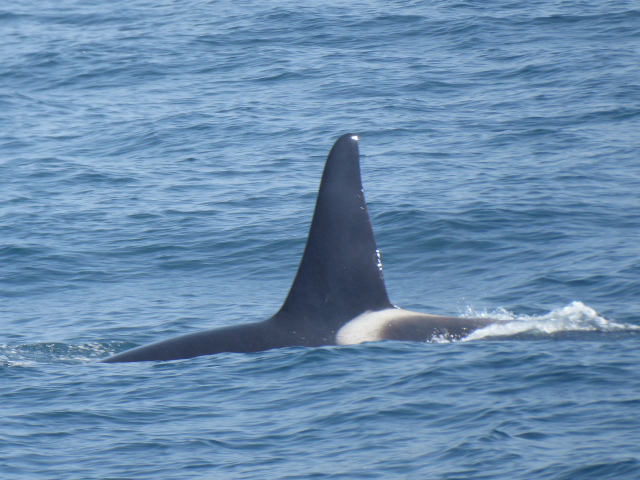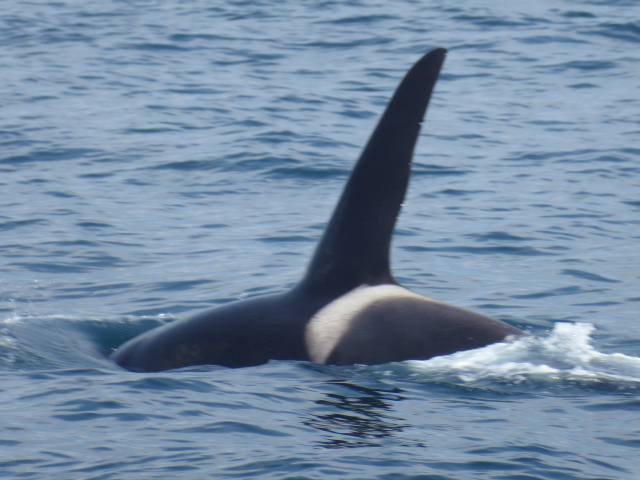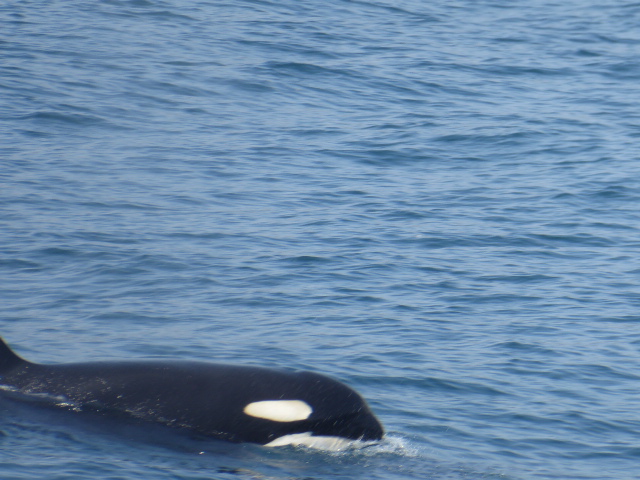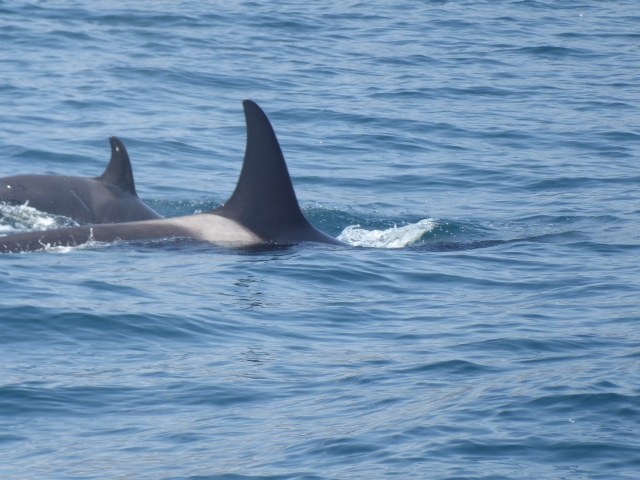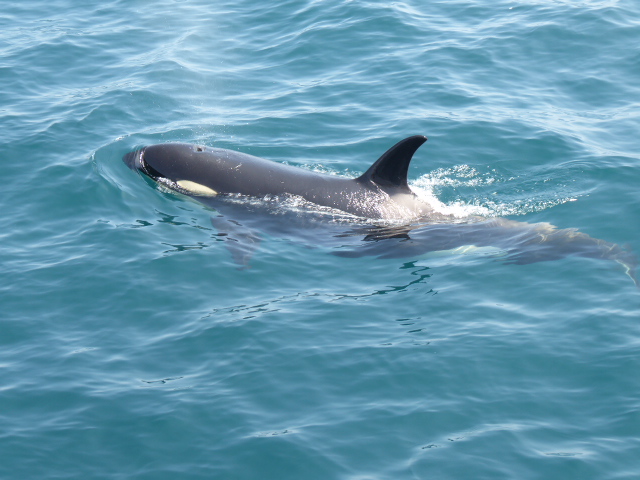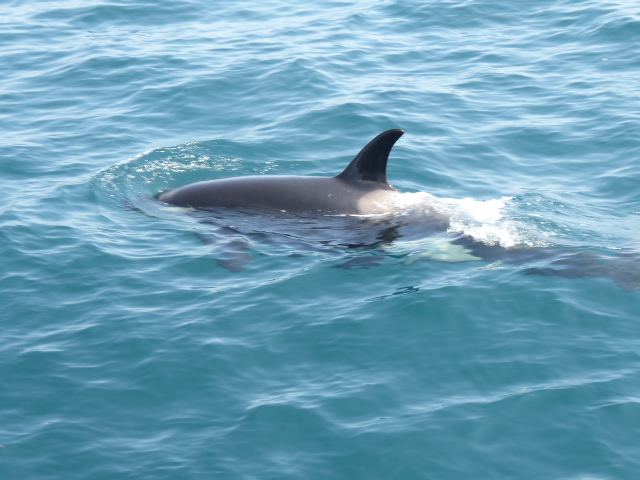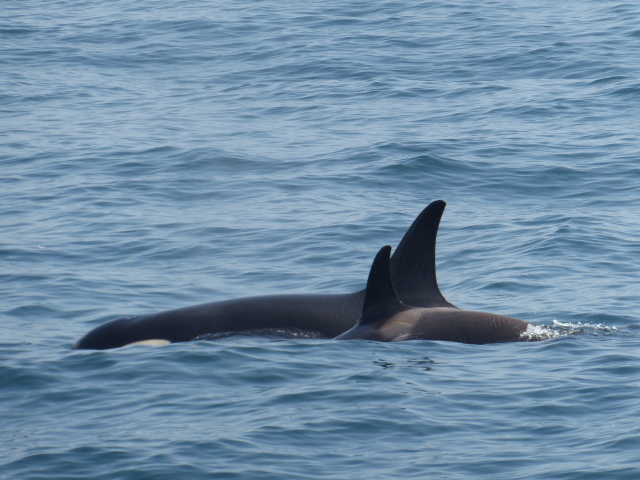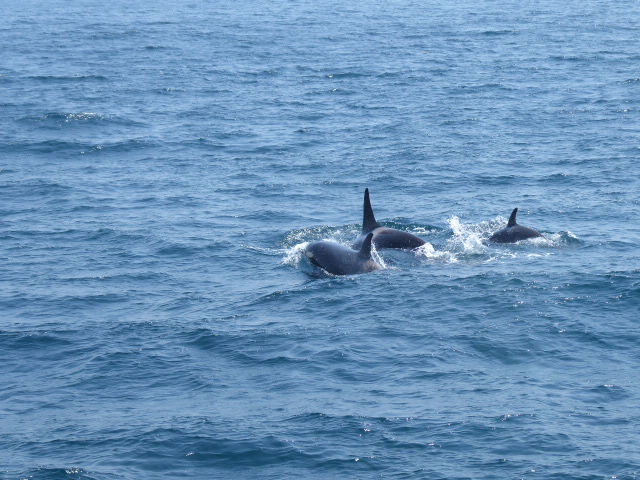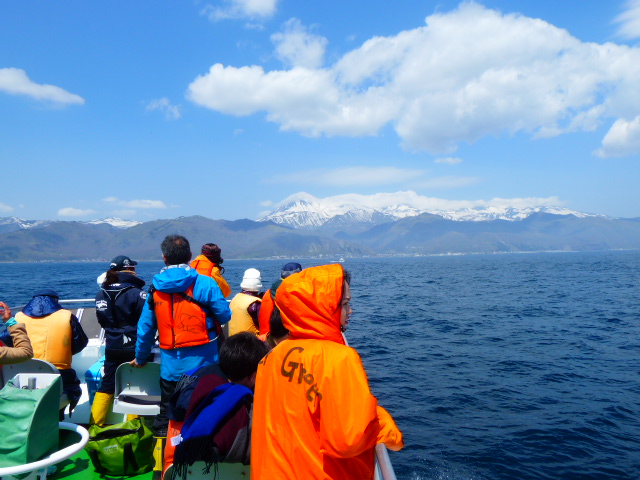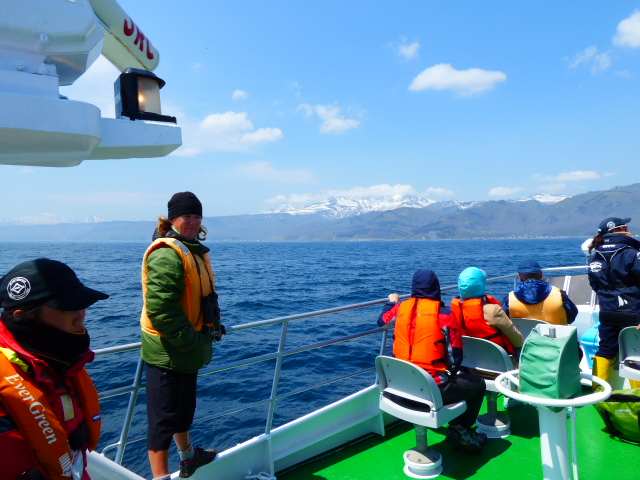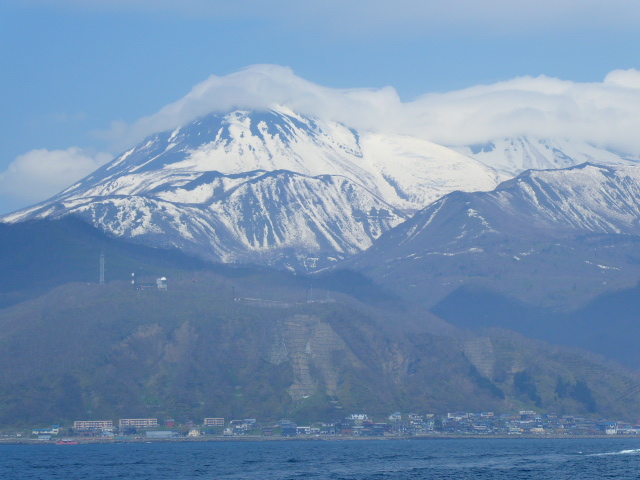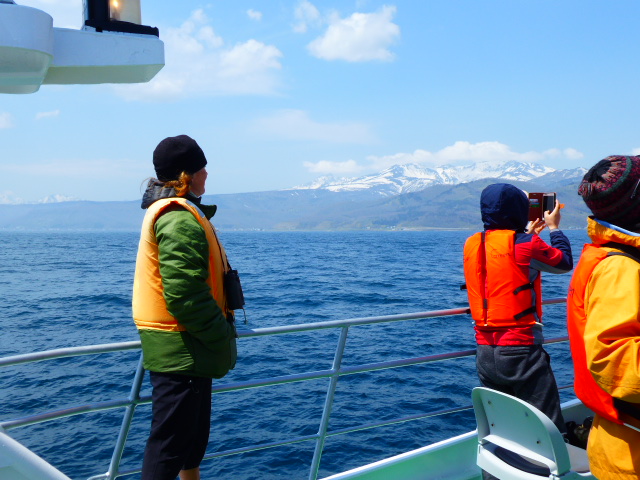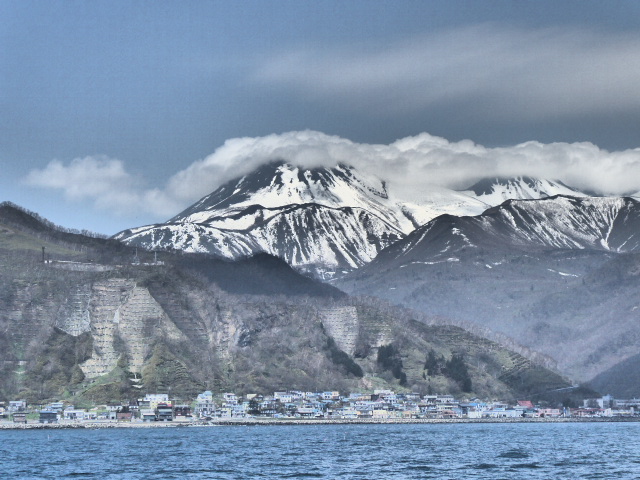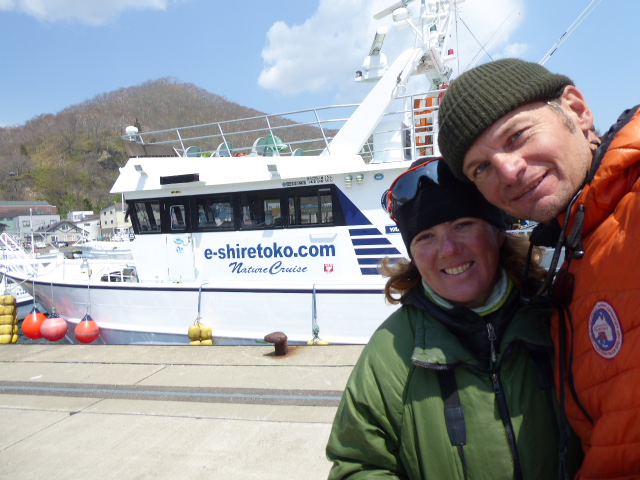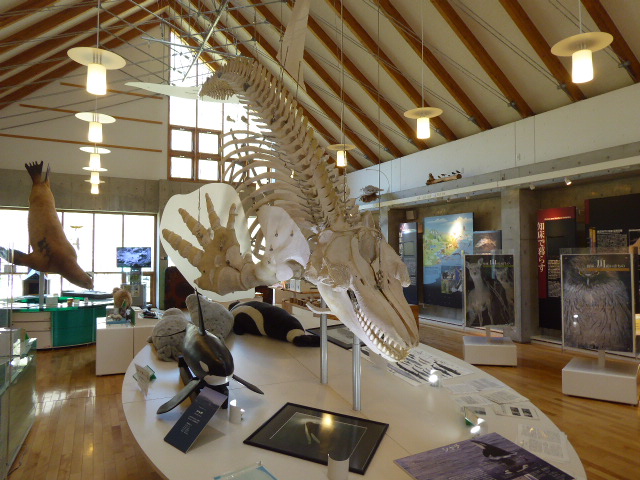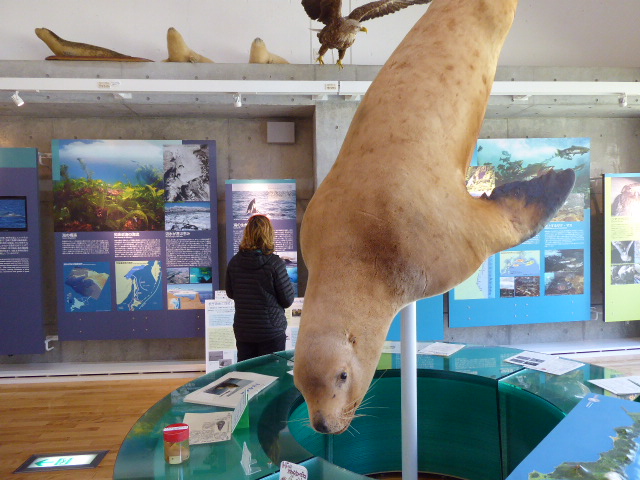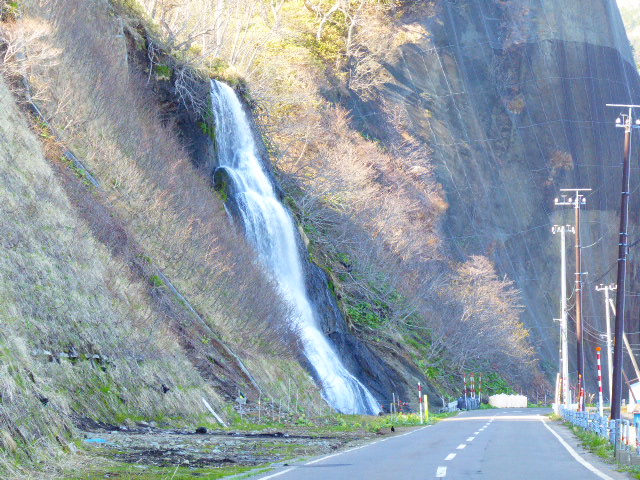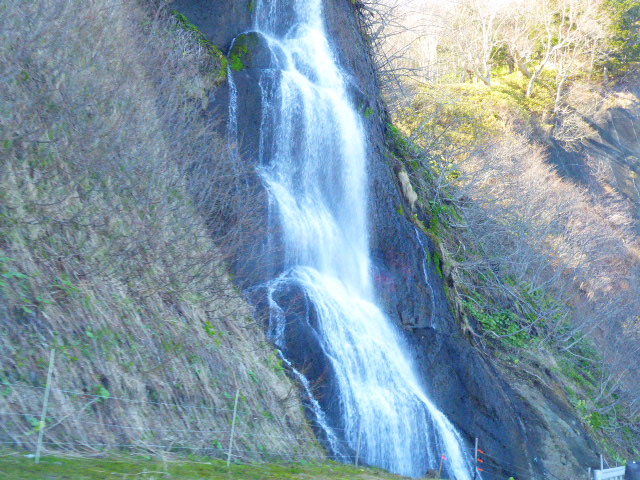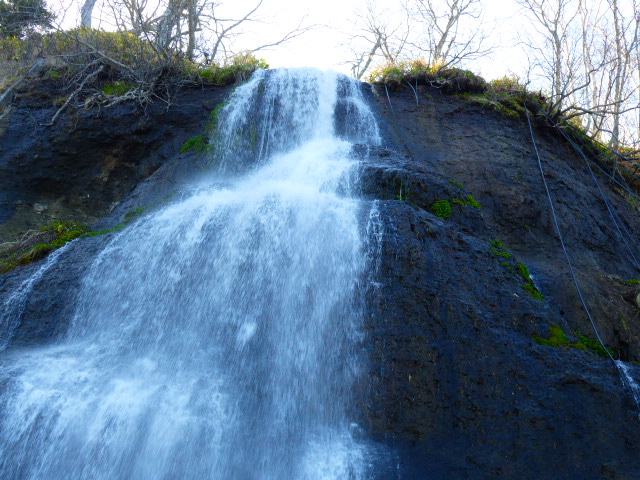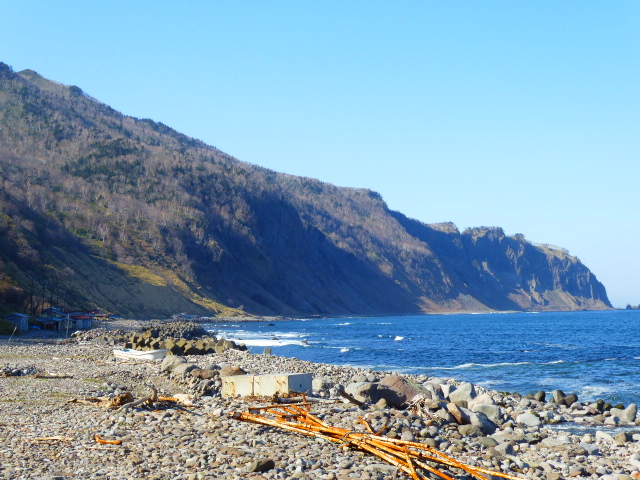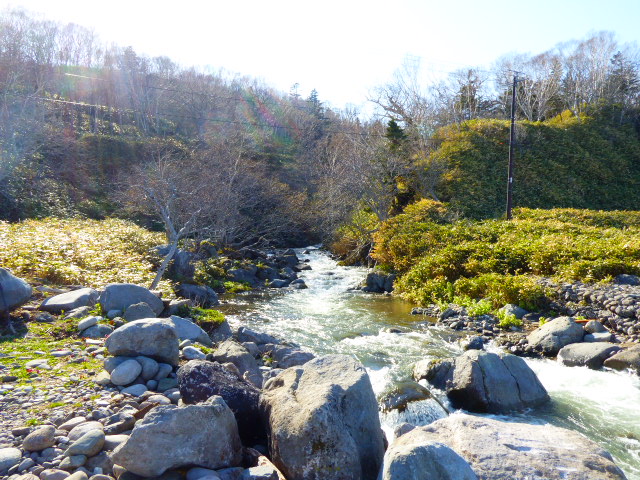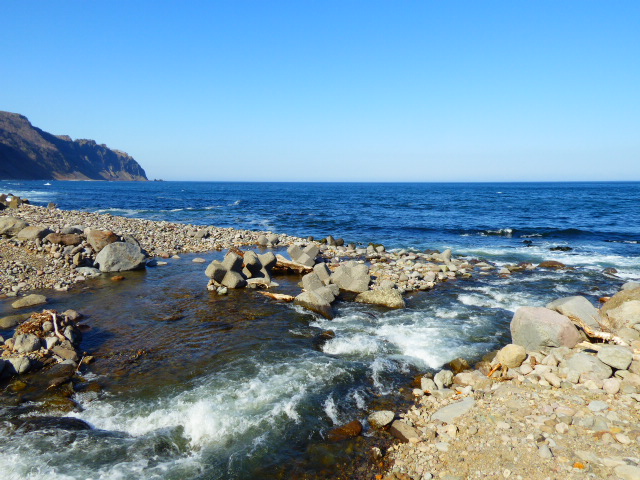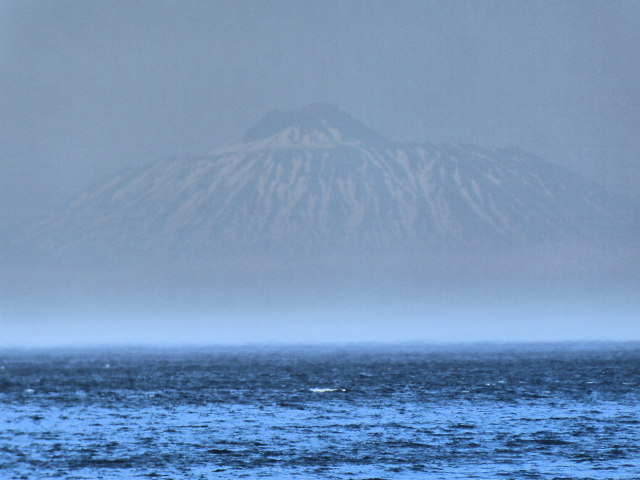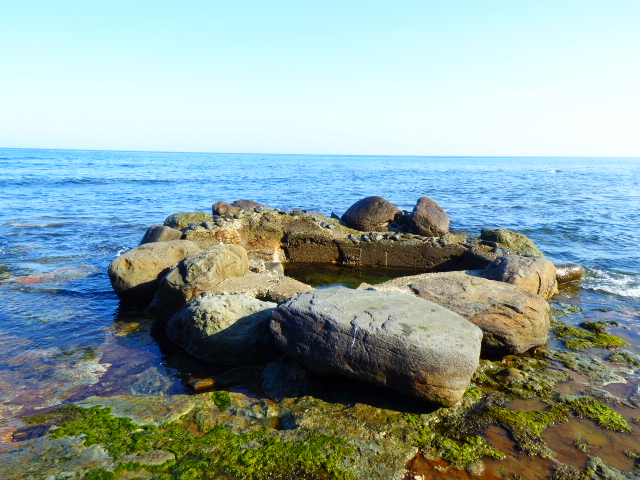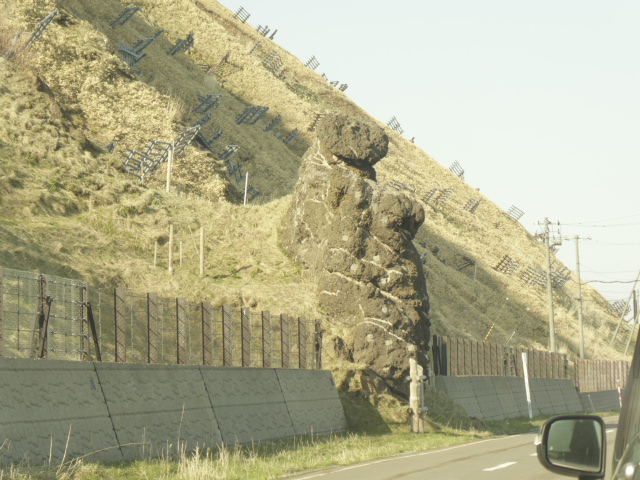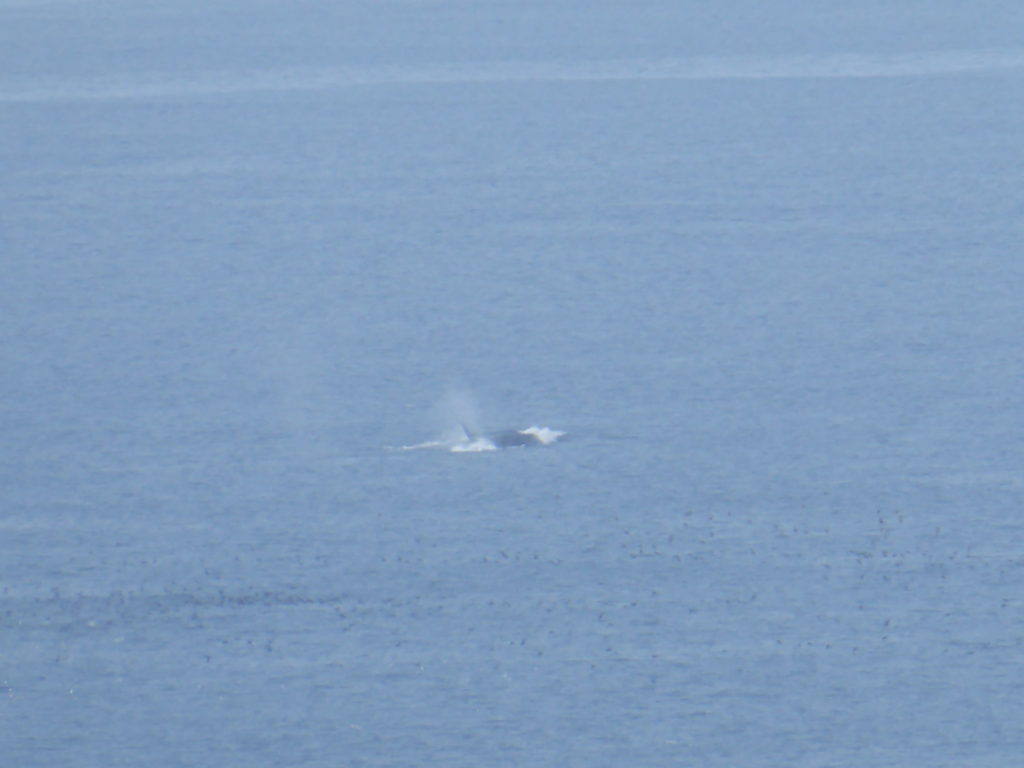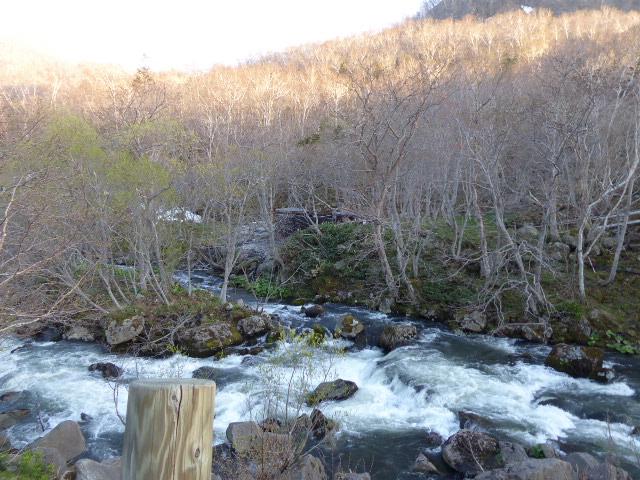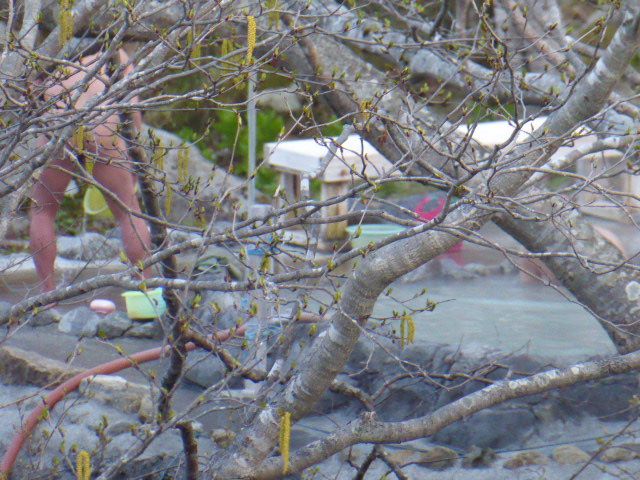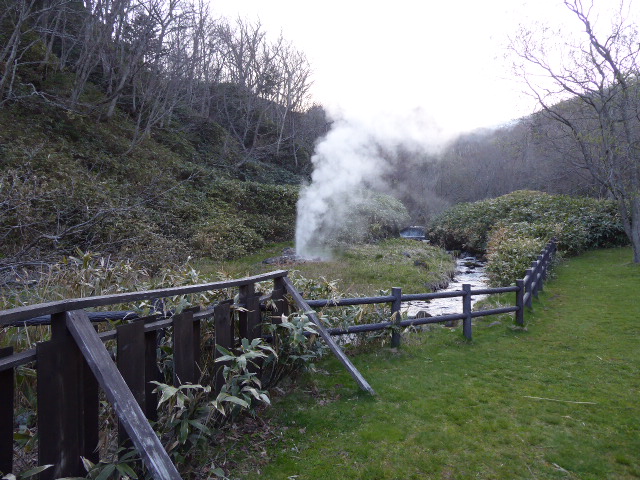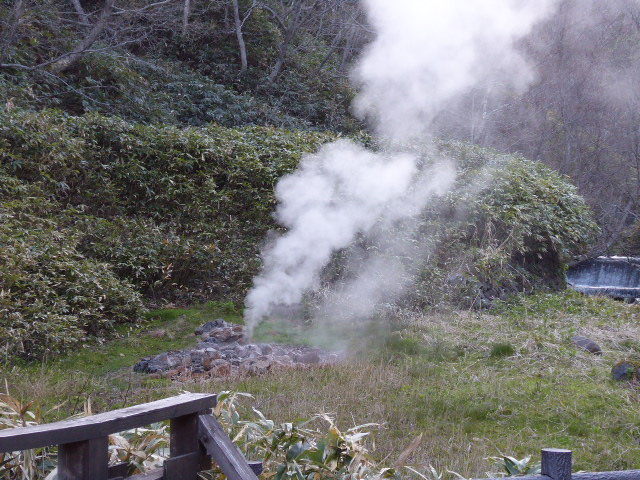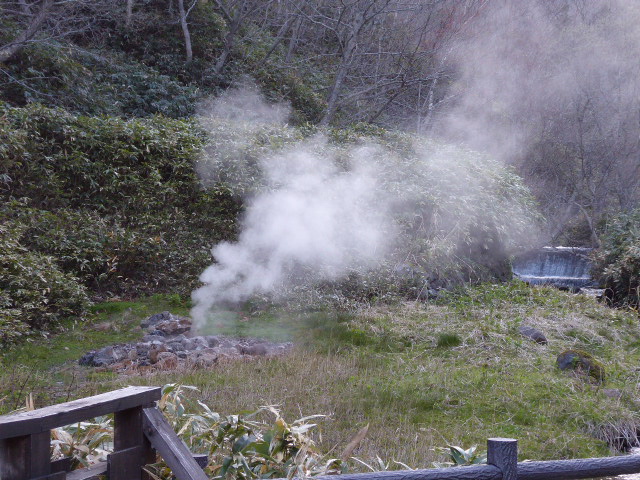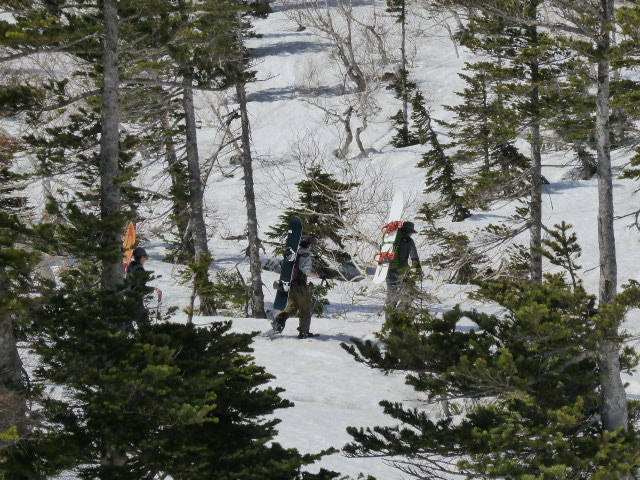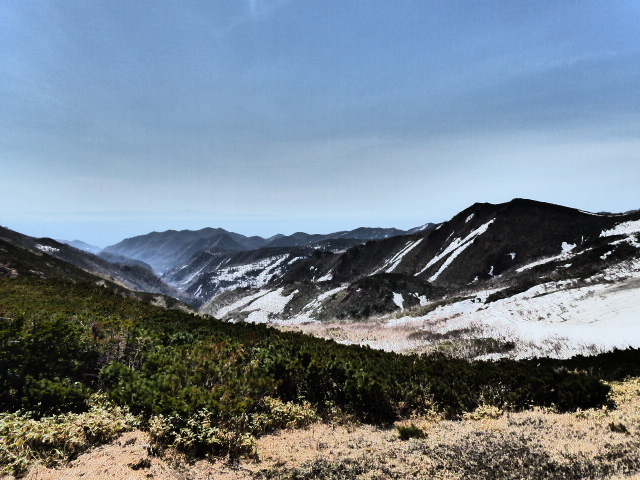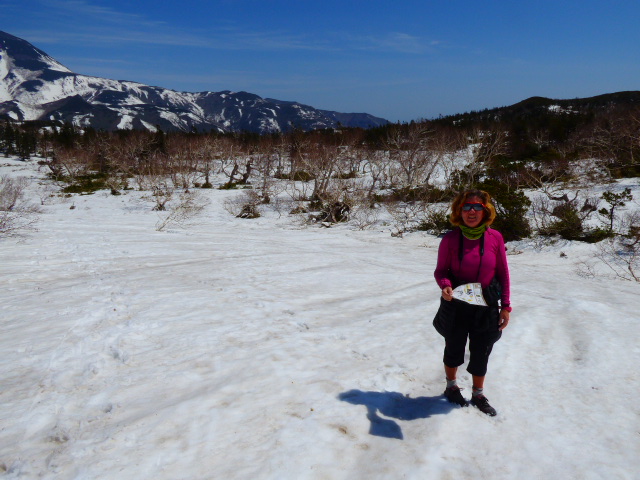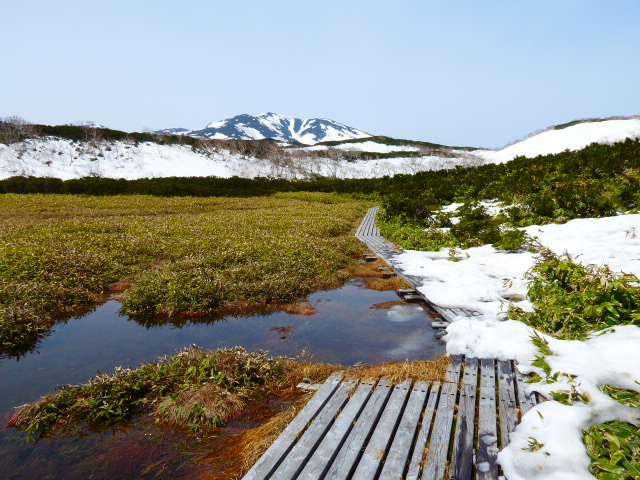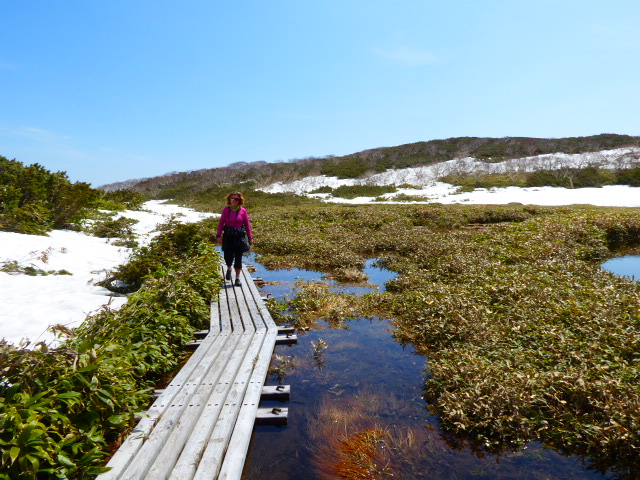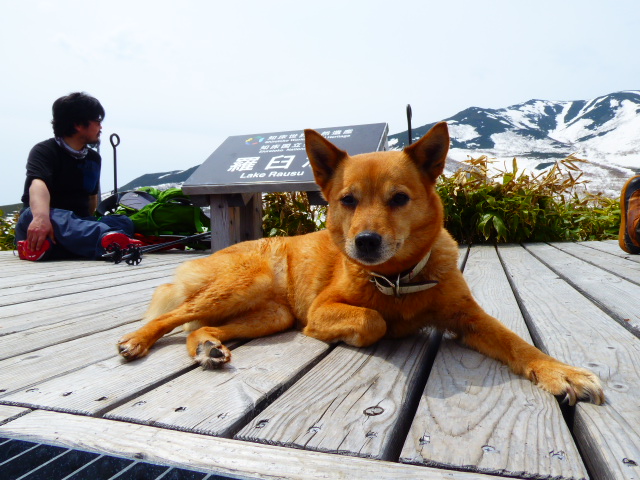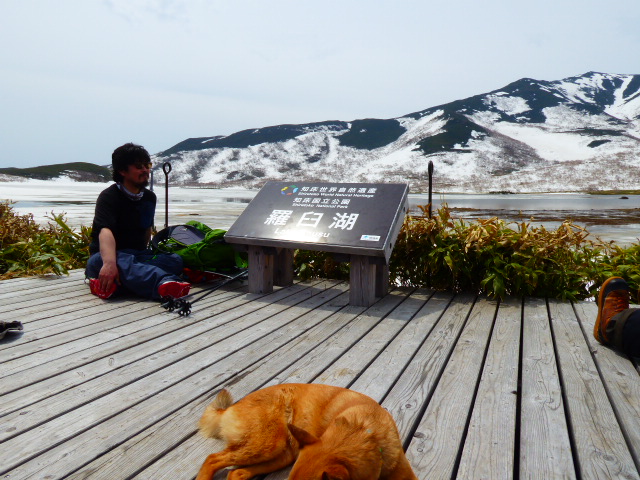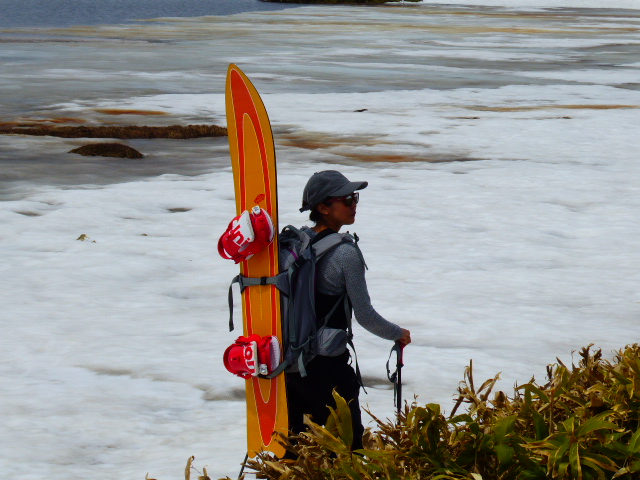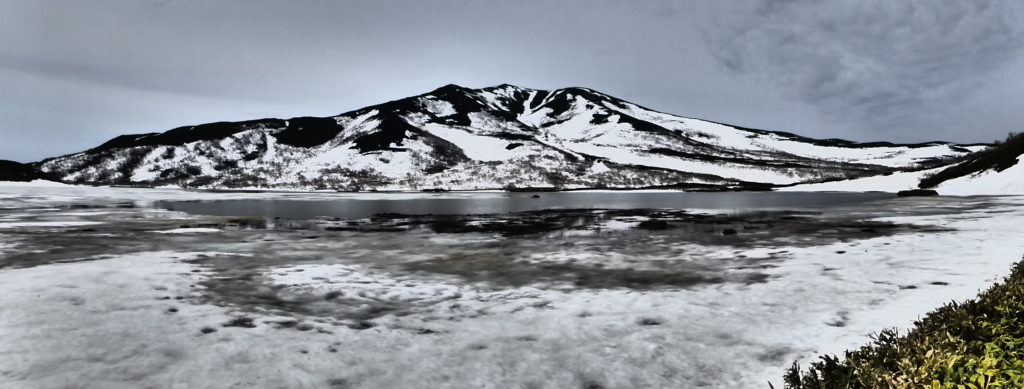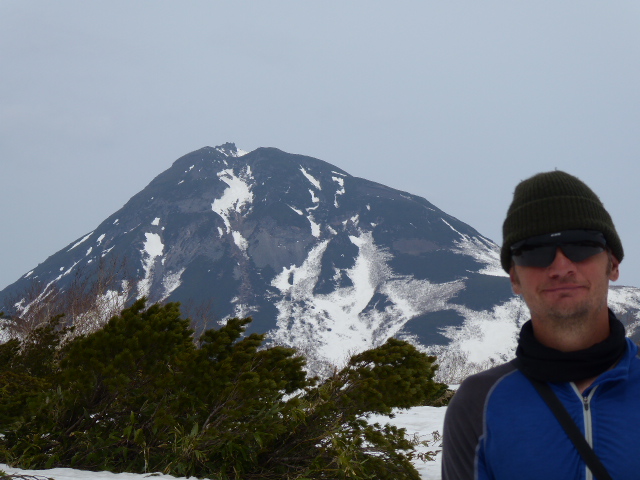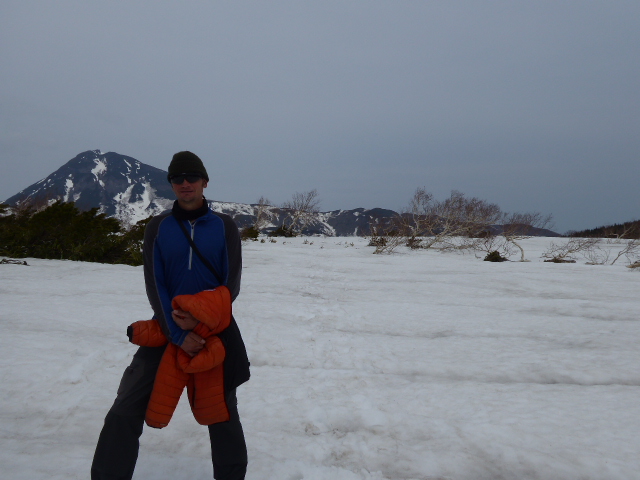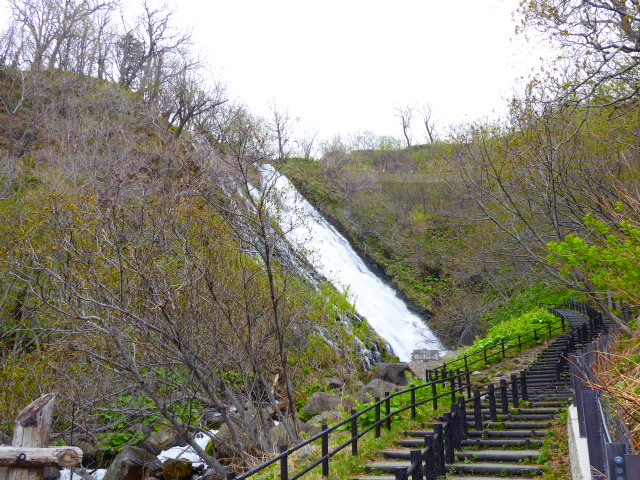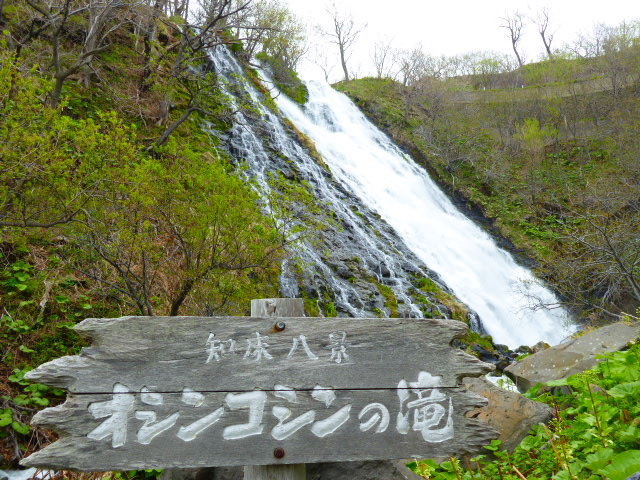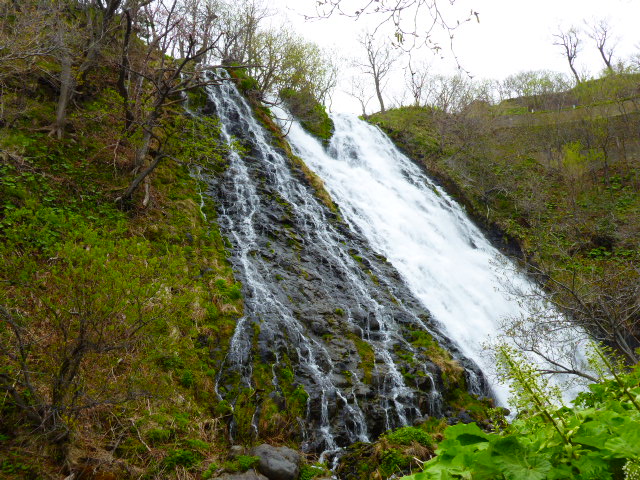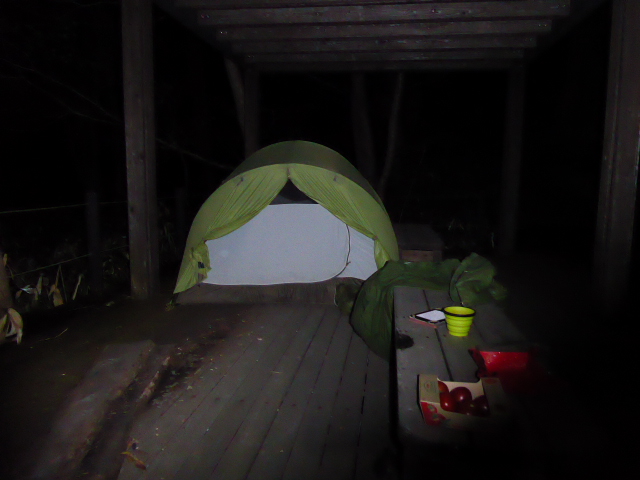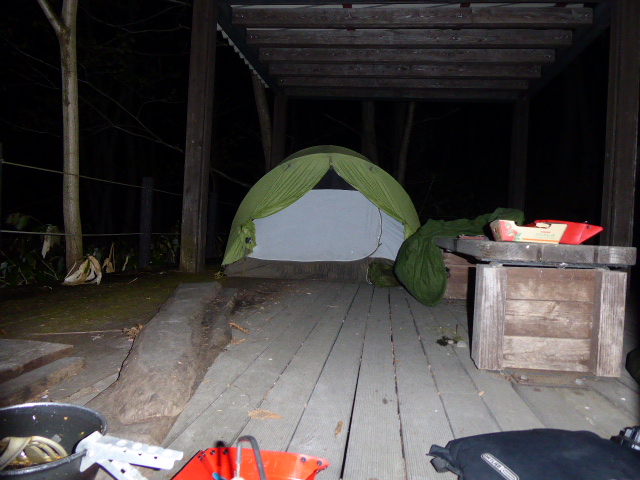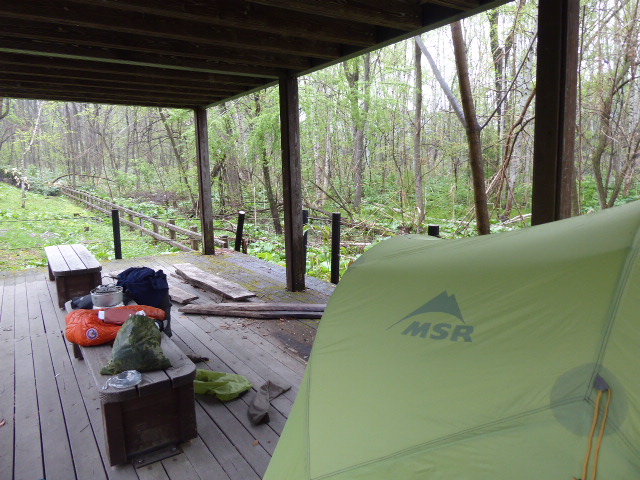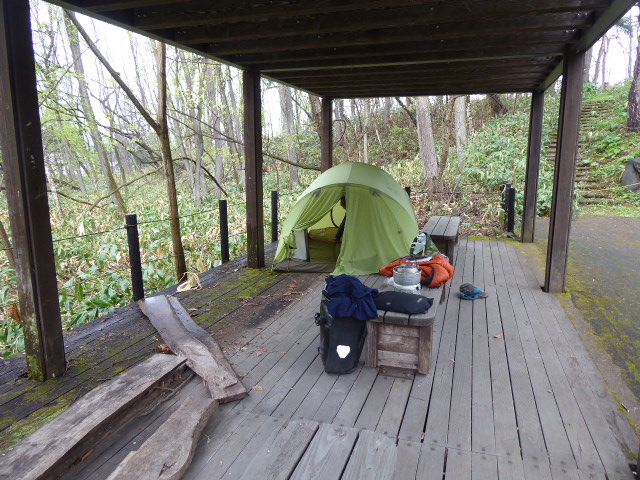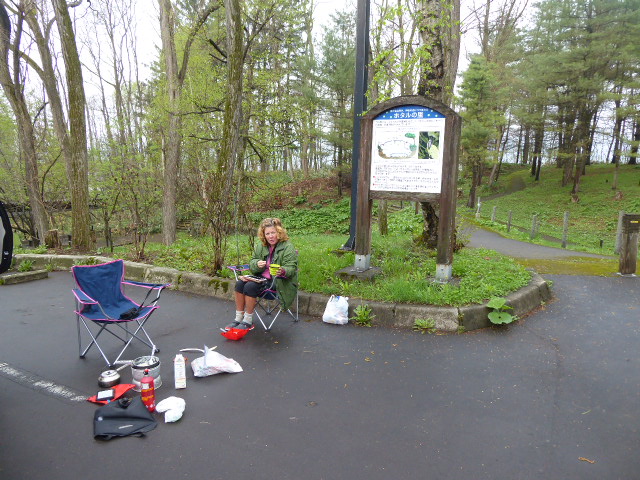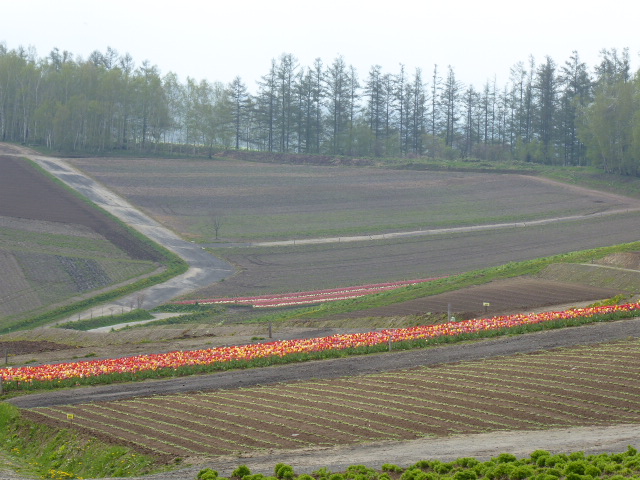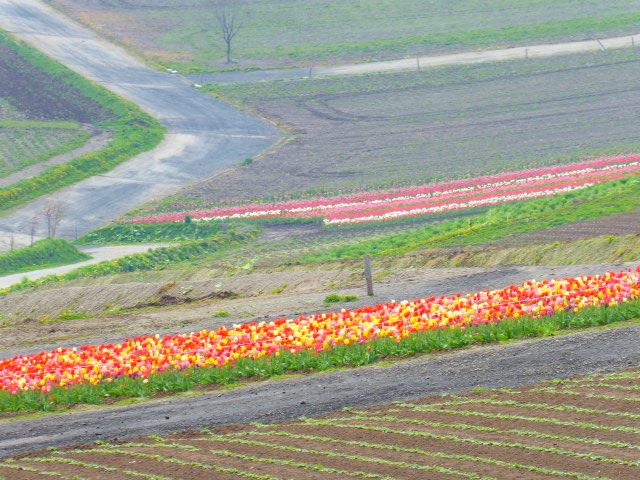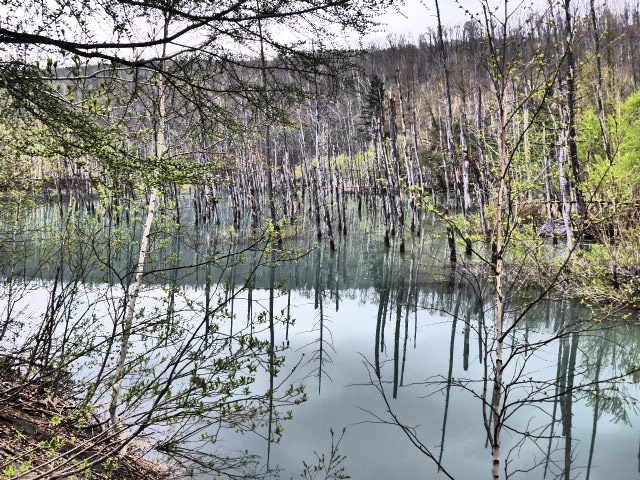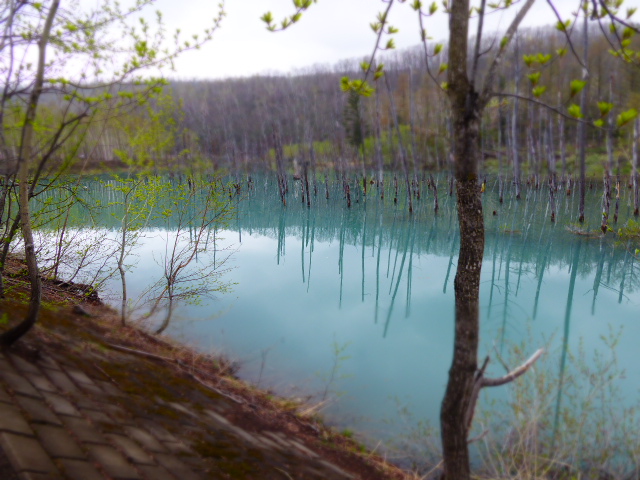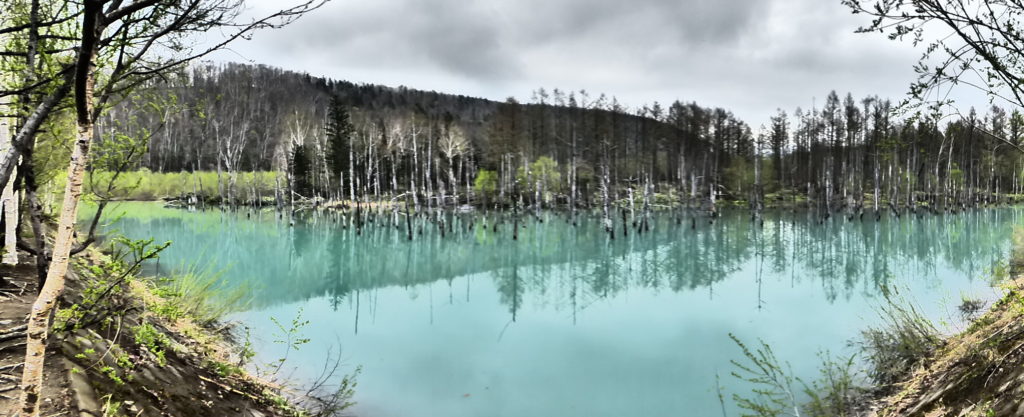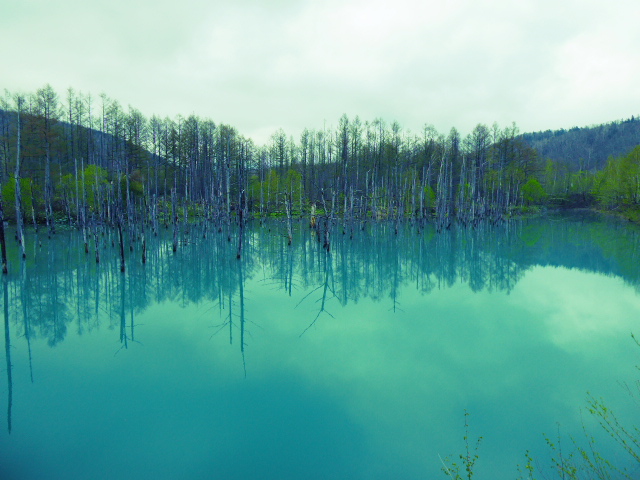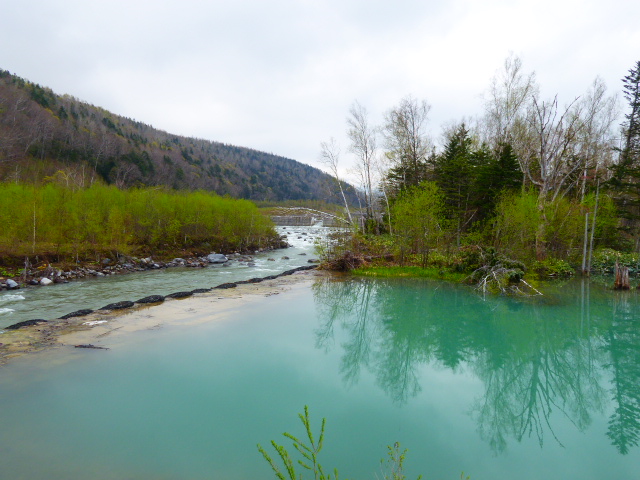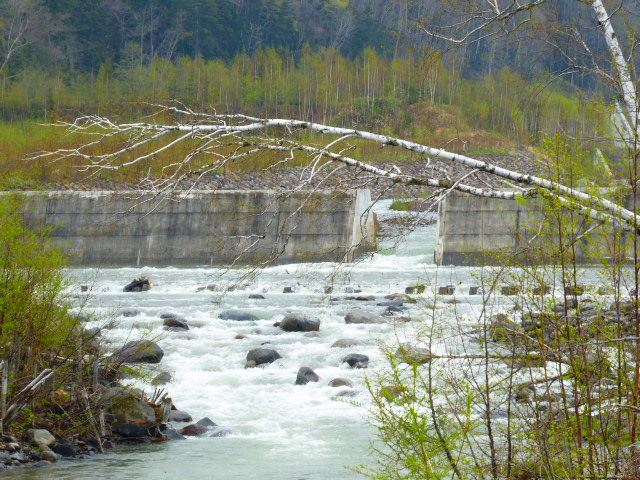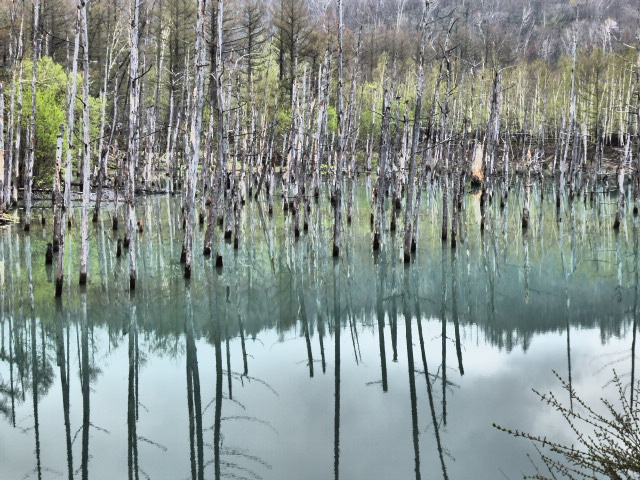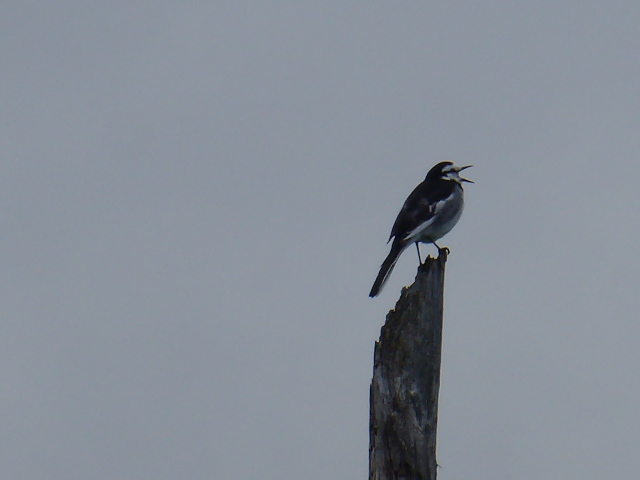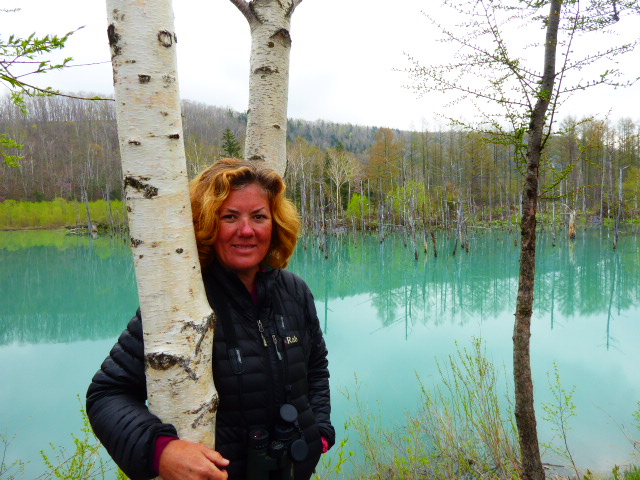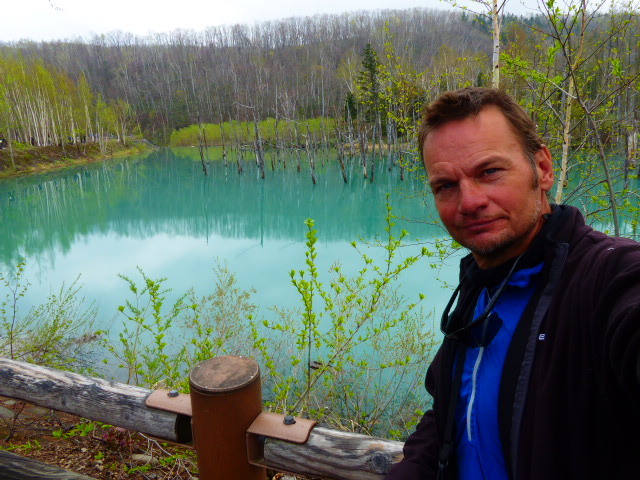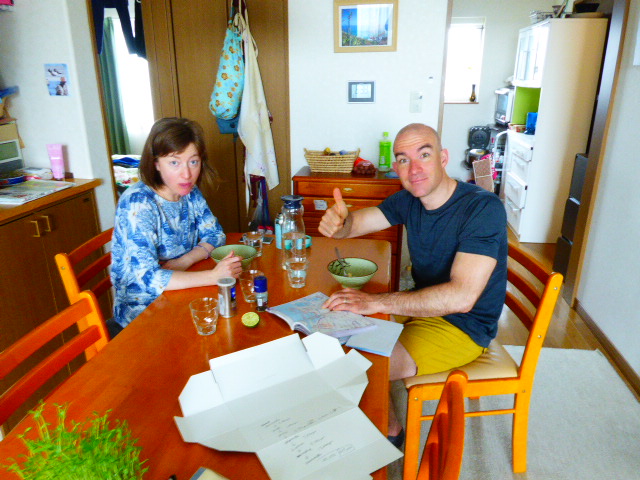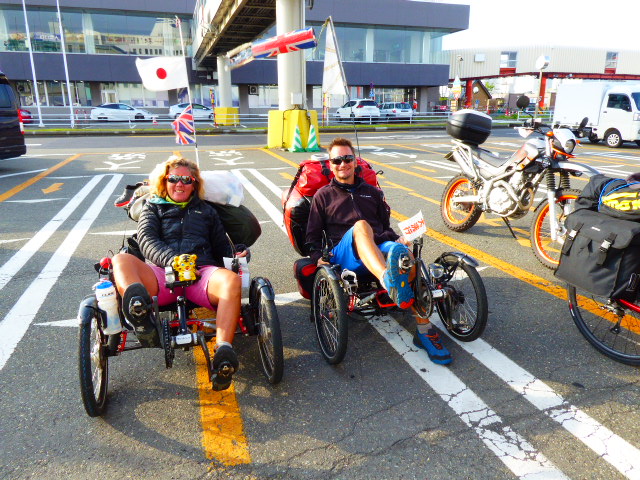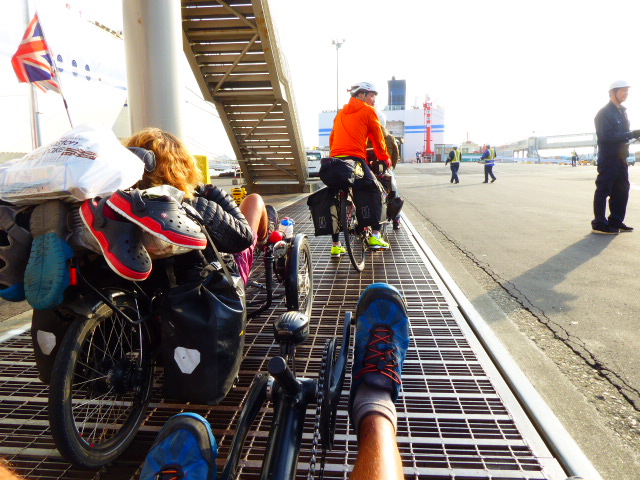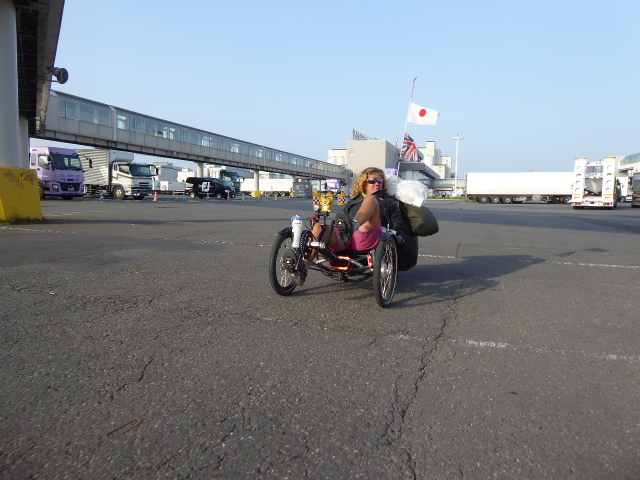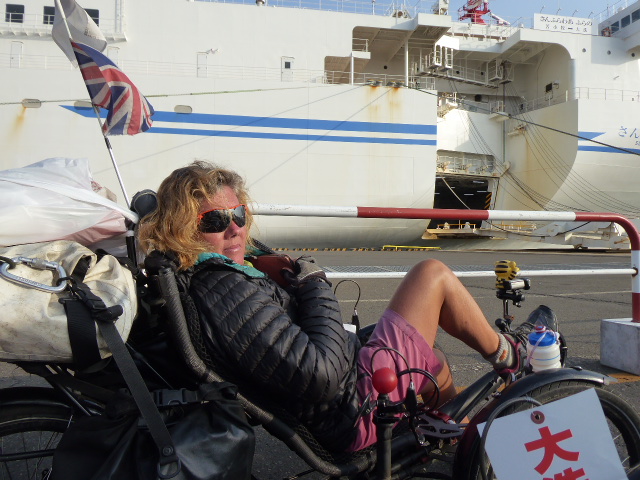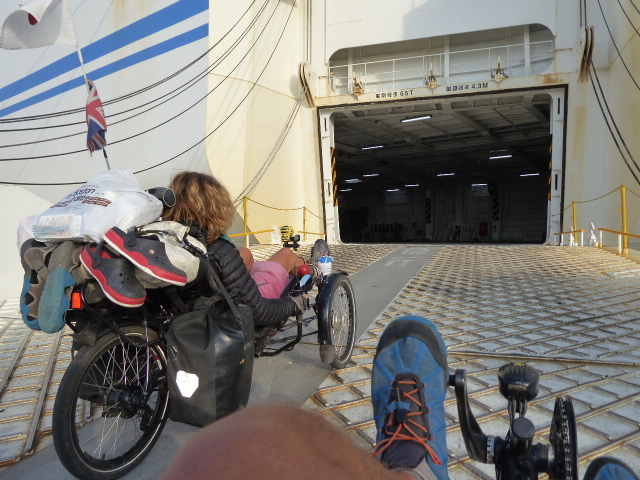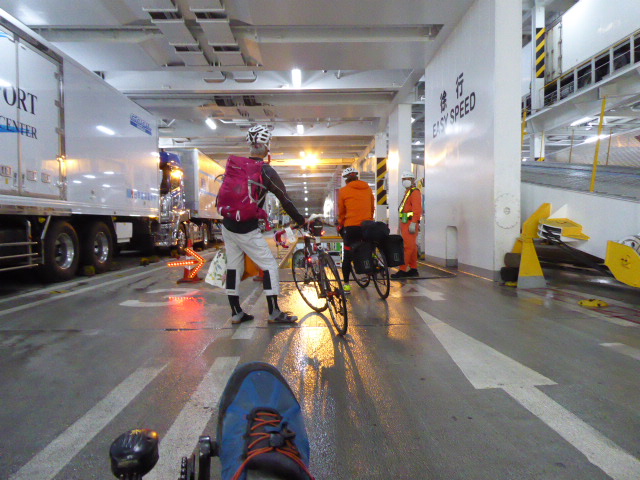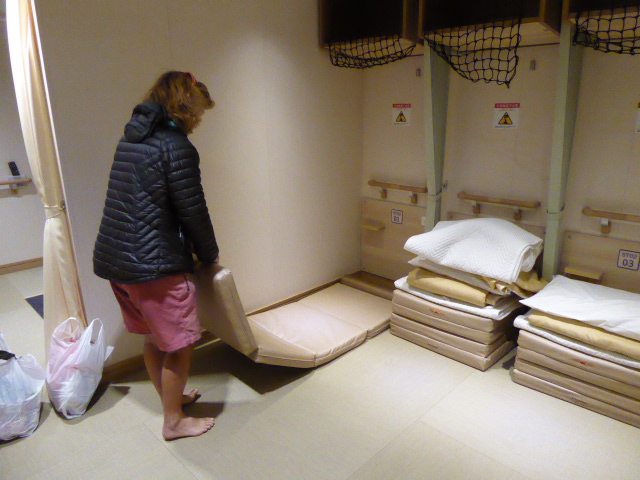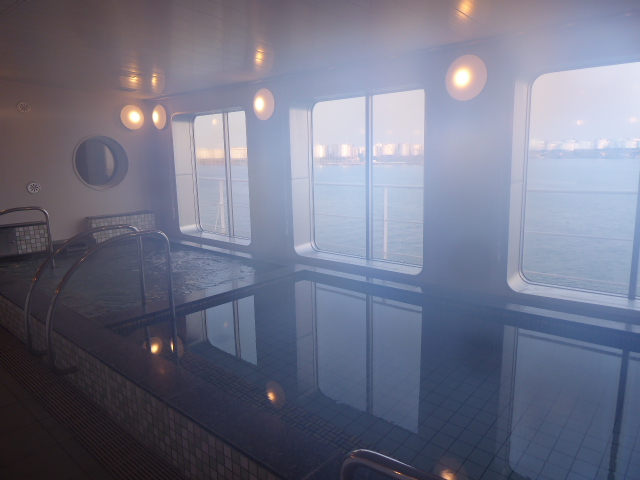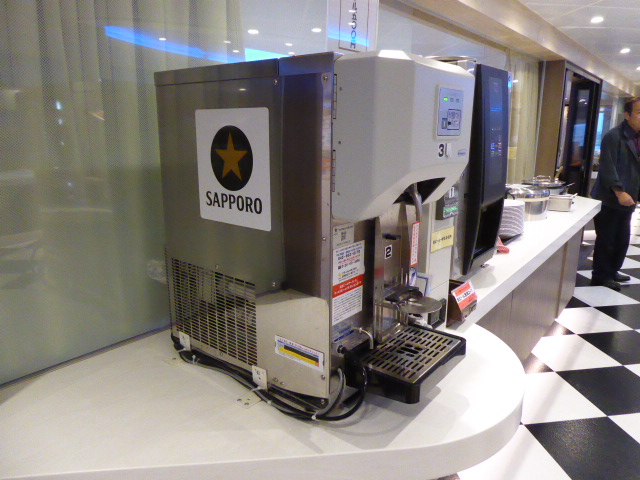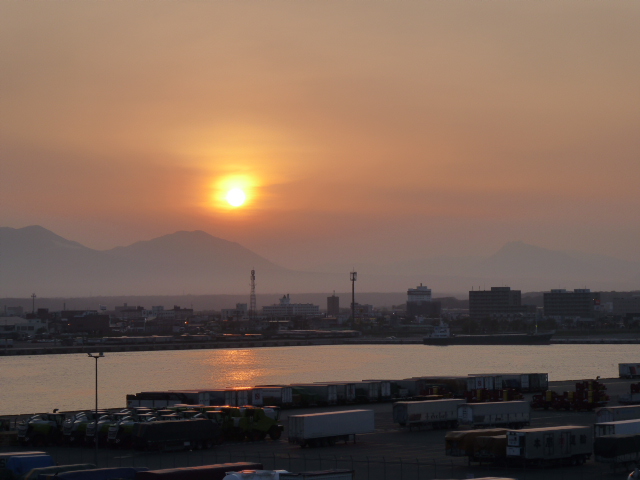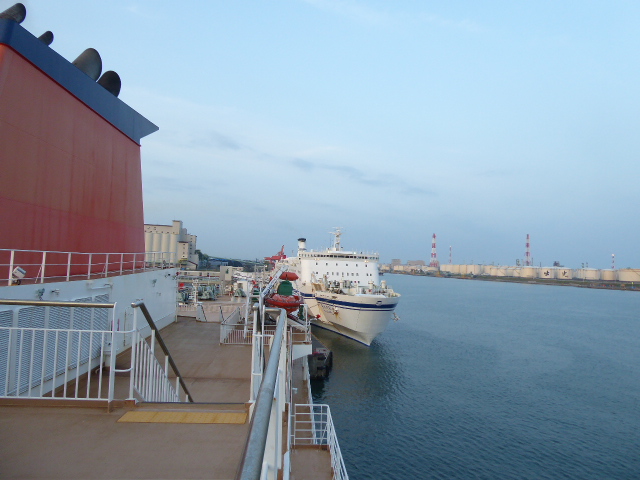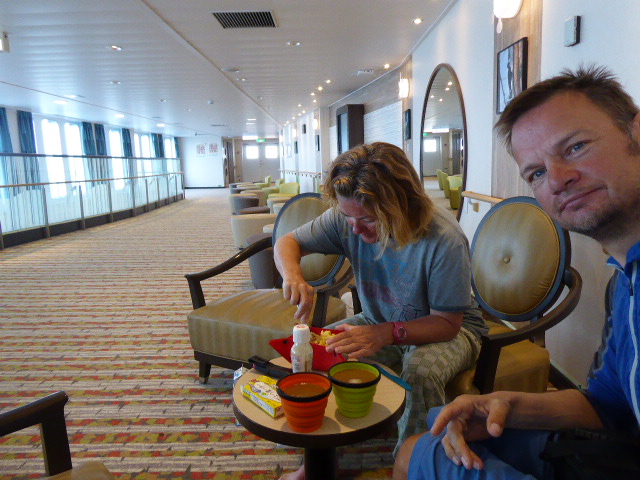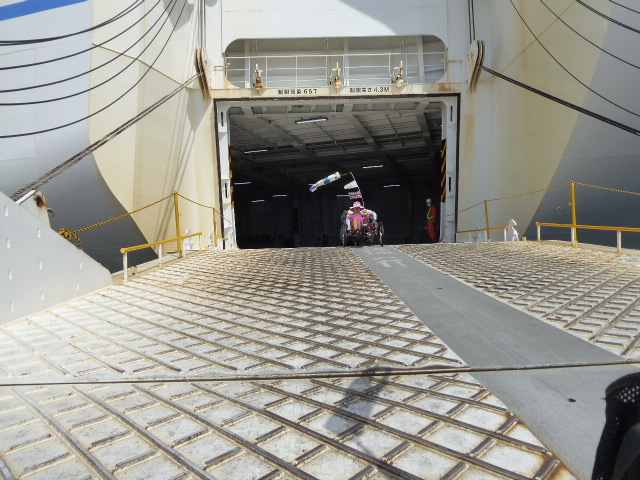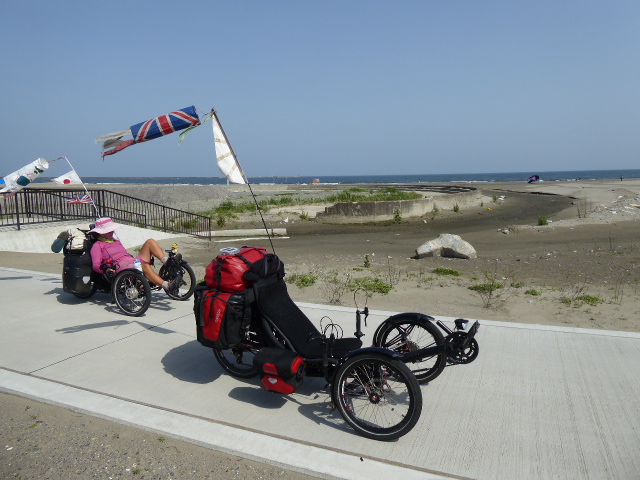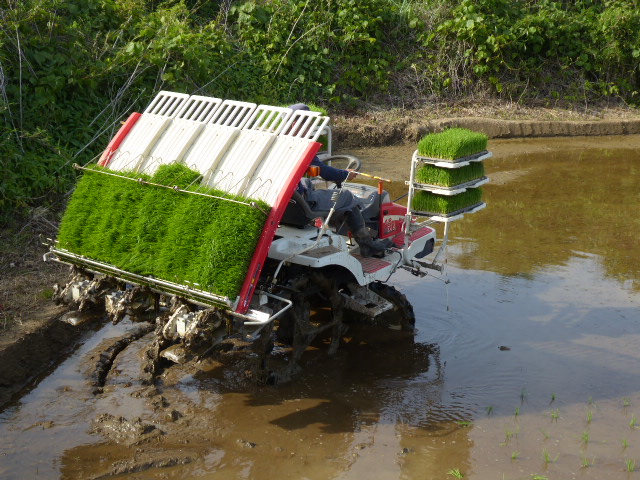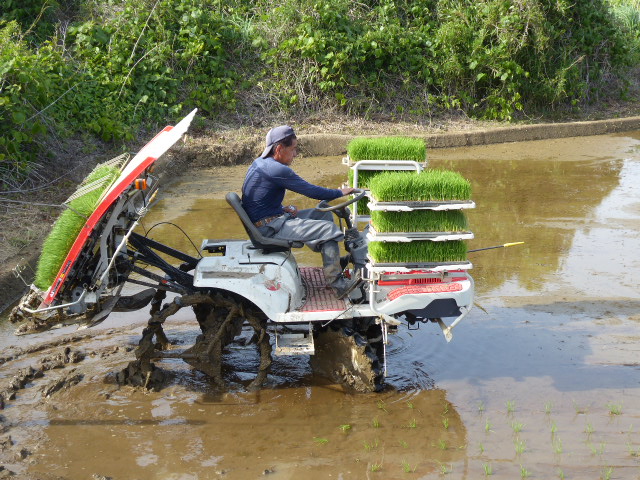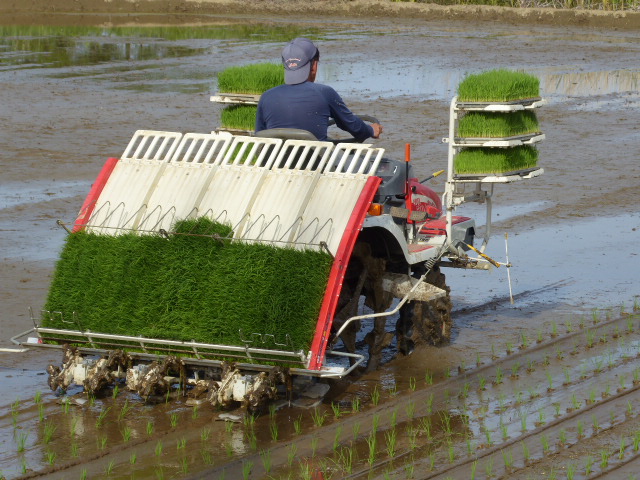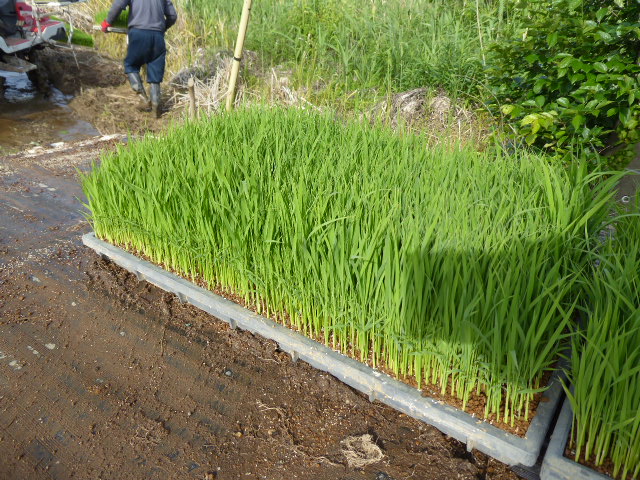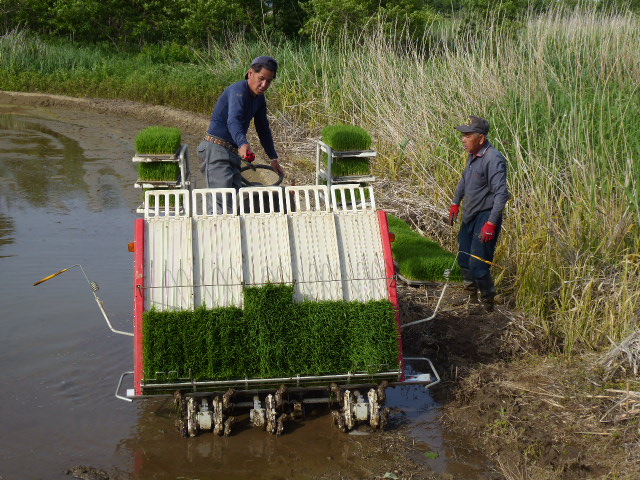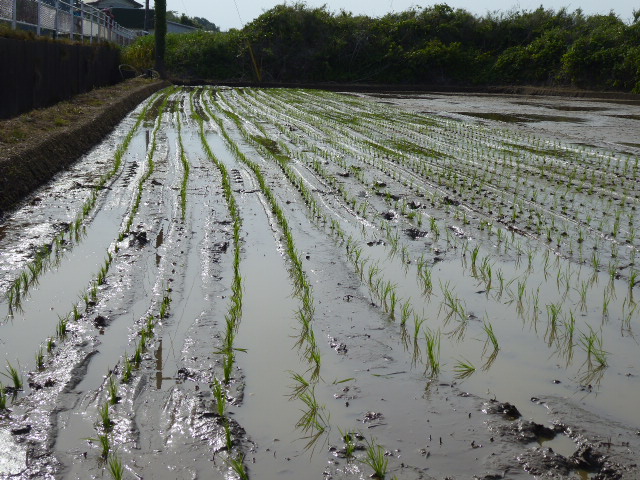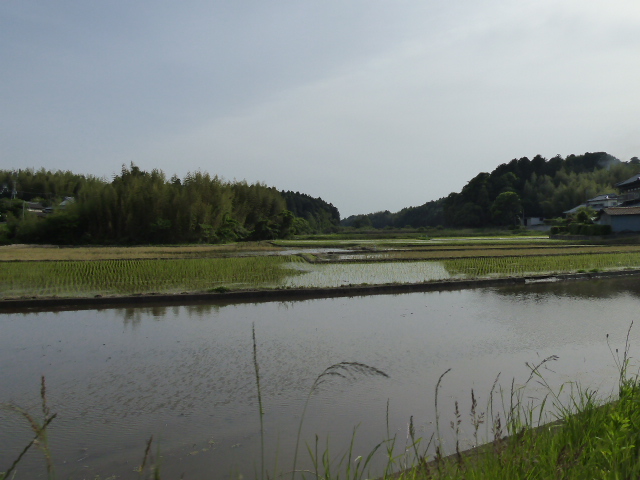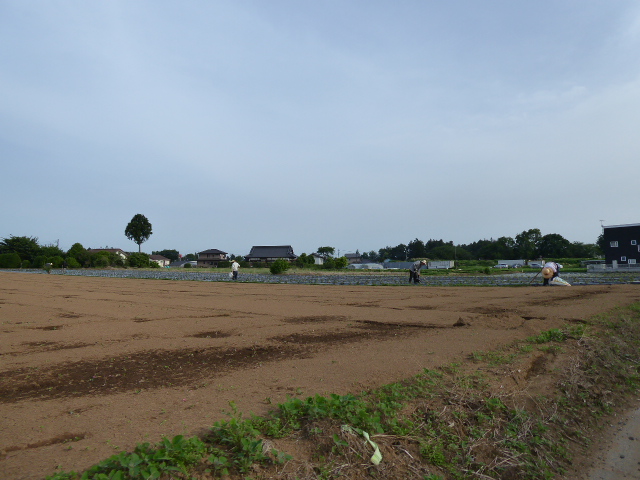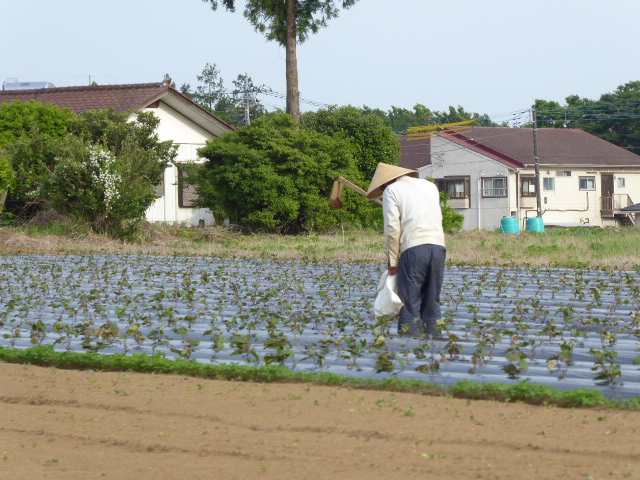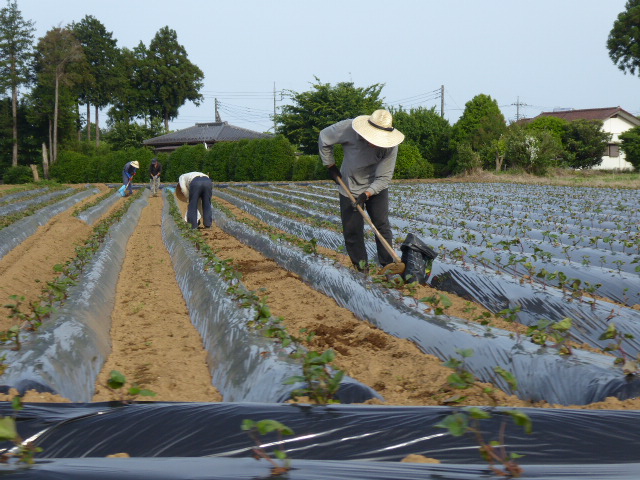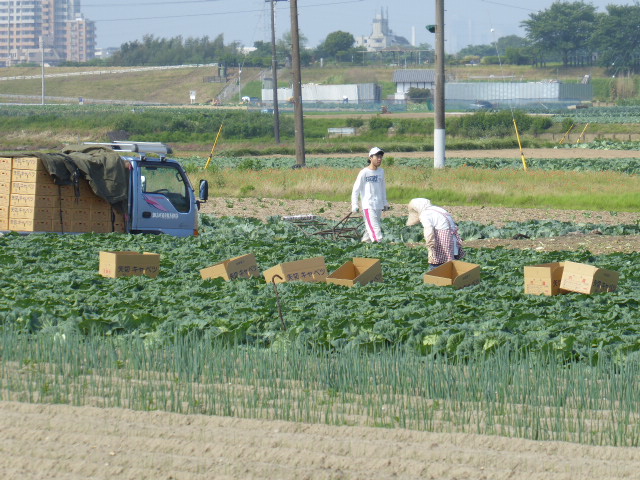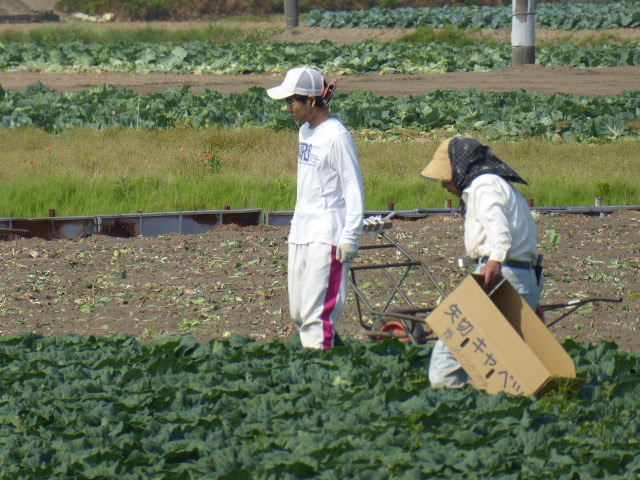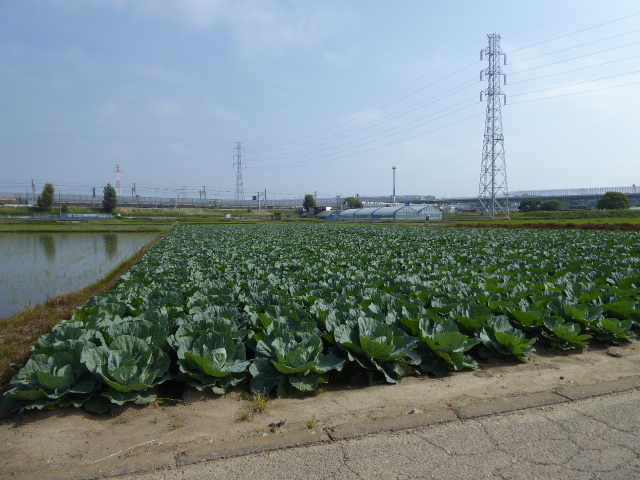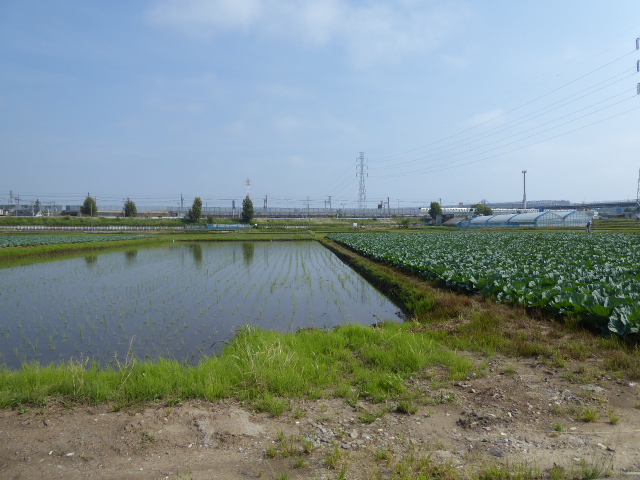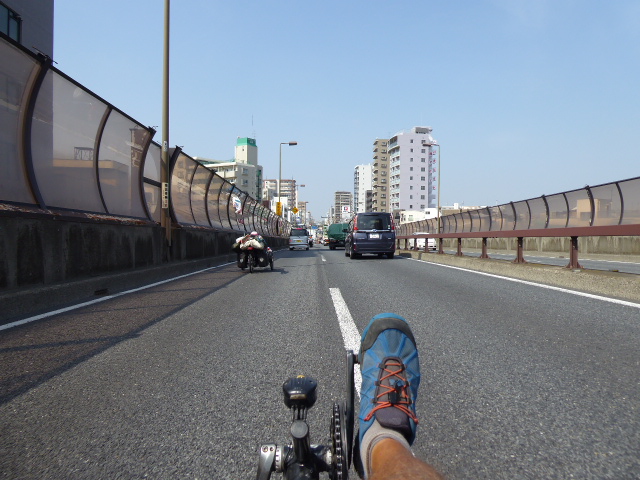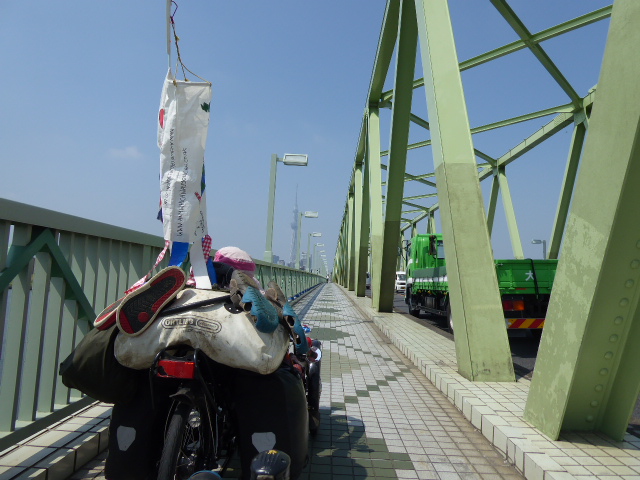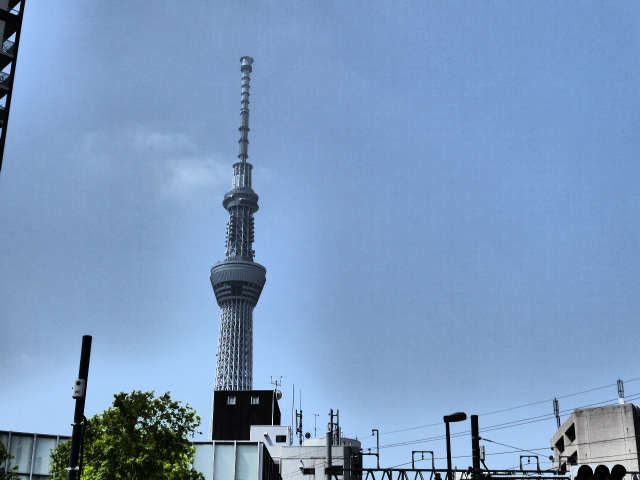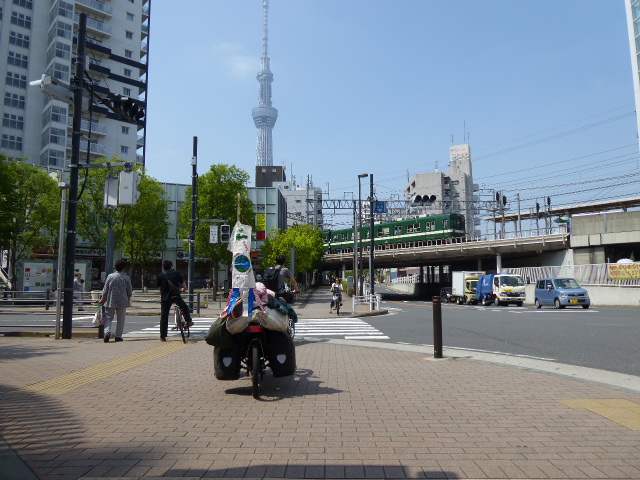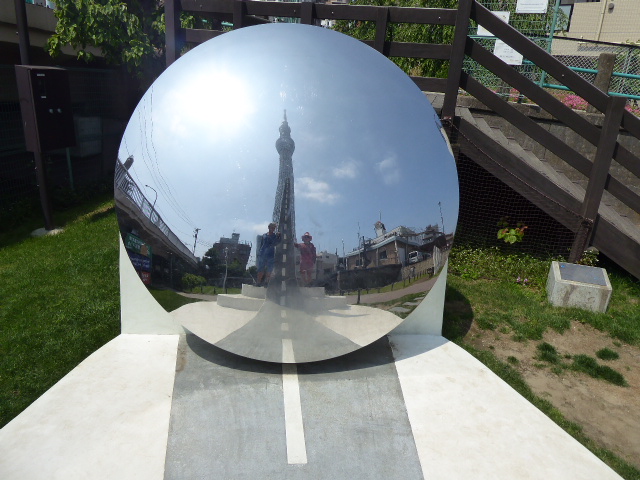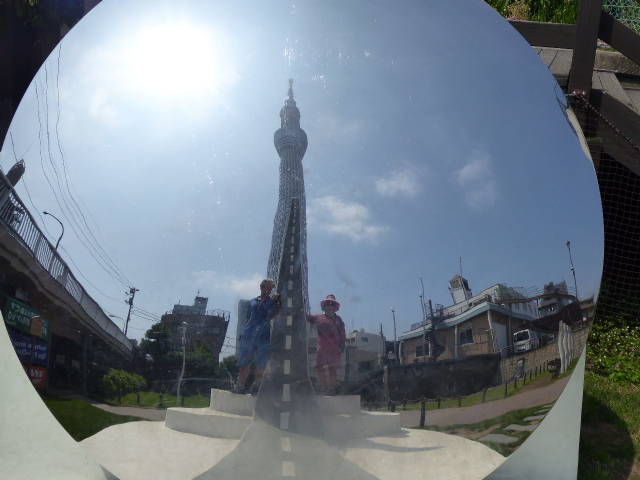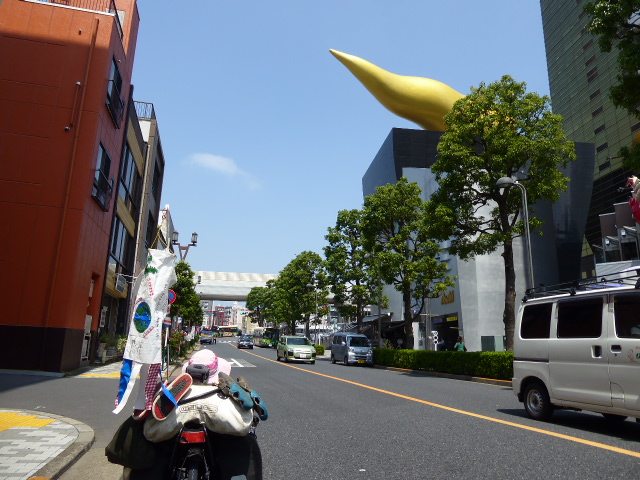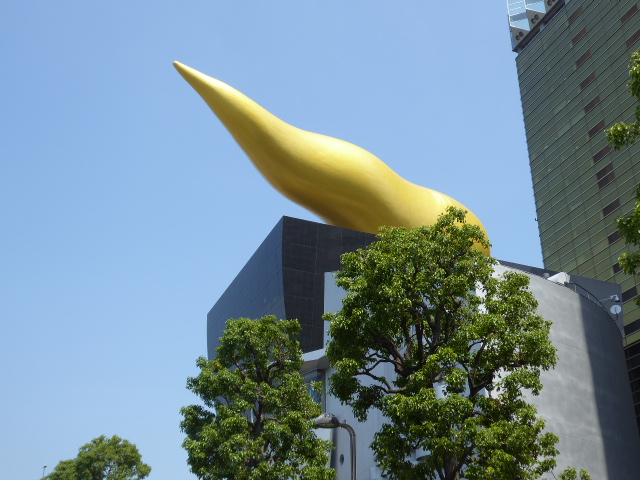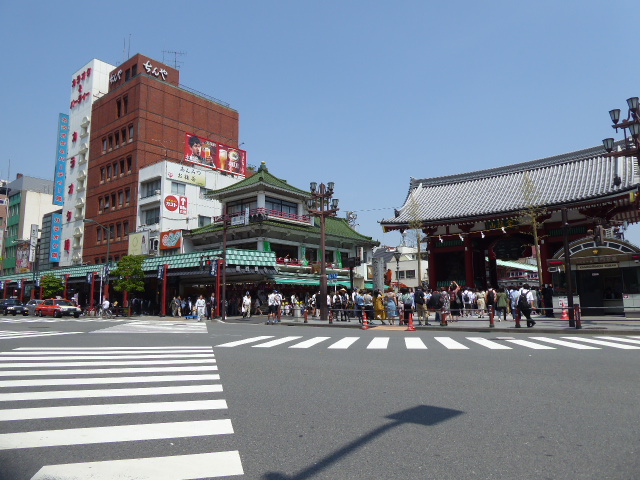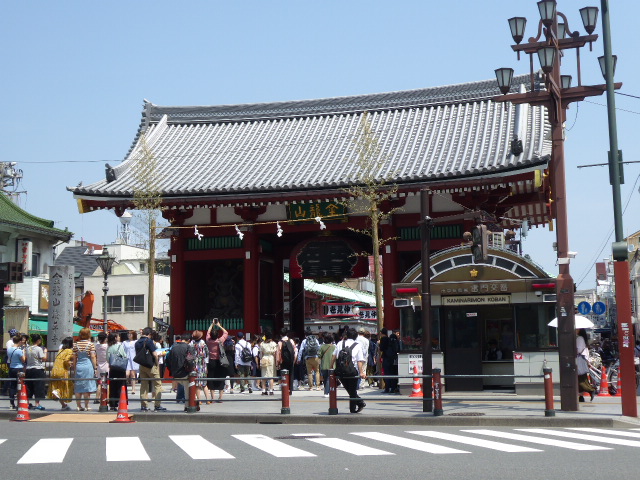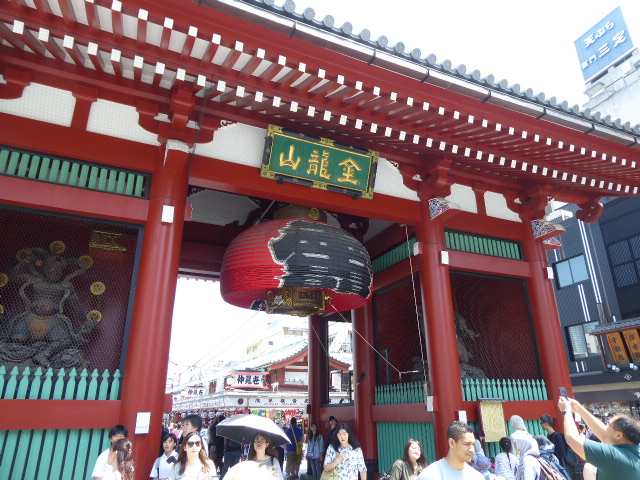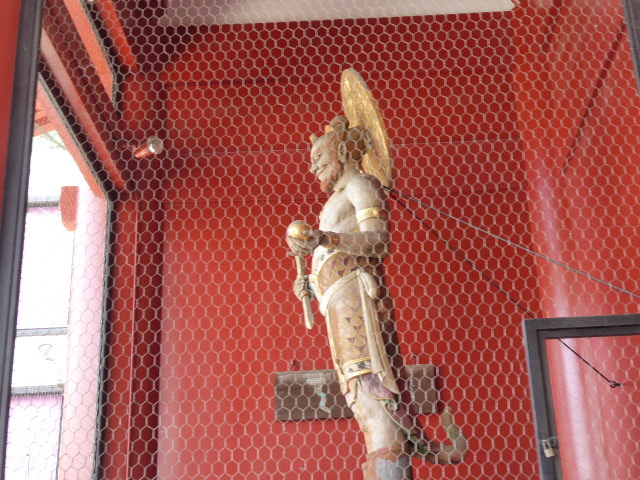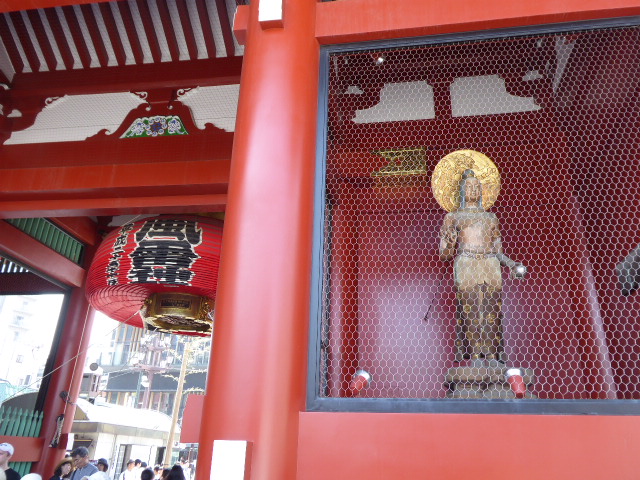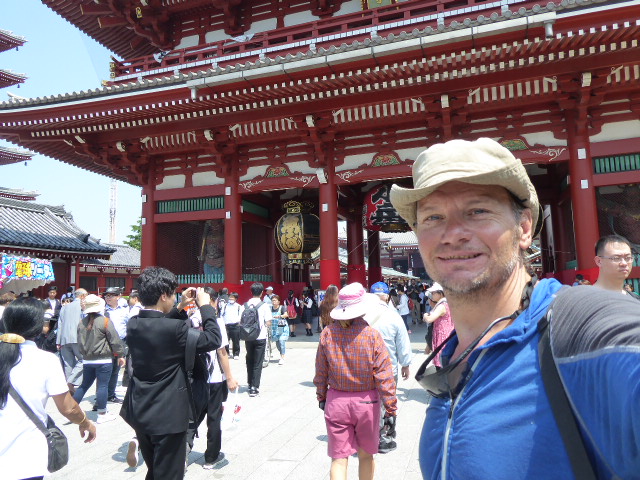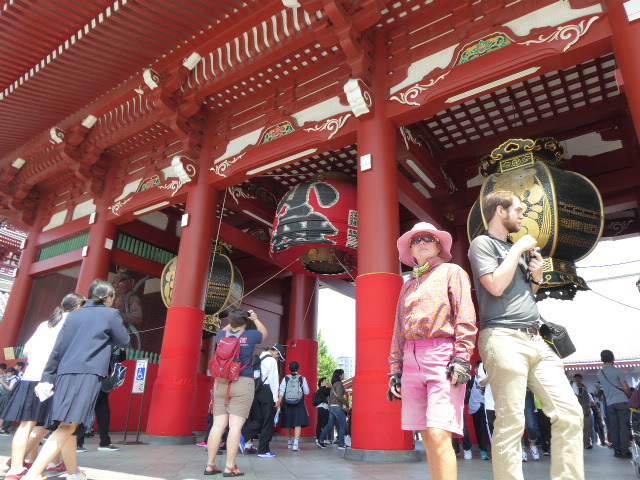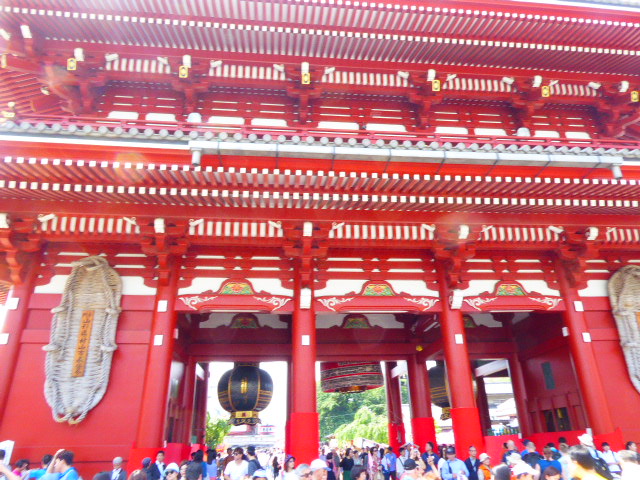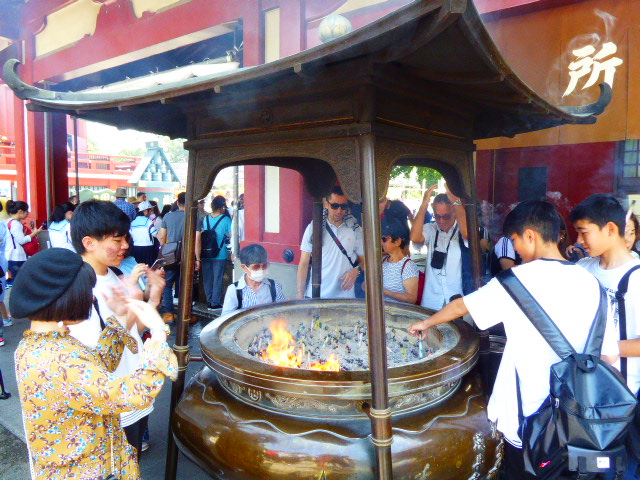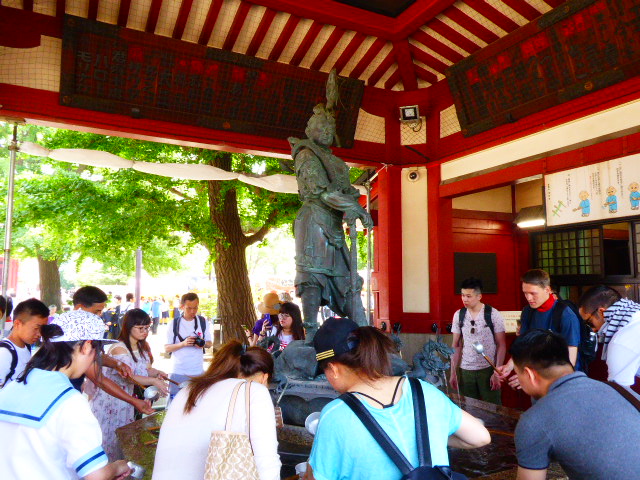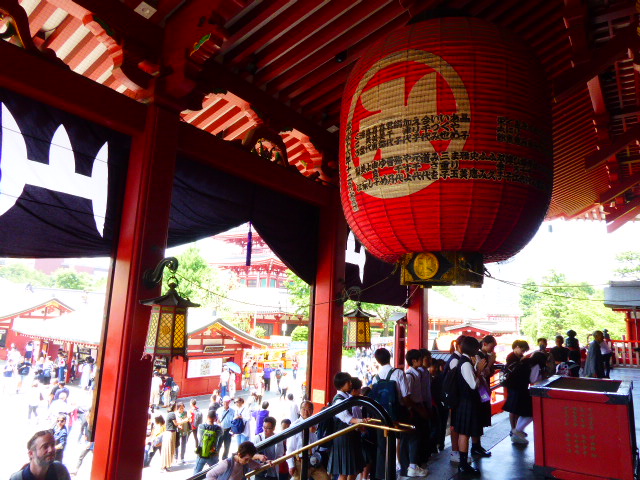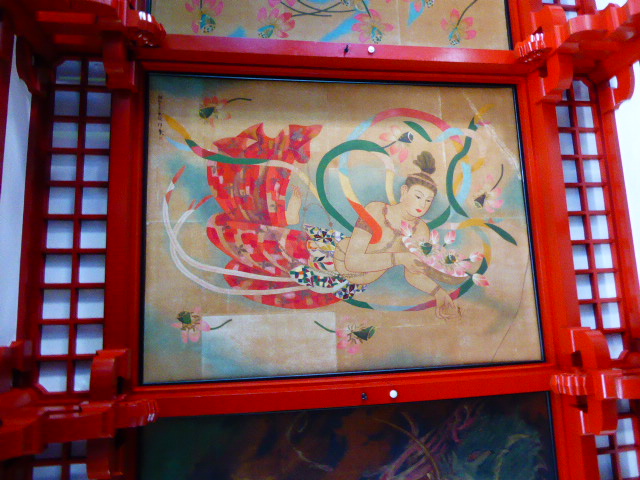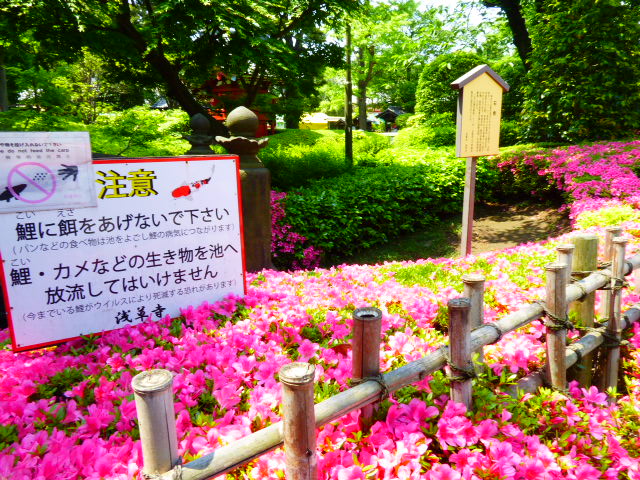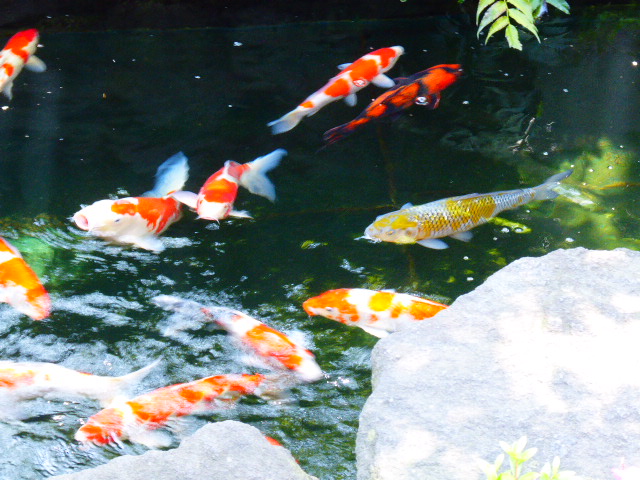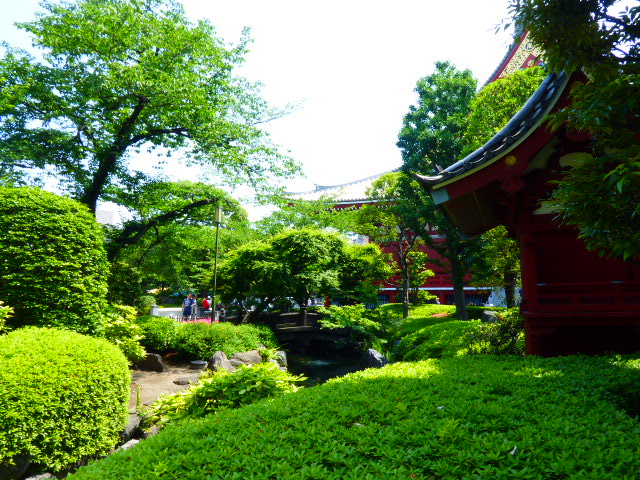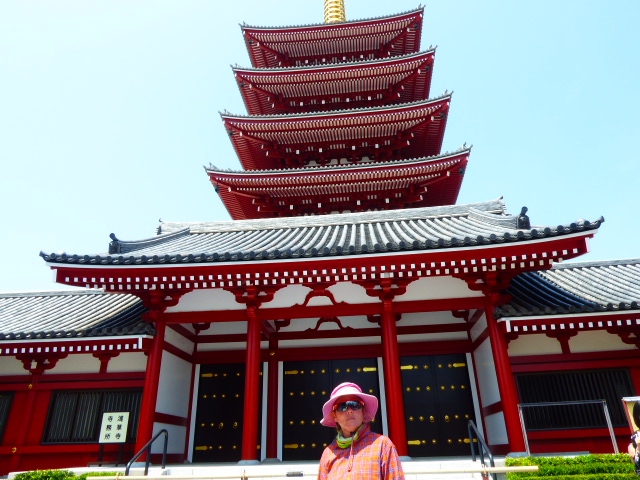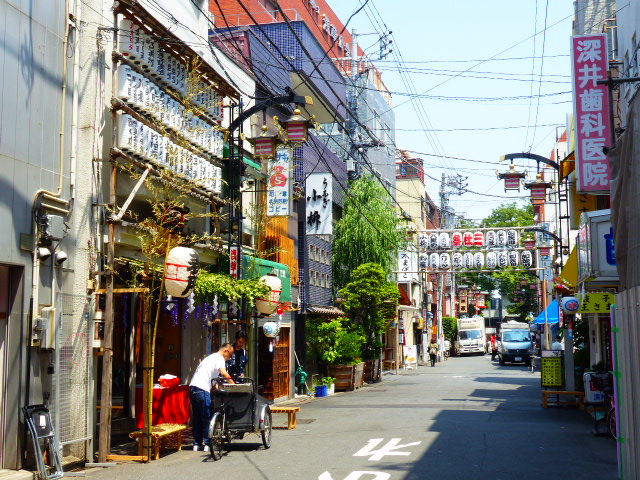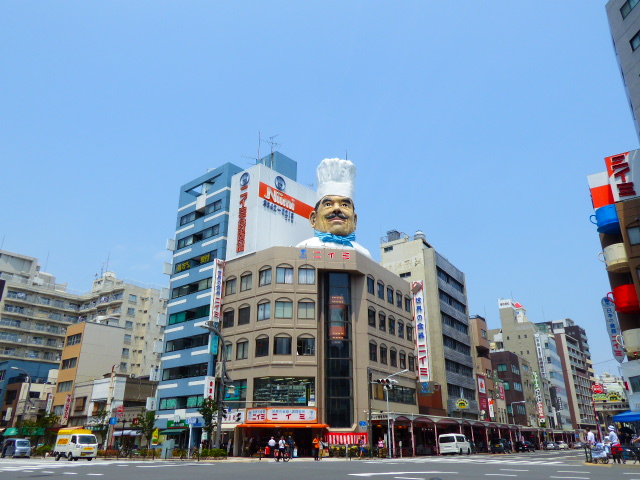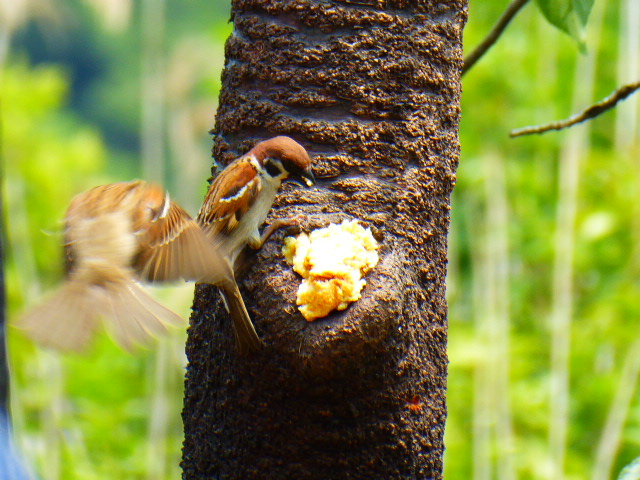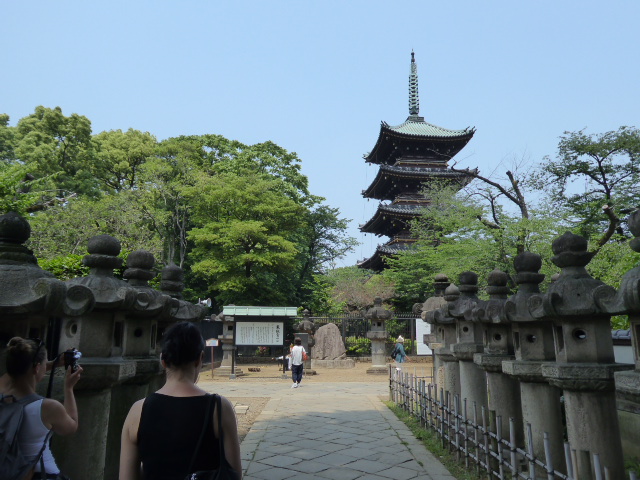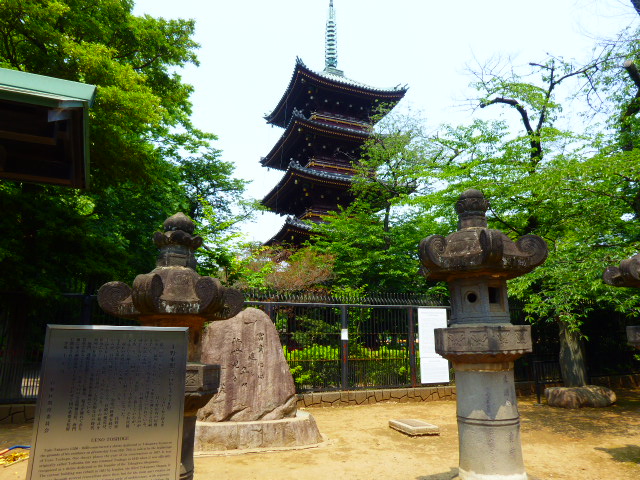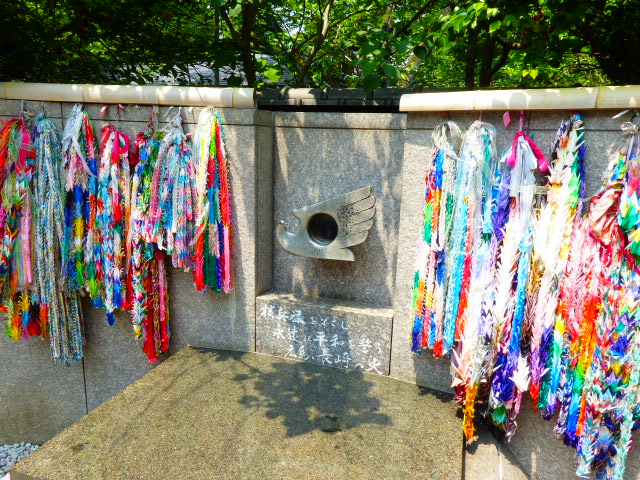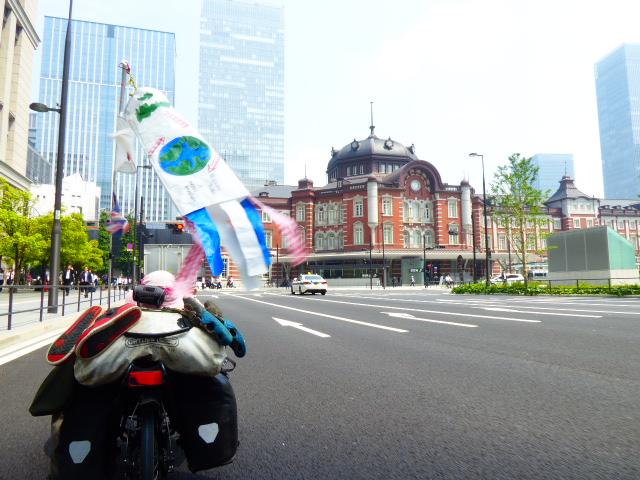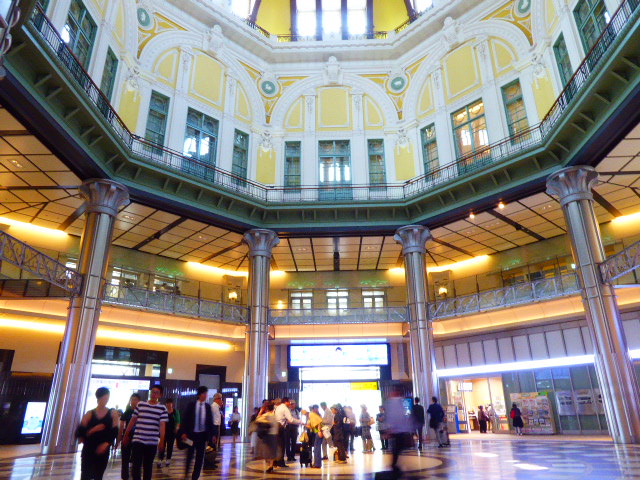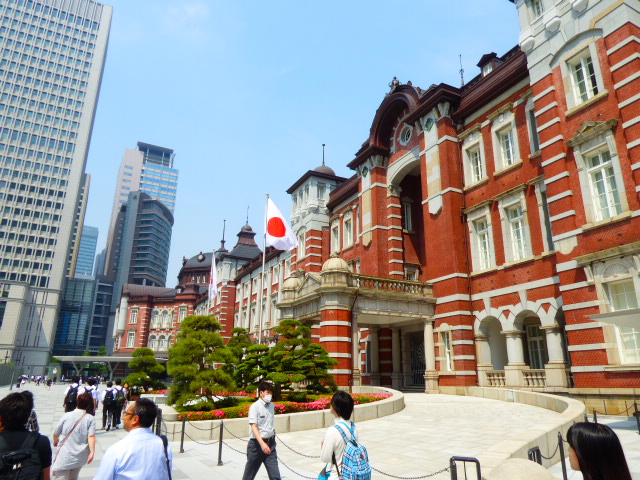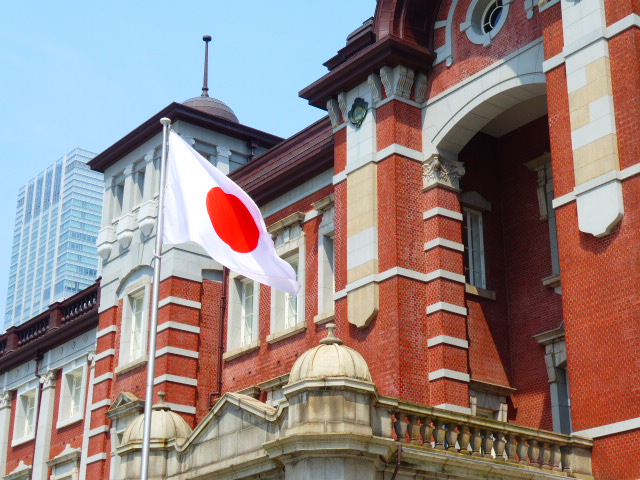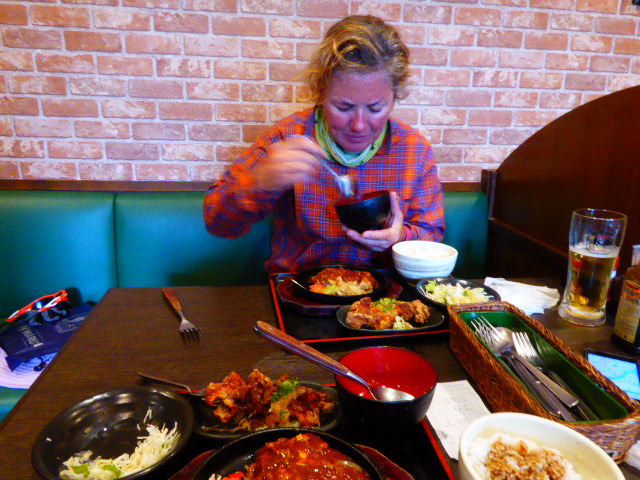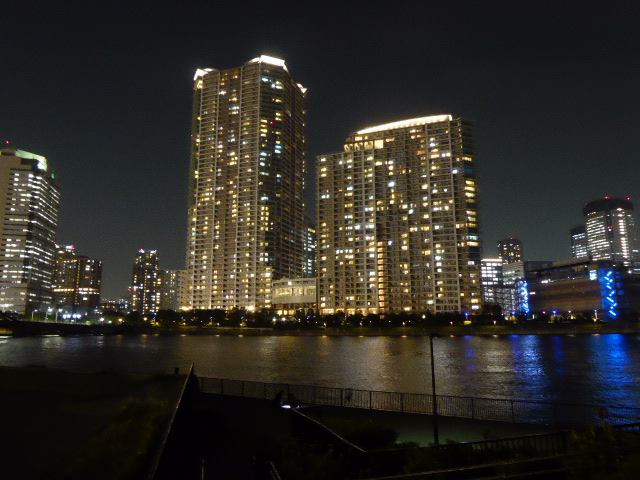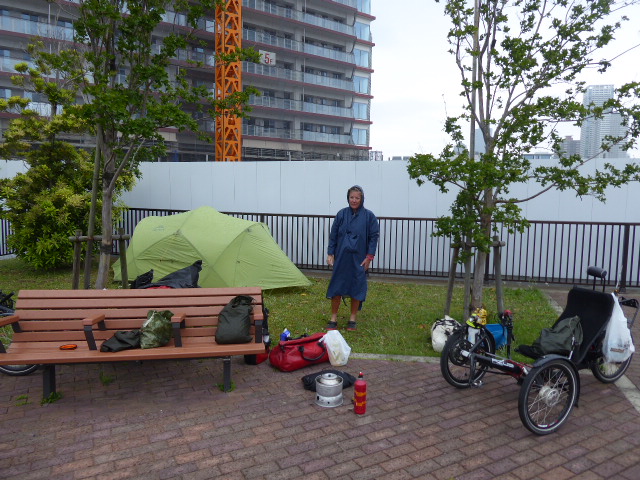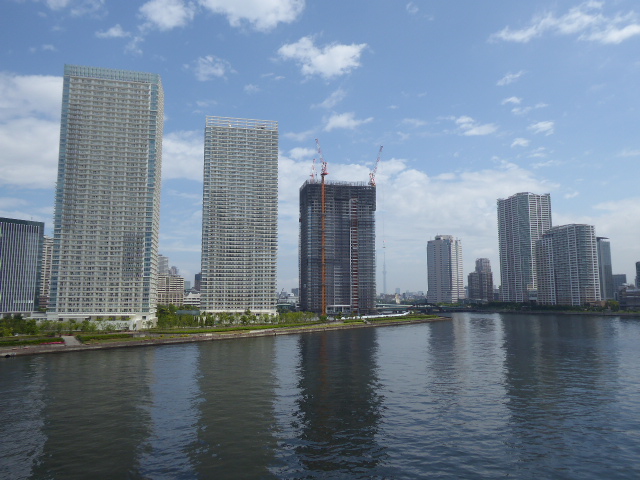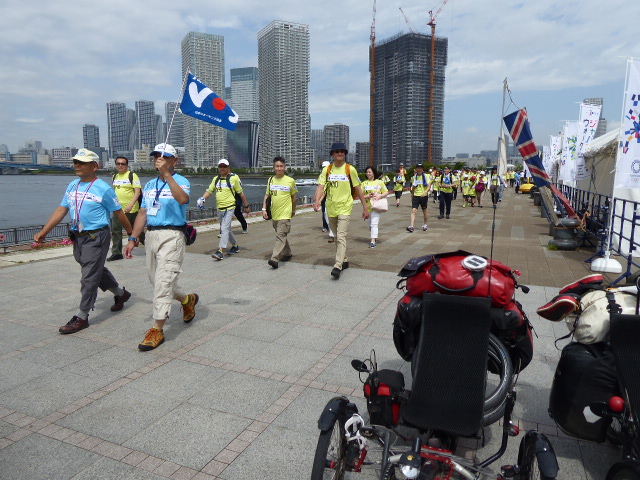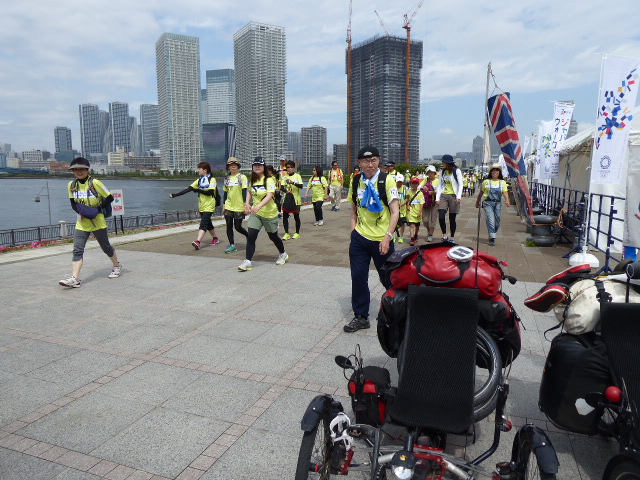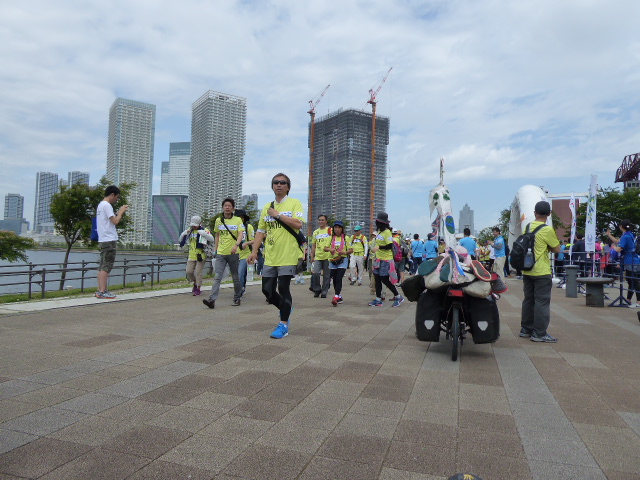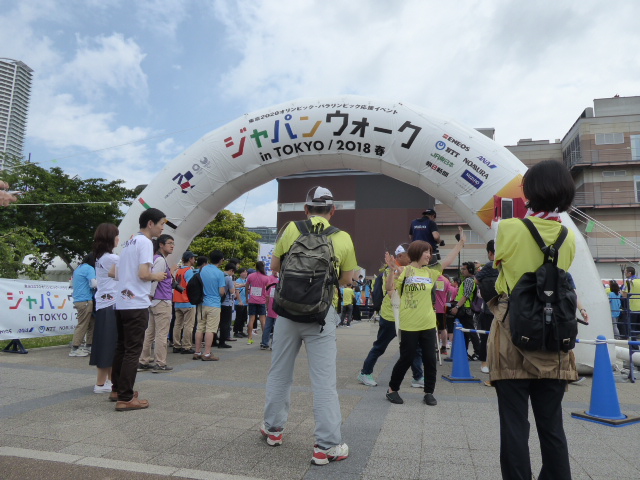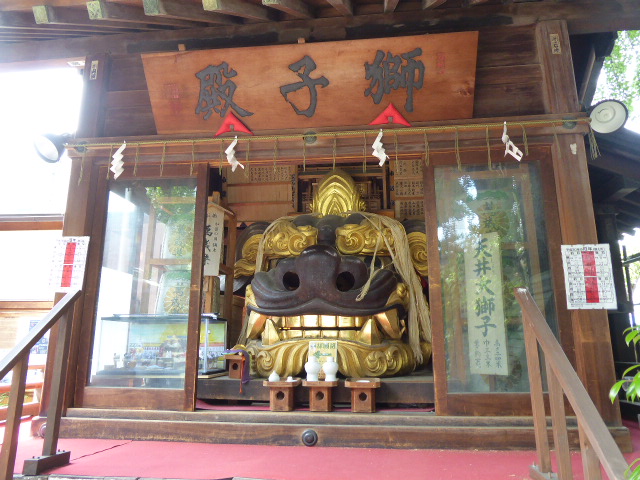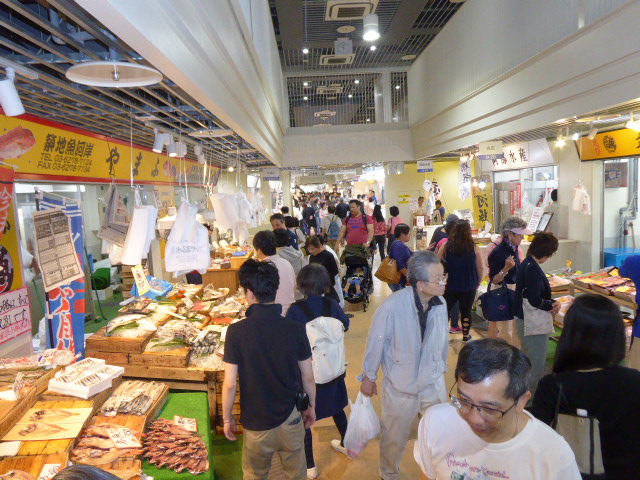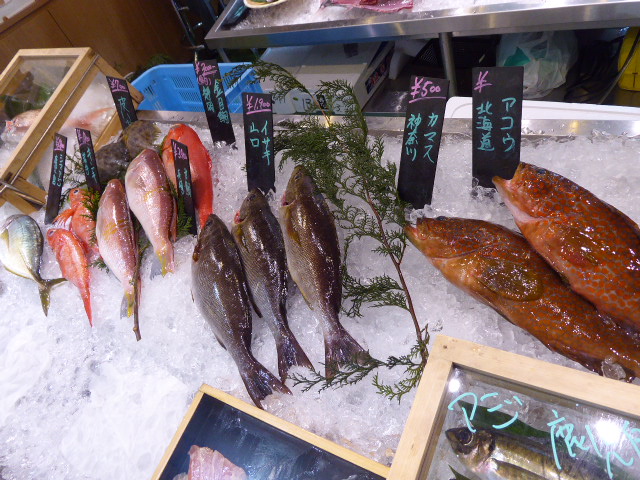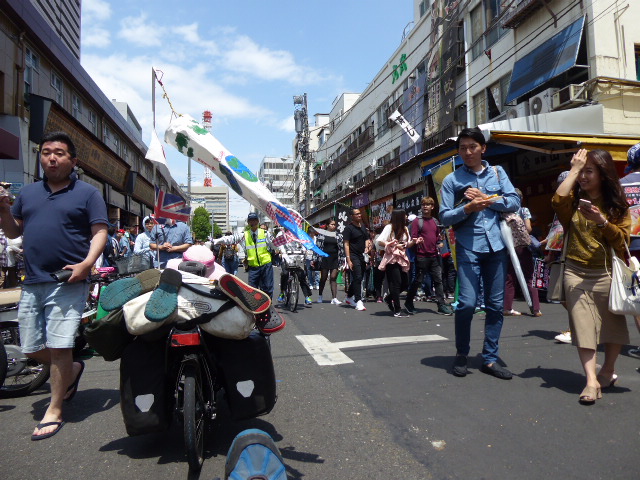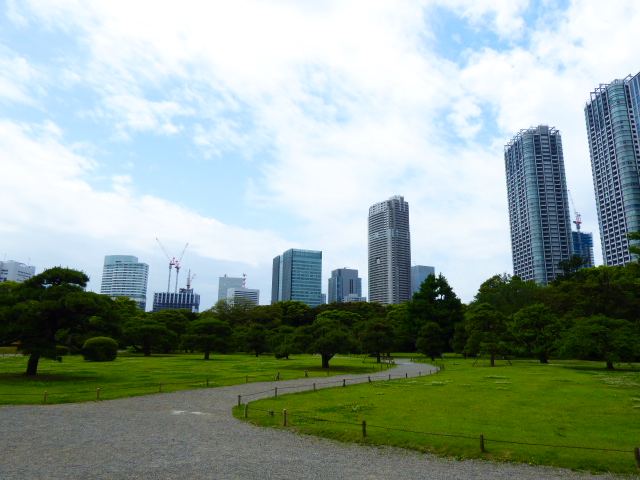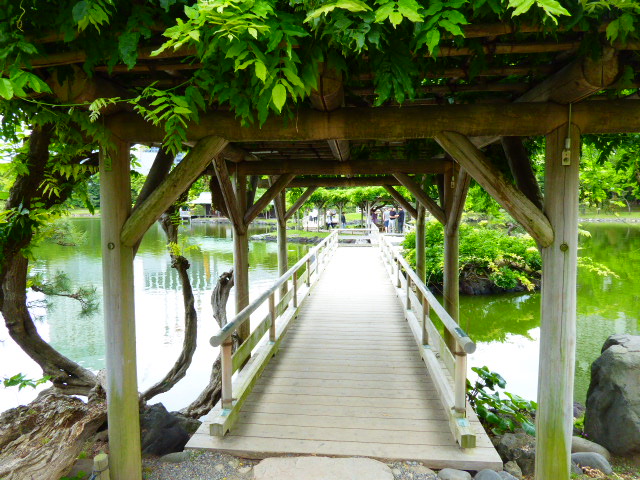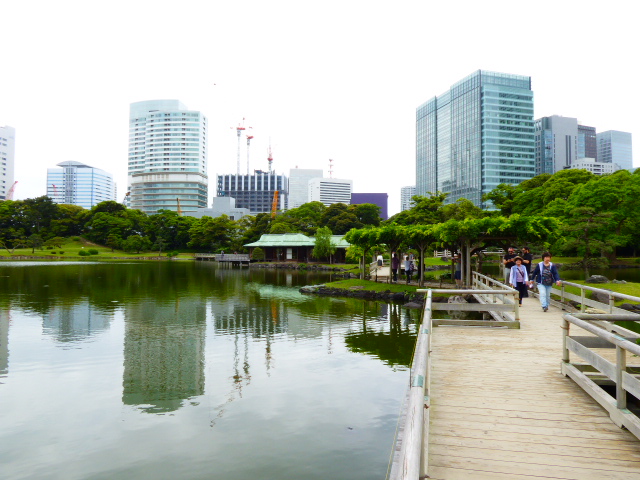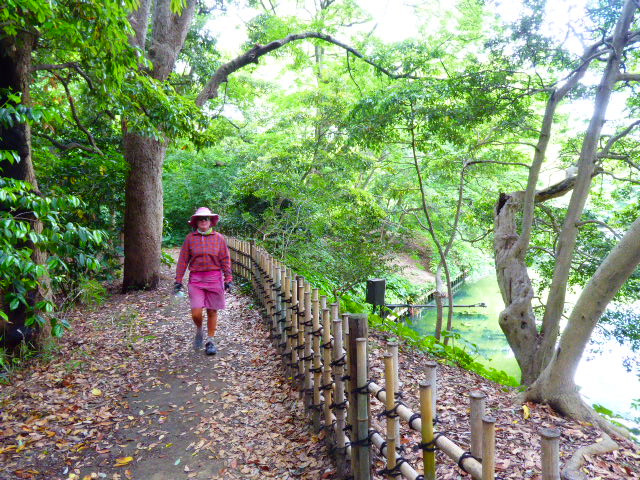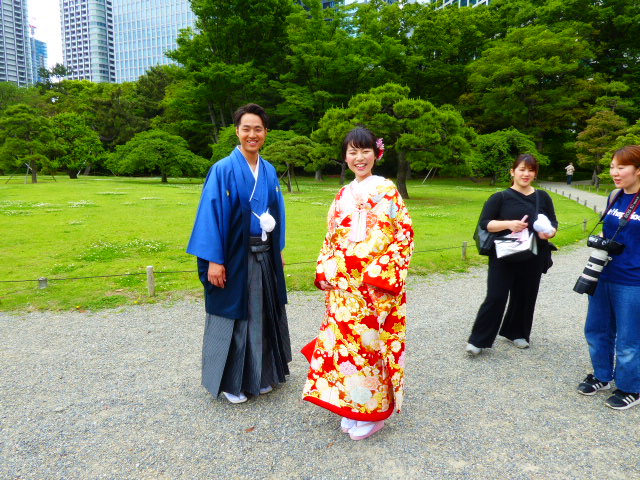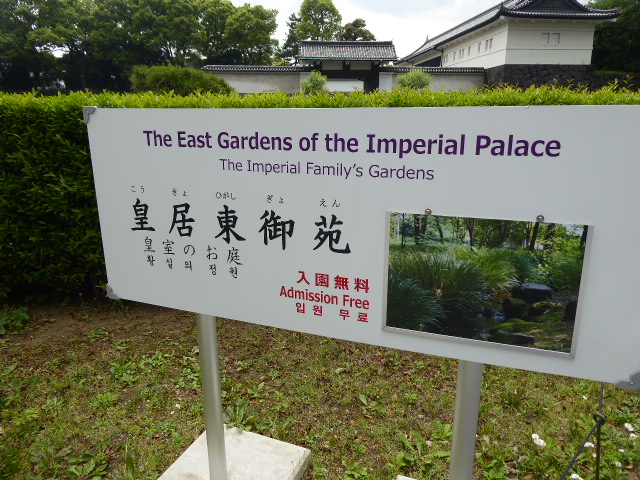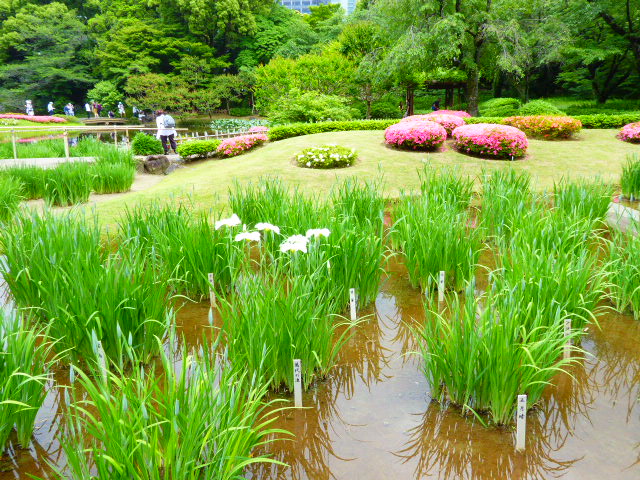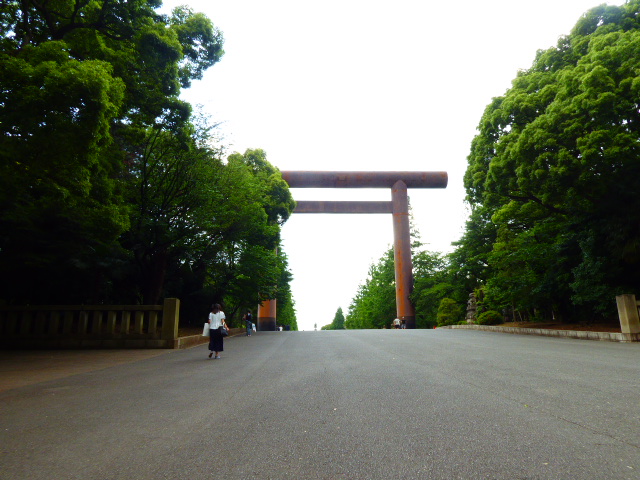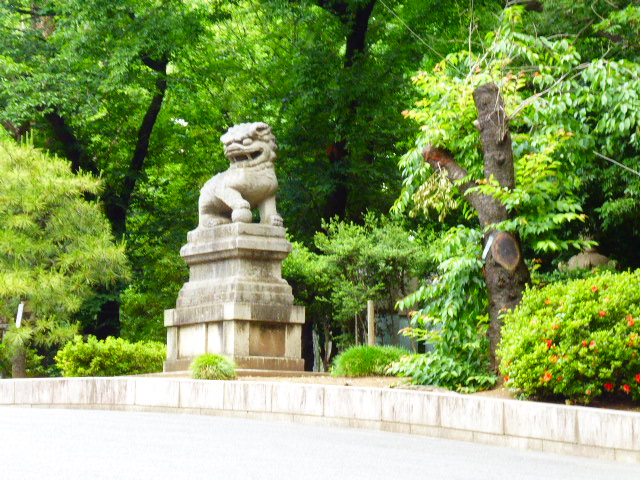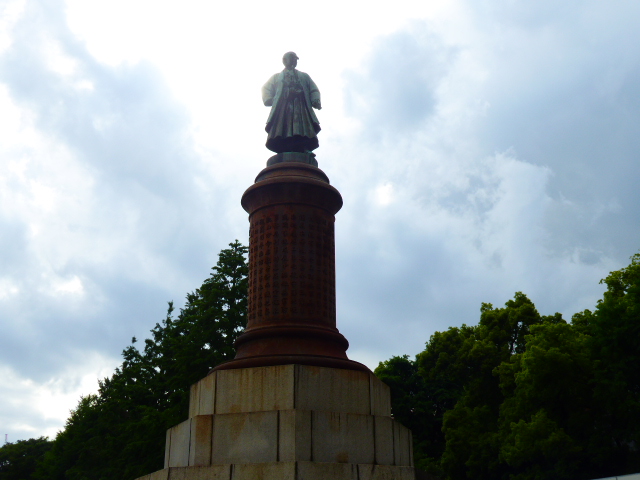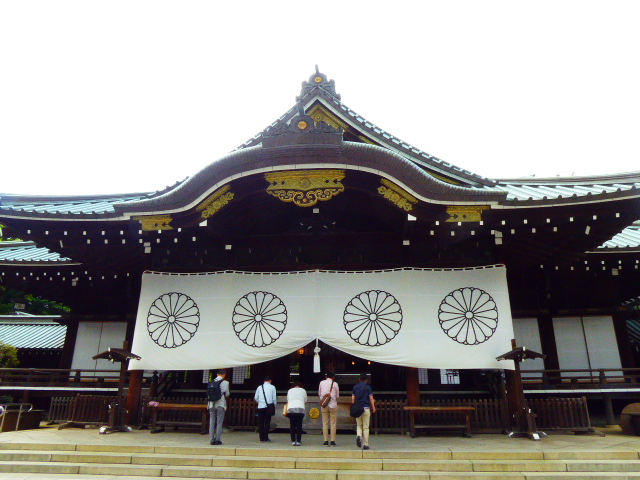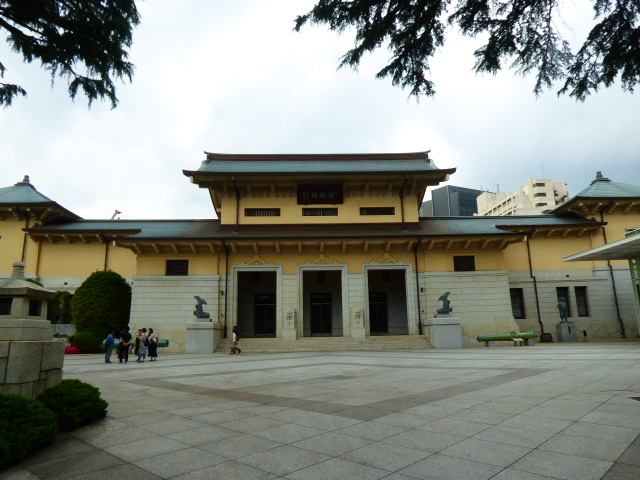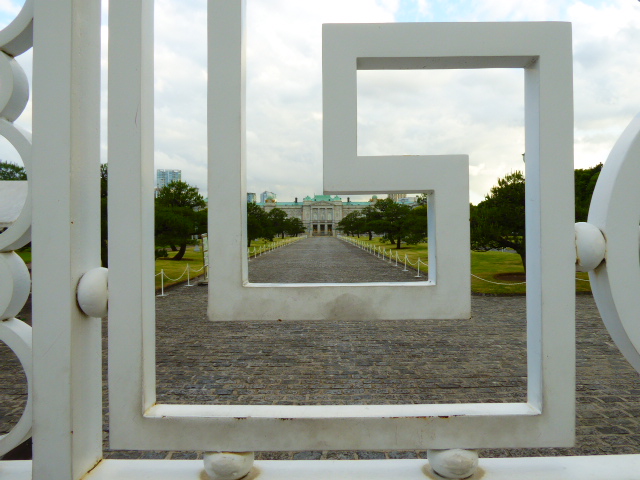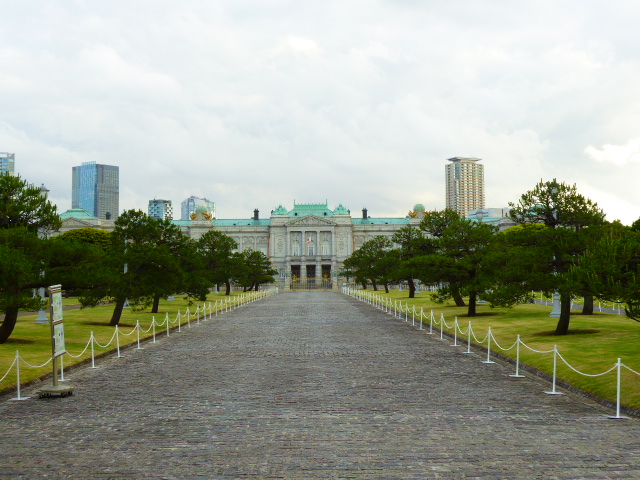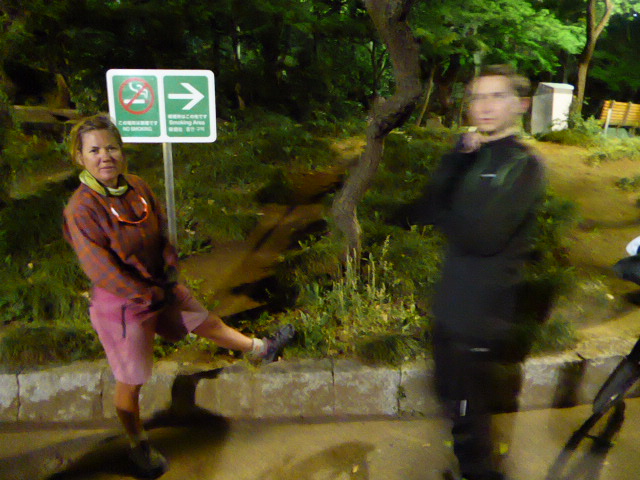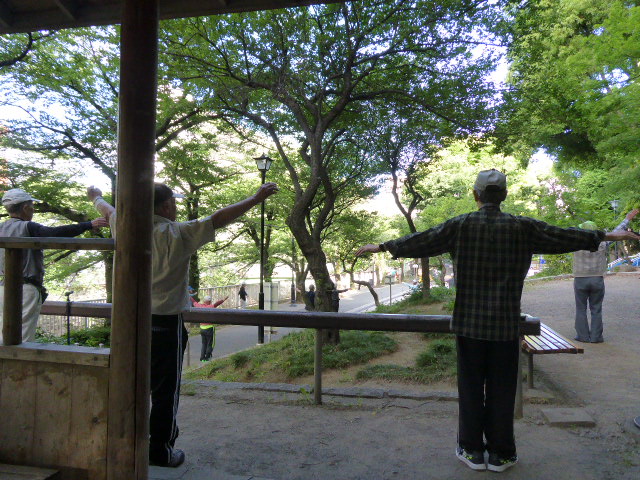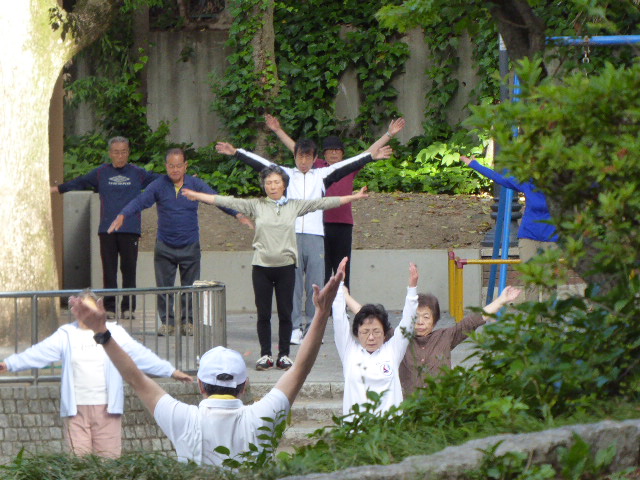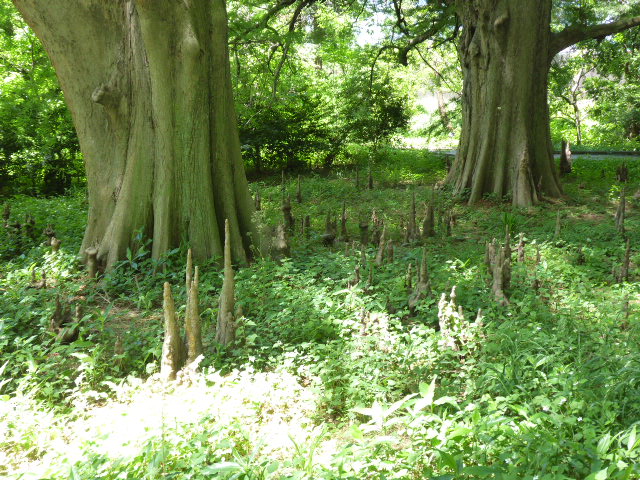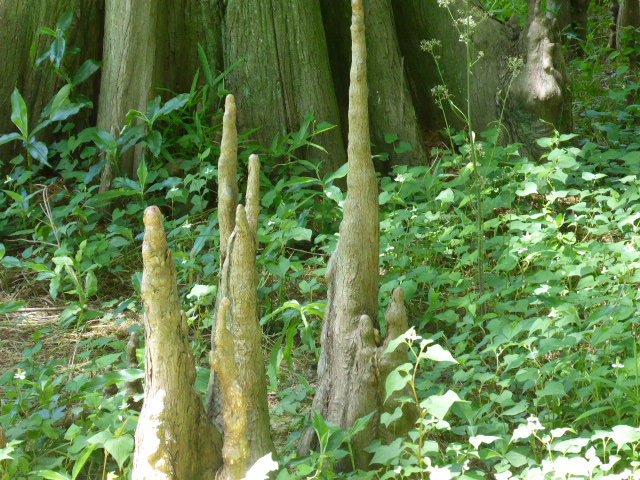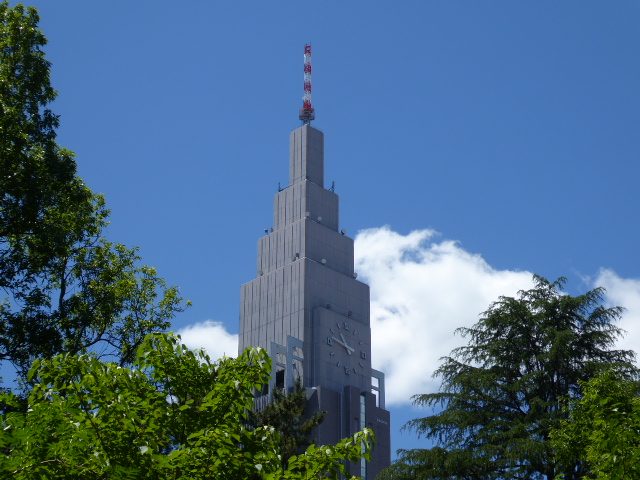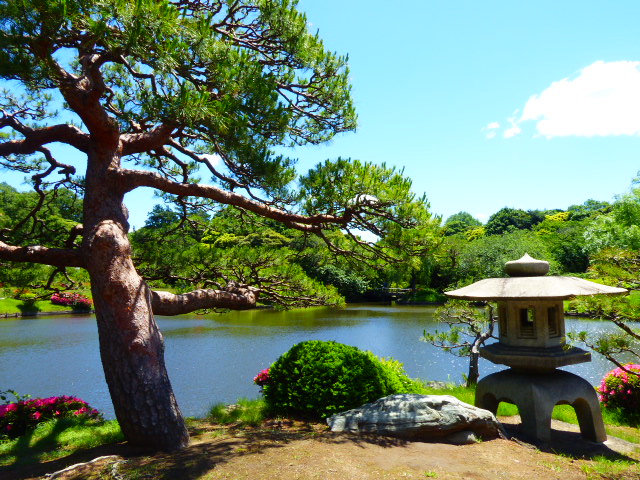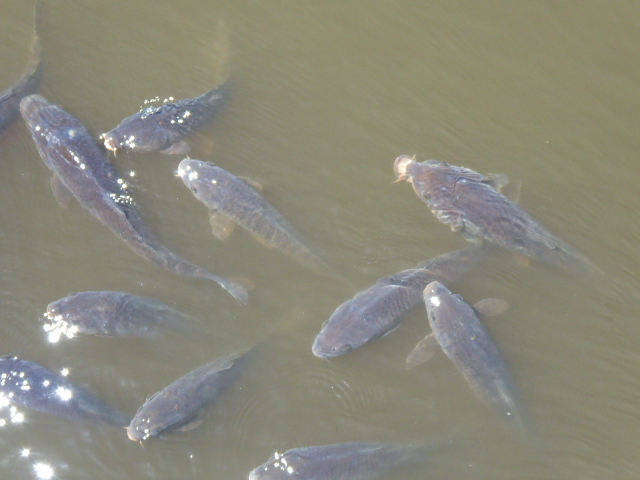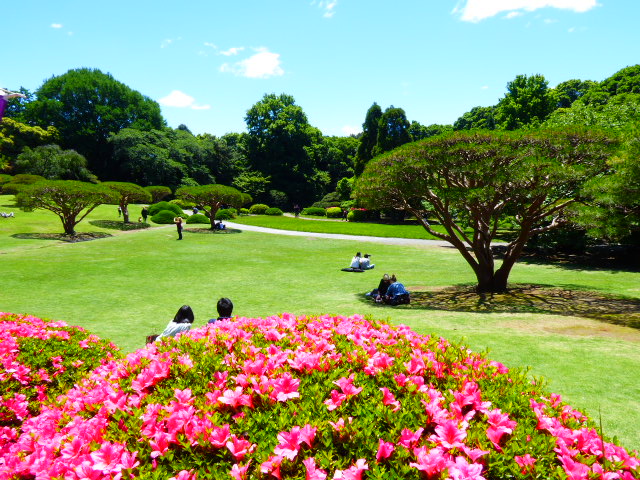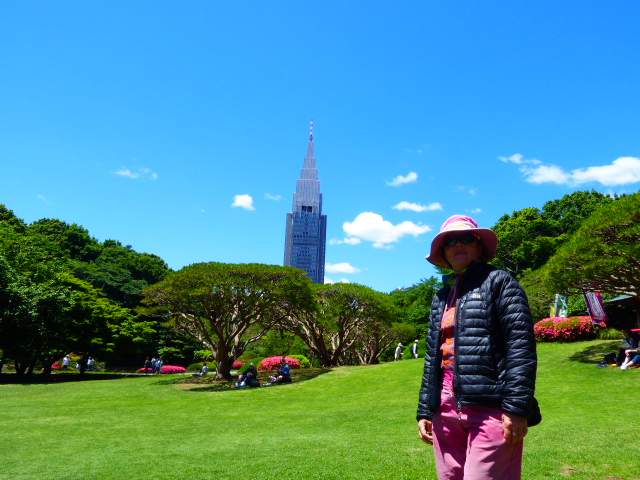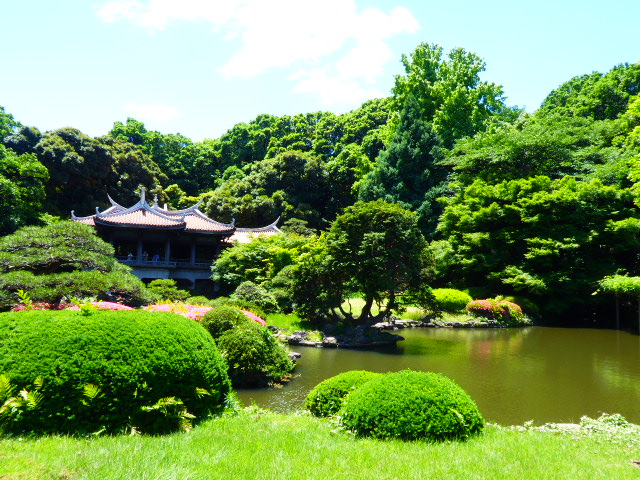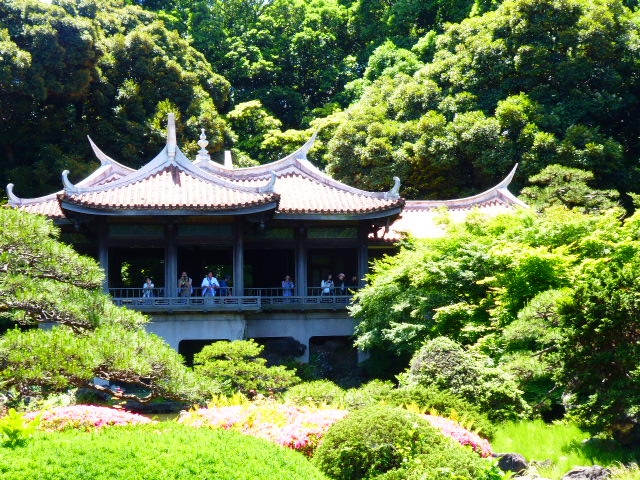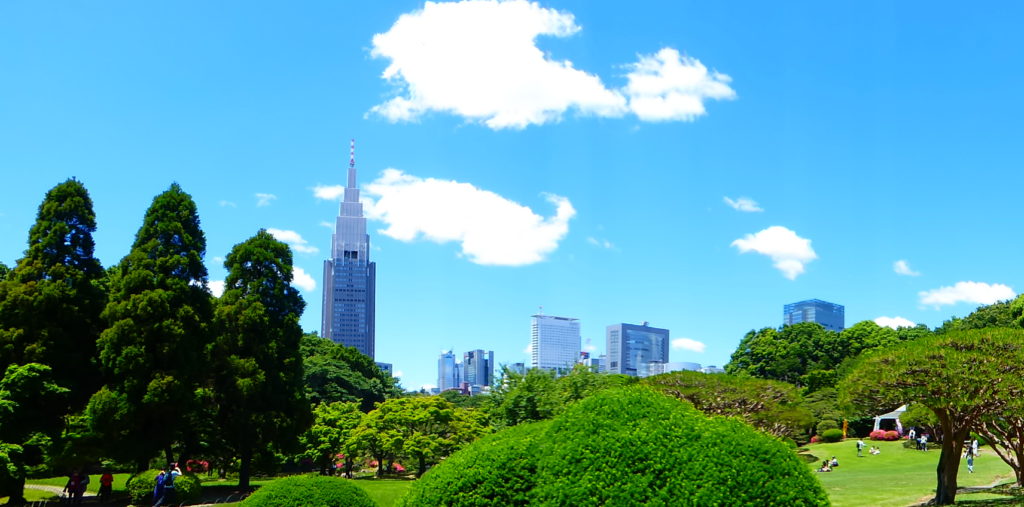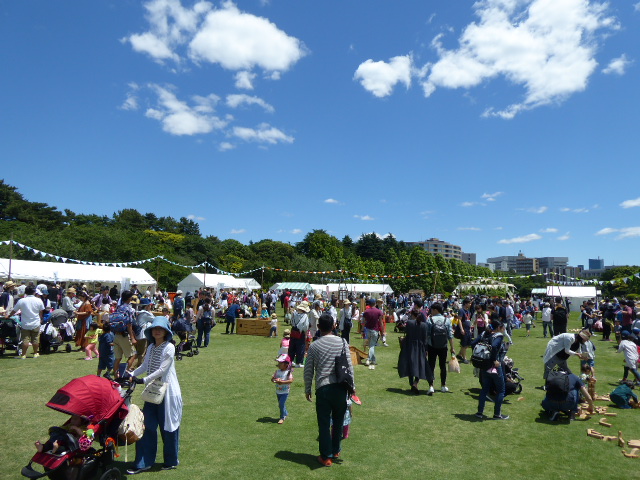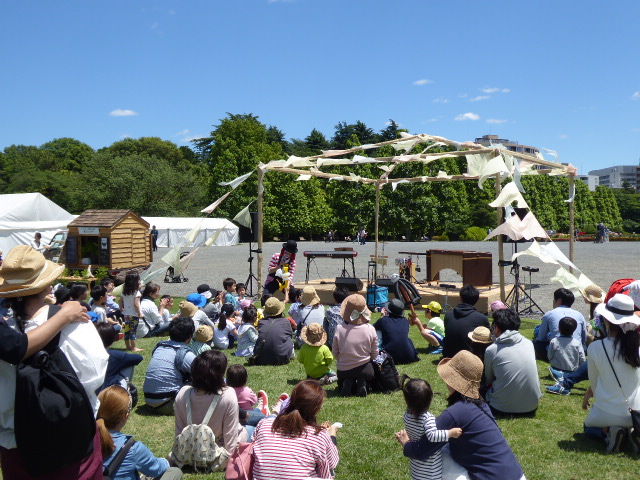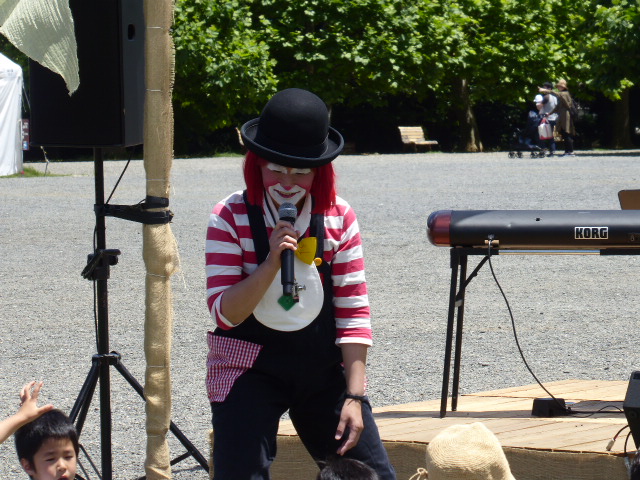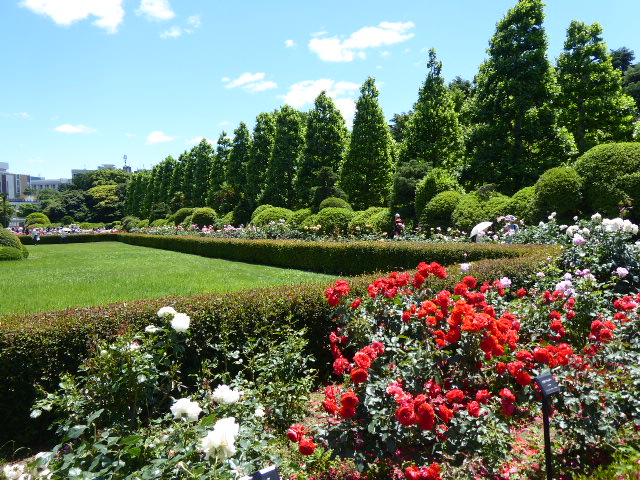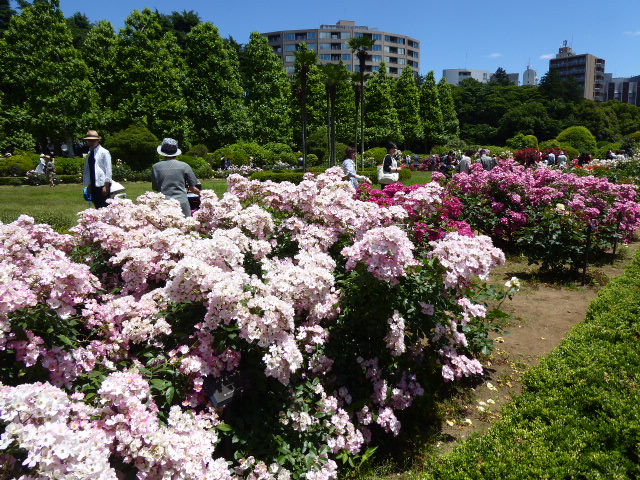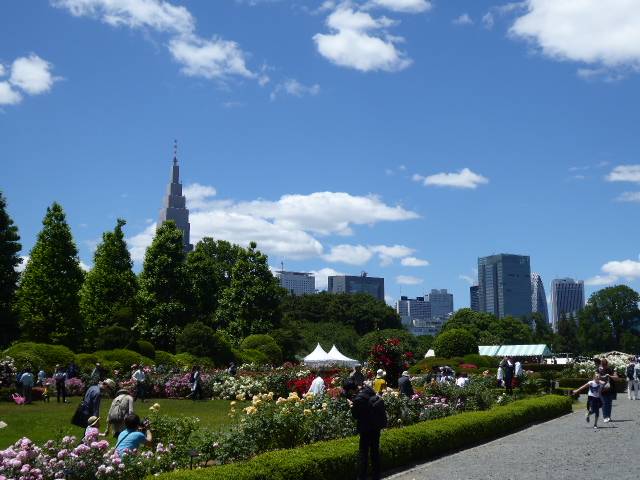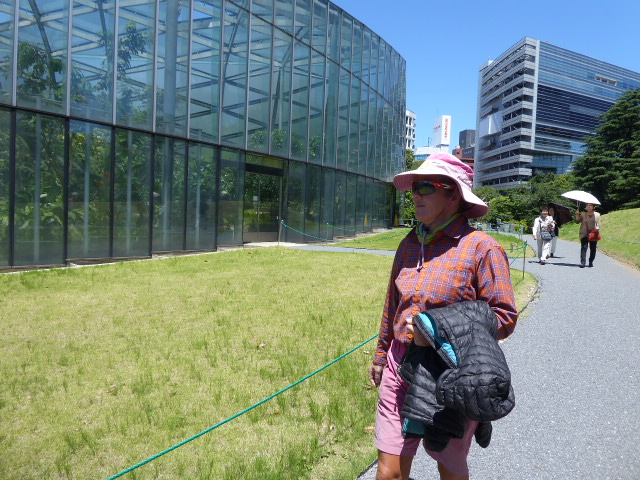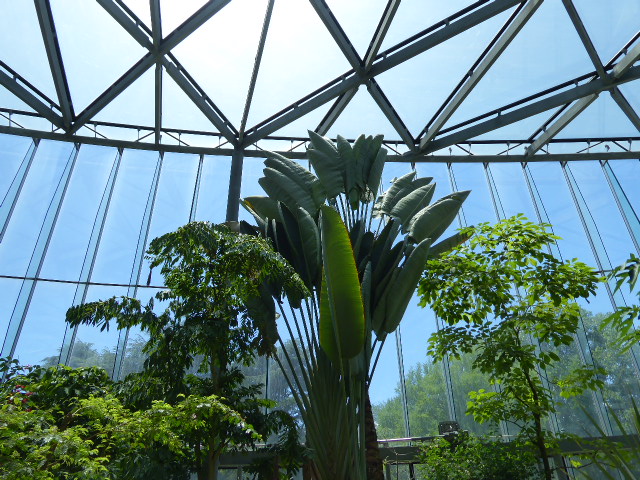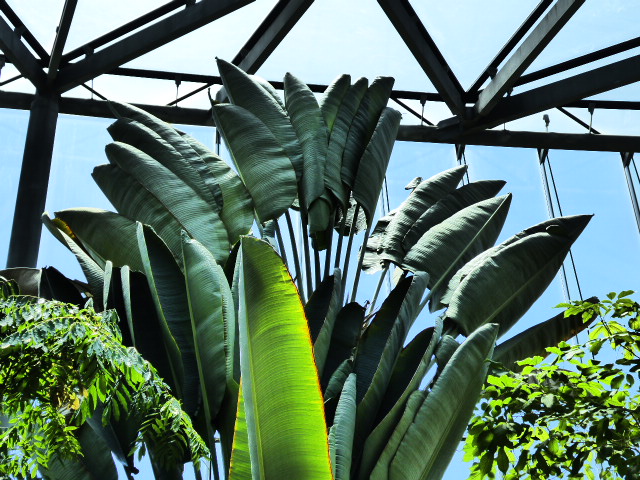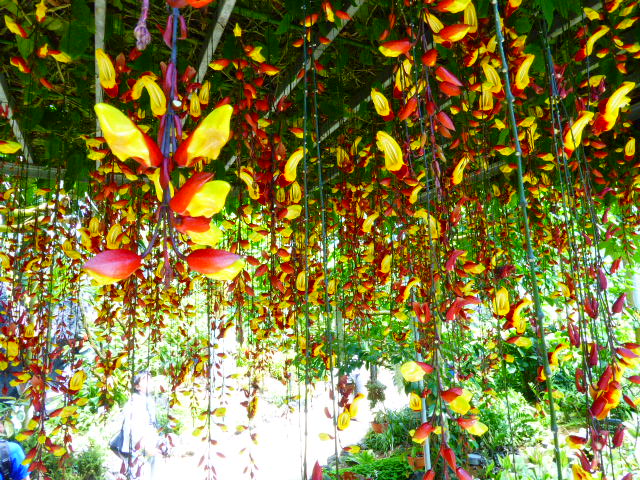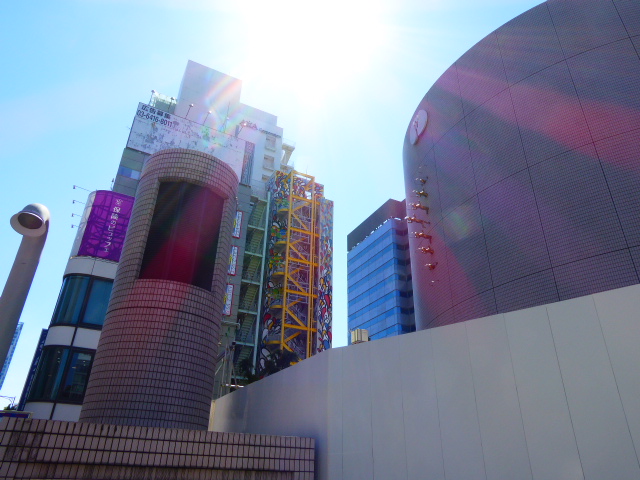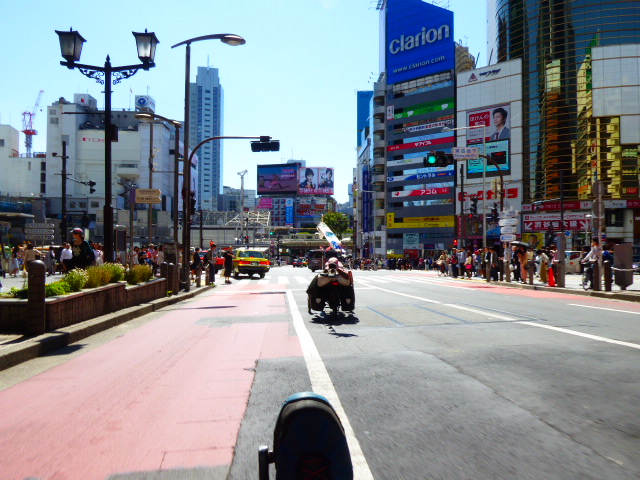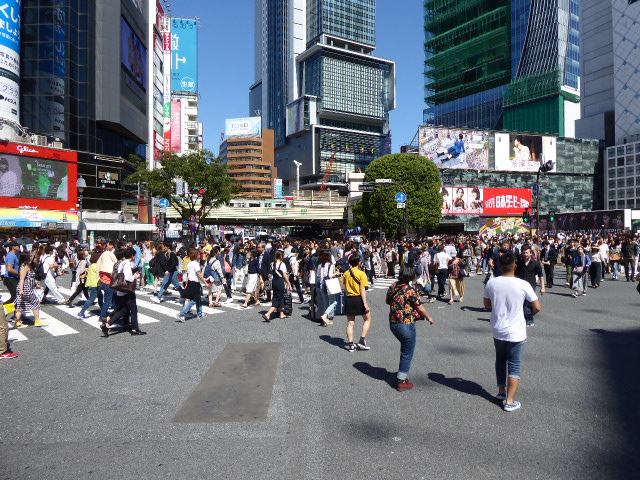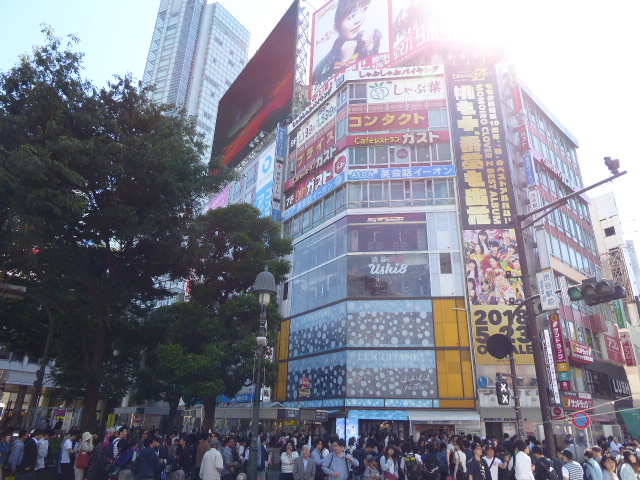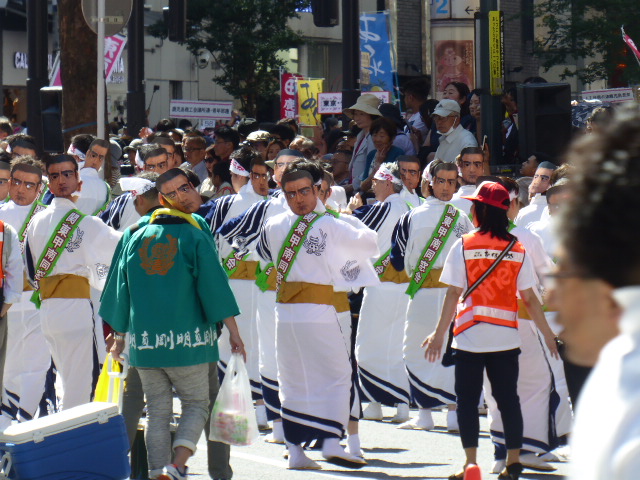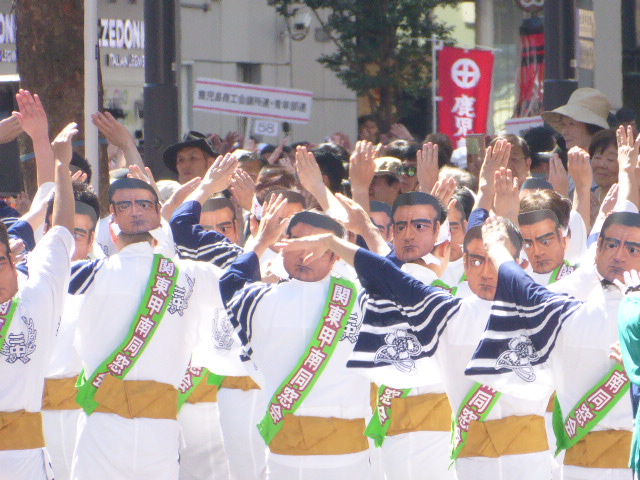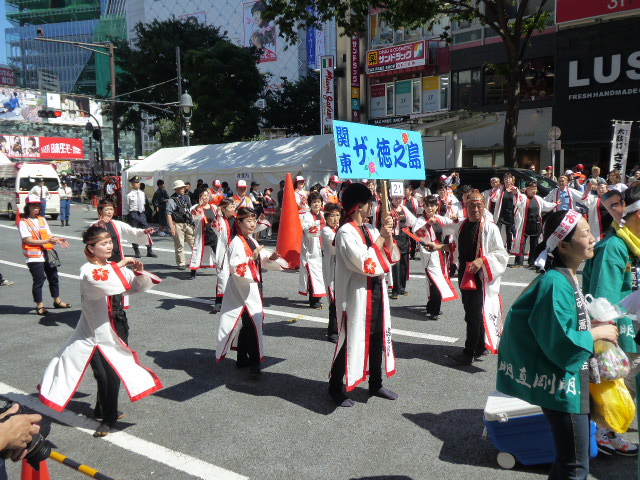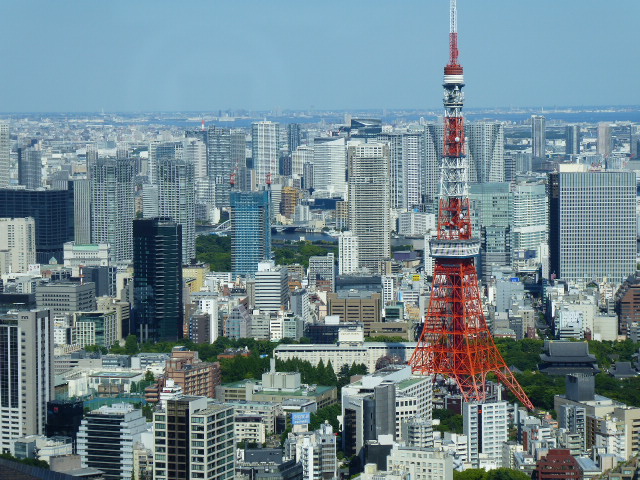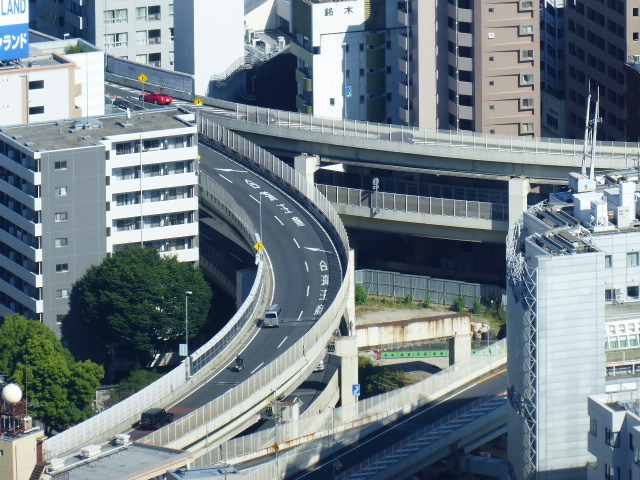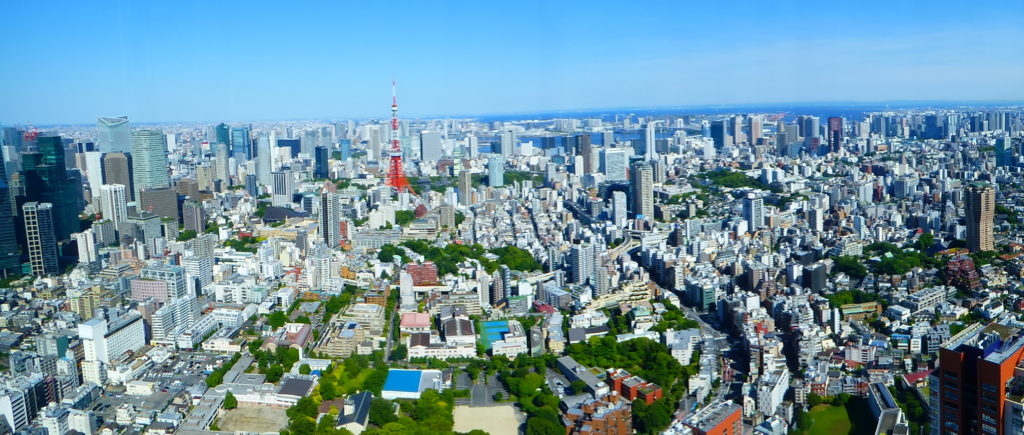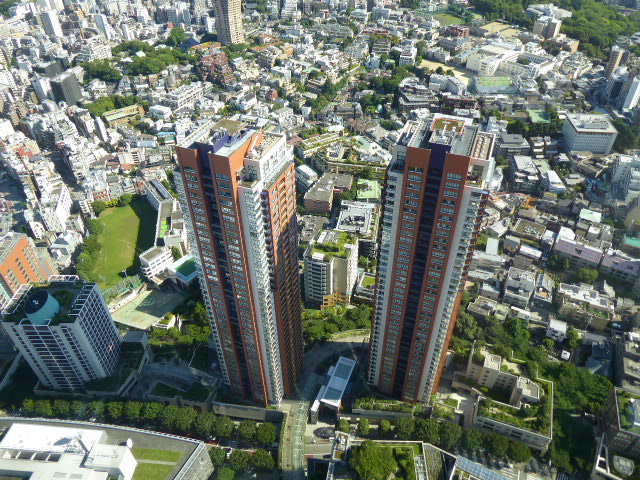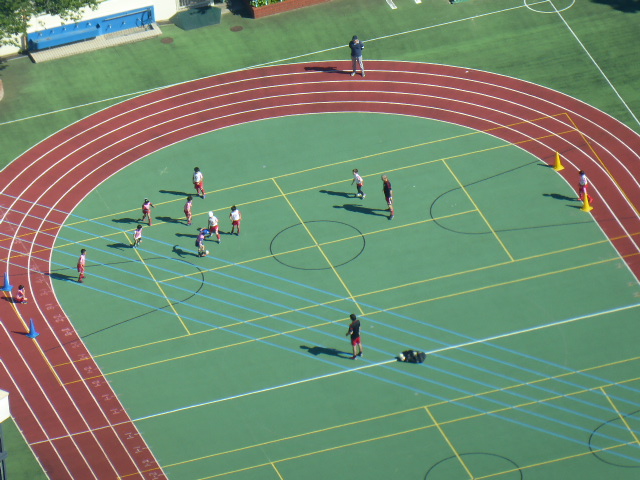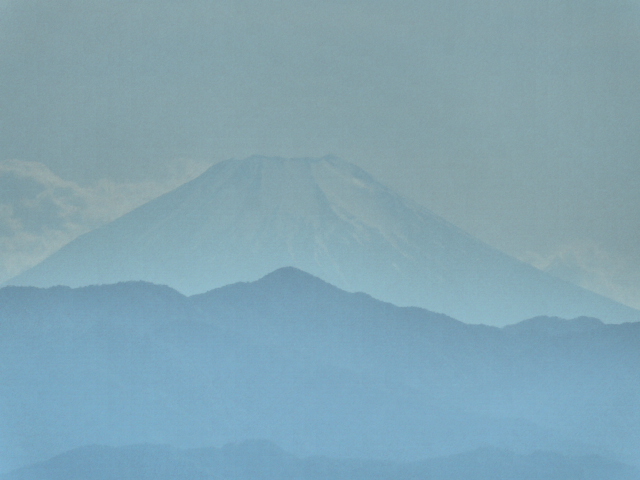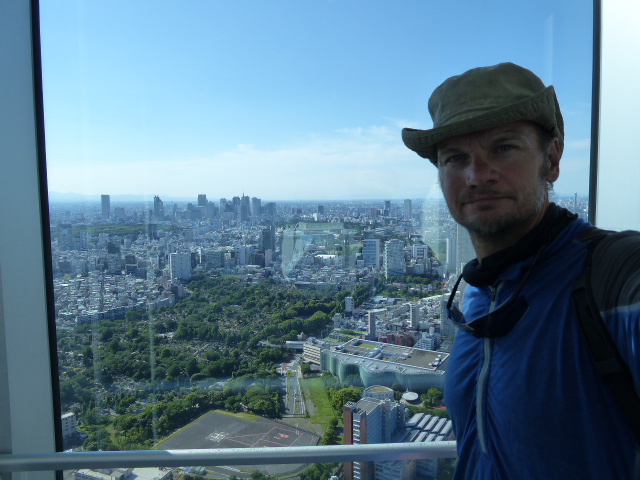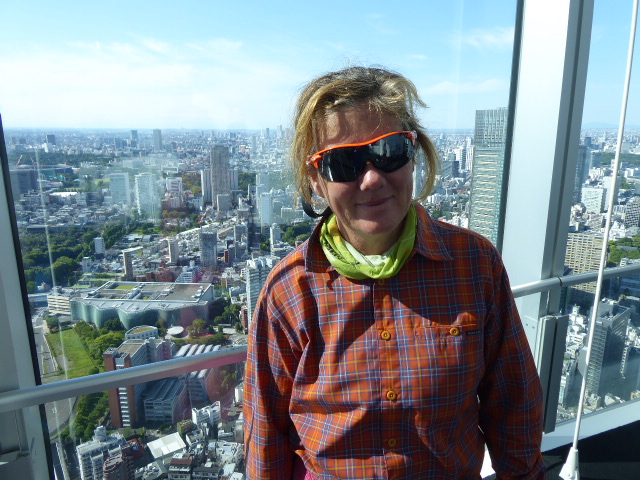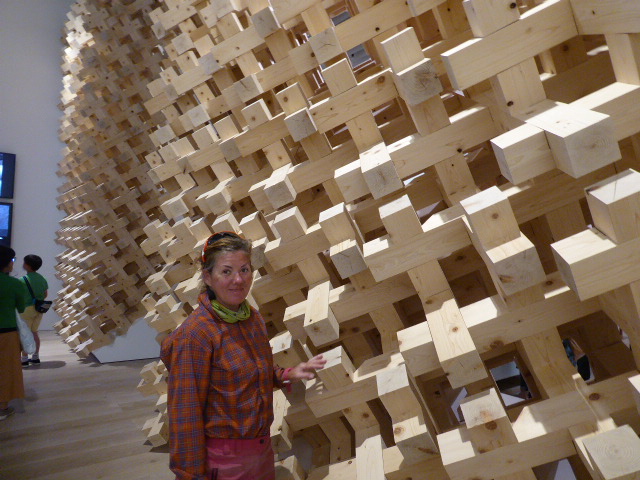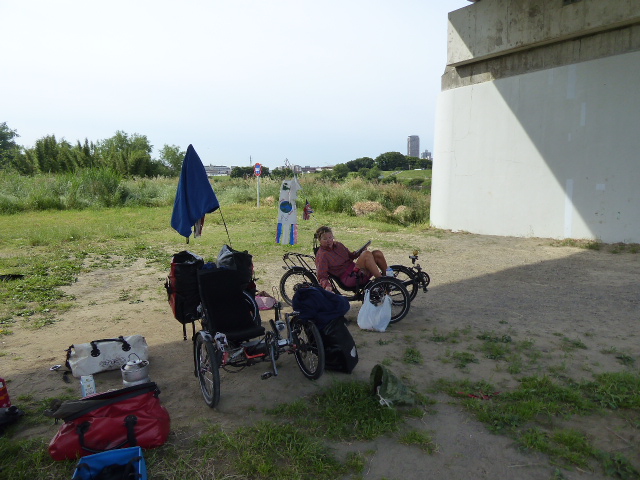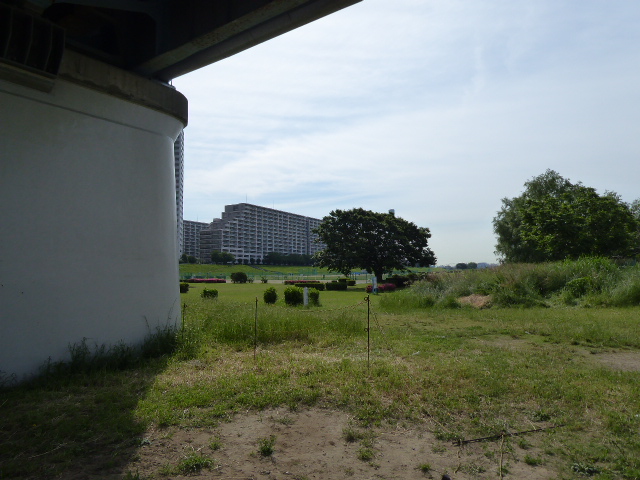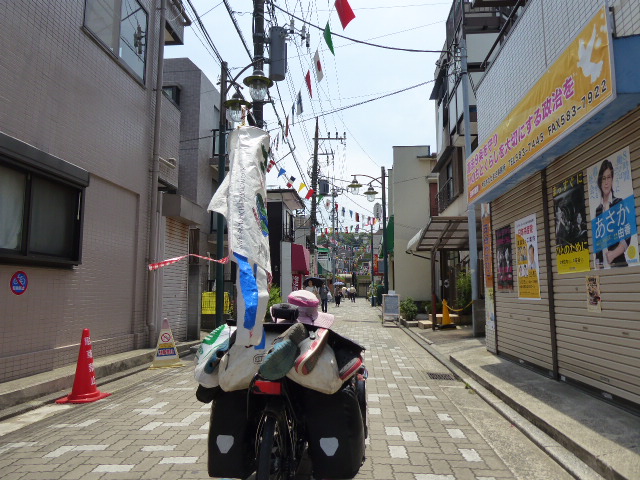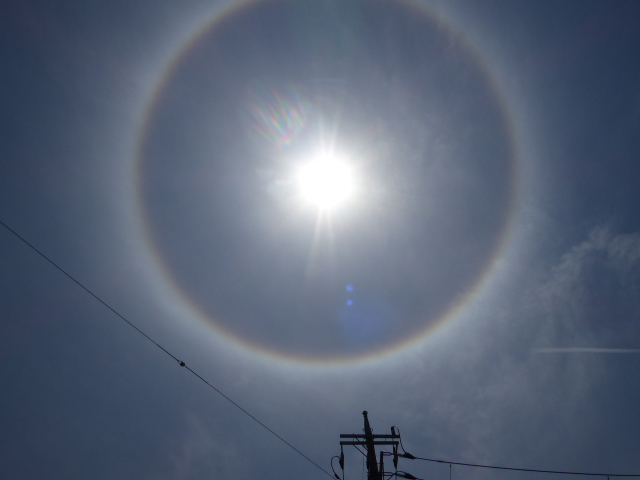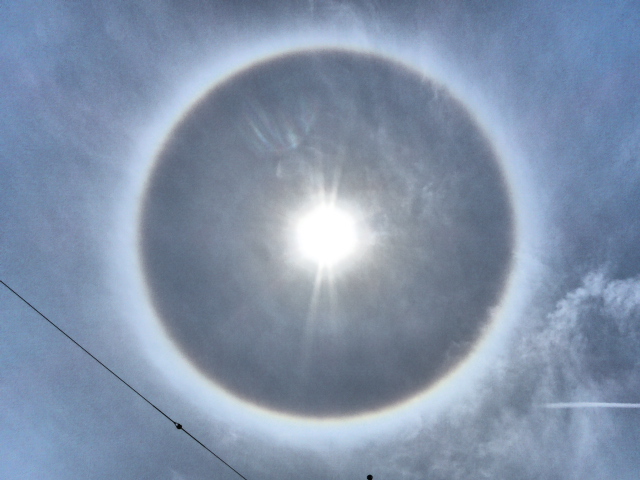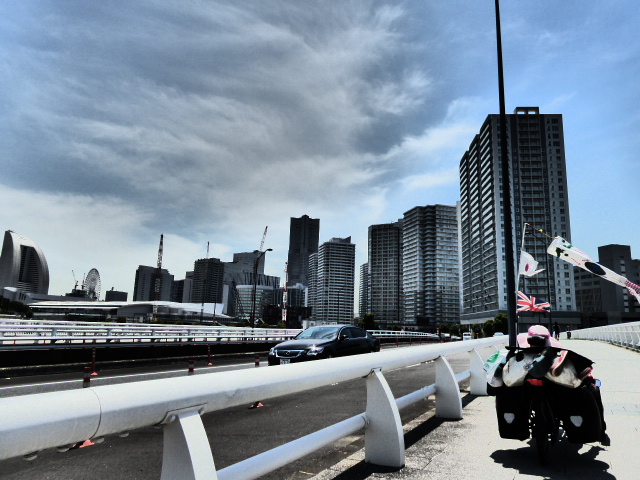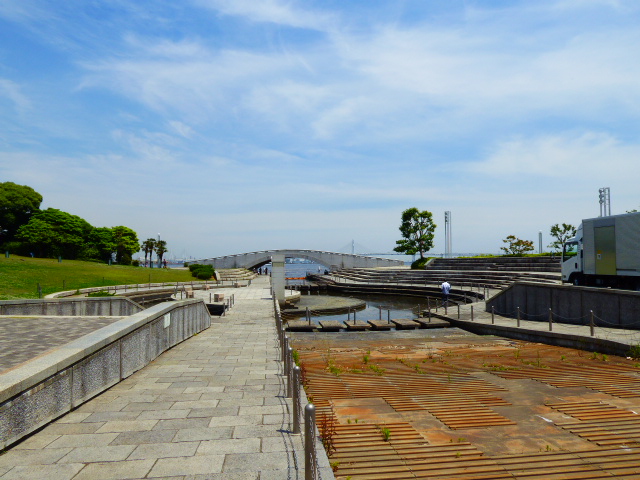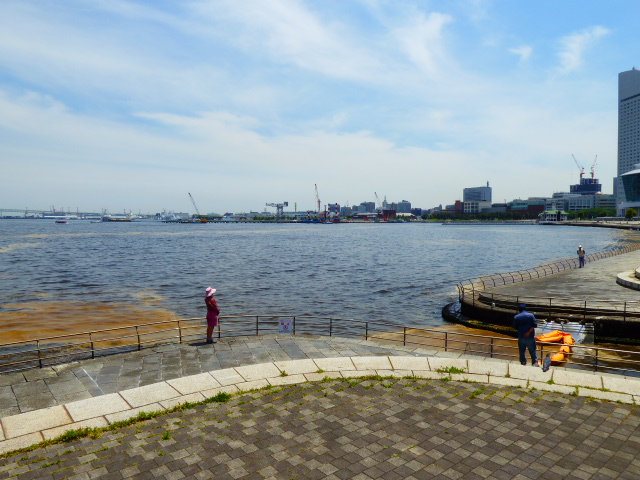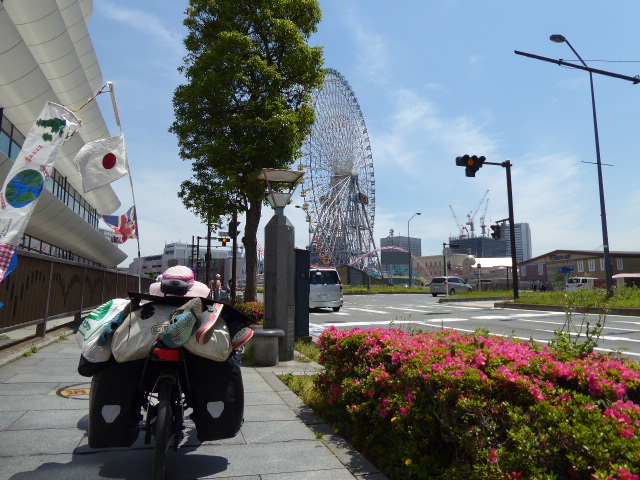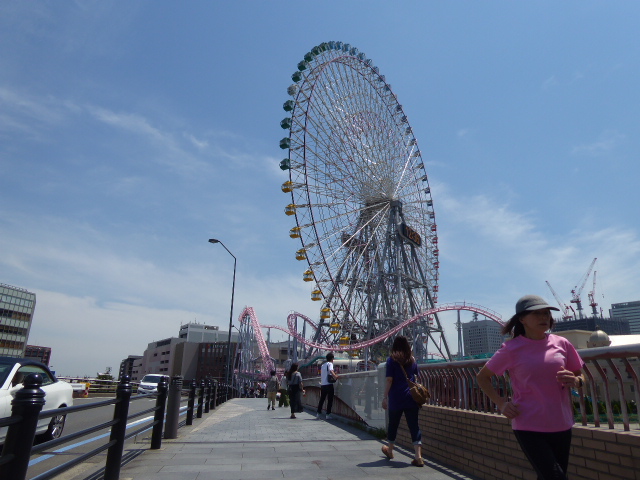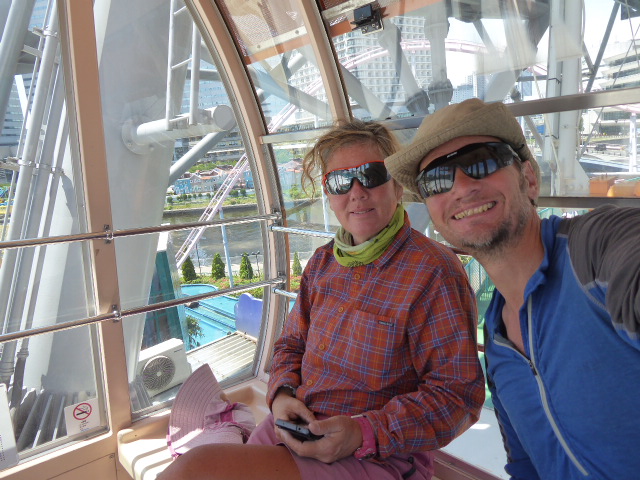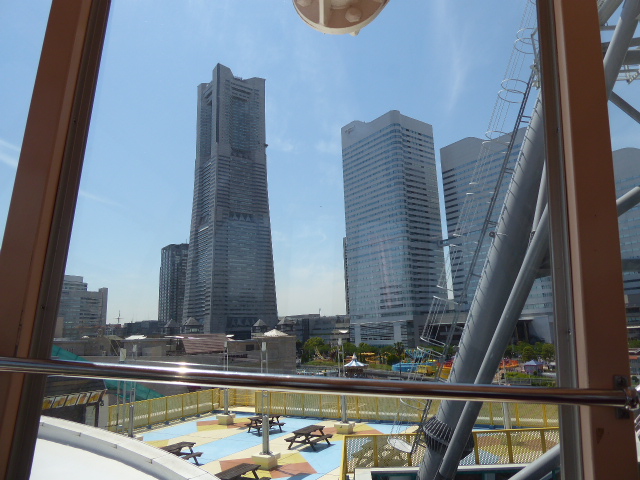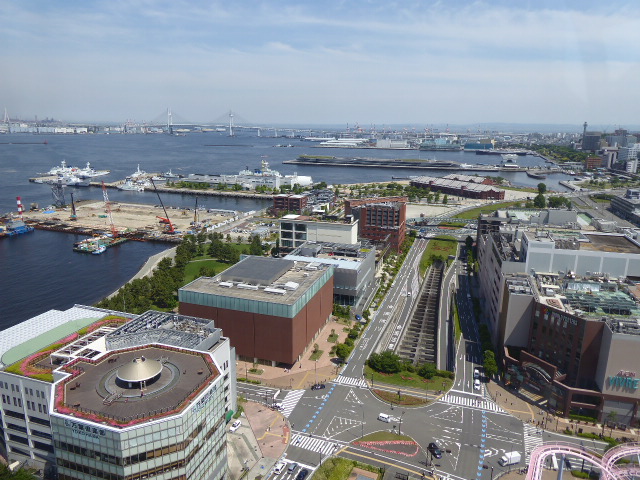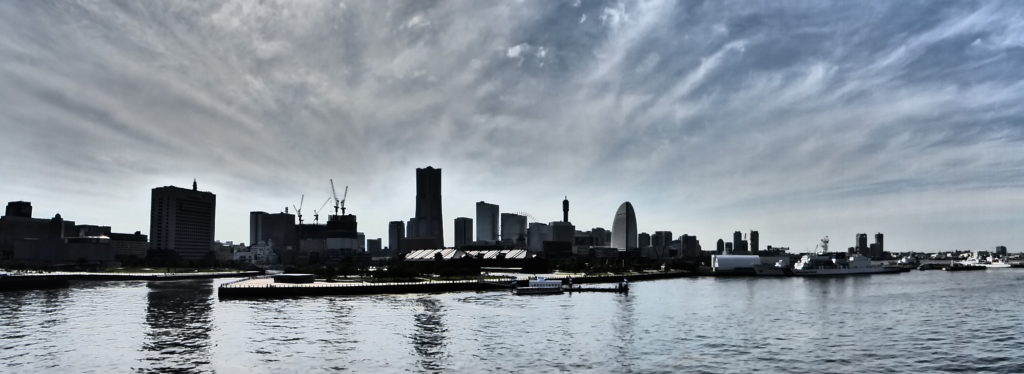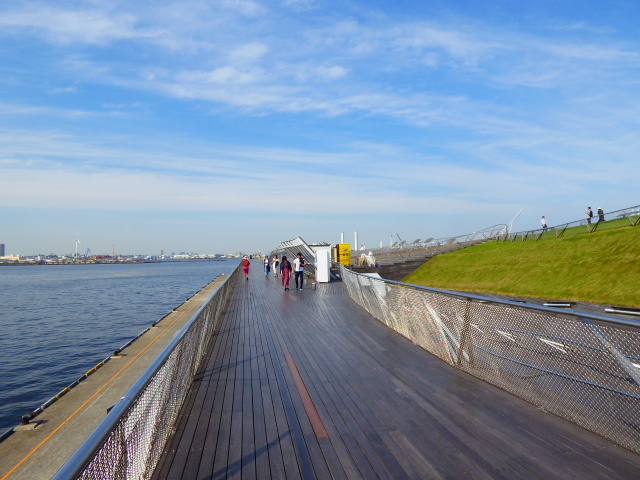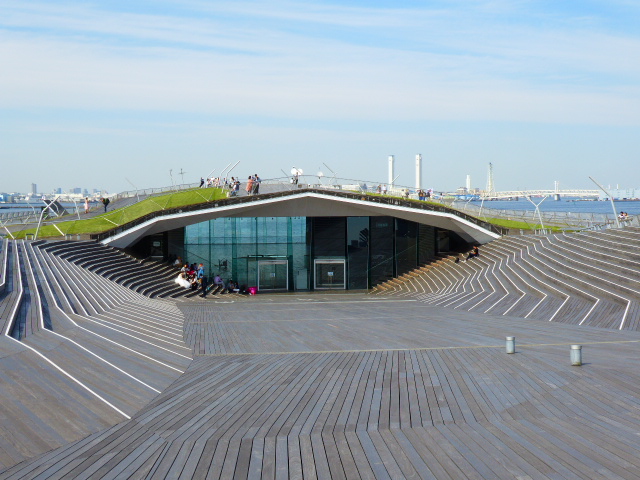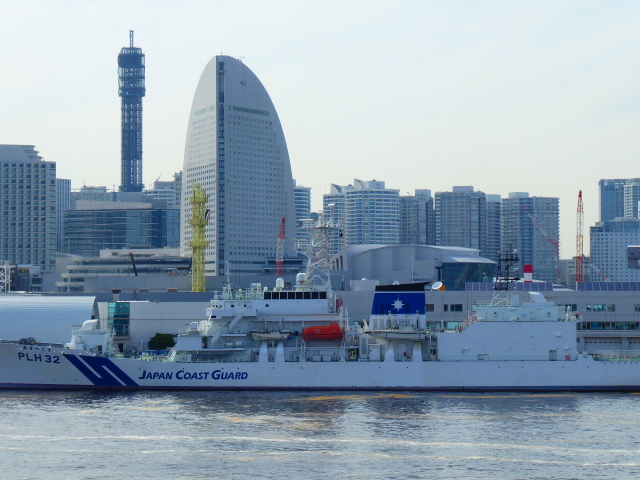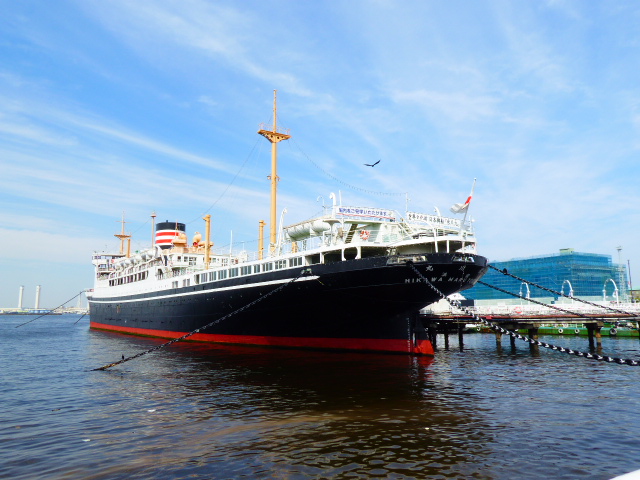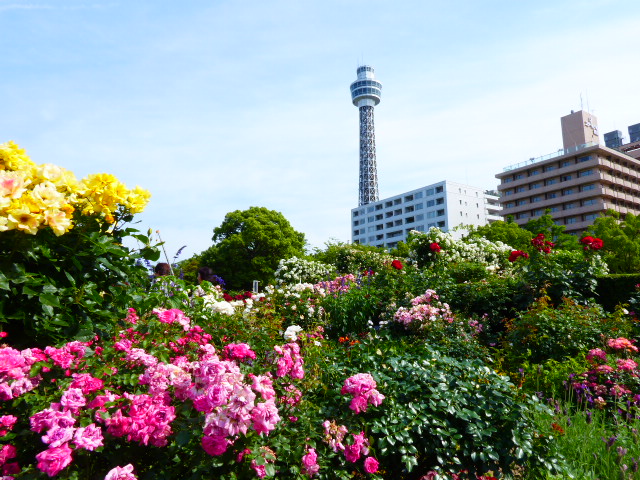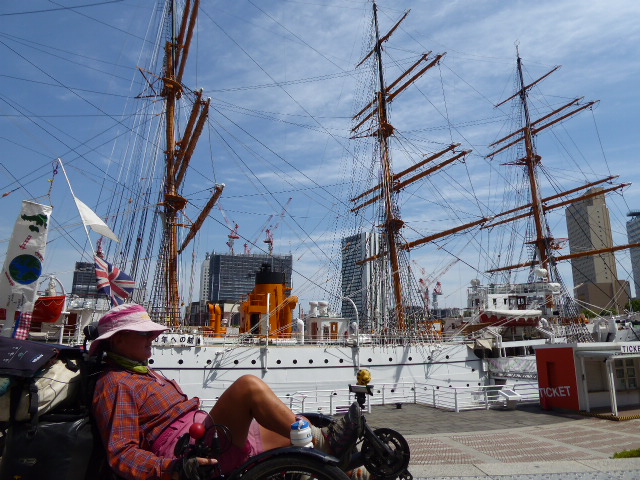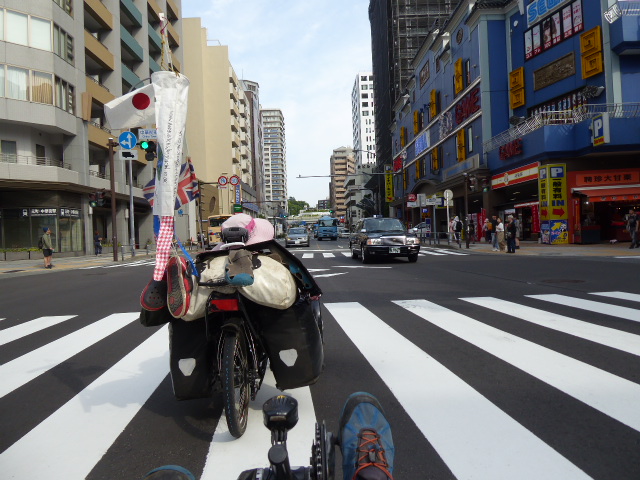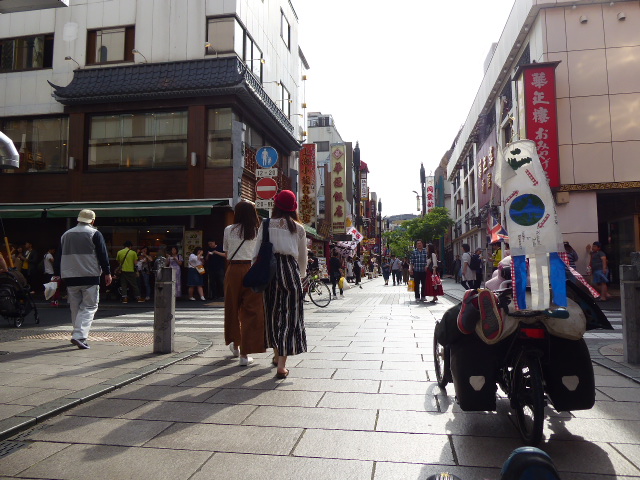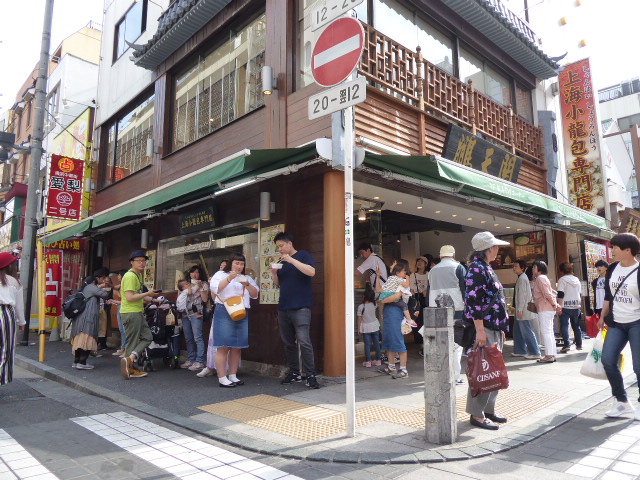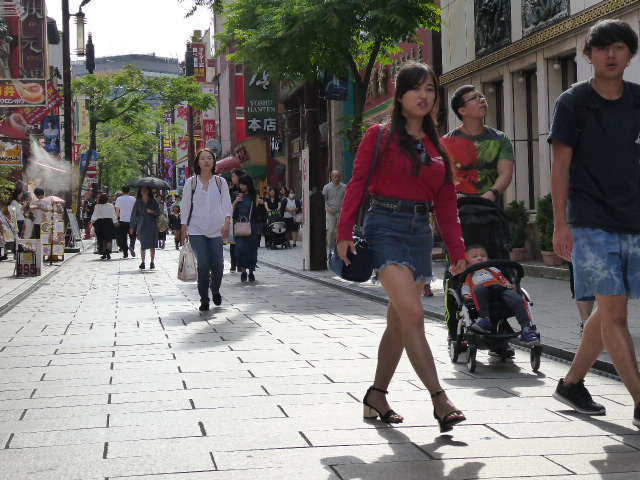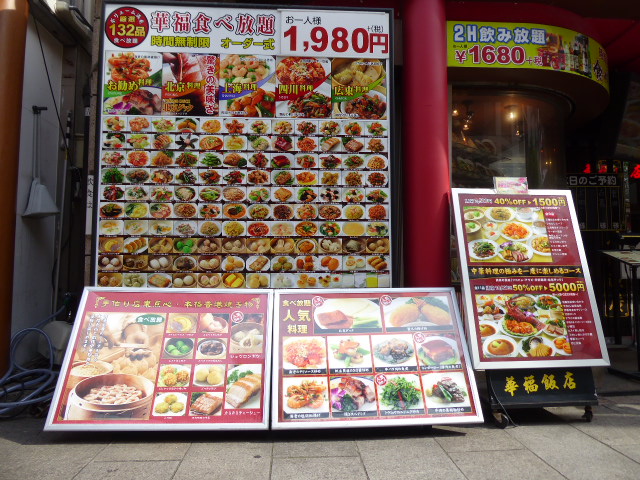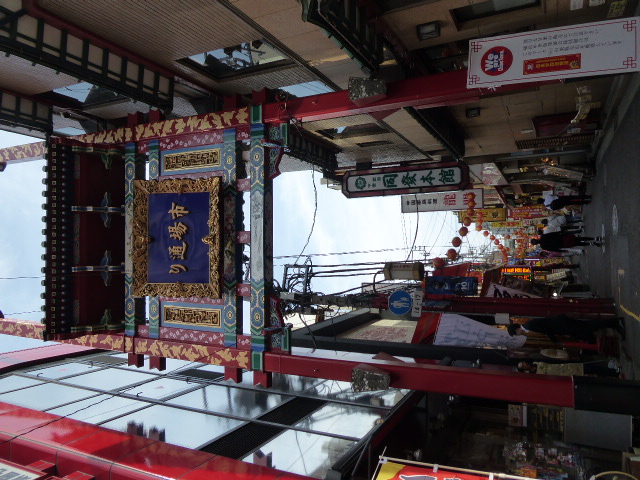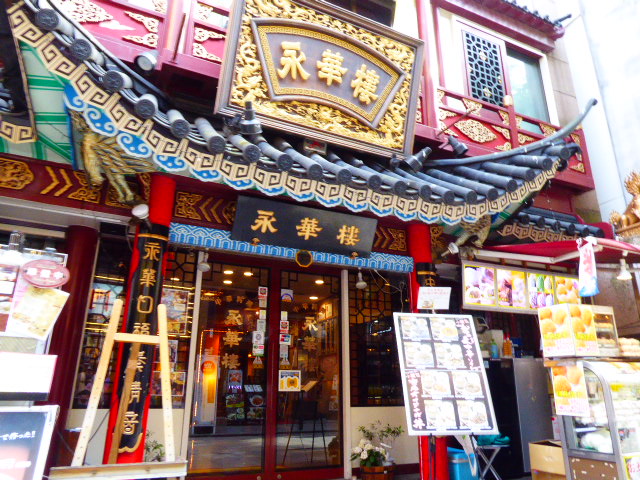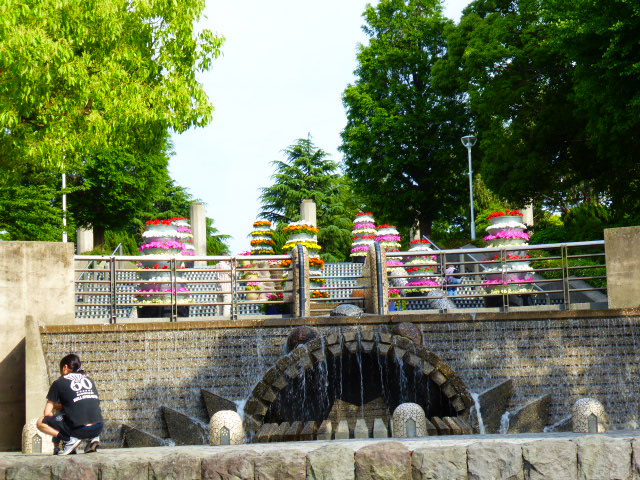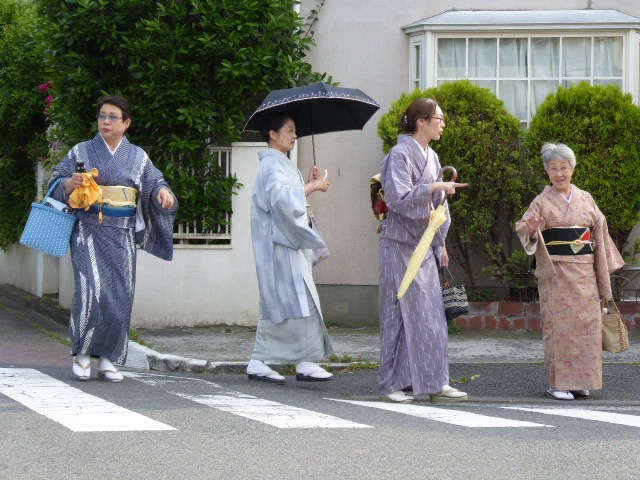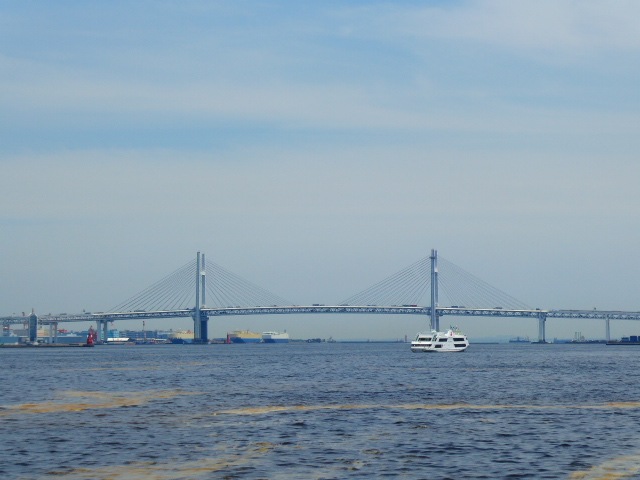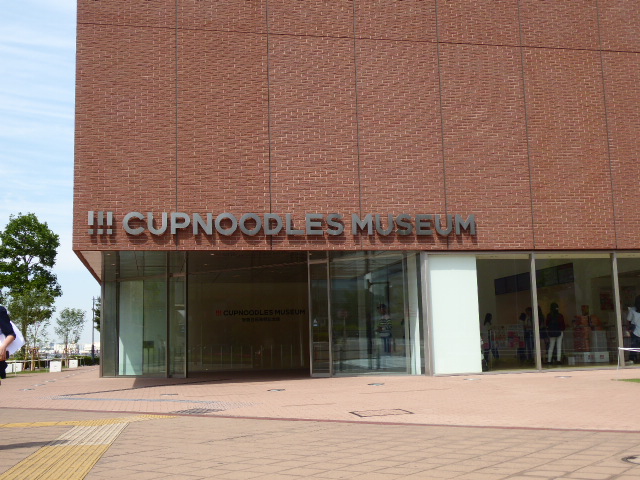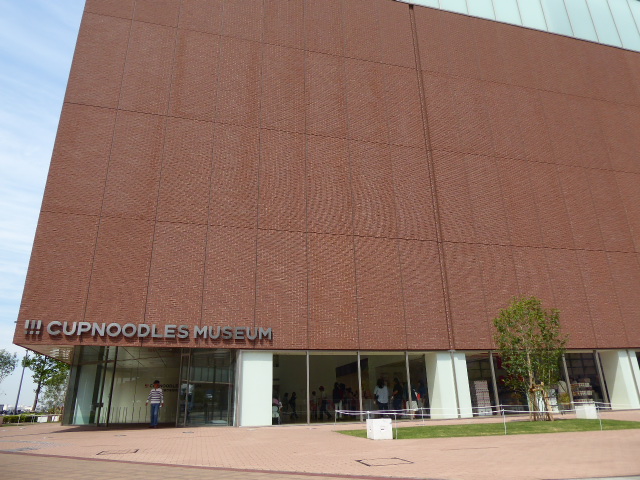Saturday 21st April
Hirake to Hirosaki
Distance: 9.42 km
Total Distance: 21452.38 km
This morning we’re out in the garden again. More soil sifting! And of course there’s the usual admin frenzy; blog, make video, publish, FB posts etc. In addition, after months full of good intentions, we finally get a translation prepared – thank you Tama. Now we can show people our translation so they understand what we’re up to. Around 2pm we leave – we knew Tama was fully booked tonight so we’re just planning a very short cycle to the park to pitch our tent.
We saw the park yesterday from the train and it was deserted but of course it’s the weekend now and there’s a baseball game in progress, the tennis courts are all busy and the car park is full. We need to waste some time so we sit up in the stands and watch a few baseball innings – sadly the home team is shit and doesn’t score a single run in 7 innings and that apparently ends the game. A merciful end methinks!
Time for tea and to set up camp.
Sunday 22nd April
Hirosaki to Hirosaki Castle
Distance: 17.51 km
Total Distance: 21469.89 km
It’s a glorious morning although we are rudely awakened and evicted from our tent at 7am by a friendly security guard. Admittedly he had been to see us at 10pm last night and told us we couldn’t camp in the sports park, but then said we could stay as long as we left by 4am when the gates reopen, as if !! But we sit on some nearby benches and have breakfast and realise that even at 7.30am on a Sunday morning there are loads of people in the park, either here for baseball practice or to play tennis. After breakfast we head to Hirosaki Park to enjoy the Sakura festivities. This park is the best cherry blossom viewing site in Japan. There are over 2600 cherry trees, some 50 varieties.
It’s still early, not even 9am, but already there are plenty of visitors in the castle grounds. We cycle through some of the park but then continue on foot, after all cycling is prohibited.
There’re people in rowing boats on the west moat as we walk through the cherry blossom tunnel along its bank. When we visited Friday evening the blossom was just coming out but now the whole park is in full bloom – breathtaking . It’s the best ‘sakura’ we’ve seen in Japan.
There are food stalls everywhere selling Japanese style fast food. We pay to go and see the main castle, only 2 pounds each. With views looking out towards Mt Awaki it’s stunning. At the moment the castle is actually 70 meters away from its normal location. They moved it so they can repair the castle walls it rests on, they did this by raising it on jacks then along a railroad to its temporary position.
We aren’t sure if it will be moved back or not, but the work isn’t due to finish until 2023! But it’s a mean feat of engineering just to move it! The main castle dates to 1811 and is an architectural treasure, one of only 12 in Japan. The 3 story tower, 14 metres high weighs 400 tonnes. After the castle park we go and visit the Zen temple area. There are a large number of Shinto and Buddhist shrines dating back to the 1600’s. 33 temples of the Soto school of Zen were once located here as well. The main temple is Choshoji Temple built in 1528. Along with 5 mausoleum it gives the area a feeling you are still in the medieval period.
Our last visit is the Saishoin Temple 5 storied Pagoda. Built 350 years ago as a memorial to those who died in the Japanese unification wars it stands 31 meters tall. It’s said to be the regions most beautiful Pagoda, with its copper roof sheets and individual window styles to each floor.
We had hoped to cycle out to Mt Awaki, where the 20 km route is lined with cherry trees, the longest in the world, but we’ve been told the cherry blossom isn’t due until the end of April and it’s a 15km ride just to check. Instead we stop at a supermarket and buy picnic provisions before heading back to the castle park. It seems a shame to waste the good weather so we join all the locals (and tourists from all over Japan, busloads!) and set up with our picnic in the castle grounds. There are traditional bands and dancers mingling amongst the picnicing crowds entertaining one and all. Unfortunately we didn’t buy any Sake! But a perfect way to spend the afternoon. The main thoroughfares are absolutely jammed with people and there’s queues everywhere so thank goodness we saw it all in its glory this morning.
We spend all afternoon in the park and decide we should wait until nightfall so we can see the trees illuminated by spot lights or all the specially erected lamps with lampshades celebrating the 100th anniversary of the Hirosaki cherry festival. The park is possibly more beautiful than in daylight and certainly the food stalls are proving extremely popular.
There were several food stalls we noticed at 9am already attracting queues, now these same stalls have massive queues and they’ve been serving for nearly 12 hours!!! We’re definitely pleased with our decision to visit Hirosaki at the peak of its blossom – it’s been absolutely fantastic.
We decide to camp in the park, trying to hide behind a toilet block, but within minutes of getting into bed security staff call for us and tell us we can’t camp in their park. We pack up but only cycle 2km before finding a nice little spot by the river.
Monday 23rd April
Hirosaki Castle to Aomori
Distance: 41.88 km
Total Distance: 21511.77 km
Today we head to Aomori. The beautiful sunny weather we’ve been enjoying since Thursday appears to be over and it’s back to overcast skies and strong headwinds. Originally we had intended to catch the Aomori – Hakodate ferry but some other cyclists, Cycle2Inspire, recommended we follow the coast north to Oma and catch the ferry there.
So that’s the new plan and tonight we find a park and set up camp.
Tuesday 24th April
Aomori to Noheji
Distance: 46.84 km
Total Distance: 21558.61 km
Last night we had a sprinkling of rain and when we wake it’s still overcast. As we cycle off there’s a light spitting of rain. By mid afternoon as we round the Natsudomari Hanto peninsular it’s getting heavier and we’ve had a headwind all day.
We’ve broken out the ponchos but our feet and hands are cold. By the way, we are still cycling in shorts, only Darren has long trousers these days but they are packed away safe in our panniers! Crazy huh!!
We cycle into Noheji and decide to try and find some accommodation. We try couchsurfing, but there’s only 1 guy in town (an American weirdly) and he hasn’t been active for ages. Booking dot com says there’s 1 hotel but its 18,000 yen per night, that’s like 122 quid! We pop round to the town council office and they point us to a cheaper hotel, only 5000 yen a night. We haven’t stayed in a hotel in Japan yet but with the forecast suggesting heavy rain for the next 24 hours we decide to go for it.
However it turns out it’s 5000 yen per person, but the beds are so comfortable!! That’s us settled in for the night.
Wednesday 25th April
As predicted the 100% chance of rain is fulfilled but unlike yesterday’s very light drizzle this is much heavier, no way am I cycling in this. Sadly no response from couchsurfing so it’s another night in our hotel.
It’s not cheap but my God, after Indian hotel rooms, it’s like Gold plated 5*.
Thursday 26th April
Noheji to Mutsu
Distance: 59.89 km
Total Distance: 21618.5 km
Today we’re blessed with clear blue skies but there’s a strong wind but it’s just about in our favour. We cycle up the coastline of Mutsu Bay, it’s a pretty route with occasional glimpses of the rough seas.
We stop in Mutsu for dinner and then out to Hayakakenuma Park where the preparations for the cherry festival are underway. We camp in the park next to one of the 2 lakes.
We’ve had clear skies all day so it’ll probably be a cold night but hopefully we won’t see any more rain for a while.
Friday 27th April
Mutsu to Yagen Spa
Distance: 33.96 km
Total Distance: 21652.46 km
Today we do the unspeakable – first we backtrack towards Mutsu and then pick a route climbing up Mount Osore – crazy huh?
But we want to visit Bodaiji Temple on Mount Osore and as we climb we have views of Mt. Kamafuse (Kamafuseyama) Observatory at 785m. Mount Osore, also known as Osorezan, is a caldera volcano in the center of Shimokita peninsula in Aomori prefecture. The mountain is 879 meters high and its last eruption was in 1787.
It sits on the shores of a highly acidic lake named Usori, often an incredible emerald green. Osorezan is not an actual mountain but is a barren volcanic wasteland of bubbling sulfur pits, and a strong smell of sulfur permeates the air in the area. Osorezan is considered to be one of the three most sacred places of Japan, along with Koyasan and Hieizan.
Osorezan means ‘Fear Mountain’. According to the Japanese mythology, the mountain is considered to be the gateway for the deceased souls to their afterlife. This is because the mountain features geographical elements similar to the descriptions of Buddhist hell and paradise. At the center of the sacred area of Osorezan is Lake Usori, and next to it is a large beach covered with white sand. Surrounding them are eight mountain peaks, which represent a lotus flower with eight petals, the symbol of Buddhism. In its central area there are 108 ponds of sulfurous boiling water and mud, which corresponds to the 108 worldly desires or hell. Side by side with these hellish ponds and woods, the beautiful scenery of the lake and the coastal white sand represents paradise or heaven. According to the mythology, a deceased soul has to cross the path filled with worldly desires and reach the heaven.
Osorezan is also the site of a temple named Bodaiji. The temple, also known as Entsuji, is the main attraction of the mountain. It was established by a Buddhist monk named Jikakudaishi in the year 862. The temple is run by Soto Zen sect of Buddhism, and the principal statue of worship is Jizo Bosatsu. The temple is built around a number of volcanic cauldrons (Jigoku hells) with bubbling sulfurous water in a variety of unnaturally colored shades. Scattered around the temple site on Osorezan, visitors can see many offerings made by the worshipers to the souls of the dead. Such offerings include small Jizo statues wearing bibs, brightly colored pinwheels, and piles of stones and pebbles supposed to be built by the souls of children who died before their parents.
Having climbed up Osore we have short but sharp descent to the Caldera lake but this means another climb out. However we’re now following the Yagen Canyon, located upstream of Ohata River, which is a beautiful valley formed by waterfalls and deep pools, in thick forests of cypress and broadleaf trees.
A simple transparent hot spring flows here, and it is said to have a variety of health benefits. In fact there’s a spa area, Yagen Spa. There’s a number of onsen here but we’re looking for the free one. After a couple of false starts we find it. It’s a beautiful outdoor hotpool but since there’s only one pool and one changing hut, technically there are segregated timings for men and women. And when we arrive a lady is just finishing. It’s in the middle of nowhere so we decide to risk a joint bathing session – keeping a wary eye out for any new arrivals!
On the way out I hear rustling next to the steps. I expect to see a lizard or mouse or something harmless but it’s a bloody massive scary snake. We research later and decide it’s a Japanese Tiger Keelback.
We decide to camp in the woods near the onsen.
A lovely peaceful wooded area but actually I find myself more on edge when I wake in the middle of the night than usual. I hear creepy noises and convince myself there’s something bad out there and can’t sleep for worry!
Saturday 28th April
Yagen Spa to Oma to Hakodate
Distance: 52.84 km
Total Distance: 21705.3 km
The day starts with a fantastic ride, again beside the Yagen Gorge, to the sea with a strong tailwind.
But having hit the coast we head north to Cape Oma. The wind picks up to about 30kmph but now it’s in our faces. We struggle on trying to enjoy the views of the coast, which along this stretch are pretty impressive, but we’re pooped. It’s bloody hard work.
In Oma we had planned to visit the cape and perhaps stay the night. In fact Daz had planned to camp at the free campsite on the cape but there’s no way I’m pitching a tent in this wind!!!!
Cape Oma is the northernmost point of the Shimokita Peninsula and of the entire Honshu Island, Japan’s main island. The cape looks across over the Tsugaru Kaikyo Strait to southern Hokkaido, where the city of Hakodate is visible on clear days. Besides its geographical notoriety, Oma is well known for its tuna fishing industry. Oma Tuna are among the best and most expensive in Japan, and most make their way to Tokyo’s Tsukiji Market and into sushi restaurants across Japan.
We want to catch the ferry across the Tsugaru Straits that joins the Sea of Japan and the Pacific and separates Hokkaido from Honshu. We’d checked the internet for ferry timings and expected the next ferry to be 7am Sunday so it seemed a night in this windy corridor was on the cards. But fortunately we decide we ought to check out the ferry terminal and find out there’s a ferry at 5.30pm – 2 tickets please! We’re praying Hakodate weather is more benign. The crossing takes about 2 hours.
We cycle off the ferry in the dark and are mightily relieved to discover there’s no wind and it’s quite warm.
We’ve read that the highlight of Hakodate is the night view from Hakodate mountain and since it’s a beautiful clear moonlit night we head to the Hakodate Ropeway, a cable car to the top. We’re a bit astounded to discover huge queues for the cablecar. We’re not sure why it’s so popular and try asking the staff but a young American girl, Lauren, overhears and explains ‘Golden week’ has just started. Golden week is a Japanese holiday and so everyone is on holiday. So we join the queues and chat with Lauren and the time soon passes.
Up at the top it’s almost impossible to get a decent view because of the crowd but eventually we manage to get some stunning views over the town. Now we know why it’s in the top 10 – amazing! Back at the bottom we need to find a campsite and it’s already way passed our bedtime. There’s 2 parks nearby that we want to check out. The first has several historically buildings and is mostly paved so we decide against it but the next one is a tiny, tiny bit of park with a playarea and toilets. It’s 10pm so we set up but neither of us are confident we’ll get through the night without being moved on.
Sunday 29th April
Hakodate to Hakodate Onuma Prince Hotel Grounds
Distance: 42.13 km
Total Distance: 21747.43 km
Well it just goes to show the Japanese really aren’t too bothered about random campers / cyclists setting up in their local park.
We’ve had a great night but we’re up early, 7am, to pack up before anyone takes offence. After breakfast we head to the fish market enjoying the sights of Hakodate which reminds me of San Francisco with trams and renovated old brick warehouses.
The fish market is wonderful. There’s huge king crab, scallops, sea urchins and squid swimming about in tanks. Pick your dinner and have it cooked on bbqs in front of the stalls.
There’s dried fish, smoked fish, roe and lots of stuff we can’t even identify! The biggest crowd is at a ‘catch your own squid’ pool. We watch as a large queue waits patiently for their turn with a small rod and hook. Once caught the squid is gutted and chopped up, served raw and still wriggling at times.
Even some of the young Japanese pull faces when they see lunch is still putting up a fight! We cycle over to Hakodate park for the cherry blossom passing many old wooden coastal houses.
The park is OK, nothing great, but then we head over to Fort Goryokaku, with its huge 5 sided star shaped battlements covered in cherry trees it’s another beautiful sakura moment. We could have gone up the Goryokaku Tower to get a bird’s eye view of the star marked out in blossom but to save the expense we’ll steal a photo from the Internet.
Families and friends picnic in huge groups on the surrounding parkland, most have a gas hotplate or bbq cooking their fresh meat, fish and vegetables. Daz is more interested in the picnic feasts than the blossom and keeps walking amongst all the groups hoping someone will take pity on him and feed him. It makes him so hungry! Rowing boats move leisurely along the huge moat that surrounds the battlements.
Finally we tear ourselves away and cycle out of Hakodate. We keep on back roads through farmland and at one point stop to inspect some people working amongst huge cloches. They are thinning out baby carrots. It’s a huge field so they have their work cut out! Especially in the brisk wind.
Fortunately the wind is at our back today and assists us up a long hill to Omuna, an area of lakes and parkland. We now have a map book for Hokkaido, it’s in Japanese, but we’ve had the legend translated into English so we know what all the symbols mean. We’ve spotted an Onsen symbol on the map so head over to it, but it turns out to be another posh hotel with its own Spa. Oh well, we get some water off them then as we cycle out passed their golf course we spot what might be the staff carpark and some rough ground beside it.
Tonight’s campsite sorted! Creamy mushroom spaghetti for dinner.
Monday 30th April
Hakodate Onuma Prince Hotel Grounds to Oshamambe-cho
Distance: 78.49 km
Total Distance: 21825.92 km
Thankfully another peaceful night and an early start. We’ve realised the Japanese weather is really toying with us. The wind changes direction by the day but today it seems to change by the minute. We’re constantly buffeted by sudden gusts and for the first time even on my trike I feel unstable. The temperature has shot up too – it’s in the high 20s, the traffic on the coastroad, Highway 5, is horrendous and the road quality along the hardshoulder is massively potholed. It’s hard to pick a good line but we daren’t stray back onto the Highway because of the heavy, fast moving traffic. At one point, after a long descent, I realise I’ve lost Daz. I stop and wait wondering if he’s got trike problems and then he arrives holding my light and tiger horn. They were on the forward mount but it’s simply snapped.
I didn’t even notice it flying off but luckily Daz spotted it lying in the road. Today we meet a Canadian bike packer, Jordan, from Switzerland. He’s on a 3 month trip, 6 weeks in Japan, 6 in India.
He’s barely got any kit and what he has is packed around his frame but he’s able to ride a mountain bike on the bike trails so that’s pretty cool. Despite the bizarre winds we make good progress. I’m pushing the pace too because I want to finish the day with an onsen and fortunately this time it’s not a ridiculously priced bath in a posh hotel. It’s 440 yen each for the onsen. The water is unbelievably hot, between 39 and 41 degrees. Actually I think I start in the cooler pool and later try the hotter one, I’ve just seen another calmly submerge herself so how bad can it be? Horrendous – I can’t manage to go in above my knees and even then I feel as if my flesh is being broiled from my shins.
After our cleansing session it’s time to set up camp and we spotted a nice piece of rough ground near the onsen so that’ll do for the night.
Tuesday 1st May
Oshamambe-cho to Sobetsu
Distance: 59.82 km
Total Distance: 21885.74 km
It’s a bit drab when we first start out, but the coast road is flat and the wind is slightly behind. Unfortunately the road then gets hilly and the sun comes out full force! Come on Japan, what’s with the freaky weather? It’s not as if we’re in Britain anymore! We meet a young lad today who has been walking since September.
We stop on one particular hill on the hard shoulder, time for PB’n’J sarnies. Later we drop back down to the coast, oh joy, but we know we are climbing back up to Lake Toya soon. Luckily there are 2 long tunnels, Aoba at 1719 meters and Mitoyo at 1970 meters. They may be long, noisy and dusty but it saves a long climb up over the hills that rim Lake Toya and actually there’s a super wide pavement for us to use but still almost 4km in tunnels on a bike ain’t my idea of fun.
At the end of the tunnel we immediately hit the lake and a stunning view. There’s a big volcano in the distance and snow covered hills around too.
There’s a large island in the middle and we find out it’s actually a gigantic Caldera lake formed about 100,000 years ago after a huge eruption. Behind us is Mt Usu, an active volcano that last erupted in 1977.
There is a memorial park and volcanic science museum. We cycle around the lake through gorgeous sculpture parks and through a small town. We are heading to a campsite marked beside the lake. But first there’s a large descent beside an impressive waterfall to the nearest village where we can buy provisions. We check the forecast again but the 100% rain every hour tomorrow has been pushed into Thursday. We were expecting tomorrow to be a cycle free day due to continuous rain so we thought a proper campsite with cooking shelters, toilet blocks and hot showers was a sensible option. No rain means we’re cycling and after yesterday’s winds and today’s hills we are pooped and decide not to cycle back up to the campsite.
Instead we cycle out of the village, collecting hot water at the nearby Michi-no-eki (a bit like a motorway service station except better – they often have farmers’ markets attached selling fresh produce) and find a quiet field to camp in. We soak up the last couple of hours of sun and have the wash in our bucket!
Wednesday 2nd May
Sobetsu to Balaju
Distance: 23.11 km
Total Distance: 21908.85 km
It’s just a short ride today, 24km, because we’re heading to our nearest campsite. There’s been another change in the forecast and rain will start early this afternoon and continue until Thursday afternoon.
A couple of kilometers before our campsite we get some provisions and then it’s a long climb beside the river and eventually we see our campsite. OMG to our complete dismay it’s just a field with a toilet block one end and washpoint without water at the other.
It’s pretty horrid but at least it’s free. We put the tent up next to the toilet block thinking it will provide shelter. It also gives us easy access to the toilets, water and the small covered toilet porch where we (well Daz) can cook.
The day progesses and as evening falls the predicted rain fails to arrive. We’re becoming quietly confident that the rain won’t materialise after all and we can push on tomorrow to somewhere more salubrious.
Thursday 3nd May
Balaju
Well it does rain but it’s not the rain that’s causing a problem. It’s the wind. From about midnight the gusting wind is playing havoc with our tent despite Daz tightening all the guys earlier and using the extra long storm pegs. By 3am we’re both wide awake wondering if our tent will survive this hammering and even if our tent survives, unable to sleep, we’ll spend the next few hours watching and worrying. Finally we check the forecast and apparently this wind is 28kmph and it’s due to go up to 41kmph by 12pm. That’s 8 hours away. It’s already light at 4am and we decide emergency action is required. We pack up – yup in the rain and gusting winds and set up in the Gent’s toilet. Packing up in the rain meant emptying and dismantling the inner pod whilst keeping the fly up to keep in dry. No easy feat. It’s a bit of a tight squeeze but by 5am we’re all sorted and ready for more sleep.
At 11am I hear footsteps and a Japanese guy wants the loo. Well he’ll just have to use the Ladies’. He’s actually managed to set up in the far corner of the field – impressive in these conditions. The wind has dropped but the rain has set in. I think I’ll be living in the toilets for the next 24 hours – another luxury experience I was hoping to avoid, courtesy of cycling the world.
Friday 4th May
Balaju to Kashima
Distance: 58.77 km
Total Distance: 21967.62 km
Damn the bloody weather forecast. Even though the weather cleared yesterday afternoon we stayed in the toilets just in case. But it remained dry and we created so much condensation everything that dried in the afternoon was wet again.
This morning, as decided yesterday, we set out early (we were on the road by 7am). We planned to take advantage of the dry spells predicted but it remained dry all day. We cycled to Shikotsu Lake and although it was dry it was bloody cold. Without any cafes, restaurants or shops to tempt us and only one Michi-no-eki which was shut we have to settle for peanut butter sarnies and milk for lunch.
We can’t decide what to do……. an onsen, a proper campsite or more cycling. We’ve seen the lake and whilst there’s a campsite and an onsen on its shores, it all looks a bit grim with oppressively grey clouds overhead. It’s still early too so we push on. We find a nice cycle path beside Highway 16 and we’re making good speed towards Sapporo when Daz spots a potential campsite.
Blue and White Flycatcher and Narcissus Flycatcher
There’s a rest area with toilets, water, benches and a shelter. Bugger, it’s actually an excellent site but I was already thinking about McDonald’s, beer and civilisation. I grudgingly acquiesce. Luckily there’s some light entertainment available; there’re 2 canoeists constructing their aluminium framed canoes overwhich is stretched a tight fitting skin. Wow we’ve never seen these before so first we watch then we decide to join in and give them a hand.
Once they’ve launched and paddled off we head back 500m to what I’d hoped was a restaurant or cafe. It’s neither, it’s a salmon farm but with educational display rooms attached. Of course it’s in Japanese but we see the salmon lifecycle and the history of salmon farming. It probably wouldn’t appeal in the UK but here fish constitutes a main part of the Japanese diet as does the fish roe.
Back at our rest area we set up camp. And there’re more canoeists, this time there’s an inflatable 2 man-canoe and a solo canoeist.
Daz watches the inflatable but the lady involved is obviously panic stricken and on launch tries to stop all movement by grounding her paddle. Then it sticks and she nearly capsizes them. Chortle, chortle.
Saturday 5th May
Kashima to Sapporo
Distance: 51.3 km
Total Distance: 22018.92 km
I had planned to get up early this morning for some birdwatching but since I don’t wake up until after 8am I miss my opportunity although we do spot a tree creeper in a hole in a tree.
Today we head into Sapporo along a nice cycle track. There’s been another temperature drop – it’s only 11 degrees C and there’s the occasional spots of rain.
We should camp but we succumb to the lure of a hotel. Actually this one is relatively cheap – about £30 a night but our bed is up a ladder, blimey a bunk bed at my age and the bathroom is down the corridor so taking a wee is a huge hassle. There’s nowhere to park the trikes either so we abandon them across the road in a car park. Tonight we treat ourselves to a proper restaurant meal, sashimi and chips with a side of noodles and Japanese omelette! It’s all delicious, even the raw fish which Daz always harks on about and I try to avoid! All the food is ordered on a touch pad at the table, the fact it’s in English with pictures helps a great deal.
Some restaurants we have gone in only have Japanese menus with no pictures, makes ordering hard!
Sunday 6 May
Sapporo
Sightseeing day yay! We have a nice curry(!) for breakfast then head out. It’s forecast to rain so we are armed with our waterproof jackets. We walk over to the fish market area but it’s not as good as the one in Hakodate. Then over to Odori park, which is down the middle of a wide avenue full of flower beds, fountains and sculptures.
We see the TV tower in the centre of town then head to the clock tower, said to be a huge disappointment as it’s surrounded and dwarfed by all the high-rise buildings, but it’s actually very quaint. The former Hokkaido Government Office is also worthy of our visit unlike the underground art installation along a metro concourse.
And then we get sidetracked by the lure of Sapporo Factory, a huge shopping mall. Actually it has a huge atrium and is worth visiting to see that alone but it also has a large amount of outdoor equipment shops which we spend an hour or so walking around ogling the nice shiny camping equipment! Although tempted we don’t buy anything! Now for our highlight, a trip to Sapporo Beer Museum!
We whizz around the free tour then get settled for the all important beer tasting. They have 3 different beers which we need to try as each has a distinctive taste, that’s our excuse anyway! We find it quite difficult to spot the difference but after 3 sets of 3 we think we can spot the difference. Fortunately having walked here we can catch a bus back to the city centre. This drops us at the Central station and we catch a metro to Susukino district just a little way from our hotel. Susukino is Japan’s largest entertainment district north of Tokyo.
It is packed with stores, bars, restaurants, karaoke shops, pachinko parlors and red light establishments. Of special interest to noodle lovers is the Ramen Yokocho, a narrow lane lined with shops serving Sapporo’s famous ramen. We pop into a sports bar a little reminiscent of Hooters in the US with scantily clad ladies serving the mainly American crowd. The Americans are actually off duty naval personnel up here visiting from their Okinawa base way in the south. We watch some baseball which the Japanese love and try to get the Americans to tell us the rules, but it’s just not cricket!!
Monday 7th May
Sapporo to Shin-Sapporo (To our warmshower host)
Distance: 23.41 km
Total Distance: 22042.33 km
This morning we pack up and eventually leave our hotel. We did have some planned sightseeing but actually we just take it easy and cycle out to our warmshower host – Rob and Haidee.
We’re praying that our International Driving Permit (IDP) gets delivered today. A few weeks ago we realised we didn’t have time to cycle to the top spots on Hokkaido. We considered public transport but thought getting to the isolated spots might be difficult and time consuming. Then we thought a car hire was the optimum solution giving us more flexibility and enabling us to wildcamp. It all seemed so simple until we discovered we needed an IDP. Well what a palaver. We didn’t know such a thing existed nor how difficult it would be to procure one whilst overseas. We are incredibly fortunate to have some outstanding friends in the UK (you know who you are!), who prepared our application and got everything in the post and then sent it on to us in Japan. Then we needed a delivery address in Japan and fortunately, Rob (warmshower host) came to our rescue. Amazingly when the first delivery failed today, the postman returned at 8pm with our permit. So now Daz is the happy owner of an IDP. Rob was also kind enough to arrange our car hire so tomorrow we’ll pick up a car for 7 days exploration.
Rob, originally from New Zealand, is in fact a legend in his own life time. He’s done some extended cycle trips, sailed the Atlantic but topping all of that he holds the Guiness Book of Records holder for the longest skateboarding journey – 12000km. And his daily mileage on a skateboard (yes, carrying sufficient kit, initially in a backpack but then on a skateboard trailer) exceeded our daily mileage. Wow, what an incredible feat! His wife, Haidee, is also a keen adventurer and most weekends sees them out in the wilds of Hokkaido cycling or snow touring and experiencing the incredible nature and sights Japan has to offer.
Tuesday 8th to Monday 14th May
Shin-Sapporo – Shintoku
This morning I get some admin done whilst Daz heads into Sapporo to fetch the hire car. And 2 hours later we’re the proud owners of a Postman Pat car. We’ve also borrowed some camping chairs and we’re ready for our road trip. Our first stop Unkai terrace is a complete wash-out. The lifts are closed until the end of May.
We were supposed to view ‘the sea of clouds’ – a panoramic scene of snow-capped mountains rising out of the cloud. It’s disappointing but we’re only 20 minutes from our next stop, the Bear Research Centre, and it has been a beautiful drive. Now to find somewhere to camp.
We drive into a country park, it seems deserted so we camp behind a hedge in an orchard – we’re sharing it with several deer.
Wednesday – Lake Kussharo
It’s a bit miserable this morning, there’s low cloud and light rain falls as we finish breakfast. A vehicle pulls up the other side of our hedge and then we hear Japanese voices. We wait for them to come closer but they stay by their vehicle. We decide to say hello and find a group of 4 ‘trainee’ photographers set up and taking pictures of the cherry blossom lined lane. They’re very surprised to see us but very friendly.
A 5 minute drive and we’re at Sahoro Resort Bear Mountain. Hayley recommended the bus trip so that’s what we opt for. It’s a special bus with reinforced windows and cages – a bit like a prison bus – so Daz tells me.
We’re the only passengers but our lovely driver has reasonable English and tells us all about the brown park. Whilst it is only a short driving circuit, the actual park is 15km but we still see 10 male brown bears.
The females have been segregated because they gave birth in January and are very aggressive when protecting their young. Some of these bears are over 400kg and if standing on their hind legs over well over 2m in height.
Their front claws are massive – several inches long and they could easily kill a man. They are near sighted but sensitive to movement and have a better sense of smell than dogs. After our drive we’re dropped by Bear Point – the Observation point, where one bear is enjoying some tasty treats in the pond.
We follow the high rise walkway. It’s 370m long and 5m above ground but we get to watch the bears and we even see a fox.
Our bear safari complete, but now it’s time for another repair session on my air mattress. It went flat Monday night and Daz found the puncture but obviously it wasn’t the only one. Thankfully the Bear Centre is very quiet so we go into the Ladies’, fill a basin, locate the second puncture and then dry the mattress under the hand drier.
From Bear Mountain it’s a lovely drive through mountainous scenery with forests and rivers. We finish the day on the shores of Lake Kussharo where we set up camp. Kussharo Caldera is 26km by 20km and was formed by a massive eruption 100,000 years ago. Lake Kussharo is the largest caldera lake in Japan. We’re 50m from a free, open-air onsen but we’re not entirely sure how to approach the prospect. We read the rules before setting up camp and they state ‘swimsuits permitted but optional’, but it’s a mixed pool and by the time we’re ready to bathe there’s a lady bathing but wearing a swimsuit. We worry that we’ll be offending her if we go in naked. By the time we’ve cooked dinner, sausage and egg baguette with mustard, it’s dark so we nip over to the hot spring. There’s still one person in the pool, but we aren’t sure if they’re male or female. We are both getting cold from the chill wind so quickly we strip naked and submerge ourselves in the pool.
Well, I do, but Daz is hopping around like a Zebedee on speed. His hands and ankles are burning in the heat of the water after being so cold earlier. He’s such a girl! Finally he’s able to submerge fully. The water really is hot, but it’s amazing. There’s only a few rocks between us and the cold waters of the lake. Even when we finish and get out to dry off we are still baking hot and can’t feel the cold wind! Back in our tent we are lovely and warm. And soon our sleeping bags are toastie too, no cold feet tonight.
Thursday – Utoro, Shiretoko National Park
We’re up very early this morning, oh five thirty! We’ve almost packed away, having had breakfast when we receive another police visit, our third since we arrived in Japan. We feign ignorance pretending we believed we were on the campsite shown on the map but they’re not happy that we camped in a no-camping area. There are ‘No camping’ signs but fortunately only in Japanese. They take all our details, photographing our passports, our visas and now all our car documentation. We apologise profusely and they eventually potter off. We think a local onsen user probably reported us. Our only concern is that they input our details on their Police Intranet and discover we’re repeat offenders!!! The police lady had an electronic translator, but it was much bulkier and slower than if she’d used her mobile phone and Google translate! Without these electronic items I am sure we would be in thumb screws now!!
To celebrate our continued freedom from Police incarceration we take a hike on the Wakoto Nature Trail. It’s geothermal heat has created a suitable habitat, the most northerly in Japan, of the Robust Cicada.
We don’t hear them but we do see some fumaroles and Sakhalin fir trees. After our hike we drive around the lake to Sunayu beach where the hot spring water is so near the surface that it’s possible to dig your own onsen in the sand.
There’s plenty of evidence of digging but these pools are just big enough for a foot bath, although I think Daz is pining for his entrenching tool so he could dig his own 50m Olympic swimming Spa!
We had hoped to walk up Mt Mokoto, 1000m, the highest peak among those on the rim of this volcanic crater and enjoy the captivating scenery but the peak is hidden in a mass of cloud.
Instead we drive to Utoro via Higashimokoto Shibazakura Park which is a 10 hectare park at the foot of Mt Mokoto. Initially one farmer planted a few phlox plants and now they carpet the hillside creating a stunning pink carpet which would look amazing against a blue sky but sadly we have a grey sky, clouds and rain.
By the time we reach Utoro the rain has set in with vigour and with its vigour comes our apathy and indecision. What we need is a wet weather programme or sufficient ‘vim’ to brave the elements, but we have neither. We decide a decent sea-food restaurant would be a suitable filler, giving us the opportunity to sample Hokkaido’s seafood at last and wasting a load of time. Our choice of restaurant, recommended by the information centre, serves us a meal that is phenomenal in 2 respects; its expense and the level of disappointment it delivers. And it’s still only 2pm and the rain is still falling.
The pressure is on and we so very nearly succumb to the temptation of Shiretoko hostel but finally, and I mean finally, because by this time we’ve visited every camping site in the area ( shut), most Onsens (several shut and several highly priced), the Hostel and the Shiretoko Nature Centre, we decide to be good and camp on one of the campsites. They told us earlier it was closed but that we could camp on site anyway for free (no toilets, no facilities). On our recce we discovered a covered wash-house – so we know there is cover to sit and cook.
And that’s where we are now. We tried desperately to squeeze the tent in but concern about over-stressing the frames means its currently sat on its lonesome in the rain. We raise a cup in solemn salute to its sacrifice, knowing full well that soon we will join it in the rain! Definitely a cold feet night tonight.
Friday – Utoro, Shiretoko National Park
Well the rain never stopped. Not last night, during the night or even this morning. With the rain still falling there isn’t any incentive for an early start but by 8am breakfast is on the stove and I’m running to the car with various bags. Obviously the tent is soaking.
First activity on today’s itinerary – The Furepe waterfall trail starting from the Nature Centre. The rain’s still falling so we’re kitted out in our ponchos. It’s a pretty walk for the grass and woodlands and we see the waterfall, the Lighthouse and 2 deer. Furepe waterfall, also known as the virgin’s tears, emerges in the middle of a steep 100 meter cliff and falls to the sea
We know Shiretoko Pass is closed due to snowfall (actually when we finally cross the pass there isn’t any fresh snow so we have no idea why it’s closed) but it may open later so next on the itinerary Shiretoko Goko Lakes or The 5 Lakes, which according to legend are the traces of God’s fingers mysteriously imprinted on primeval forest with a backdrop of Shiretoko Mountain Range. Within this range is Mount Iō is an active andesitic stratovolcano on the Shiretoko Peninsula of Hokkaidō, Japan. It sits within the borders of the town of Shari. Mount Iō is known for erupting liquid sulphur in the eruptions of 1889 and 1936.[3] Mount Iō literally means, sulphur mountain. There are two explosion craters and a lava dome at the summit of the volcano.
We’re not allowed to walk around the lakes without a guide because of bear activity and the guided walks are 5000 yen each. So instead we take the elevated wooden path of 1.6km with views of Lake Ichiko, the Sea of Okhotsk and the mountain range which is currently sitting in a mass of rain cloud. Although this is brown bear habitat, we don’t see any bears or other wildlife. It is very beautiful though. The rain is still falling and so we return to the Nature Centre and discover the Shiretoko Pass will remain closed all day. The forecast definitely shows an improvement later so we have a coffee, have some lunch, use their WiFi and later set up the tent to dry. A few hours pass and the rain has stopped so we take another walk from the Nature Centre, this time on the Forest Keeper Trail. Apparently almost daily a bear is seen.
We don’t see any bears but we do see white arum, a bush warbler, a tit, a woodpecker, an Old Settler’s house and a shed from pioneering days (very similar to all other sheds of different eras – one big shit magnet).
By mid afternoon it’s become a fairly warm, lovely sunny day so we decide to return to Goko Lake walkway and now we can see the mountain range.
For tonight’s luxury accommodation we return to our closed campsite and set up behind the wooden chalets, close to the sunset viewpoint over Utoro and tonight there are actually beautiful views.
And several tourists come to this viewing platform too. So despite the terrible beginning it’s turned out to be great day.
Saturday – Rausu
A glorious, glorious morning and we’re heading over Shiretoko Pass to Rausu. We’re actually at the pass before it opens at 8am. Once through the barrier we have to stop to watch a red fox sitting on the road, he’s our 4th fox.
The pass is clear and there’s no signs of any fresh snow so we have no idea why it was closed yesterday.
In Rausu there’s a bit of a rush as we want to buy tickets for the Shiretoko Nature Cruise that leaves at 9am. But we’re just in time to board Evergreen.
We have a 2.5hour tour and see numerous Killer whales including several pods with younsters. But we also see a Fin Whale which is very rare and the 2nd largest whale. It’s a beautiful day to be out on a boat and the views back to the Shiretoko Mountain Range are breathtaking. We also see flocks of short-tailed Shearwater just sitting enjoying the waves until our boat sends them into flight.
After our very enjoyable cruise we need to eat and it seems like every eatery in town is closed. However we’re beginning to learn that the season up here doesn’t start until June, hence roads are closed, campsites are closed, onsens are closed and so it seems are restaurants and cafes. Finally we find a quaint little seafood restaurant and have a superb meal, which is a huge relief after our last seafood disaster. After lunch we head up to the Visitors’ Centre and find out the campsite in town is closed but we’re hoping to sneak in and use it. We walk to the geyser just behind the Visitors’ centre, it’s due to go off at 1337hrs. The Japanese have got it timed so they roughly know what time it will go off on what day. We walk through the forest and find the geyser and wait. And then we wait some more, but it just sits there, steaming a little. Maybe that’s all it’s supposed to do?
We walk off looking for the closed campsite we want to use tonight but there’s a chain across the entry road so we won’t be using that tonight. We decide to drive up the coast to the furthest point. It’s a dead end, but along the way we see: Candle rock, sea lion rock (we don’t ‘sea’ it!), Braggart rock, Bear rock (squint and it looks like a bear!?), Seseki waterfall , Iwami bridge, Rusa river, Aidomari Onsen (a hole in the beach full of hot water, but it’s being excavated/sea defended so we don’t go in) then finally Aidomari fishing port.
The end of the road. We park up and walk a bit further up the coast along a pebble/boulder road passed fishing huts and derelict boats. After about a kilometer we arrive at a river crossing the track. It’s a raging torrent and there’s no crossing. Maybe you can in summer but not now. We retrace our steps then drive back down the coast. On the way we pick up Seseki onsen, this time it’s a rock pool with hot water flowing up between the reef, but high tide is upon us and the pool is cold. We can feel the hot water in the little cracks but apparently the pools only warm up in the summer when the tides are lower perhaps?
We drive back to Rausu and up to the whale look out hill. We can see a pod out to sea, but even with the binos it’s hard to make out what species. Just lots of spumes.
Finally we pop to an outdoor onsen by the river and get cleaned up. The water, yet again, is unbelievably hot. Last time I just about coped whilst Daz jigged around hoping to find some relief in movement but actually movement seems to make it worse. We don’t know how the Japanese do it! It is excruciatingly hot.
After our wash we return to the geyser we visited earlier because there’s grass to pitch the tent and it’s quiet and secluded.
We have set up and are eating our chocolate and banana sarnies when the geyser erupts in a big plume of steam and hot water, we should have waited longer this afternoon!
Sunday – Nishikagura Camping ground, outskirts of Asahikawa
This morning we return to the whale viewing platform and see at least one pod of whales. This time we can definitely see dorsal fins but they’re not 2m long as you might expect from a male killer whale – perhaps they’re Minkie? Then we head over Shiretoko Pass but stop to visit Lake Rausu. We’re woefully ill equipped but the snow isn’t too deep and we expected to end up with wet feet. We’re fortunate that we’re able to follow the tracks of a young group of trekkers / snowboarders who set out before us in full gortex and snow shoes.
We see them again at Lake Rausu Observation deck. We’ll head back whilst they intend to walk up the peak in front of the Lake and board down the other side. Back at the trailhead we manage to hitch to the car park, 2km away, where we left the car. And now it’s time to head south back to Sapporo. The car needs to be returned by tomorrow evening and it’s about 500km with a few things to visit on the way.
We don’t see much of interest but it’s a pleasant drive to the outskirts of Asahikawa where we find a lovely and free campsite. And we can pitch undercover which is great since it rains for most of the night.
Monday – Shin-Sapporo
Today we visit The Blue Pond near Biei which is surprisingly impressive. I was expecting to be disappointed but actually the blueness of the pond with its collection of dead trees sticking up from the water is rather touching.
From here we wanted to see the blossom on Shikasai Hill but there are only a few rows of tulips and on the outskirts of Furano the lavender is still just a green shrub. We’re obviously too early in the season for these tourist attractions. We push on back to Rob’s house, dump our gear and head to Sapporo Immigration Office. We submit the paperwork we completed in Sendai many weeks ago and about an hour later we’re the proud owners of a new visa stamp valid until 28th September (whoop, whoop). Six whole months in Japan, already the first month and a half have flown by, so it’s good to get the extra time. After handing back the hire car we head back to Rob’s house and Daz prepares dinner – his signature dish, Zanzibar Soup, yummy. Haidee is having a work’s dinner so it’s just the three of us for a while. We sit around the dinner table and quiz Rob about his previous travels then when Haidee gets home we hit them both with questions about Japan, travel options and places to see.
They have been fab hosts, not only letting us store our trikes while we galavant around Hokkaido but have been a great font of knowledge. I am sure we will be asking them many more questions via the Internet!
Tuesday 15th May
Shin-Sapporo to Tomakomai Ferry Terminal
Distance: 60.65 km
Total Distance: 22102.98 km
This morning we get up and have some of Robs porridge, they order Quaker Oats on the ‘net as Japanese oats are very expensive! Then they are off to work with a fond farewell as we finish getting ready for our departure. We’re heading due south to Tomakomai for the ferry and we have a headwind today. The first 20 km are easy enough on a quiet cycleway, but then the remaining 40 km are on a busy road leading to the city and passed the Island’s main airport. It’s not much fun and with the headwind we are a little windswept and pooped by the time we get to the ferry terminal. We soon have tickets for the 6.45 pm ferry, £70 each but it’s a long 17 hour ride to Oarai.
We’re queuing to board at 5pm and we’re soon parked up and ready to find our room. We’re in a communal room with about 10 single futon beds but the great thing is there’s a free onsen on board too.
We set up our beds then get to the onsen early to beat the rush. There’s a hot pool, jacuzzi and sauna with luxurious wash points which are used to scrub clean before entering the pools or sauna to unwind those tired muscles. It’s brilliant, there’s even huge windows looking out to sea so it’s possible to enjoy the view whilst relaxing in the tub! Suitably refreshed and cleansed (and we haven’t even set sail yet!), we have plenty of time to relax and read before hitting the sack. Tomorrow we will be back on Honshu and heading for the madness of Tokyo.
Wednesday 16th May
Tomakomai Ferry Terminal to Oarai Ferry Terminal to Ibaraki
Distance: 22.21 km
Total Distance: 22125.19 km
A quiet night in our shared bedroom. We only had to share with only 3 old ladies but at least 2 of them were snorers and that’s only after they’d stopped their noisy gossiping! I can’t resist another mid morning onsen – I want to watch the sea from my hot tub now we’re actually at sea. We dock in Oarai just before 2 pm.
It’s a lovely sunny day and we are soon on the road heading south. We’ve come 725km south from Hokkaido and after a couple of weeks of cold weather we are unprepared for the heat. It’s high 20’s, maybe into the 30’s. We stop by a beach and change into cooler cycling gear, have lunch and watch the kite surfers.
After 20 km we’ve had enough, we grab some water and find a campsite in a small copse just off the road. Today we’ve seen acres of paddy fields. They’ve only just been planted in the flooded fields and the green shoots stand proud above the water. We assumed the plants were planted by hand – well how foolish are we to think Japan is so backward? We stop to watch a farmer plant his paddy field. He drives a narrow steel wheeled tractor with a mechanical planter hitched behind. The planter is filled with trays of young rice plants and a type of rotating hoe picks up individual plants and plants them in the wet mud.
There’s even a stabiliser arm – it’s not actually stabilising but drawing a line in the mud to show the tractor driver the centre of the next row. It’s certainly a far cry from all the women we saw in the paddy fields in Uzbekistan planting by hand!
Thursday 17th May
Ibaraki to Kanamanchi
Distance: 81.16 km
Total Distance: 22206.35 km
A long but dull day of cycling. We’ve been following Route 6 all day, a very busy road heading into Tokyo. We’re just about to stop for a drink when a very nice man stops and gives us a bottle of green tea and a vitamin squeeze pouch. What timing, and very generous. With 20 km to go to Tokyo centre we manage to find a park in the urban sprawl.
We set up next to the toilet block and that’s it for the day!
Friday 18th May
Kanamanchi to Tokyo
Distance: 32.3 km
Total Distance: 22238.65 km
Our tiny park is in the middle of farmed land and at about 5am everyone (well it sounds like everyone) is up tending their crops and so we’re up too!
We cycle into Tokyo, well initially the east-side, the historical area. We visit the Sky Tree and the reflecting mirror. The tower is the world’s tallest freestanding tower at 634 meters high. It’s a broadcast tower and has an observation deck and restaurants. Pretty impressive.
We cycle passed and arrive at the entrance to Senso-Ji temple.The walkway up to the temple is packed with tourists and street stalls selling trinkets and hot, delicious smelling foods. We manage to control our hunger pangs and enjoy the views of the temple, the 5 storey Pagoda and garden.
Like all of Japan’s temples there are many people praying and asking for divine intervention in their daily lives. Even the tourists are busy burning their prayer papers in the surrounding cauldrons. From here we cycle over to Ueno-Koen park and Tosho-gu Shrine.
The park has a couple of large lakes and we sit and watch some old Japanese guys feeding the birds, they hold bits of food in their fingers and the sparrows come and feed out of their hands, they’re obviously used to them. Beside the Shrine is a flame that came from a burning ember after the Hiroshima atom bomb was dropped. A local man trying to find his uncle saved the flame and took it home, keeping it going for years to come. Eventually a sub flame was taken from this and moved to Tokyo along with a flame from Nagasaki. It forms the eternal flame, a reminder of the destructive power of nuclear weapons Getting hungry now we cycle down through the city, 4 kilometers to the central train station. There’s loads of high rise buildings all around this quaint old building, but it’s the food we’ve come for.
There are lots of restaurants and even food vans parked everywhere . We settle for a restaurant and enjoy a lovely meal and a glass of beer. We are right next to the Royal Palace and Gardens but we are too pooped to do anything further so we cycle over to a couple of parks we have marked as possible camping spots. The 3rd one we hit looks like it’s OK, so we settle down with our kindles and brew a cup of tea. Later we’ll set up camp. Actually later we discover a ‘No sleeping overnight in this park’ so we move on. We thought we’d spotted a winner on Maps Me but when we get there there’s construction work everywhere and the park is inaccessible – apparently the work is in preparation of the 2020 Olympics. Eventually we find a spot near the Sumida river, not far from the bay of Tokyo.
As night falls we have great views of the city lights and we watch the river ferries running up and down the river. It’s a super site but it’s been tough to find.
Saturday 19th May
Tokyo
Distance: 27.26 km
Total Distance: 22265.91 km
Our night by the river was undisturbed although the construction workers on the adjacent high-rise were at it really early. There’s a bizarre phenomenon in Japan, it’s sunrise at 0430hrs and this is clearly an invitation for many to start work and as a result by 5am Japan is a hive of activity with construction workers and farmers already at work. But by 1830hrs the sun has set. We asked Rob why there was such a huge misalignment between a ‘normal’ working day and daylight and apparently it’s to allow sufficient daylight before going to work to tend one’s paddy field.
Last night the wind picked up and there was some rain but this morning the cloud has moved on. We can see and hear a lot of activity across the river so we cycle round to investigate. First we see a long queue made up almost exclusively of young girls. Apparently there’s a band tonight (a hot boy band we assume!) and they’re queuing to watch – the band aren’t on for another 12 hours!!!
Then we reach the area where we saw all the activity and there’s a walking event as part of the pre-Olympic preparation. We say ‘Hi’ to all, Daz is angling for a free T-shirt, but his charm offensive fails – again.
Our first official sightseeing stop today is the Tokyo Wholesale Fish Market and all the seafood restaurants. I love the hustle and bustle of these places and can’t believe the amount of seafood caught and sold. The Japanese seas are rich in plankton and the ocean currents that flow along Japan’s coasts and the climatic diversity of these aquatic environments make these waters the most productive and varied fishing regions in the world.
After the market we head to Hamari-kyu Gardens, it’s just around the corner. Sitting on the bay of Tokyo this was the family garden of Tokugawa Shogun which functioned as was an outer fort of Edo castle. It still has a tidal pool and 2 duck hunting areas.
Built in 1654 as a hawking site by the 4th Shogun’s younger brother, it later became a Beach Palace and the gardens were enlarged. It’s now designated as a Special Place of Scenic Beauty and Special Historic Site and opened to the public as a garden in 1946 after restoration work. Inside we wander around the beautiful ponds and flower beds.
There’s a very impressive 300 year old pine in the garden with low spreading branches. The 2 duck ponds were designed with narrow trenches around them where the ducks could be lured with bait. Hunters then used hawks or nets to catch them. On the way to our next destination we pop into a huge department store as we know there’s a large outdoor shop at the top. Never pass up an opportunity to check out the latest gadgets and ultralight gear!! Daz is looking for an excuse to bin our alcohol stove and buy a Soto petrol burner.
On to the Fukiage Palace Gardens. Or at least the east one. By the time we have dawdled around the massive ramparts and gardens we are feeling too tired to visit the west gardens but we do pop in to see the Yasukuni Shrine. We’re looking for a camping spot that’ll put us in an ideal position for tomorrow’s West Tokyo sightseeing! However, after visiting 4 parks which have ‘No camping’ signs displayed we are starting to worry. Fortunately the 5th one looks great. It’s a large park with some nice secluded spots and a nearby toilet block. We set up behind a large hedge and Daz is busy cooking fried potatoes, eggs and onion for dinner when we receive a visit from two security guards. No camping, very sorry! Our pleading gets us no reprieve, so I pack everything away as Daz finishes cooking. Under the continued scrutiny of the security guards we wolf down our dinner, clean up and pack away. We cycle out into the darkness. Yes it’s dark now and we hope we’ll find somewhere soon. There’s another park less than a kilometer away, but it’s very brightly lit and too busy. We cycle on. We can see on the map a small river and park about 3 km away and as we are riding down a narrow dark alley towards it we spot another cycling tourist. We call out, “looking for a camping spot?”, Thomas a young German replies in the affirmative!
We cycle on together and when we reach the park stop for a natter with him. He’s in Japan for a 3 month tour. Before Japan he was in South America backpacking where he met a 69 year old Swedish bike tourist who inspired him to take up bike touring and he’s loving it. He decides to push on but we decide we’ll camp in this little park.
Sunday 20th May
Tokyo to Yaguchi
Distance: 27.82 km
Total Distance: 22293.73 km
We get woken by a kindly policeman at 6am, asking us what we’re doing and who we are? He’s satisfied when we show him our Japanese translation ‘Cycling the World’ crib sheet and he nods and says we can go back to sleep. Some hope – well I think Daz manages to doze but the park is a hive of activity. I soon admit defeat and get up to discover that this park attracts all the local geriatrics all involved in some type of stretching or warming up exercise. We’re told there’s a class soon and as we eat breakfast more people turn up.
At 0630hrs the radio that’s been playing music moves seamlessly into a callanetics. class. And for the next 10 minutes everyone follows the routine – apparently this is a daily class. Once finished they potter off to enjoy their Sunday. It’s Sunday and only 0640hrs and already there’s a tremendous amount of foot traffic – who knows where they’re going?
Today’s sightseeing program starts off with the National Garden of Shinjuku Gyoen. Probably the most beautiful (not including sakura) garden we have seen so far, especially with all the towering skyscrapers in the background. The park attracts numerous families here to enjoy the lovely weather and a picnic.
There’s a beautiful rose garden, sycamore avenues and finally the greenhouse, once the largest in the Orient, containing 2700 species of plant. We stop to enjoy an ice cream before we leave and it’s not only really creamy but the flavour is intense.
From the park it’s back into the urban chaos of west-side Tokyo – but there is no chaos. In fact this is our 3rd day cycling around Tokyo and it’s the most civilised capital city we’ve ever experienced. No traffic fumes, no horns blaring and traffic is relatively light. It’s incredible. We cycle to Omotesando Street which is the Rodeo Drive of Tokyo. Despite these high fashion stores most of the Japanese shoppers look like the proverbial dog’s dinner. They seem to have no fashion sense whatsoever – or if they do, I’m blind to it. Occasional I spot a stunning, well dressed woman but it’s rare and even the teenagers look far from trendy!
Time to visit the famous Shibuya crossroads, an iconic image representing Tokyo. It’s really just a crossroads but there’s a pedestrian crossing on each of the 4 roads but also the fabulous Japanese invention of diagonal crossings so when the Green Man is displayed there are people everywhere and it is a mass of humanity. Daz waits at the crossing offering to take on the Lamborghini next to him, and the driver revs his engine in recognition. There also an area cordoned off for a huge procession of dancers in traditional Japanese dress.
Our final stop before leaving Tokyo is the Tokyo City View from the 52nd floor, Observation deck of the Mori Tower. The view is absolutely incredible but we’re lucky to have visited on such a clear, sunny day. This is the highest viewing spot, at 270m above sea level, in Tokyo and allows for a 360 degree panoramic view. We can just about see Mt Fuji in the distance. Then we visit Mori Art Museum and an exhibition on Japanese architecture – it’s a shame we don’t have the time to really enjoy it but concerns over tonight’s camping location are creeping in. So we make our retreat and head out of Tokyo, towards Yokohama our next stop. We’re following a cycling route picked by MapsMe so it’s rather convoluted but at least it’s off the main highways.
After about 15km we hit the River Tama and camp under the bridge.
Monday 21st May
Yaguchi to Hommoku Makado
Distance: 31.36 km
Total Distance: 22325.09 km
Today after a very late start because we’re still busy trying to catch up on the blog we head to Yokohama. It’s only about 20kms riding.
Yokohama and Tokyo are rivals. That is to say, if you ask anyone from Yokohama they’ll tell you that Yokohama is better than Tokyo. Yokohama’s population of 3.7 million people is big enough to make it a major world city on its own. Yokohama and its massive port are the industrial heartland of Japan. In the 1960s, Yokohama came up with a bold plan to transform its industrial cityscape into a futuristic city to rival Tokyo. Train lines were built, warehouses torn down and man-made islands were created. Attractive architecture and parks filled the Yokohama port area.
As a result, Yokohama has taken its place on the world stage. It now ranks just behind Tokyo in terms of quality of living (43rd and 49th in the world, Mercer Quality of Life Survey).
Yokohama came with high recommendations from some friends and we weren’t disappointed (Thank you Maggie and Vivi). We visited the following :
1. Minato Mirai
Minato Mirai, literally “future port” is Yokohama’s iconic skyline. It’s an office, entertainment, shopping and cultural area on Tokyo Bay. Many of Yokohama’s best attractions are in this area.
2. Landmark Tower
The centerpiece of Yokohama’s skyline and Japan’s tallest building excluding towers. Visit the Sky Garden observation deck on the 69th floor for 360° views of Yokohama and beyond.
Since we’d just done a Sky Tower in Tokyo we decided to follow Vivi’s recommendation and view the city from the Ferris wheel.
3. Sankeien Garden
A large Japanese garden in the south of Yokohama that features priceless historical buildings collected from all over Japan. Unfortunately when we arrived it was just closing!
4. Osanbashi Pier
A large pier and ferry terminal that handles large cruise ships. The architecture of the pier makes heavy use of wood and grass. The result is a comfortable space that resembles an old fashioned boardwalk with a modern twist. It’s amongst the best spots to view Yokohama’s skyline and port. The absolute highlight of the day; this pier is absolutely stunning. The beautifully curved decking is more like a ship than a boardwalk.
5. Hikawa Maru
A luxury ocean liner built in the 1920s that has a fascinating history. Open to the public in front of Yamashita Park.
6. Yamashita Park
A long seaside park that connects many of Yokohama’s best attractions via a pleasant walkway. The flowers in this park were in their full glory and smelt divine.
7. Nippon Maru
The Nippon Maru is a tall ship that was build in 1930 in Kobe. It logged enough kilometers to circle the world 45 times.
8. Yokohama Chinatown
Yokohama has an unusual Chinatown. It doesn’t have a particularly high population of Chinese residents (one estimate is 3000 ~ 4000). However, it’s often claimed that it’s the largest Chinatown in Asia or even the world. What Yokohama Chinatown lacks in residents it makes up for in shopping and dining. There are about 300 Chinese shops and restaurants in the area. The area also has several Chinese temples and gates.
9. Yokohama Bay Bridge
Yokohama Bay Bridge features a promenade for pedestrian traffic known as Sky Walk. It offers views of the bay and Minto Mirai from 50 to 60 meters above the water. The heavy truck traffic on the bridge just beside the walkway can be a bit of a distraction. We were tempted to cycle across but decided the views from the covered walkway would probably be a disappointment.
After spending most of the afternoon enjoying Yokohama we head to Sankeien Park but it’s just about to close so we head off and find a campsite for the night.
Actually it’s a bit of hardstanding next to several abandoned buildings but opposite are tennis courts, football and baseball pitches and there’s changing rooms with coin operated showers. So tonight we might actually have a decent wash – it’s been a while! We’ve just finished dinner when we receive a police visit. Fortunately when he realises we’re British cyclists on a worldwide trip he’s happy for us to stay. Then we go to take a shower and discover the changing block is locked up for the night. Bummer!
